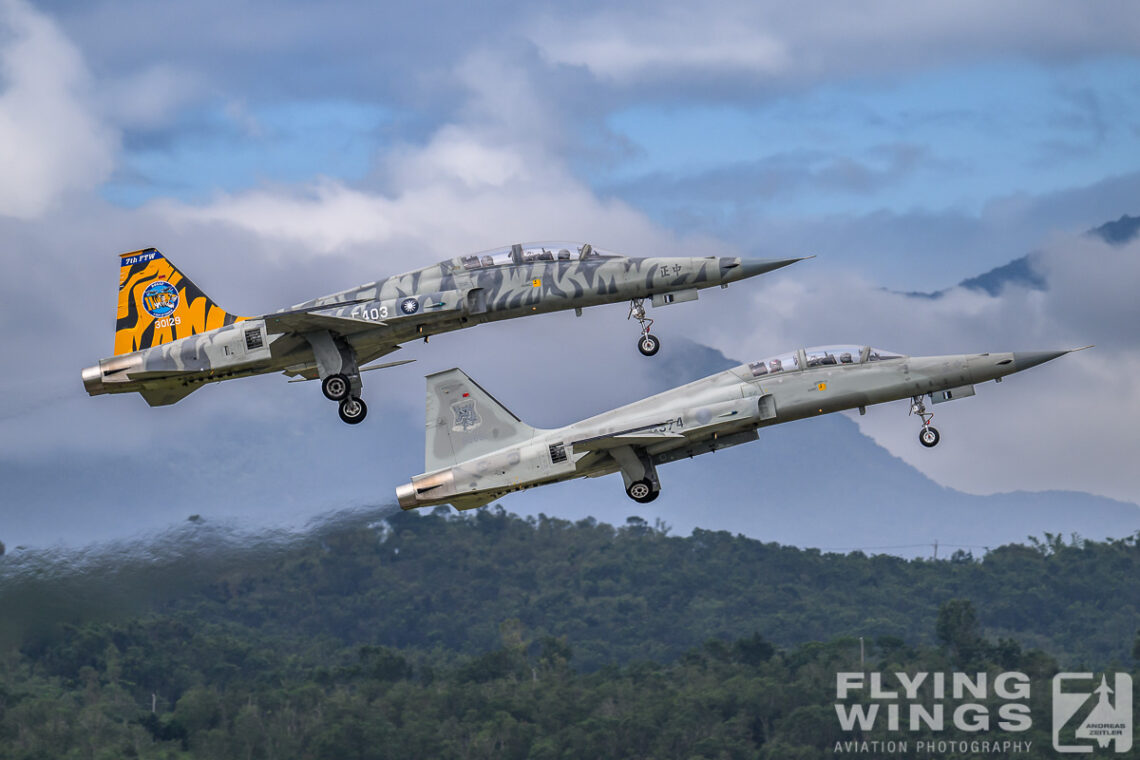
Chasing Tigers in Taiwan – ROCAF over the Fence
For a spotting trip to Taiwan, „Over the Fence“ can be taken literally, but it is more than often difficult to achieve. Chasing military aircraft in the Republic of China, as the country is officially know, can be rather tricky. Due to the prevailing political tensions with the People’s Republic of China (PRC), or also otherwise called mainland China, all of Taiwan’s military installations are build up like fortresses and well secured. Whereas photography on the outside of aircraft landing or taking off are generally tolerated, everything that happens on the airfields is well out of sight to outsiders and mostly hidden behind meter-high concrete walls topped by barbed wire.
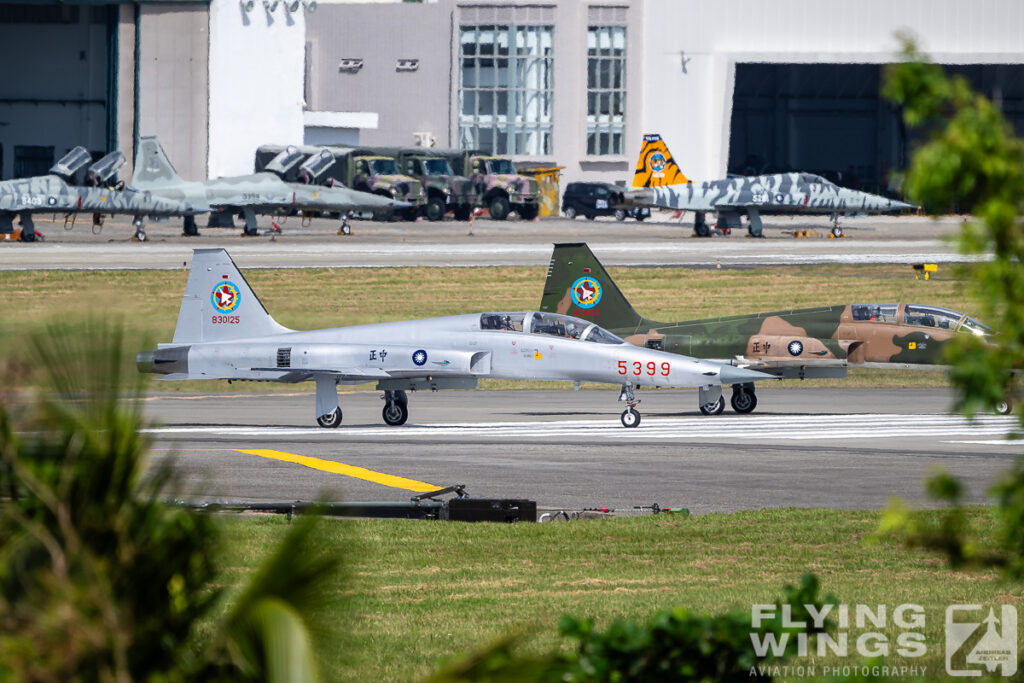
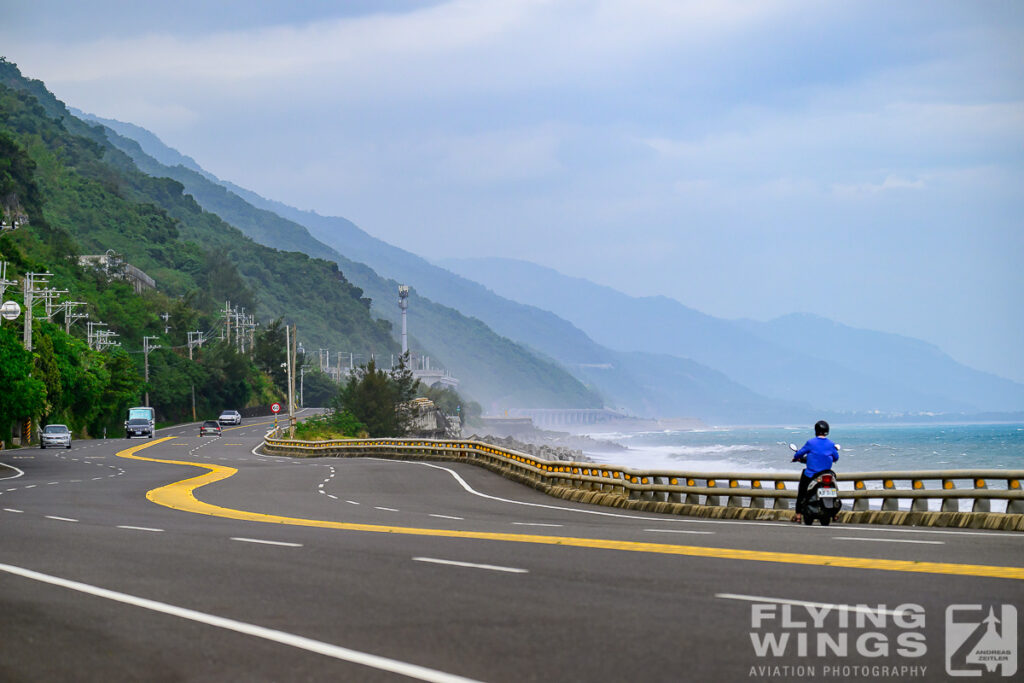
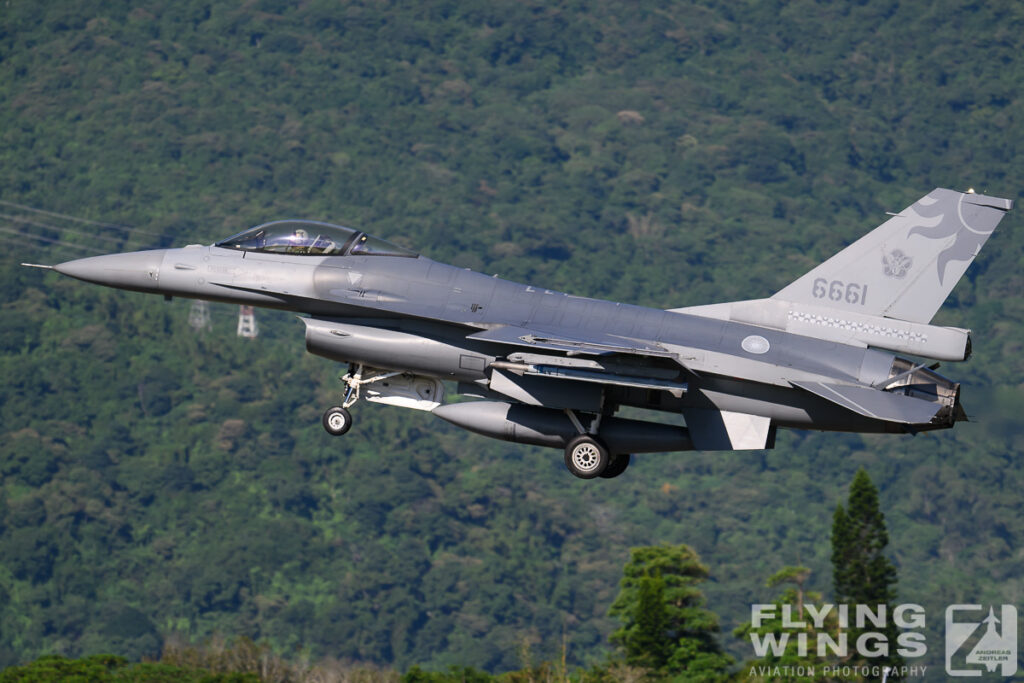
Additionally to that, weather conditions can be difficult by times in that part of the world. The rather small island in the middle of the Chinese sea regularly encounters Typhoons during the summer period, for the rest of the year an always prevailing humidity also does not favour photography. This is especially the case when using long telephoto lenses, which are required at many photo spots due to the encountered distances. During this trip in the beginning of November 2023, I alternated quite often from the Eastern to the Western coast, or from North to South, in order to make the most out of this week of spotting in Formosa.
But still, the country has a vivid scene of aviation enthusiasts, flocking around civil airports and military airfields. The photographers have also arranged themselves with conditions that are far from many ideal photo locations that can be found around many European airfields. And for a foreigner interested in military aviation, Taiwan is also worthwhile to visit as it is the home of many indigenous aircraft types, uniquely in service with the Republic of China Air Force (ROCAF).
Hsinchu Airbase (RCPO) – the French connection and Mirage 2000s

The photographic tour starts at Hsinchu. The airfield is just a short drive South of the capital Taipei and is home of the 2nd Tactical Fighter Wing (2nd TFW) that operates a total of 54 Mirage 2000-5Ei and – Di, a type which is unique to that part of the world. Whereas the wing is always busy flying and the first take-offs can happen very early in the morning, not much can be seen from the outside. The Southern approach to the airfield is a welcome exception to that. The high walls surrounding the rest of the airfield do not exist at this location and the spot turns out to be very photographer friendly. A lot of local enthusiasts and casual bystanders usually flock together and watch the jets returning to their base.
CCK (RCMQ) – F-CK-1s / IDFs and a yellow Viper
Heading further South, photography is getting more challenging. Ching Chuan Kang Air Base – CCK for short – in Taichung hosts the 3rd TFW and two Groups flying the AIDC F-CK-1 Ching-Kuo, also called the Indigenous Defense Fighters (IDF). Those IDFs wearing a stylised Eagle’s head on their tails, are rather difficult to catch. Despite the West coast being extremely overbuilt with industrial plants and residential areas, the area of the airfield is huge, once again completely surrounded by meter-high concrete walls and outside vantage points are hard to find. If the jets are taking off, even with a longer lens they remain a small dot in the sky.
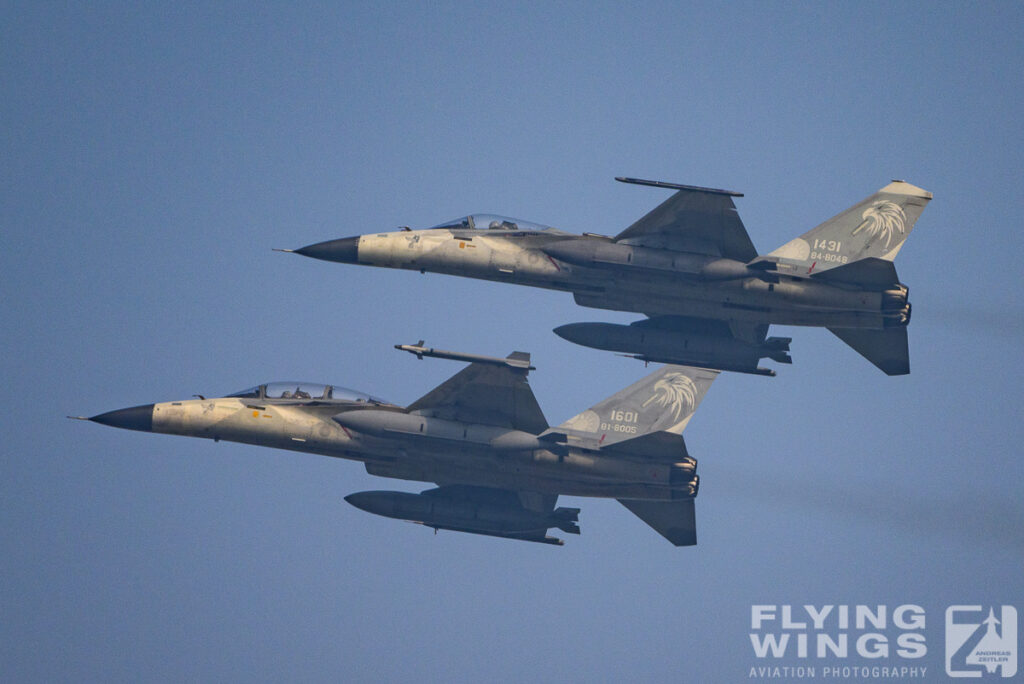
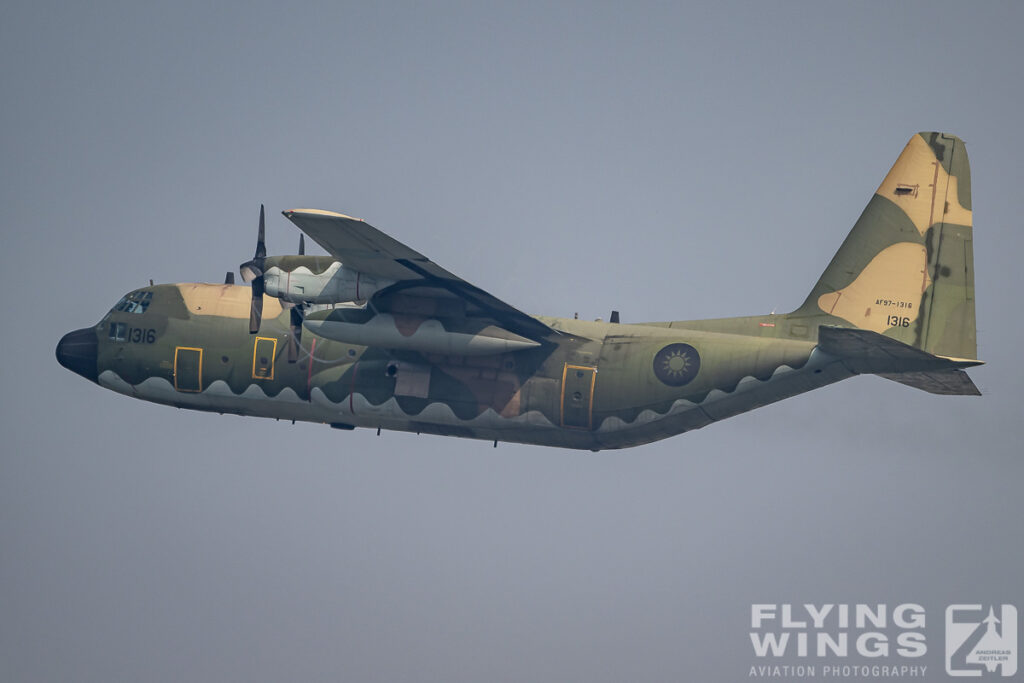
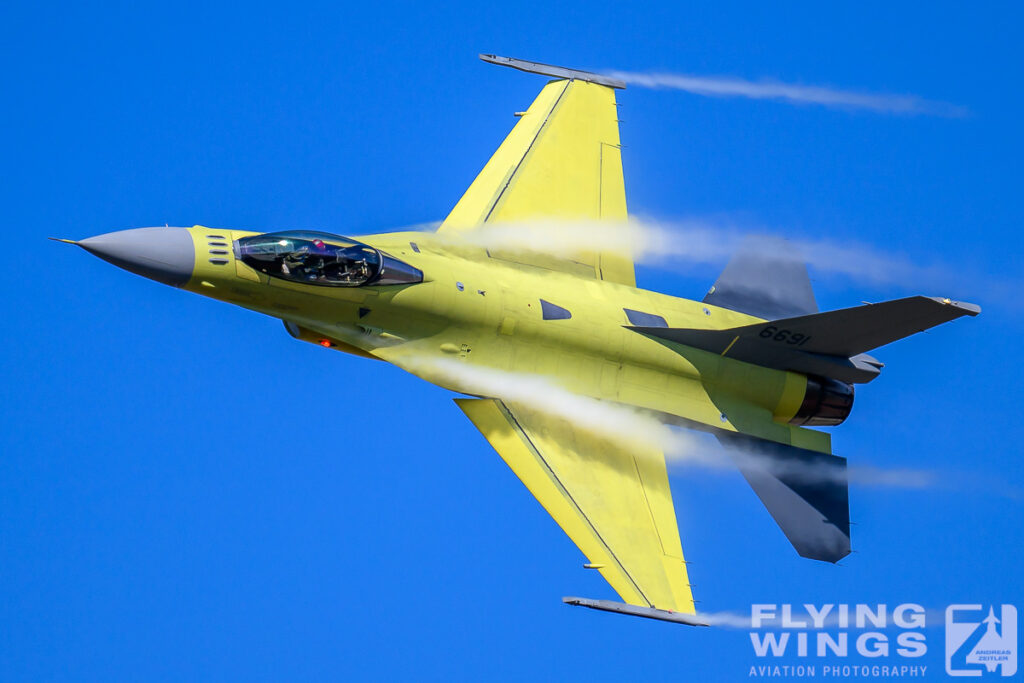
Additionally to ROCAF activities, CCK is home to Aerospace Industrial Development Corporation (AIDC), the main manufacturer of Taiwan’s indigenous military aircraft. F-CK-1s have been produced at Taichung and currently the production line is producing the T-BE-5 Yung-Ying (Brave Eagle), ROCAF’s Advanced Jet Trainer (AJT). Furthermore, AIDC performed the upgrade of Taiwan’s F-16A/B Block 20 Fighting Falcons to the latest V-configuration standard. The contract of this massive program covering a total of 144 jets has been signed on 2012 and came to an end in late 2023. On the last day of my trip I got lucky to photograph the final “Yellow Viper”, Taiwan’s last F-16V that went through this upgrade program and performed its last test flight still in primer colors.
Chiayi (RCKU) – F-16Vs in the haze

Continuing the tour in counter-clockwise direction, Chiayi airbase is next. The 4th TFW consists of three Squadrons and operates the biggest part of these upgraded F-16AM/BM. Many of these upgraded Fighting Falcons are unfortunately still void of any tail markings, making their Squadron affiliation difficult to guess. But still, flying activity at Chiayi is plentiful, and a more agricultural surrounding makes photography more convenient. Even though once again the sheer dimensions of the airfield do also hamper it by times. Also I have had hard time waiting for reasonable blue skies at this airfield. Even though it cleared up around midday on that Sunday, I decided to continue to Gangshan to pay the ROCAF museum a visit.
Tainan (RCNN) – even more IDFs
And if Chiayi is a busy airfield, the 1st TFW at Tainan still has the potential to beat it. A partial task of the wing and its three Squadrons of F-CK-1s consists of the training of frontline pilots. Taiwan’s ambition to act independently due to the prevailing difficult political situation is not only being noticed by several indigenous military developments, the Air Force also conducts most of its pilot training domestically.
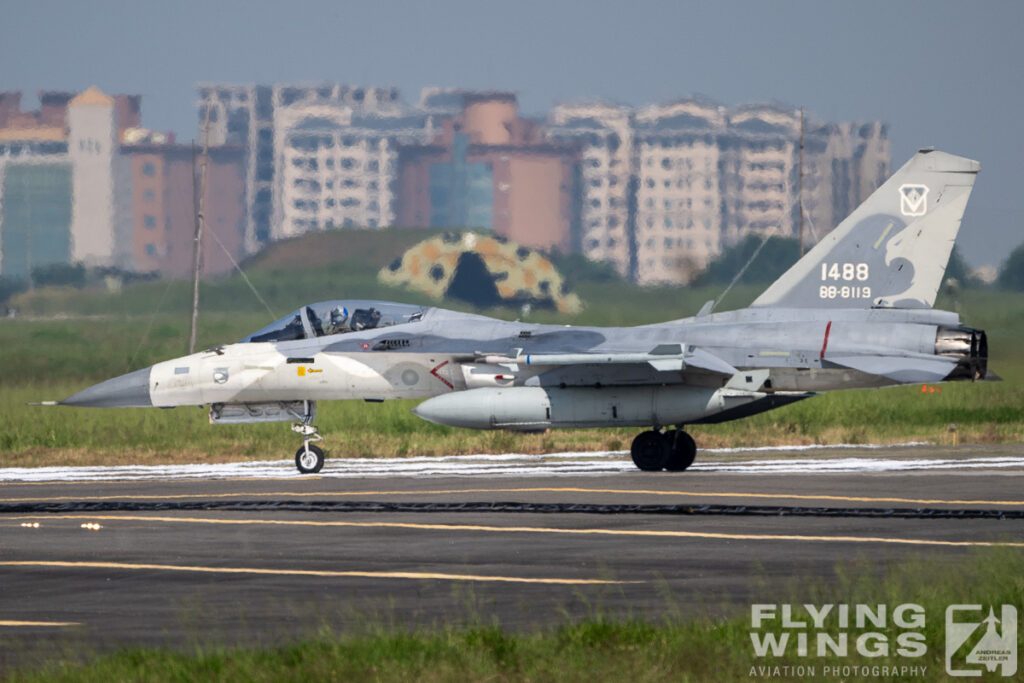
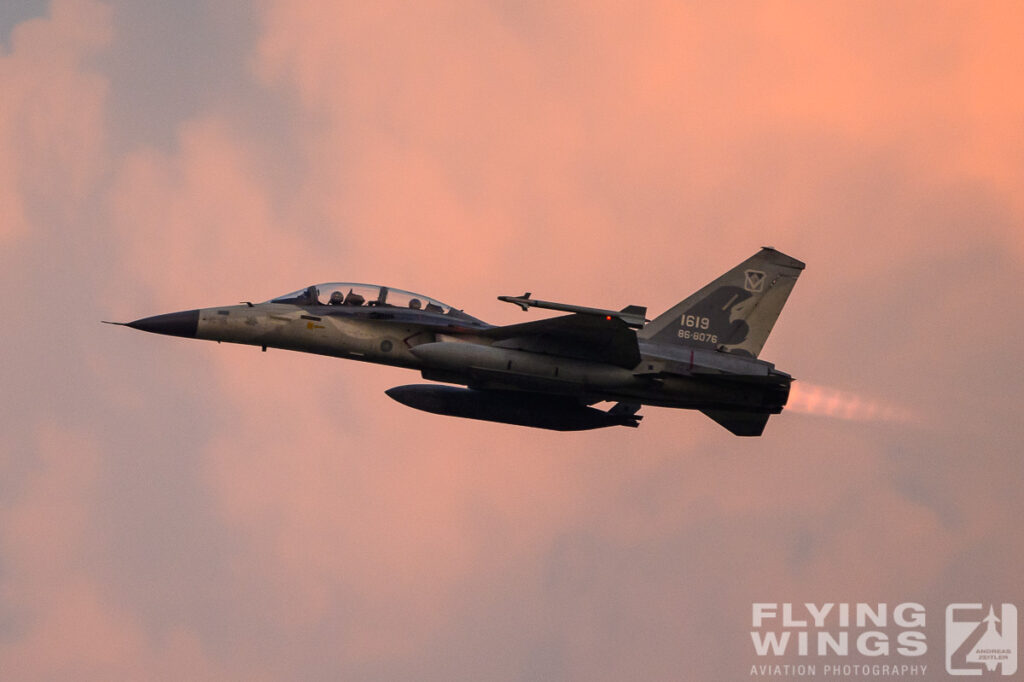
More than two dozen sorties on a normal morning are not uncommon at Tainan, and Saturday mornings can also be equally busy. This provides lots of opportunities to move around and search for appropriate photo spots. Being on the move is also necessary, as the airport has two parallel runways and both are being used by the military. Additionally to that, the Eastern runway is used by the civil traffic that serves the airport of Taiwan’s oldest city.
Gangshan – missing the Mentors
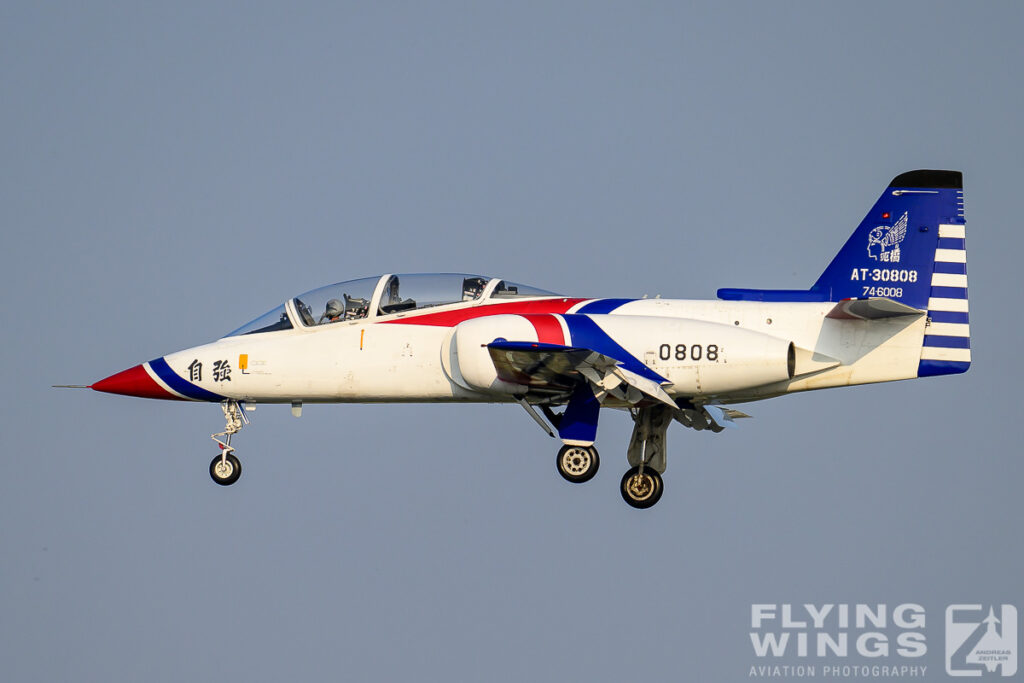
Gangshan airfield is always busy as it used for basic training of future ROCAF pilots. When approaching the airfield, several aircraft can usually be seen either flying high over the airfield or performing training approaches. The ROCAF still uses the T-34C Turbo Mentor for basic training, and when more advanced in their syllabus, student pilots will move on to the AIDC AT-3 Tzu-Chiang, whose name can be translated into „Self Reliance“. It is another unique aircraft type for Taiwan and therefore high on the wishlist of any photographer traveling there. Unfortunately I only had a hour hour to spend there in the late afternoon, and only AT-3s were out. Dozens of them, but unfortunately no T-34C was to be seen. But still, catching the indigenous AT-3 was great, and due to Gangshan’s nature being a training base, airplane movements are plentiful, which is beneficial as trying to find appropriate photo spots is once more rather difficult due to a high building density all around. Enthusiasts will also consider to pay a visit the Republic of China Air Force Museum, which is adjacent to the North-Eastern corner of Gangshan Airbase.
Pingtung (RCSQ) – Transports and Reconnaissance
When looking at Pingtung from above, it looks like one huge airfield, but it is actually two that can be considered separately, even though they are connected by a long taxiway, that could make a runway itself. Pingtung North and South are two different entities, and their Squadrons pursue significantly different operations. The Southern airbase hosts all of Taiwan’s C-130 Hercules, including one exceptionally rare example dedicated to electronic reconnaissance, designated C-130HE. Gruman E-2K Hawkeyes reconnaissance aircraft complete the assets of the 6th Composite Wing at Pingtung South, even though the Hawkeyes are based on the North of the airfield.
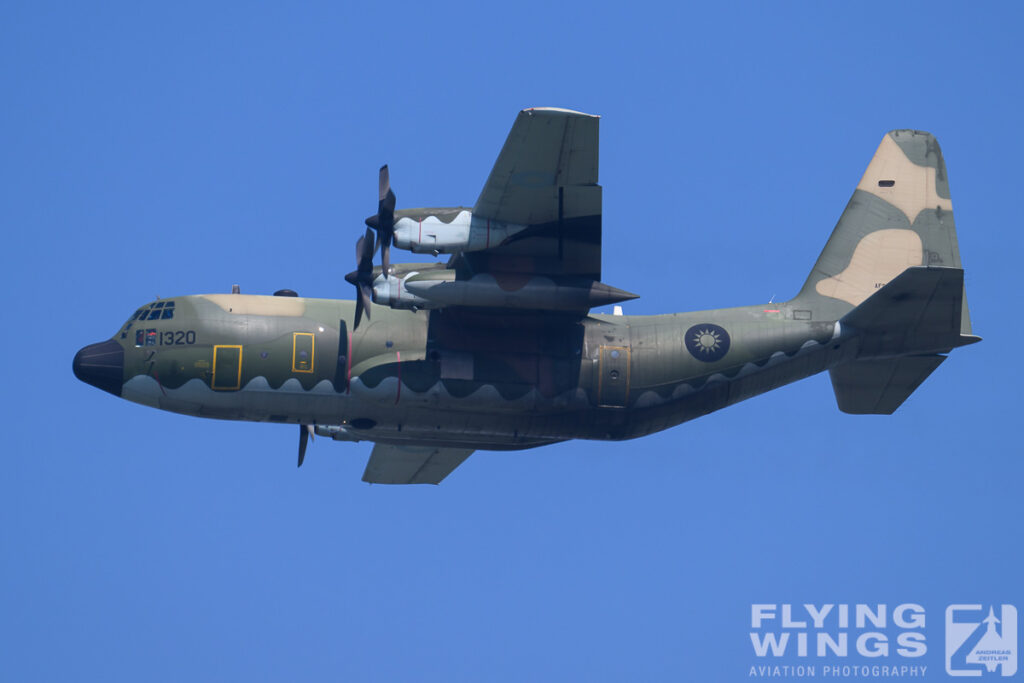
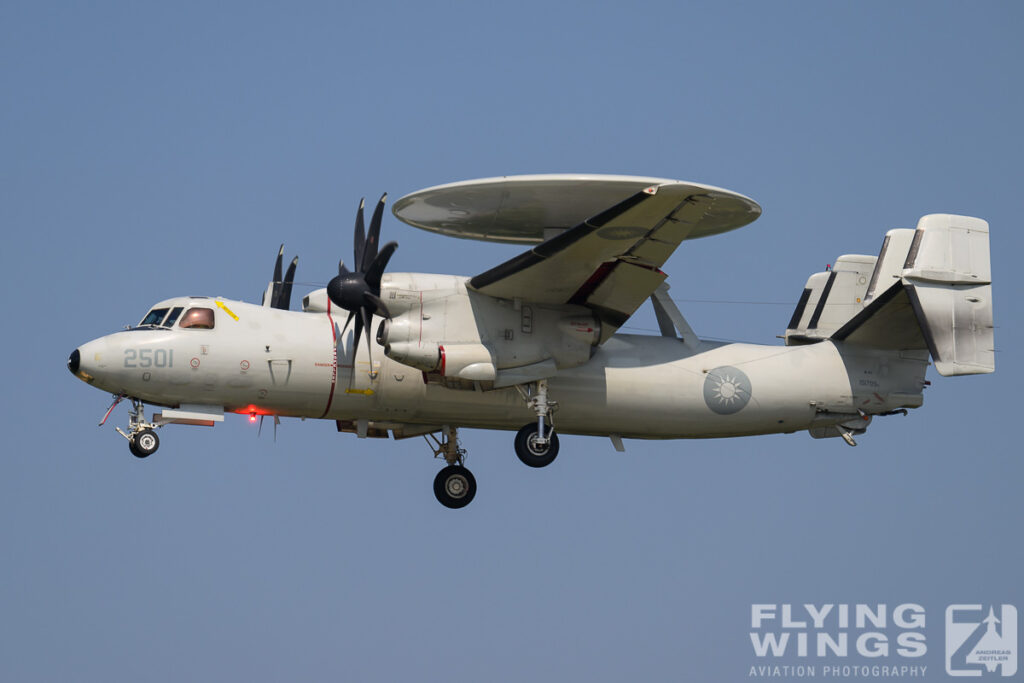

In the North the 33rd and 34th Squadron of the 6th CW are based. They are equipped with the P-3C Orion and secure Taiwan’s sea areas. Whereas 33rd Squadrons badge depicts a clear indication of its anti-submarine warfare tasks, 34th Squadron inherited the bat of the famous „Black Bat“ Squadron. Catching any of those aircraft is not easy, as most of their missions will last several hours and it is therefore difficult to predict when they return. However, shortly before lunch break seems to be a good time, and a spot at Pingtung North usually also provides view of the Hercules performing landing trainings. Pingtung finally is the Southern-most airfield on the Western coast. To reach the two remaining airfields hosting fast jets, Taiwan’s mountain range needs to be crossed towards the more scenic and more quiet Eastern coast.
Taitung (RCQS) – chasing the rare F-5E/F Tigers
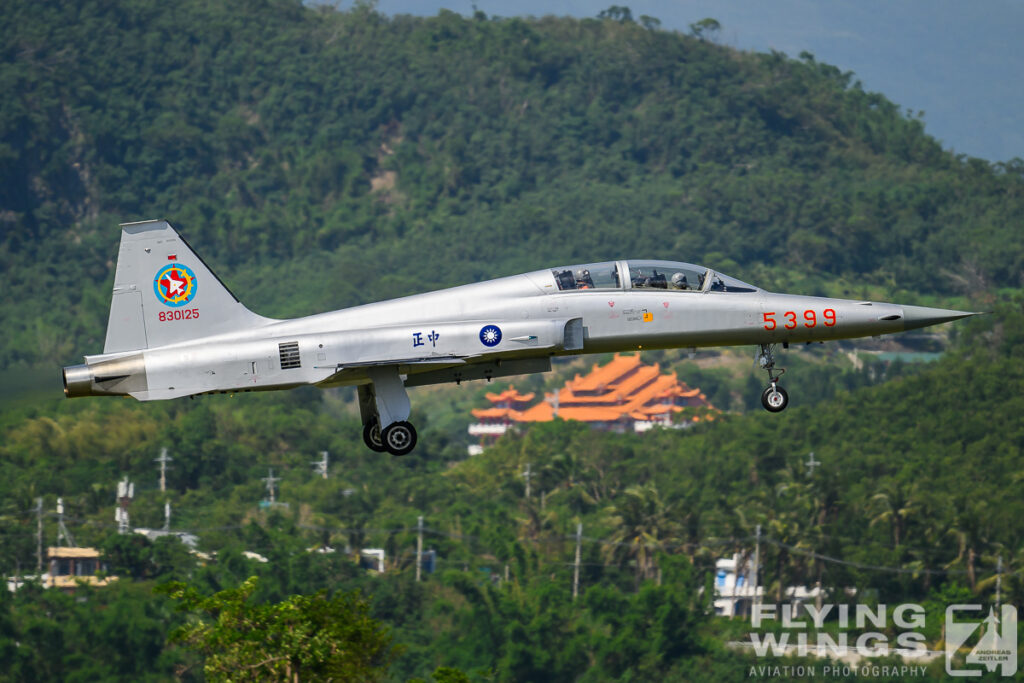
Until very recently, Taitung might have been Taiwan’s most popular airfield amongst local and foreign planespotters, as it still hosted a significant number of Northrop F-5E and F-5F Tiger IIs. For years Tigers have been used by Taiwan in the Aggressor role, and some jets still carry these special camouflages and badges nowadays, but all of them are nowadays only used for training purposes. But those days are gone. Towards the end of 2023, Taitung’s 7th TW has finally said goodbye to those venerable jets that have served in Taiwan for almost 50 years. After a transition period and parallel operations with the AIDC AT-5, Tigers have now been fully replaced by Taiwan’s indigenous fast jet trainier. Flying the AJT is now last step of military fast jet student pilots before joining one of the Air Force’s combat squadrons.
Over the past few years, nearby hotels have well adopted to aviation enthusiasts and offer access to their rooftops for a good overview of the airbase and unique photo opportunities. Quite a few places around Fugang Fishing Harbor offer such an experience, though this business model might not continue to run so well anymore with the decommissioning of the Tigers. The AJTs apparently possess more power than the venerable F-5 and therefore can be seen to climb a lot faster. Therefore those impressive photos of jets in front of Taiwan’s scenic mountain range are not longer possible from these quite unique locations. But still, there is the obvious photo spot close to the approach from the Southern side of the airfield, which conveniently offers some parking bays as well and a nice Taiwanese background.
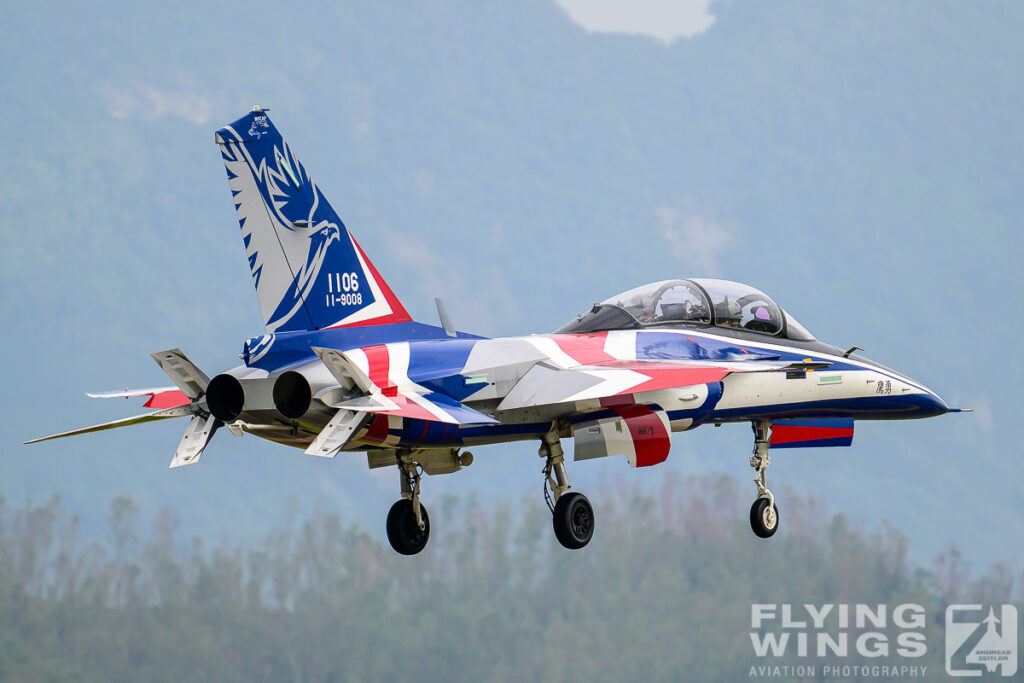
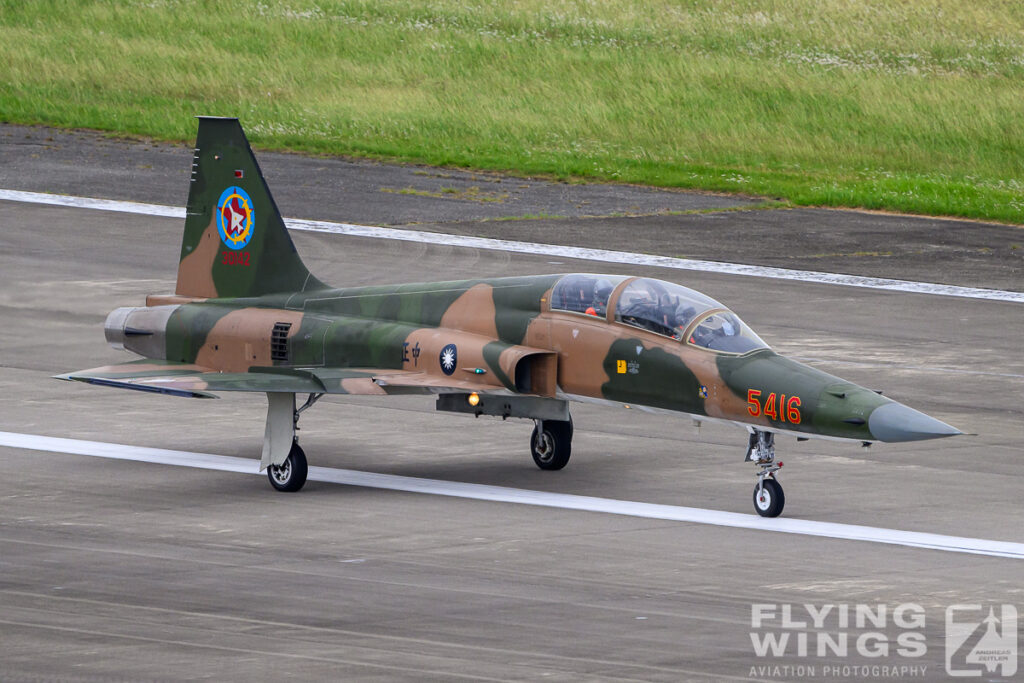

Additionally to the training tasks by AJTs and Tigers flying at Taitung, the airfield was also a temporary home to some fighters from another airbase. The hardened aircraft shelters gave protection to 3rd TFW F-CK-1s, flying combat air patrols (CAP) on a regular basis. The load out for these kind of missions consisted of two AIM-9P Sidewinder missiles on the wingtip rails and one or two Sky Sword II medium range air-air missile under the fuselage. Catching them at Taichung was a very welcome opportunity compared to the more more difficult photo locations at their home.
Hsinchu (RCYU) – RF-5E Tigergazers and Fighting Falcons
With the decommissioning of the training with F-5 at Taitung, the ROCAF however did not loose all of their Tigers yet. A handful of Northrop’s „Freedom Fighters“ still operate out of Hsinchu, located further North of Taitung. The 12th Tactical Reconnaissance Group (TRG) still comprises of several twin-seat F-5F Tiger II for training purposes and a handful of the nowadays unique RF-5E Tigergazer. With the introduction of the AN/VDS-5 LOROP-EO pod on its F-16AM/BMs, reconnaissance missions can now be performed by ROCAF Fighting Falcons. But still, the 12th TRG with its mixed fleet of RF-5s and F-16Vs is not yet fully equipped with the final number of those pods and therefore operations of the Tigergazer still continue, even if have been heavily reduced and only happen around twice a week. Additionally to these reconnaissance tasks, Hualien’s 5th TCW has three more Tactical Fighter Groups (TFGs) of F-16s under his command, all of which can easily being recognized by a large sun on its tail. The sun is a holy symbol of Malataw, the god of war of the Taiwanese aboriginal Amis people who originate from the Hualien region.
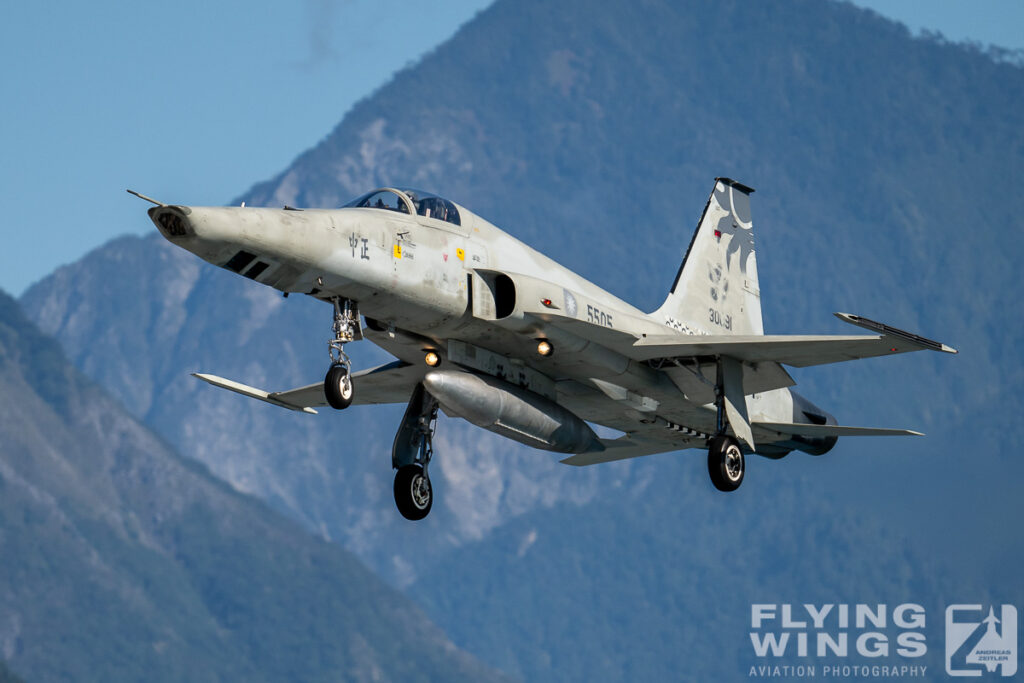
Not much can beat the experience of sitting on a white sandy beach with warm temperatures in November, watching some Fighting Falcons and Tigergazers returning home from their missions, over the deep blue and turquoise waters of the Chinese Sea.
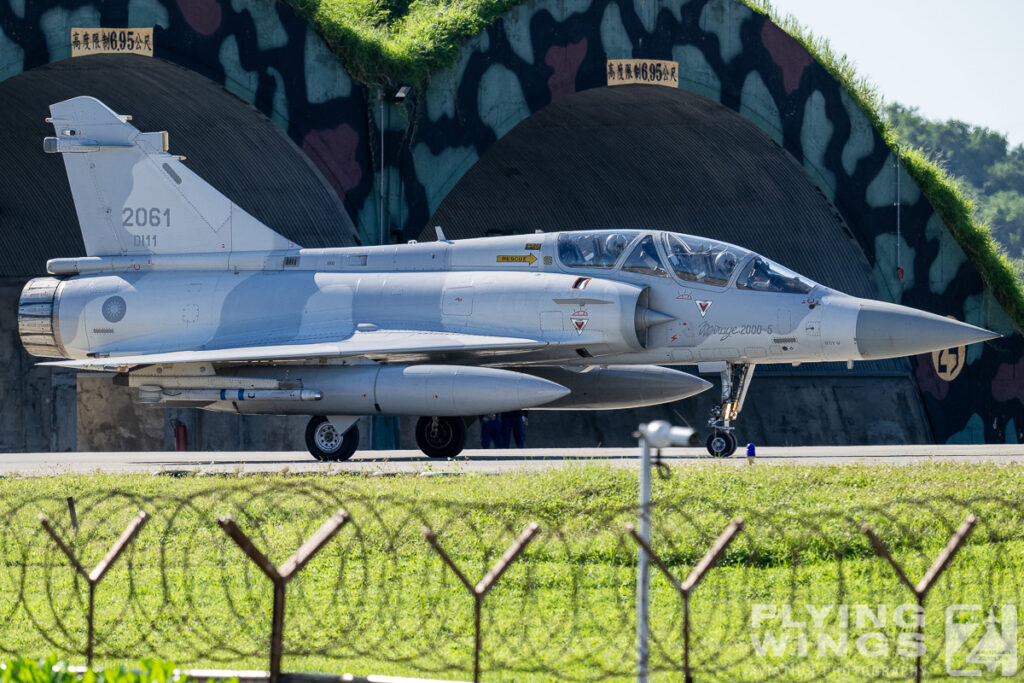
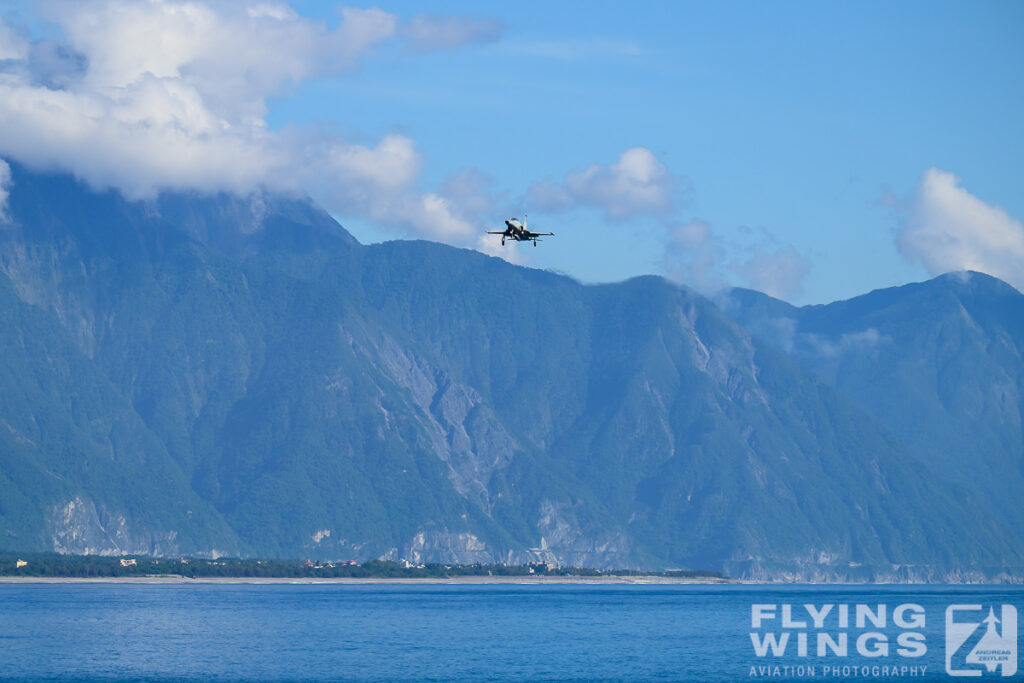
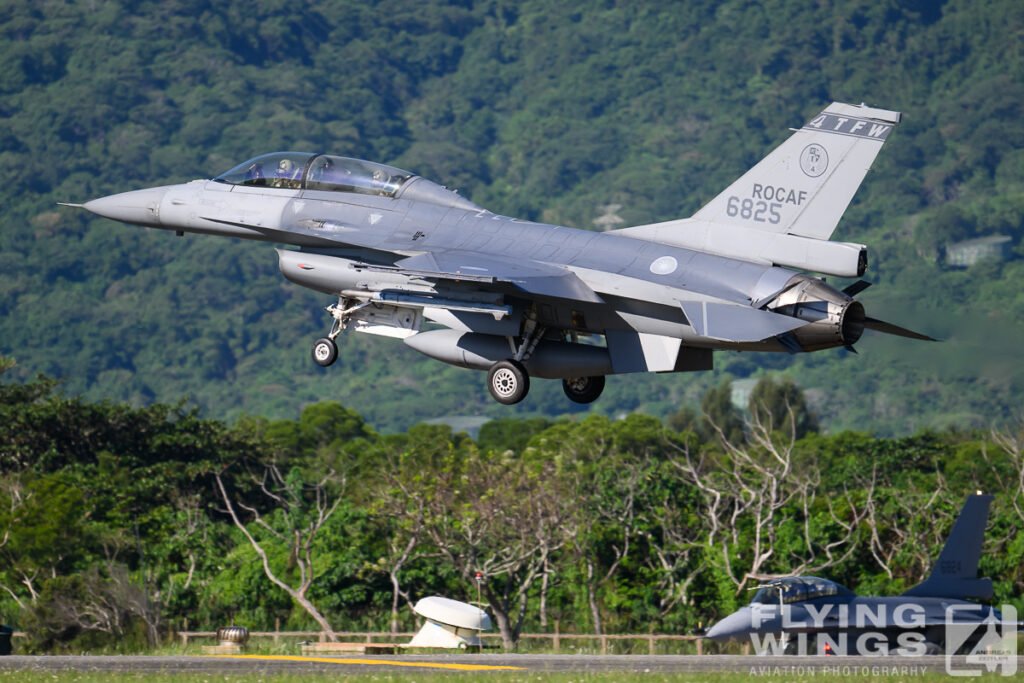
Additionally and as a welcome surprise, a small number of Mirage 2000s from Hsinchu could also be seen. It is quite common that units deploy to other airfields not only to strengthen the number of available aircraft for that certain sector of Taiwan, but also to train their crews to operate from a different airfield than their home.
Songshan (RCSS) – VIP and Transports
To finish the tour around the island a visit to Taipei-Songshan airport can be considered a worthwhile end. It is located in the middle of the city and is mainly a regional airport with some international connections to neighboring Asian countries. And it is also home to the ROCAF’s Special Transport Squadron and the Presidential Flight Squadron.
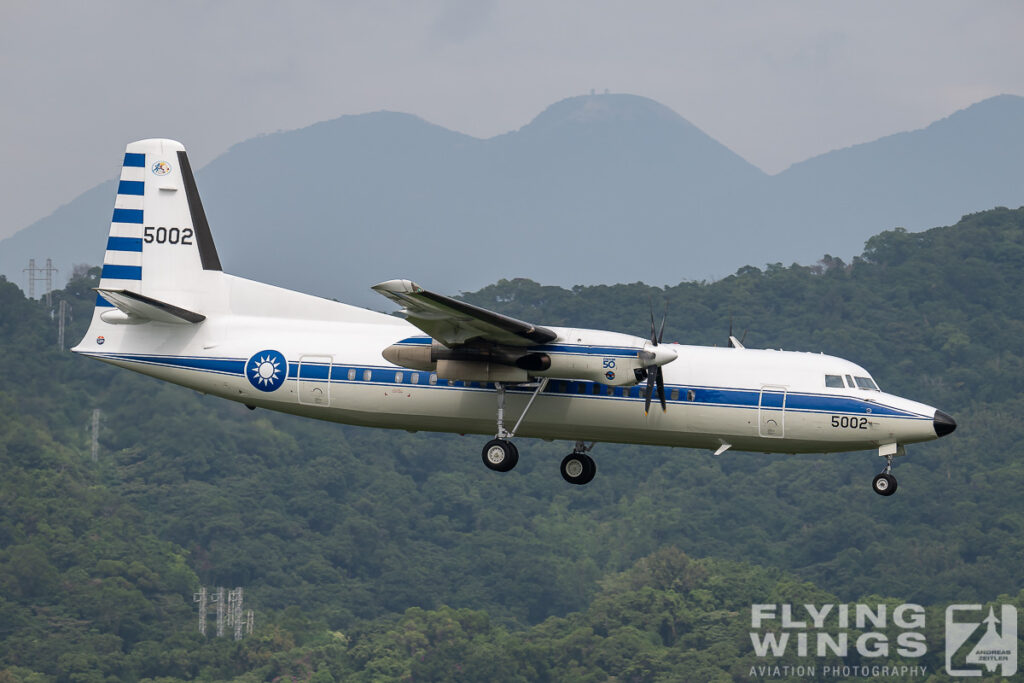
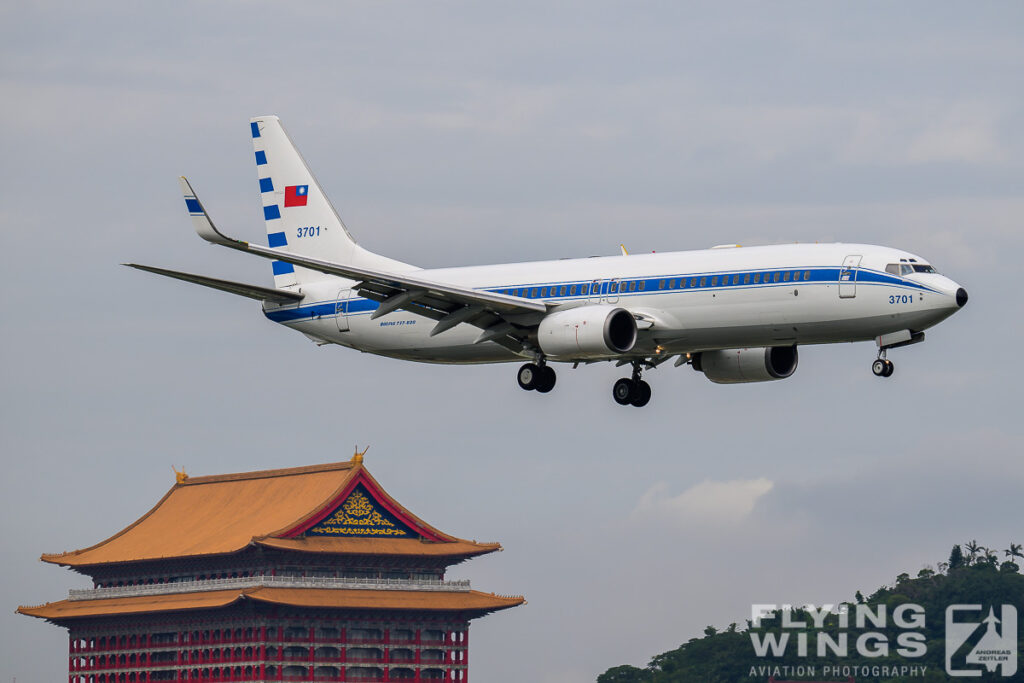
As it is a civil airport, photo spots are plentiful and if being patient the chance are very high to catch a Pingtung-based C-130 Hercules as a commuter flight or one of the Beech 1900C commuter aircraft. Just three Fokker 50 have been acquired in 1994 and are harder to catch nowadays, as is Taiwan’s „Air Force One“, the President’s B737. But photographing one of them from the parking deck of a nearby market hall will mark a successful and worthy end to a spotting trip to this extremely diverse and hospitable Asian country. 8 days full of sleepless nights, plenty of photo opportunities, many kilometers on toll roads and new friendships made this another trip to remember.
Catching all those nice aircraft would not have been possible without the valuable help and support of many local spotters. Thank you all and see you again!
Taiwan / ROCAF Planespotting Photo Gallery
Travelling Taiwan
To finish this report, I wouldn’t do Formosa, that beautiful island, justice without posting some photos of the scenic sights and sound that I have experienced during that week-long trip. I have nearly covered the whole island, spent endless hours on the roads, changed back and forth from coast to coast, but it was worth every minute. And even if it became stressful by times, these sights might all the effort worth it.
The mountain views below have been taken along the Taiwan Provincial Highway 8, also known as the Central Cross-Island Highway. It is Taiwan’s highest asphalt road and goes more or less from Taichung to Hualien. The fastest way to do normally would be passing Taipei in the North of the island, but if you have time and motivation to drive mountain roads, this one is not to be missed. Along the way you climb nonstop from sea level up to the Wuling pass, which is at an amazing 3275m and provides a view from coast to coast. When descending down to the East, you will also pass the scenic Taroko national park. During my trip, the road was temporarily closed due to landslides, and was even more severely damaged a few months later due to an earthquake that also heavily hit Hualien.

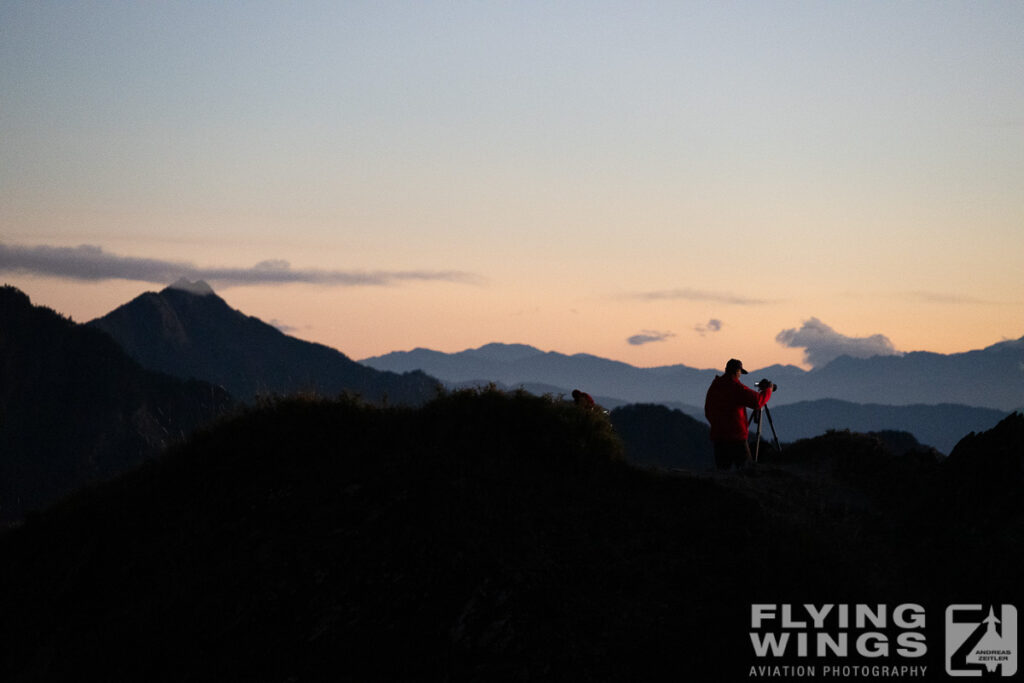

Contrary to that, the coastal views were mainly taken around Taitung, even though most of the Eastern coastline offers splendid views. During this trip I had just bad luck and cloudy skies during my drive from Hualien down South, therefore I did not take that many photos.
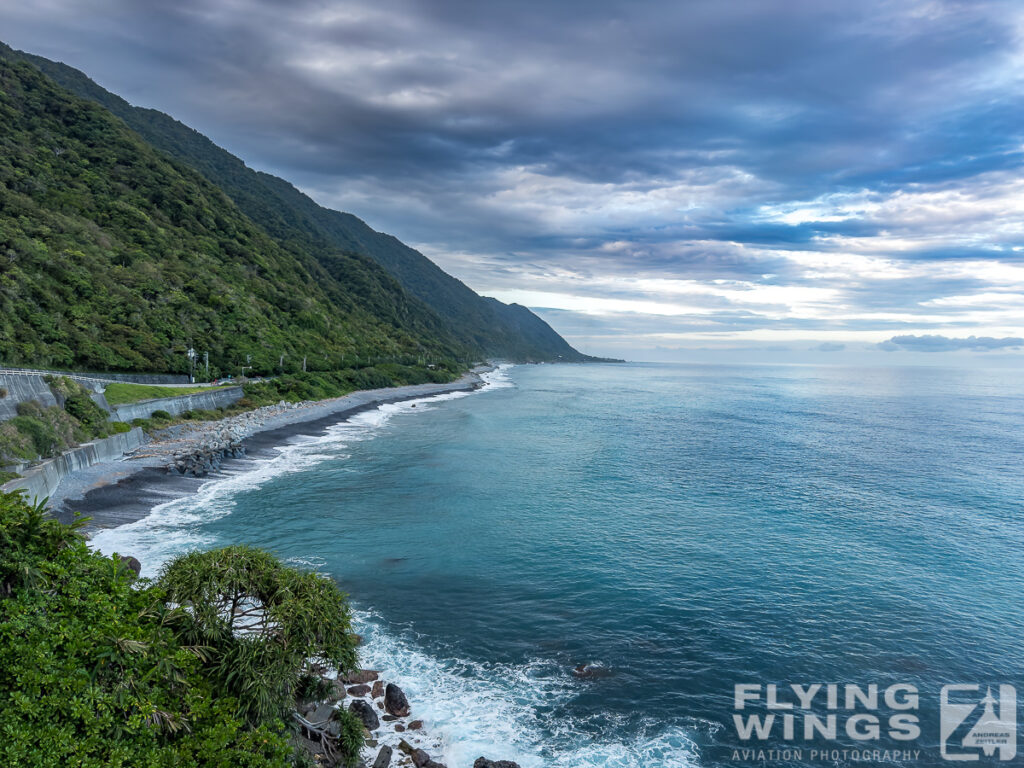
Scenic sights of Taiwan
This article was also featured on 6 pages and as a cover insert in the March 2024 issue of Key Publishing’s Air Forces Monthly magazine.
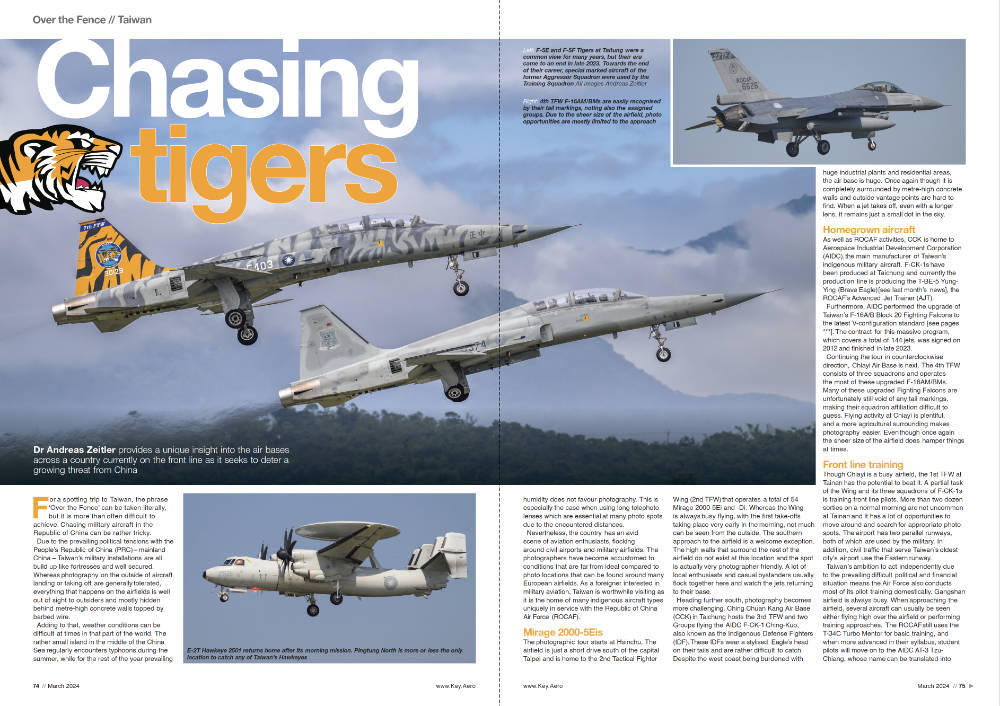


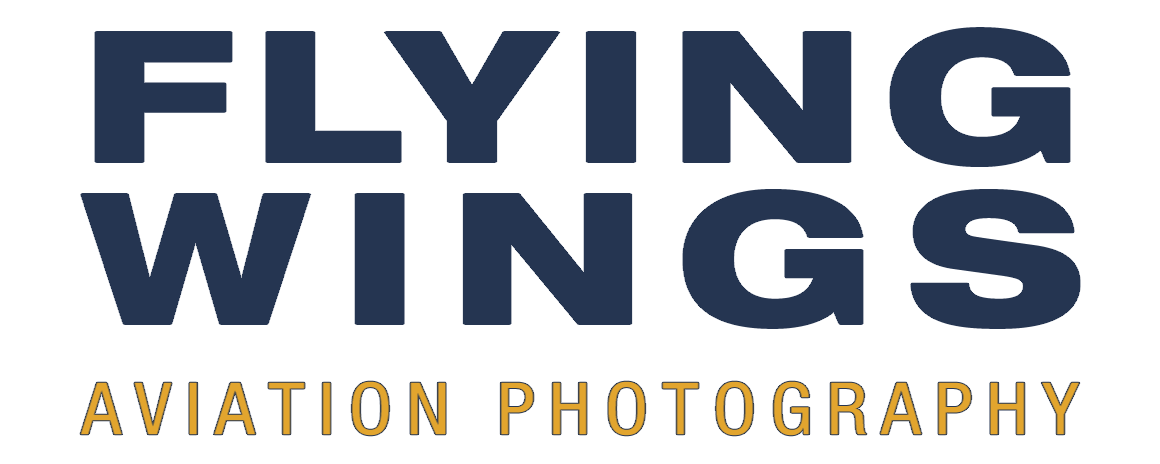
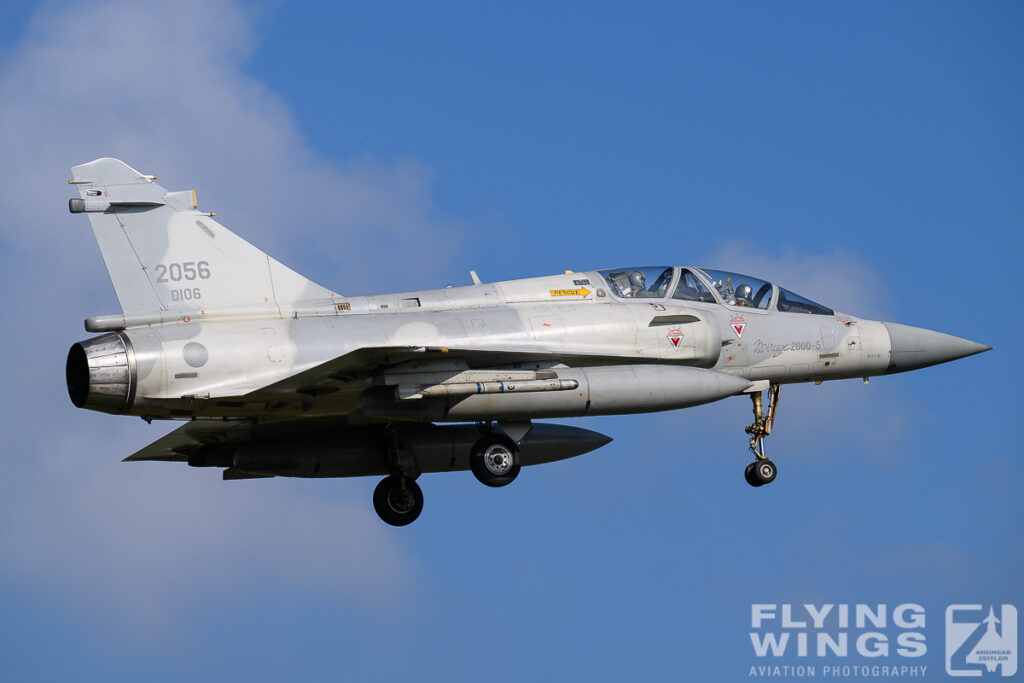
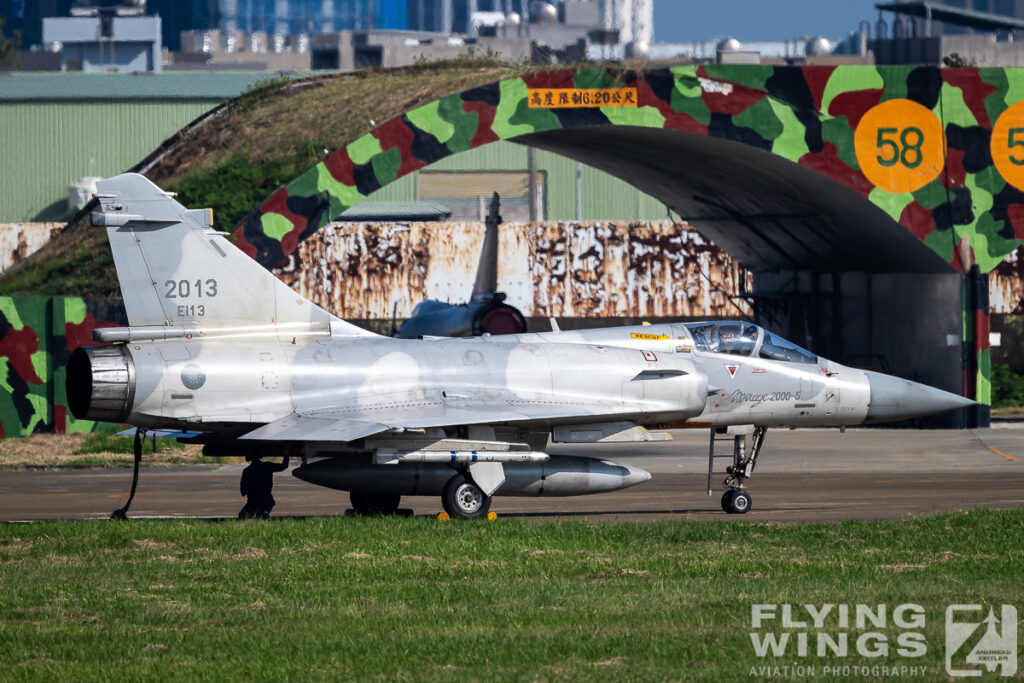
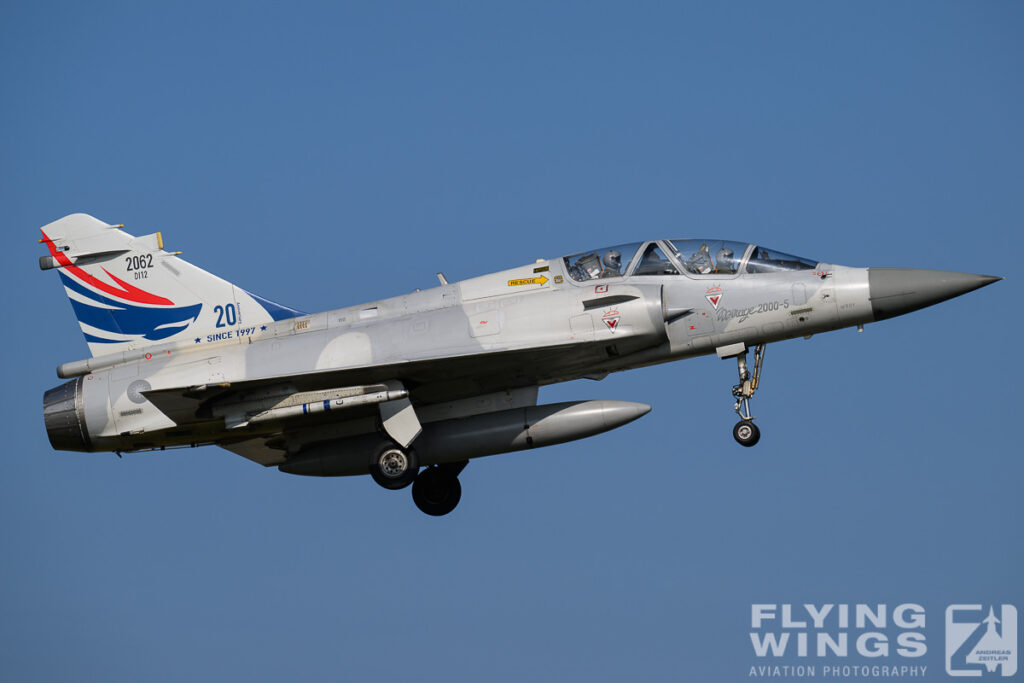
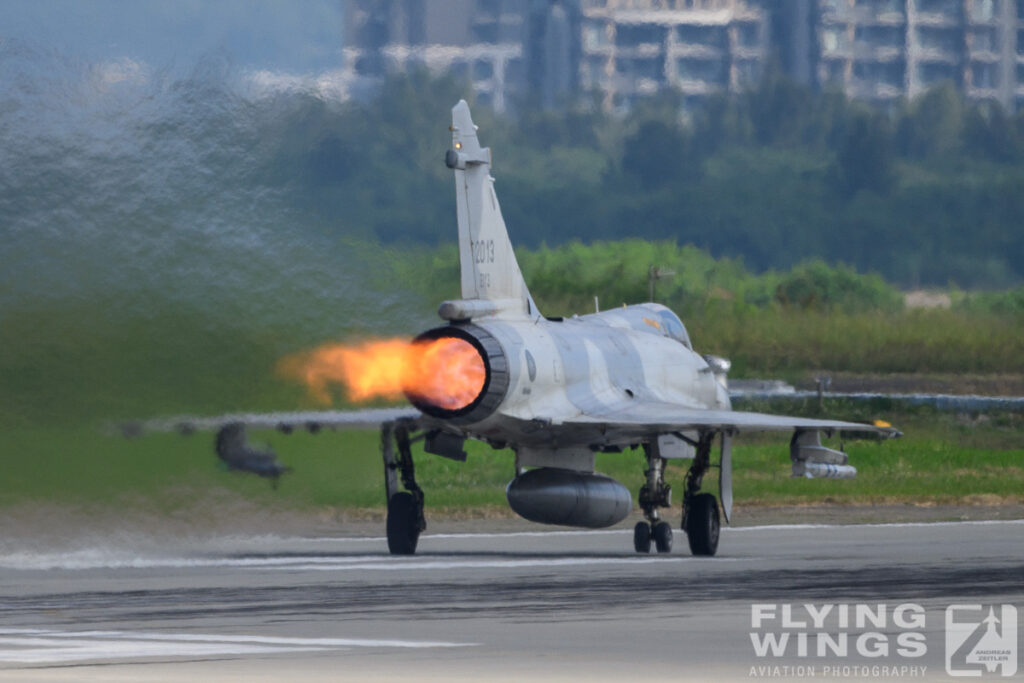
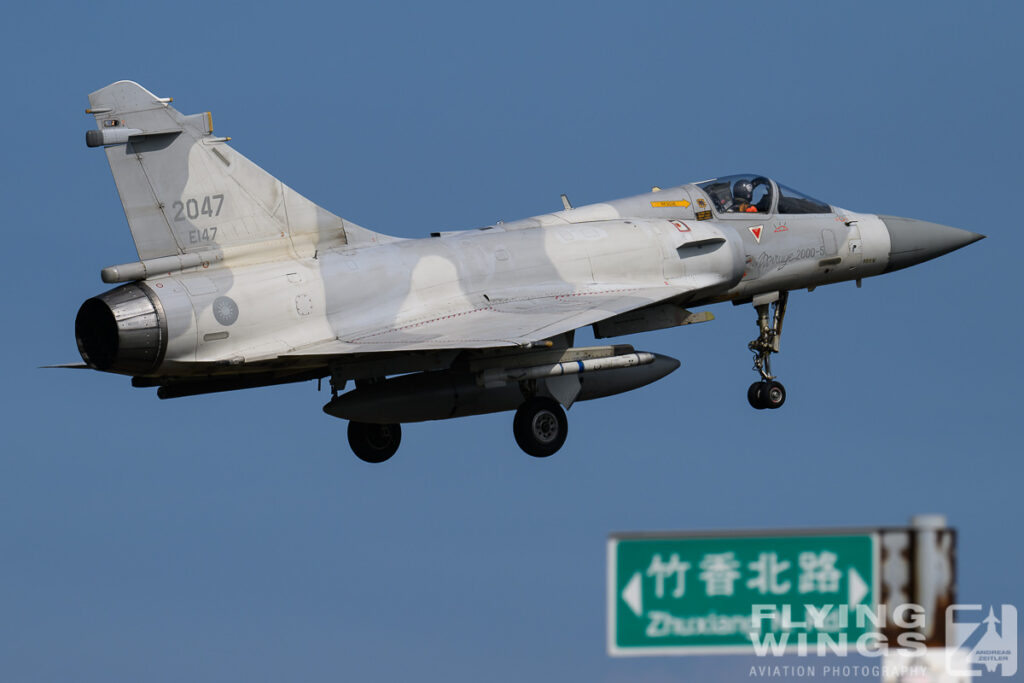

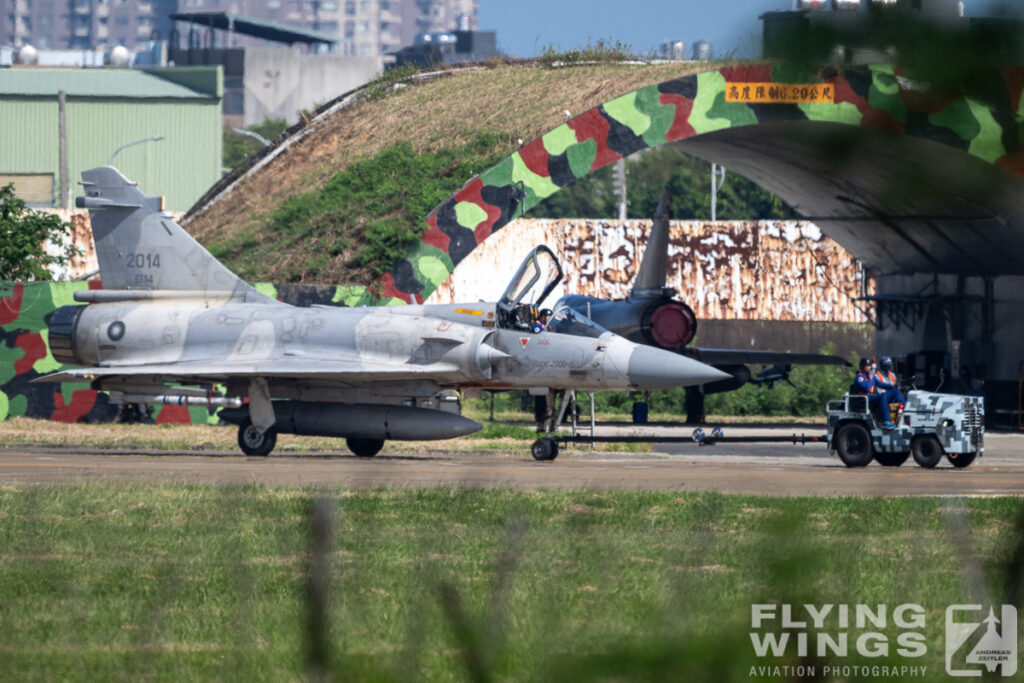
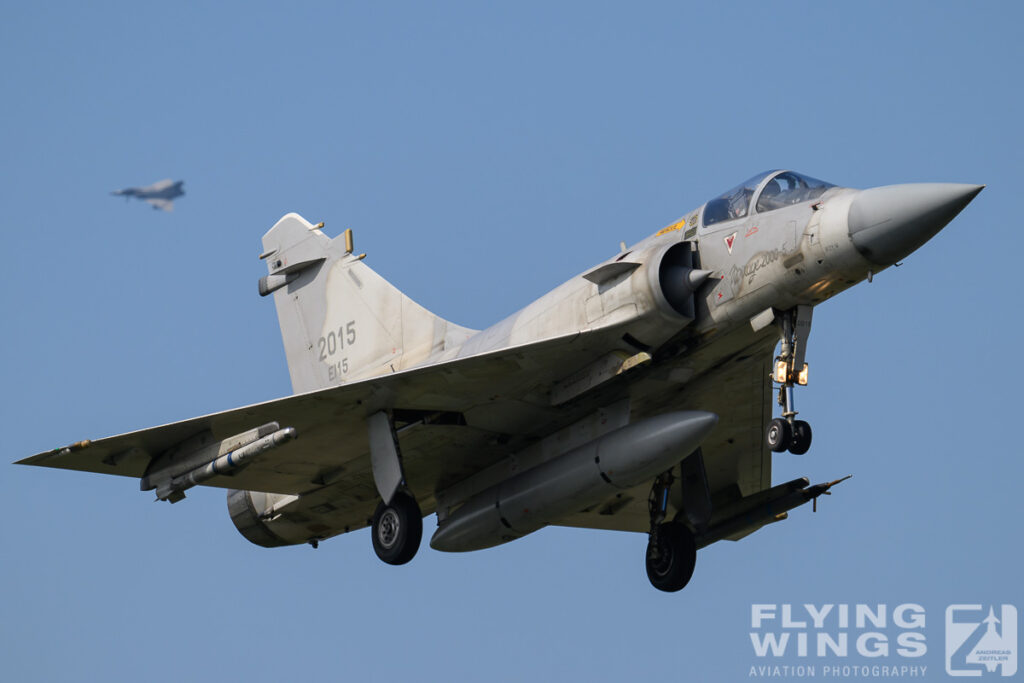
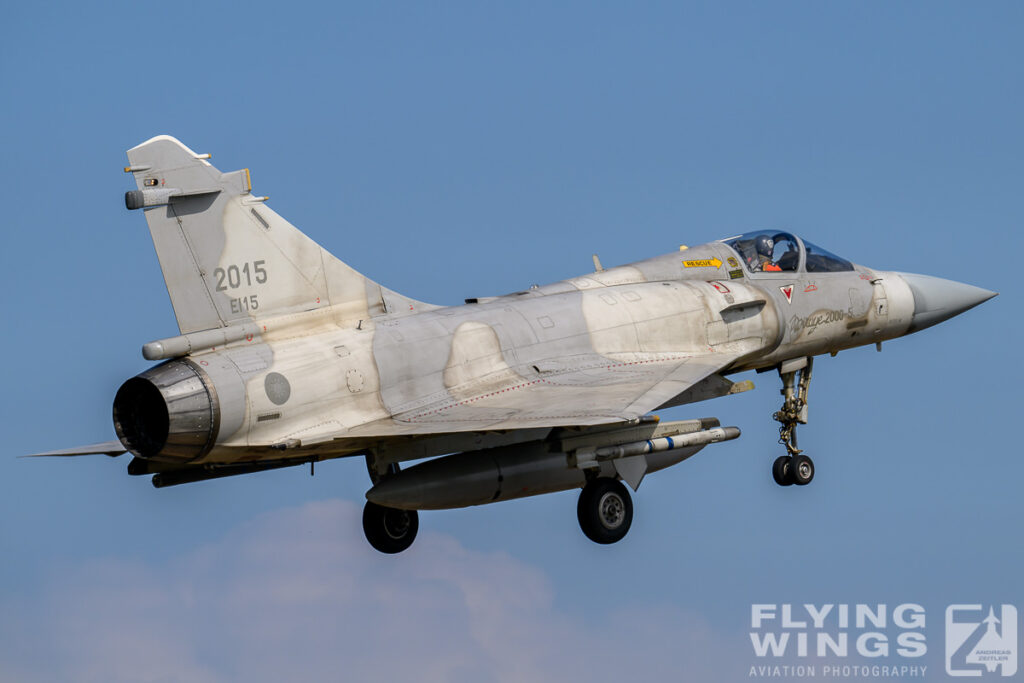
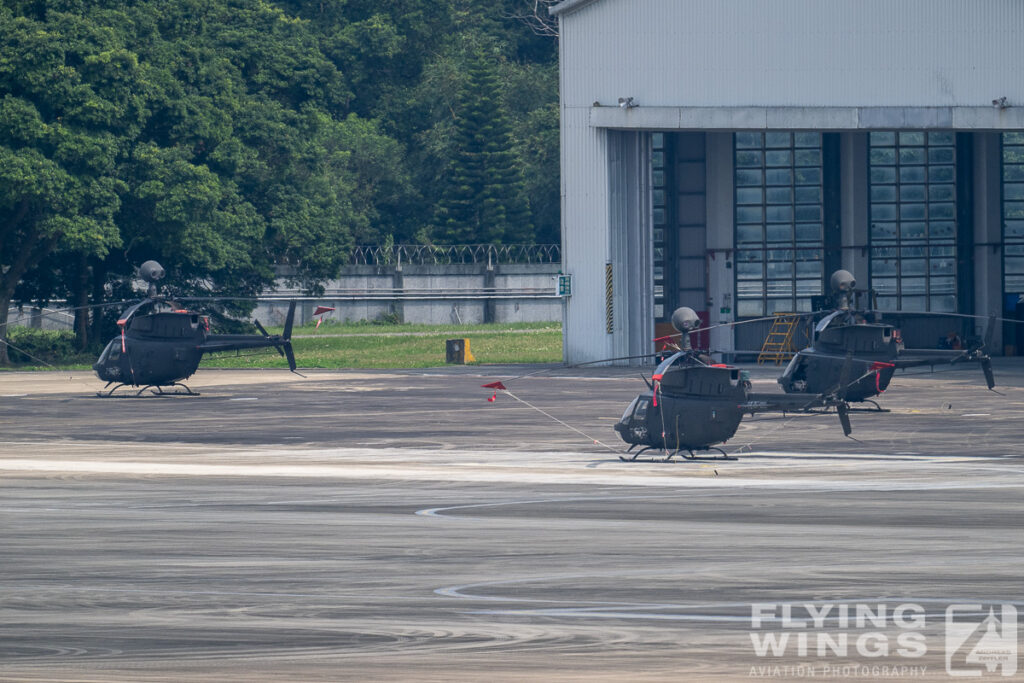

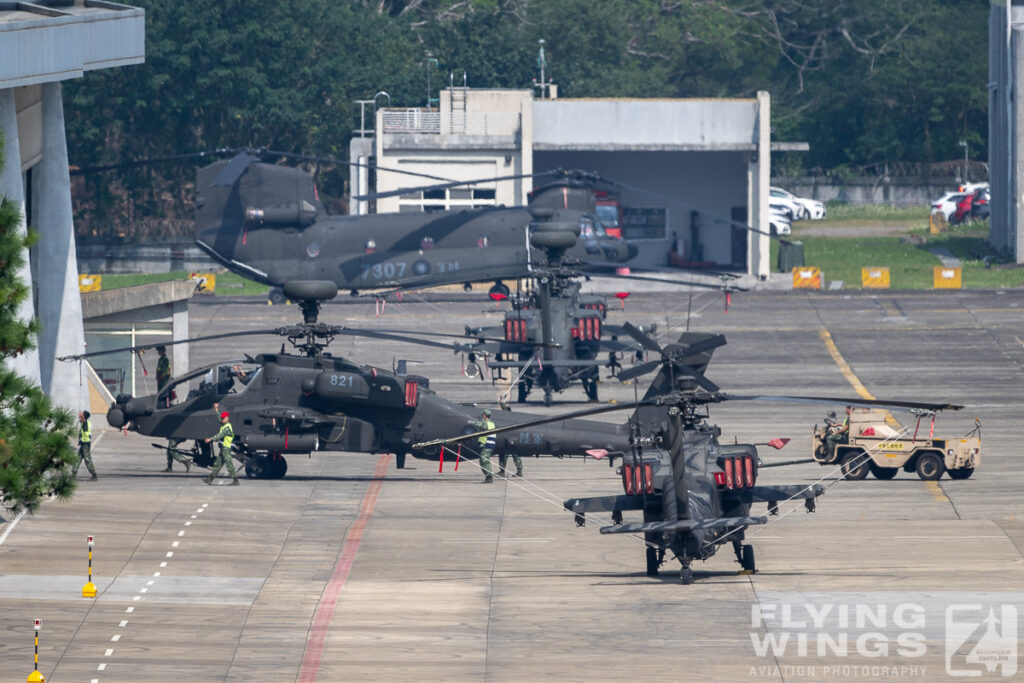
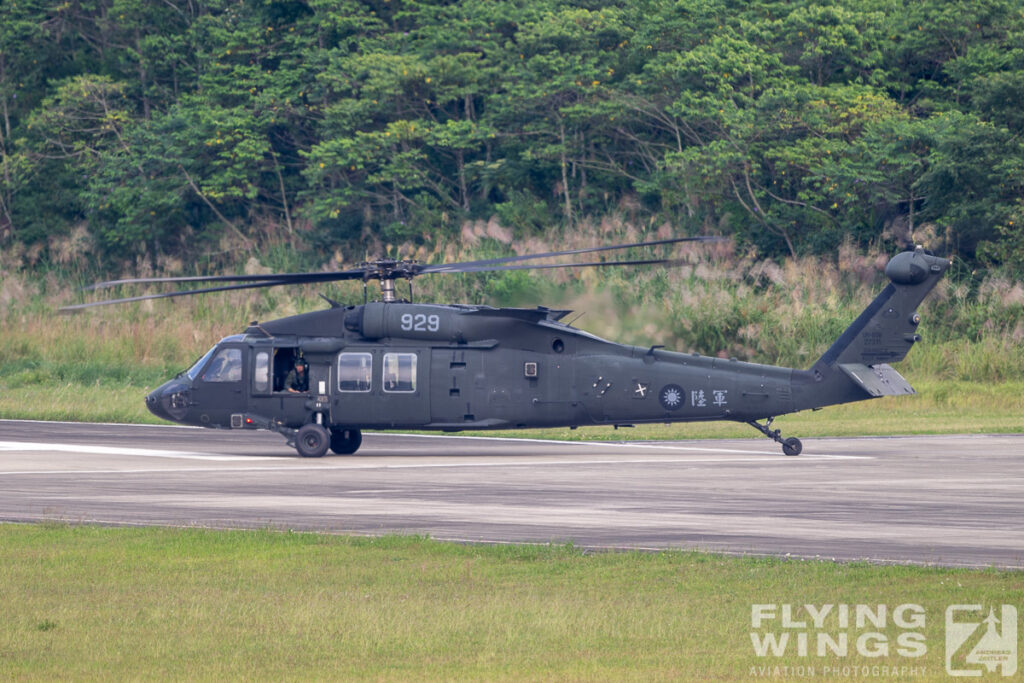
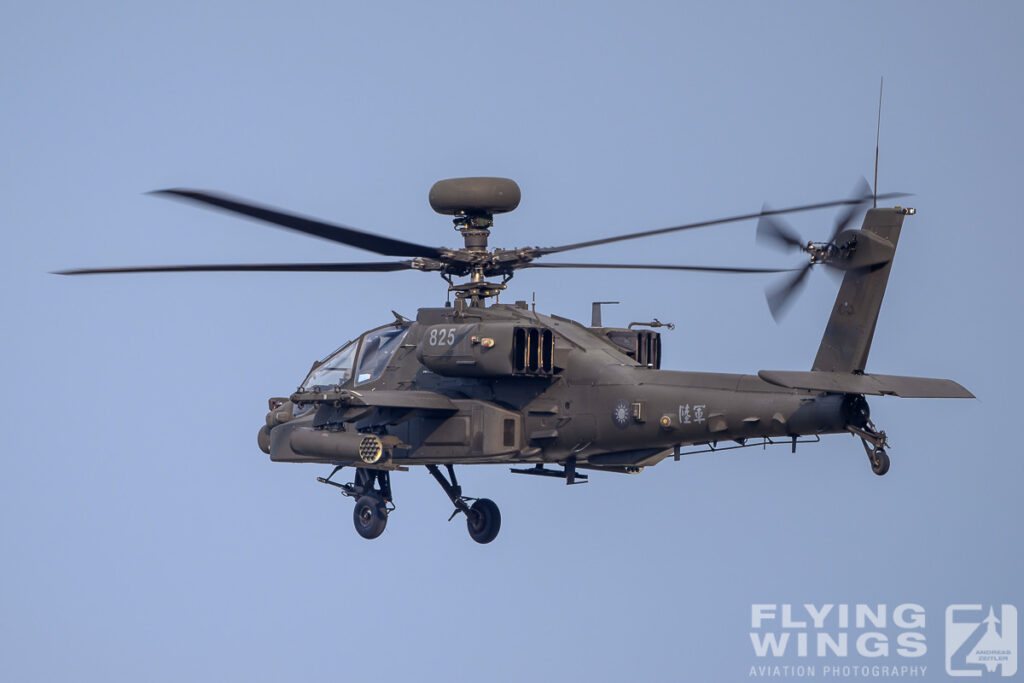
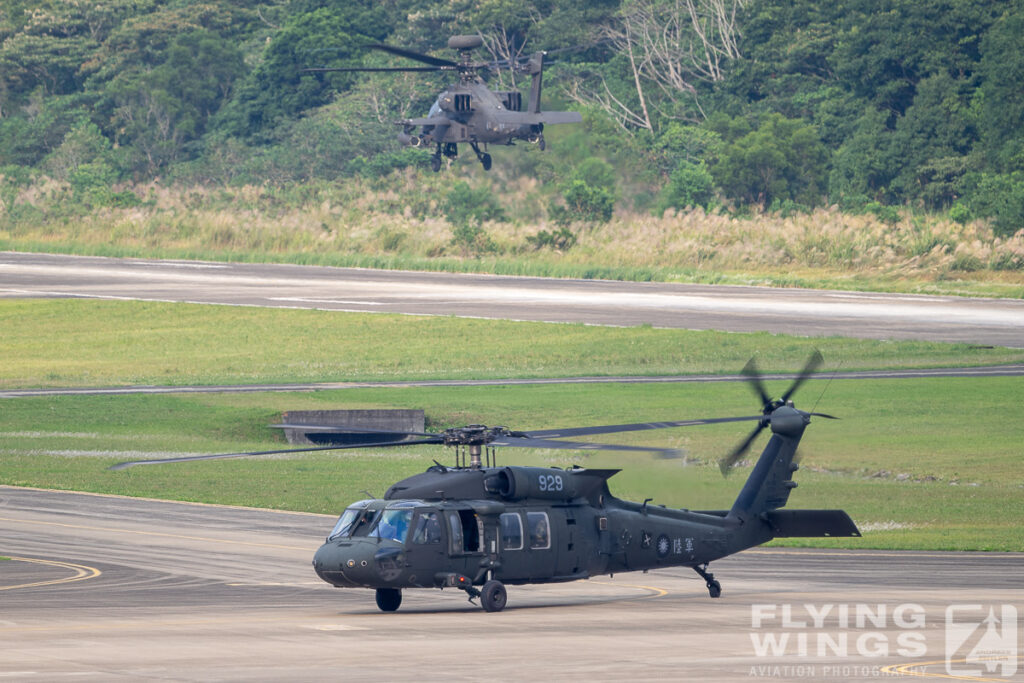
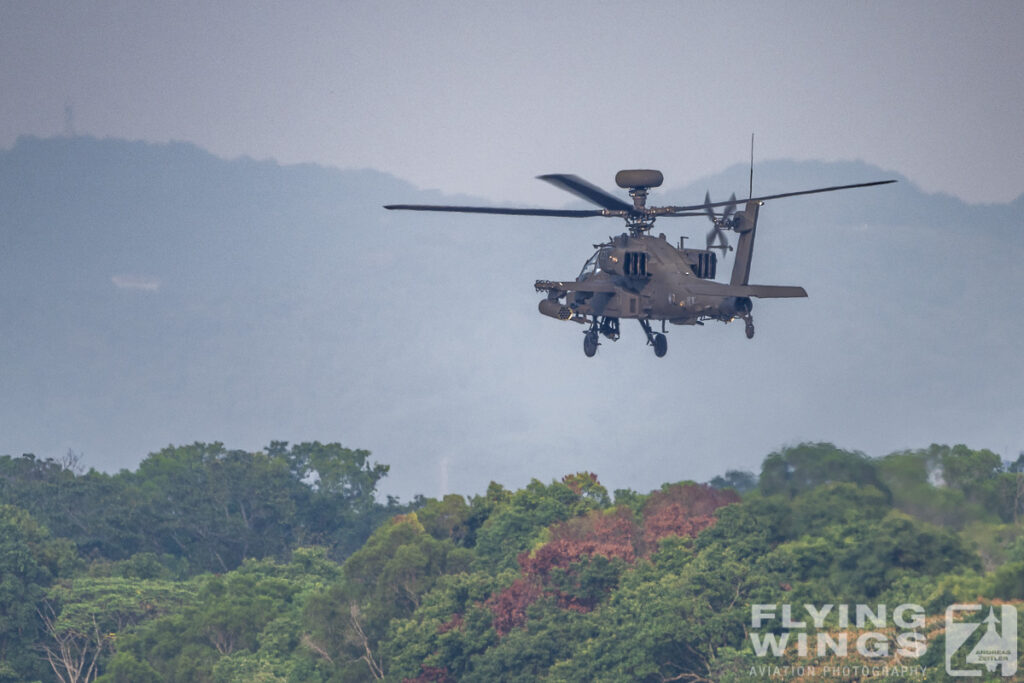
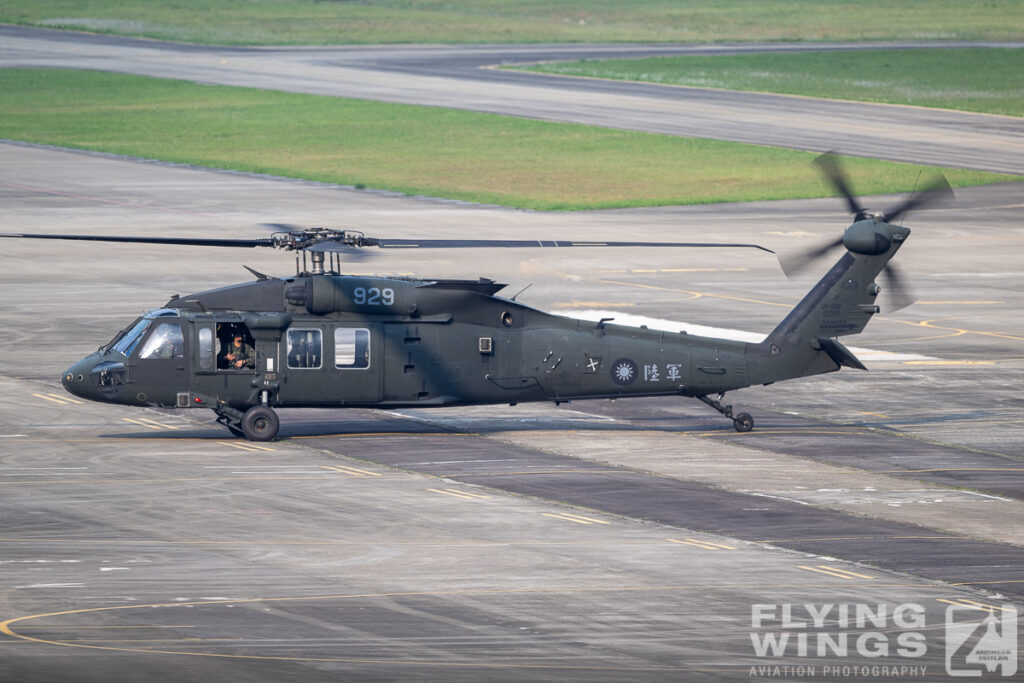
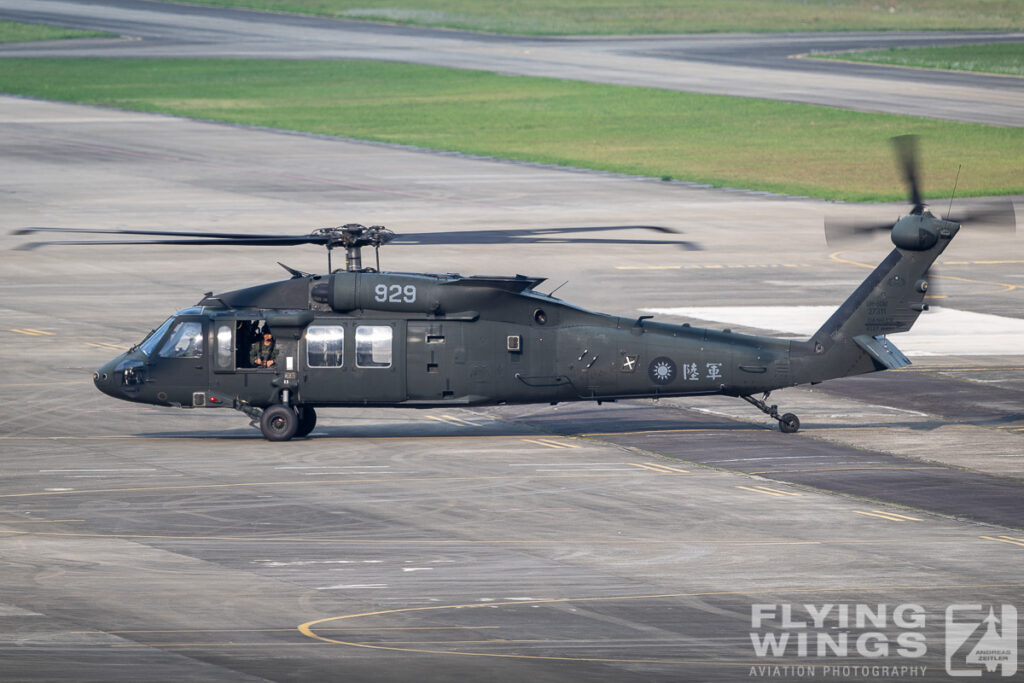
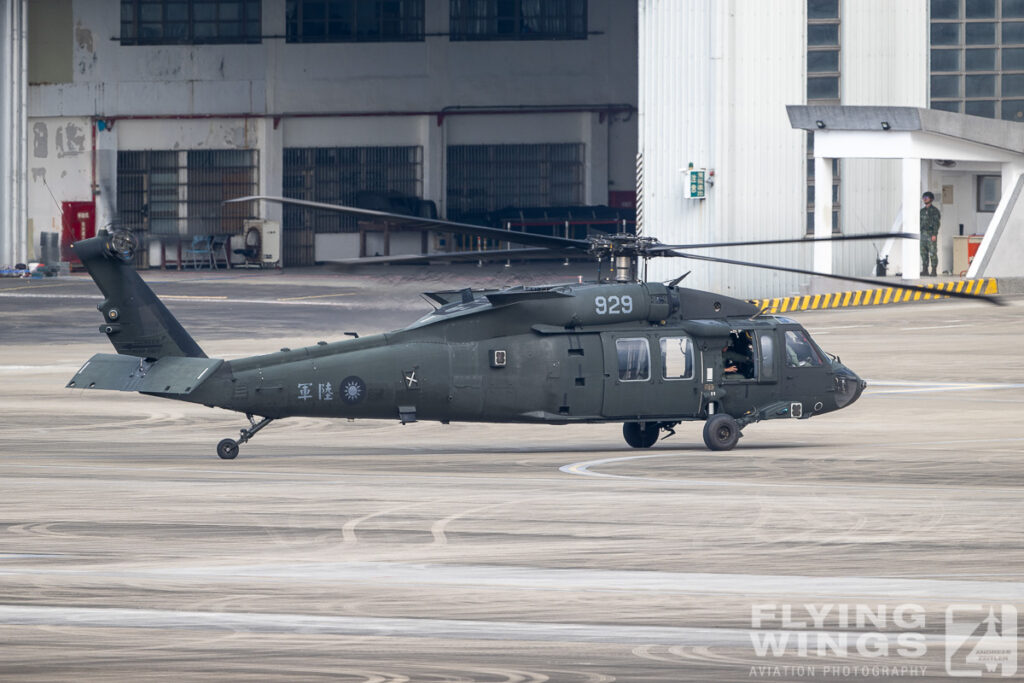
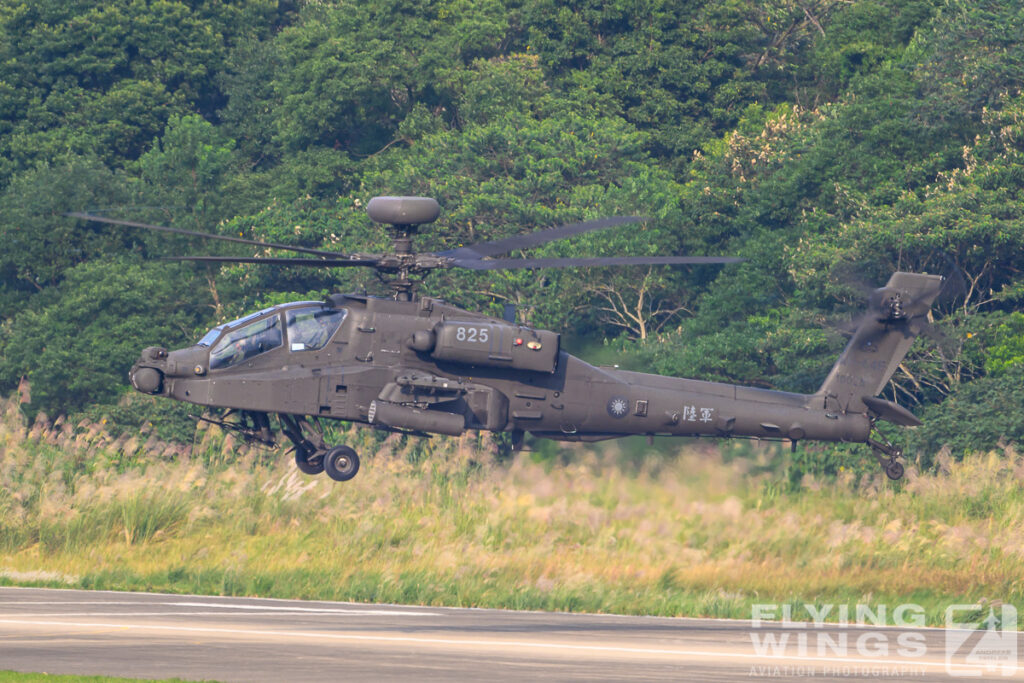
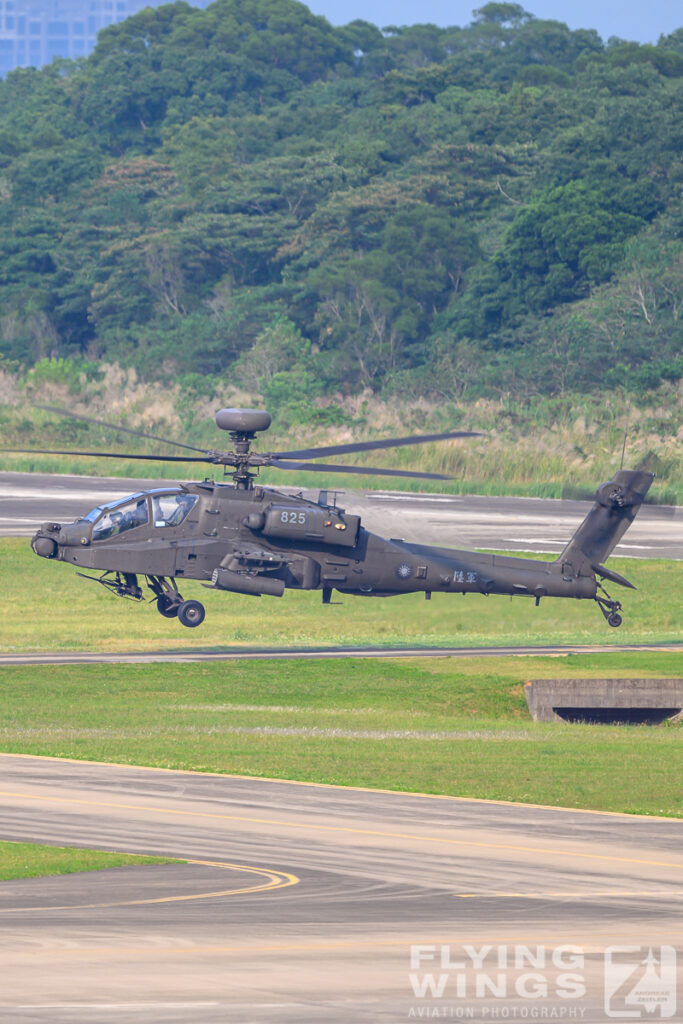


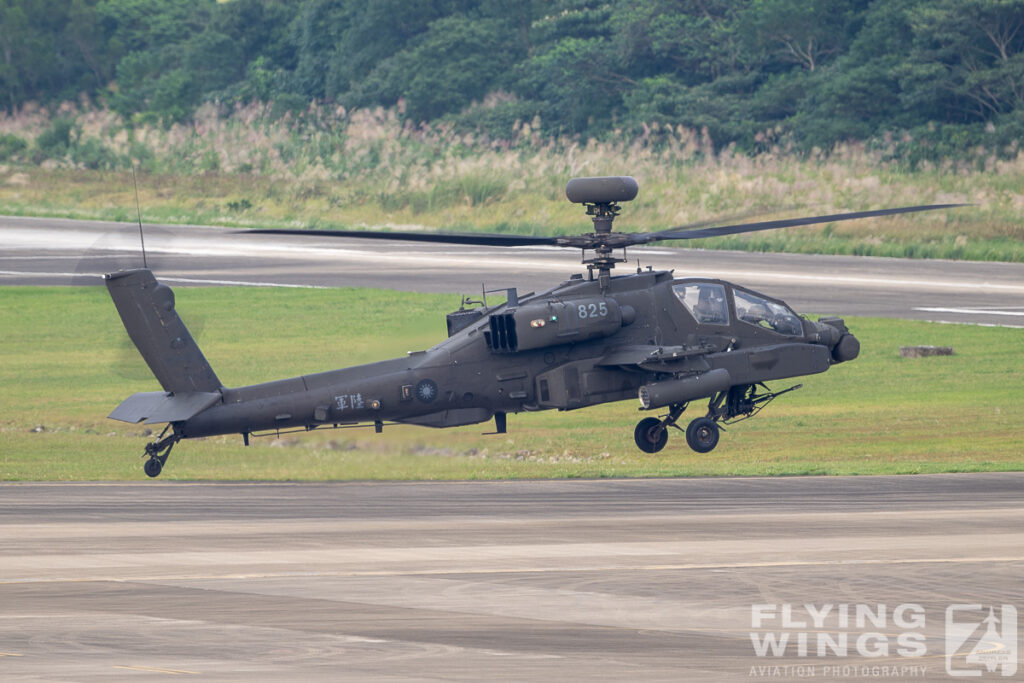
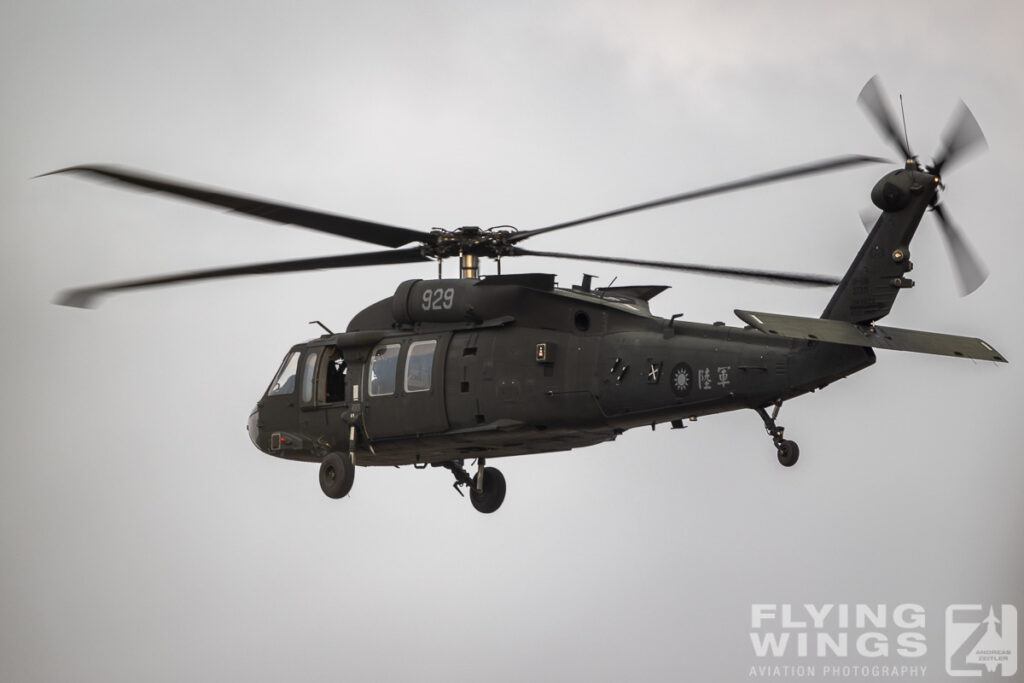
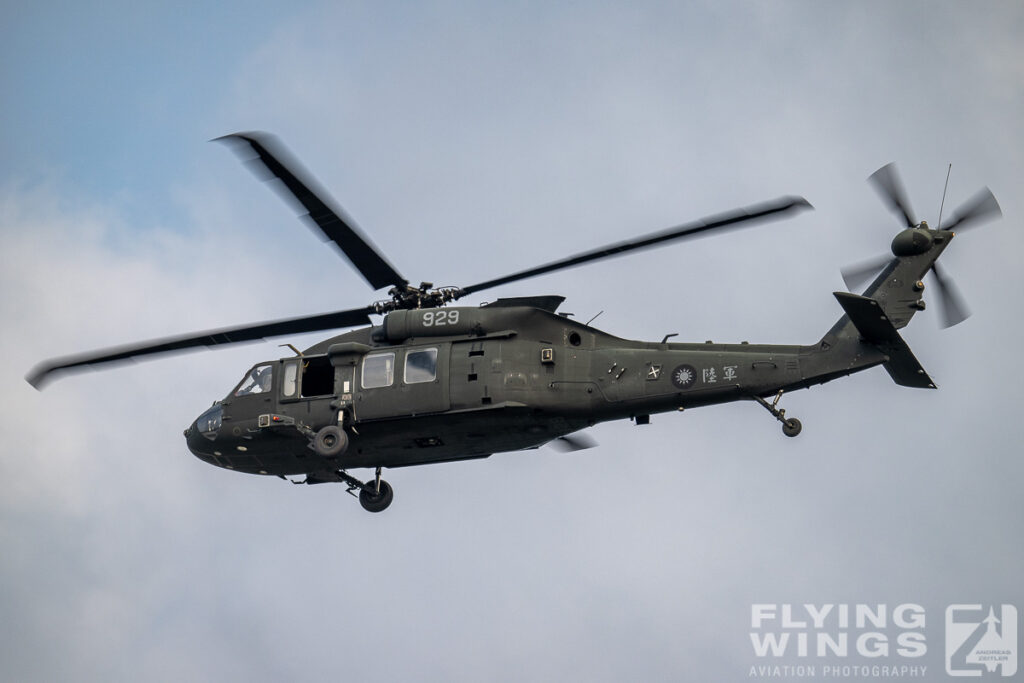
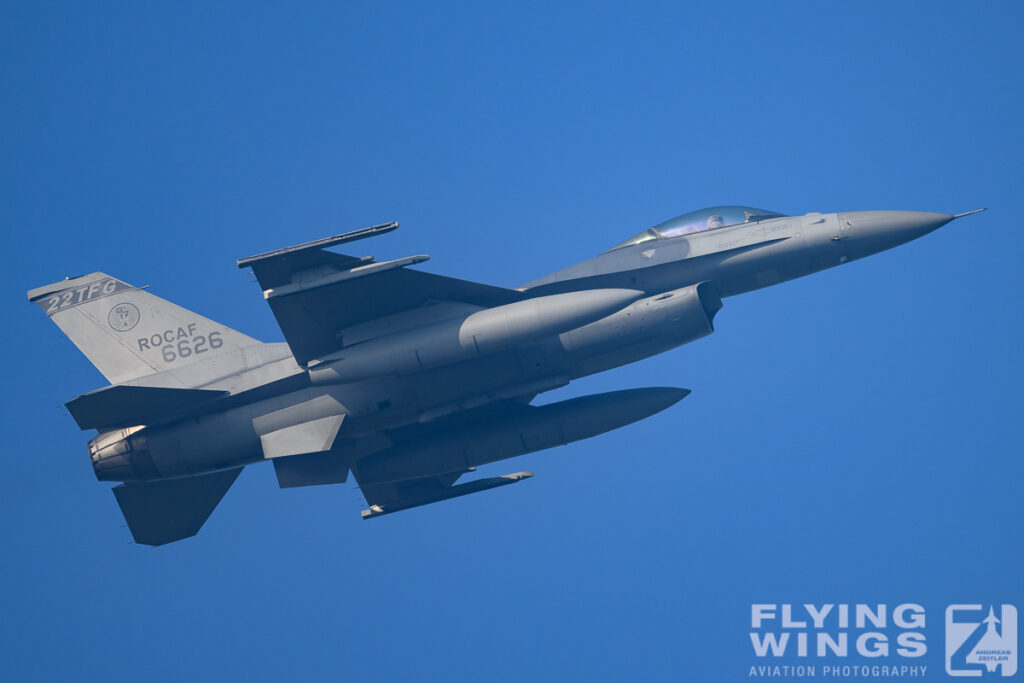
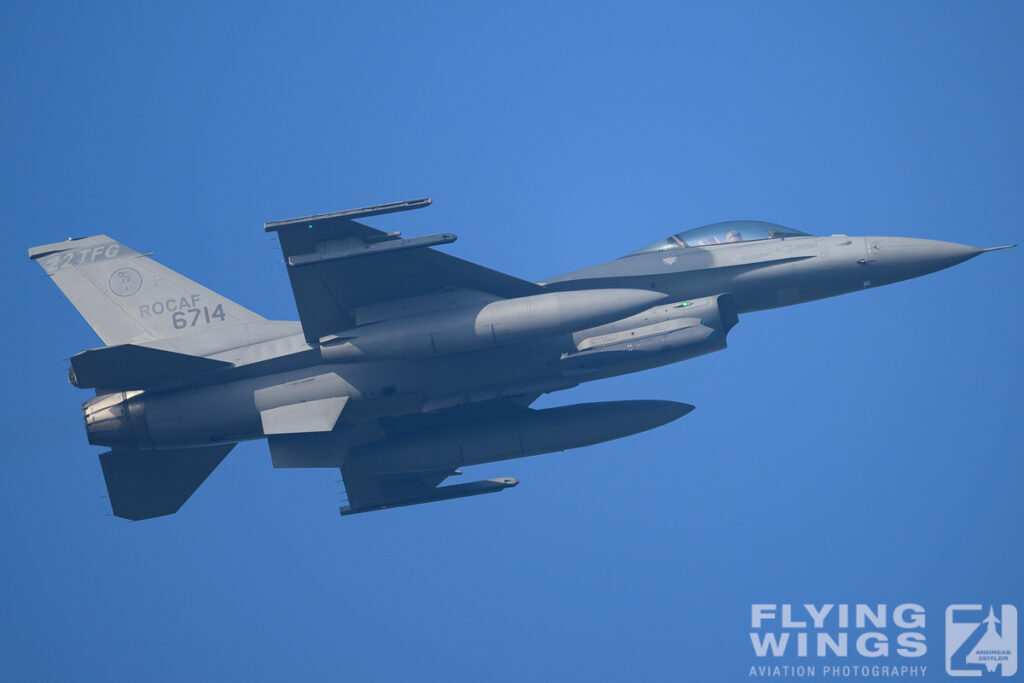
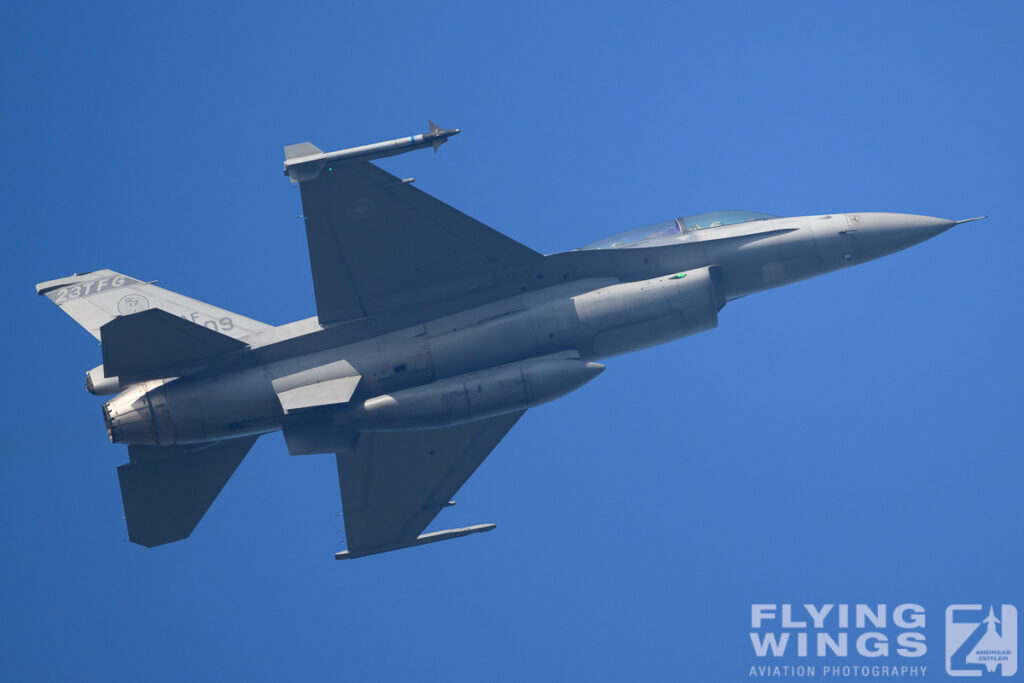
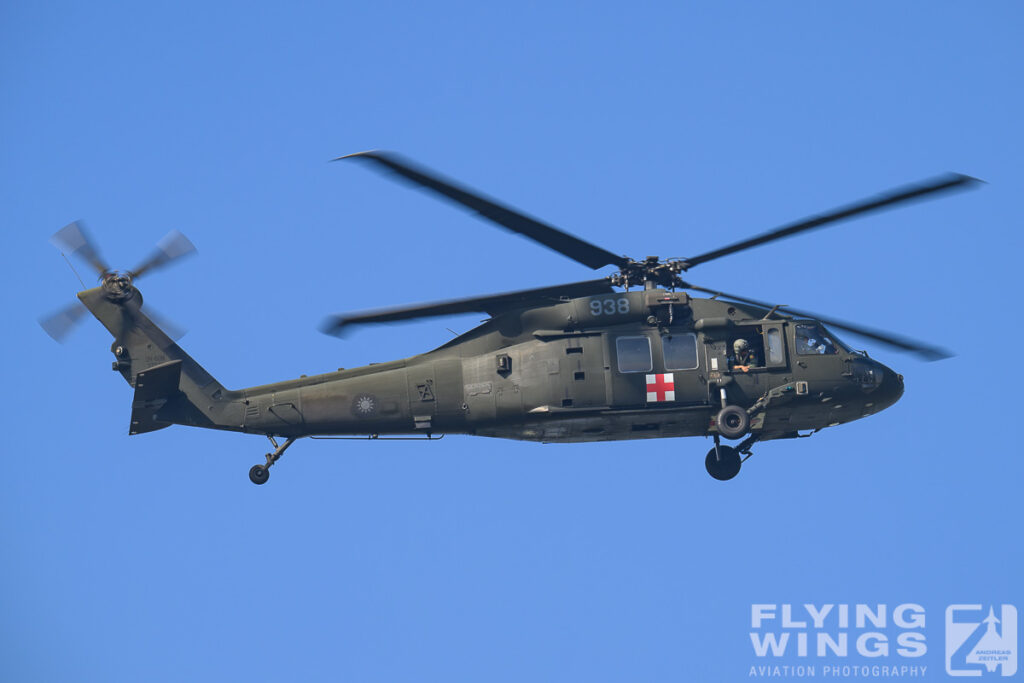
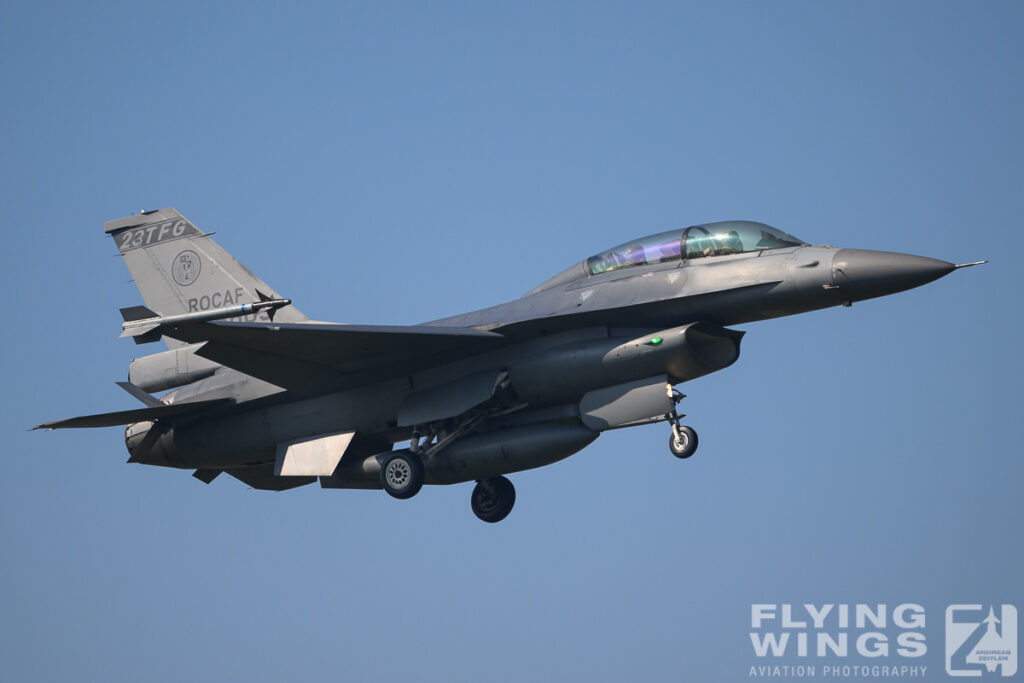
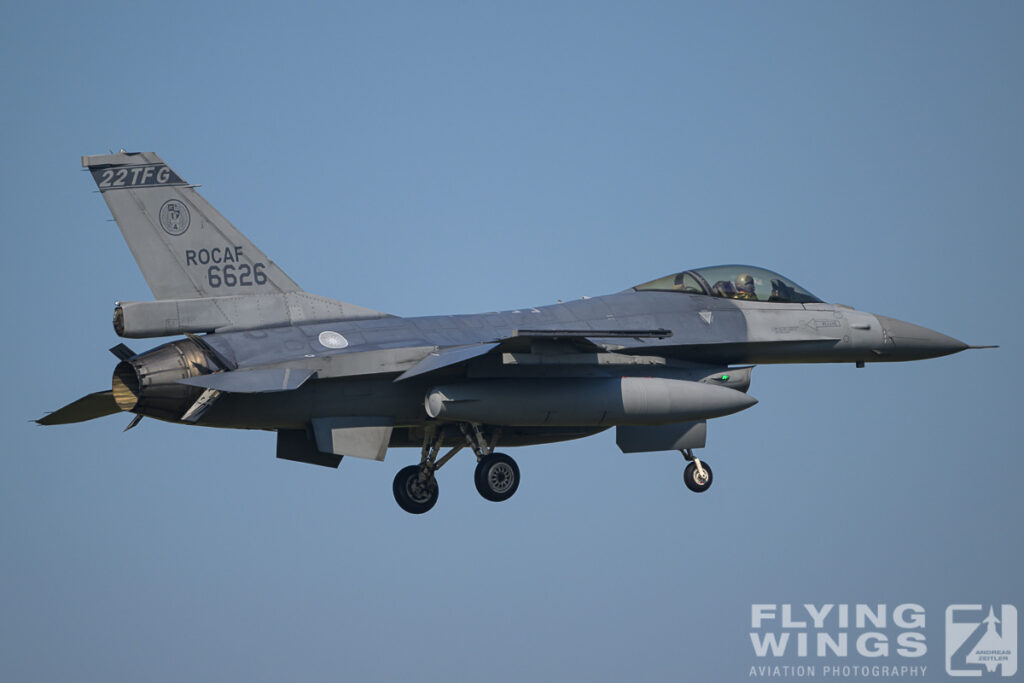
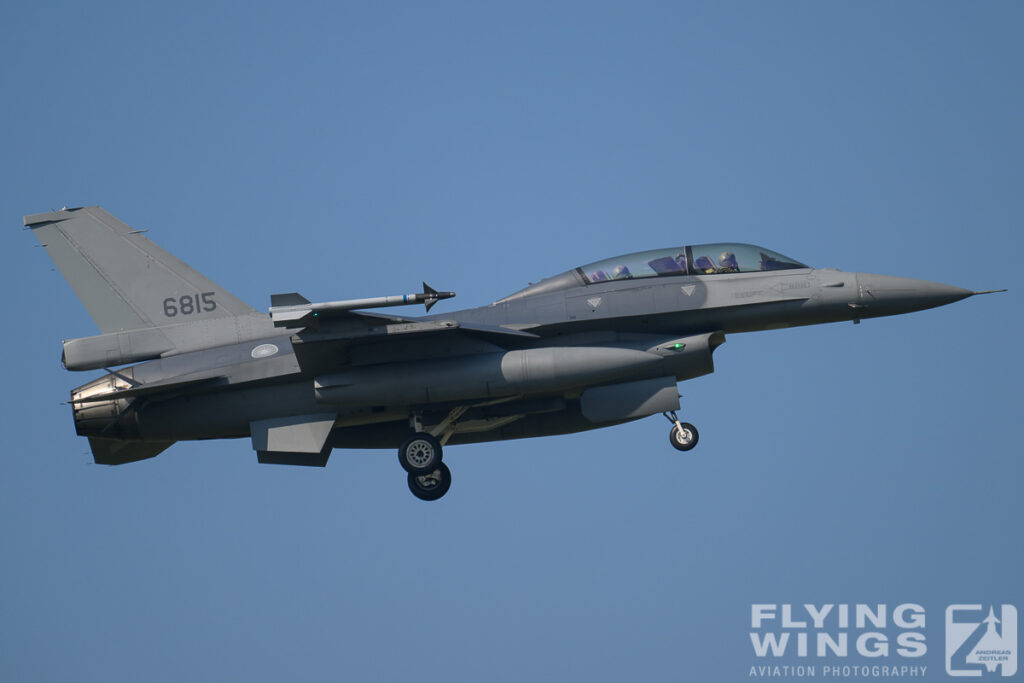

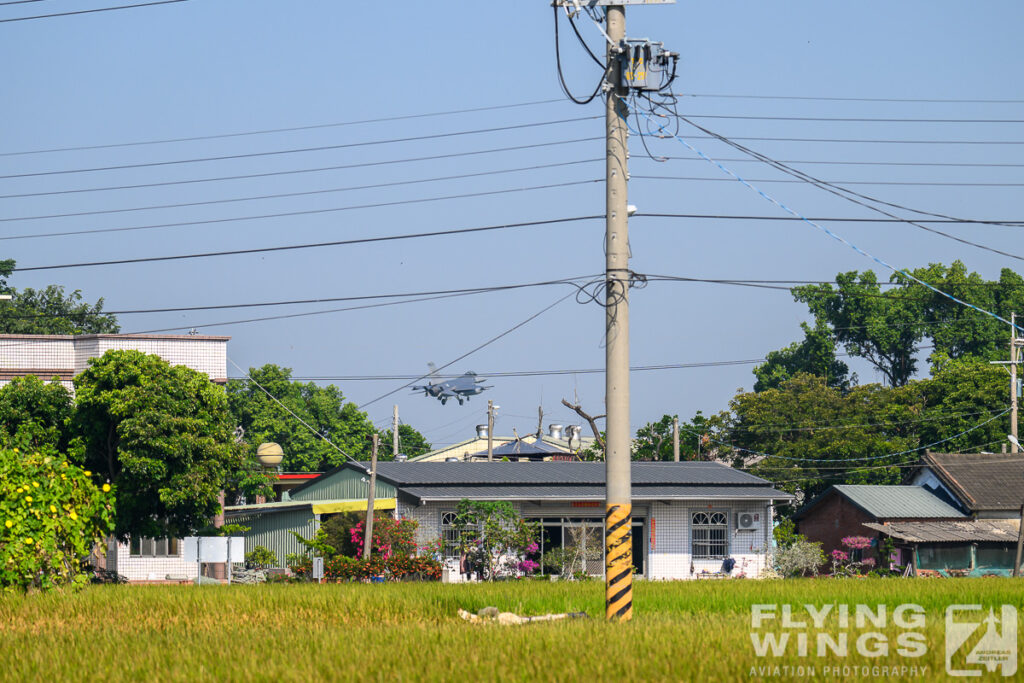
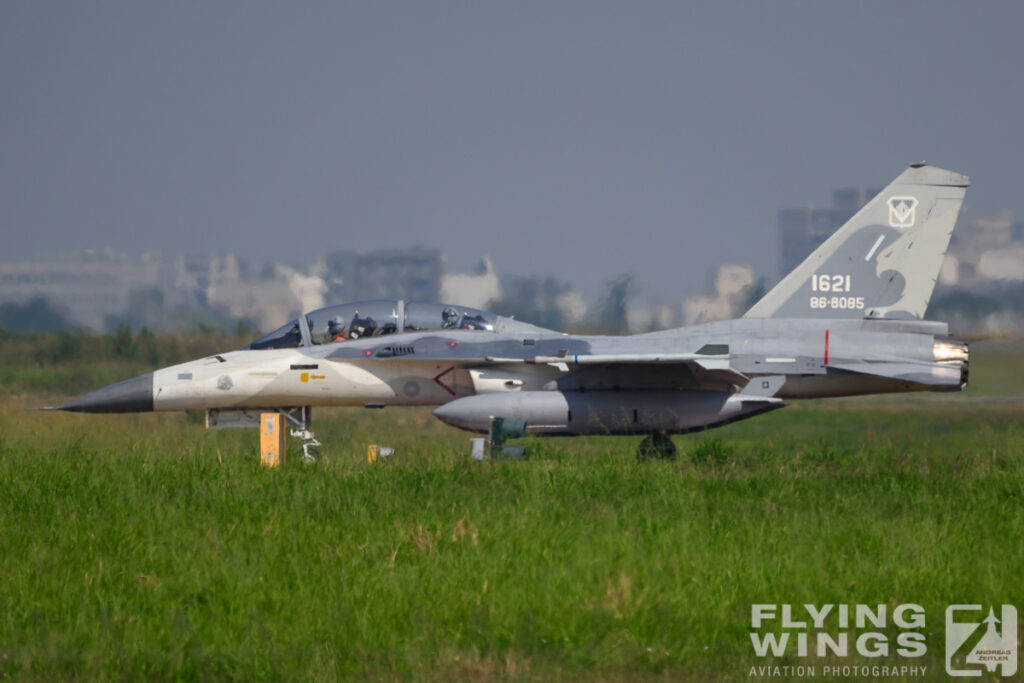
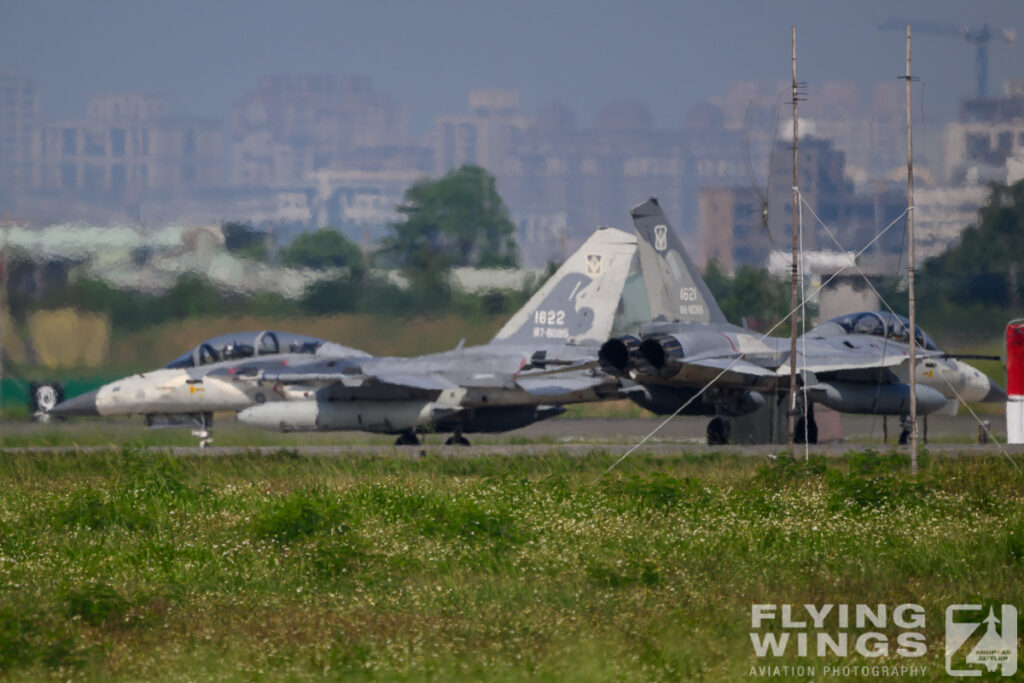
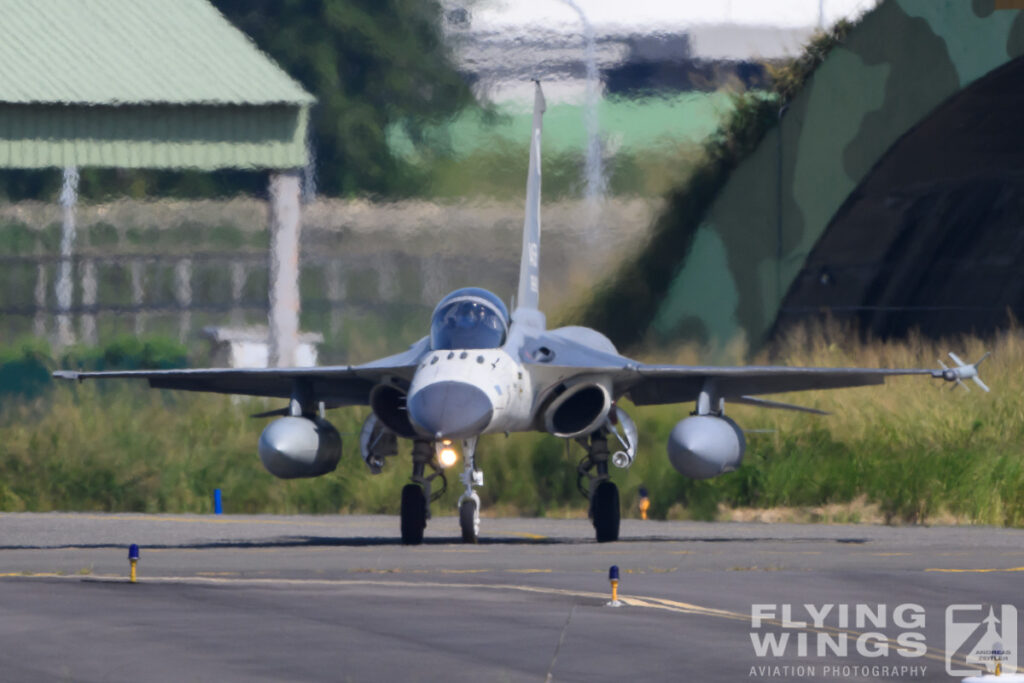
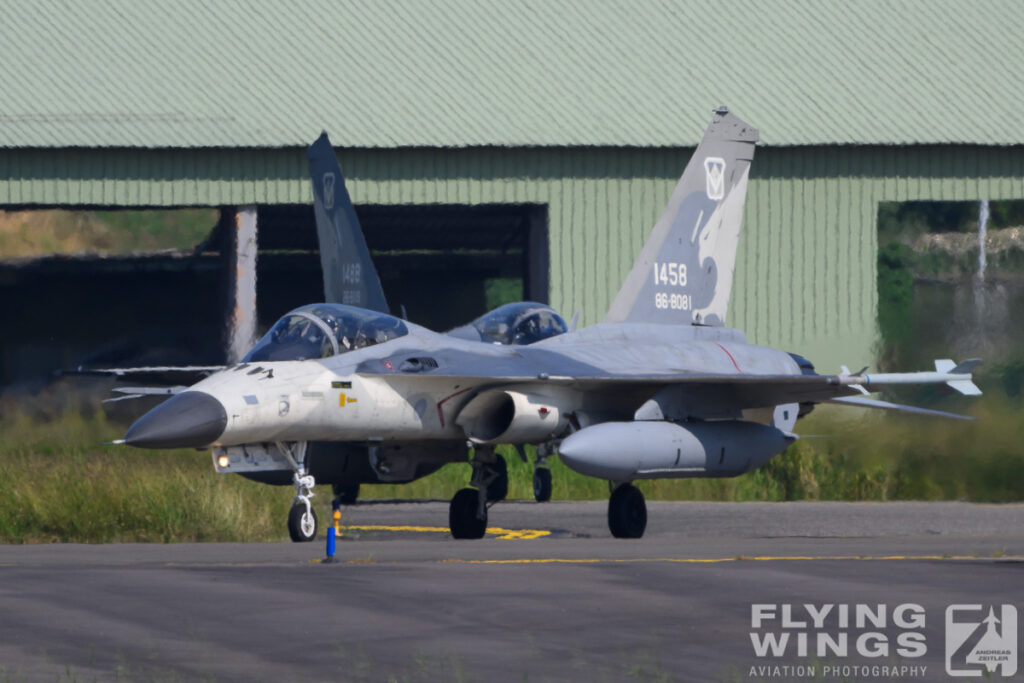

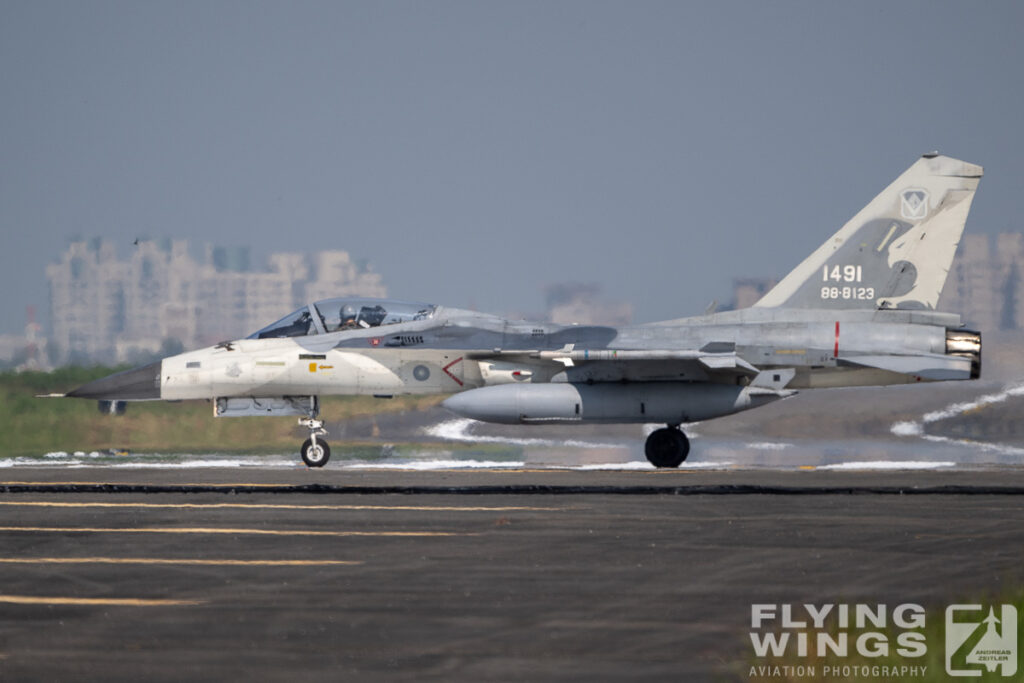
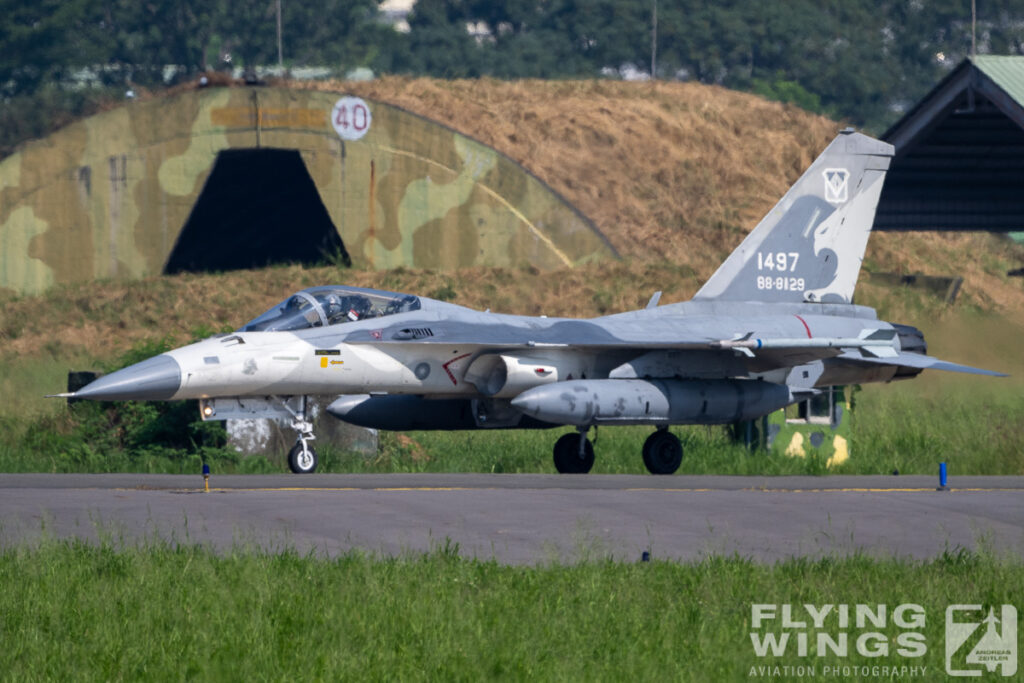

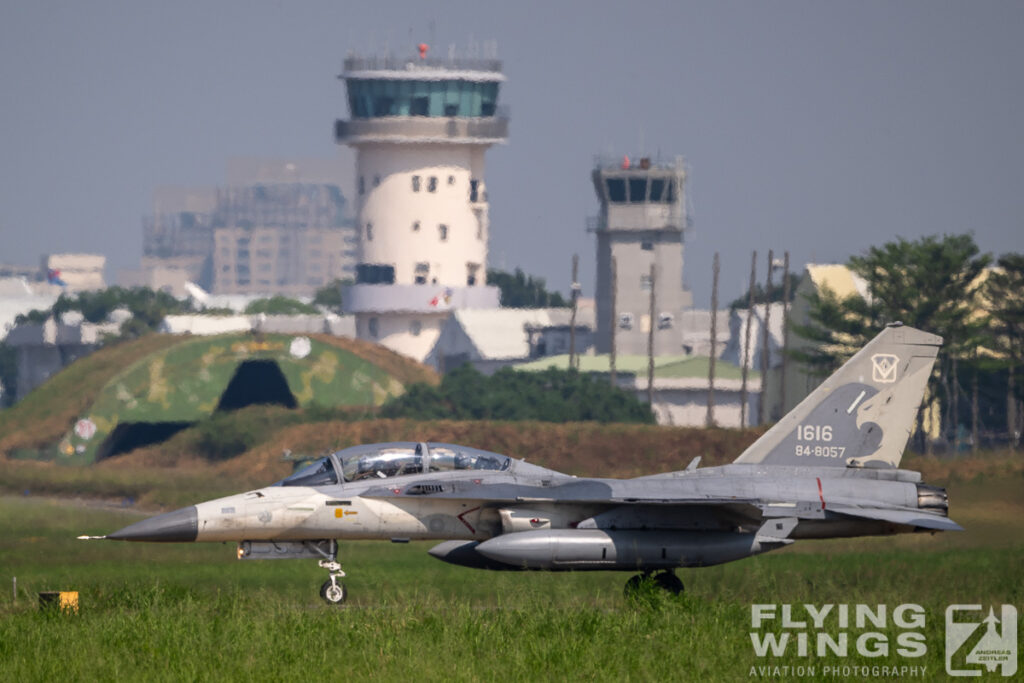
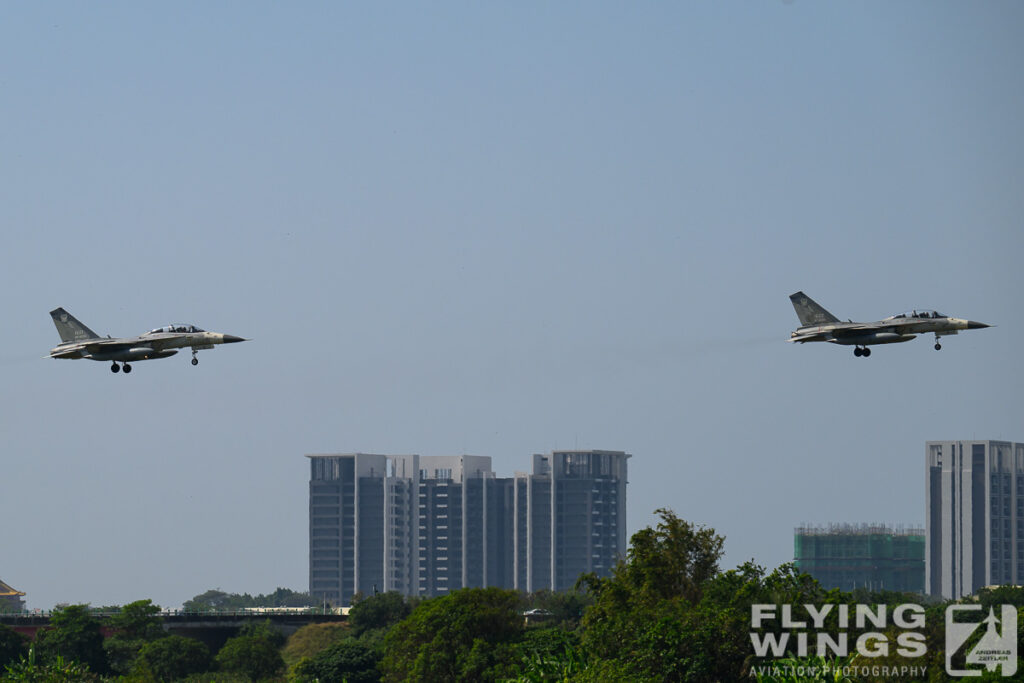


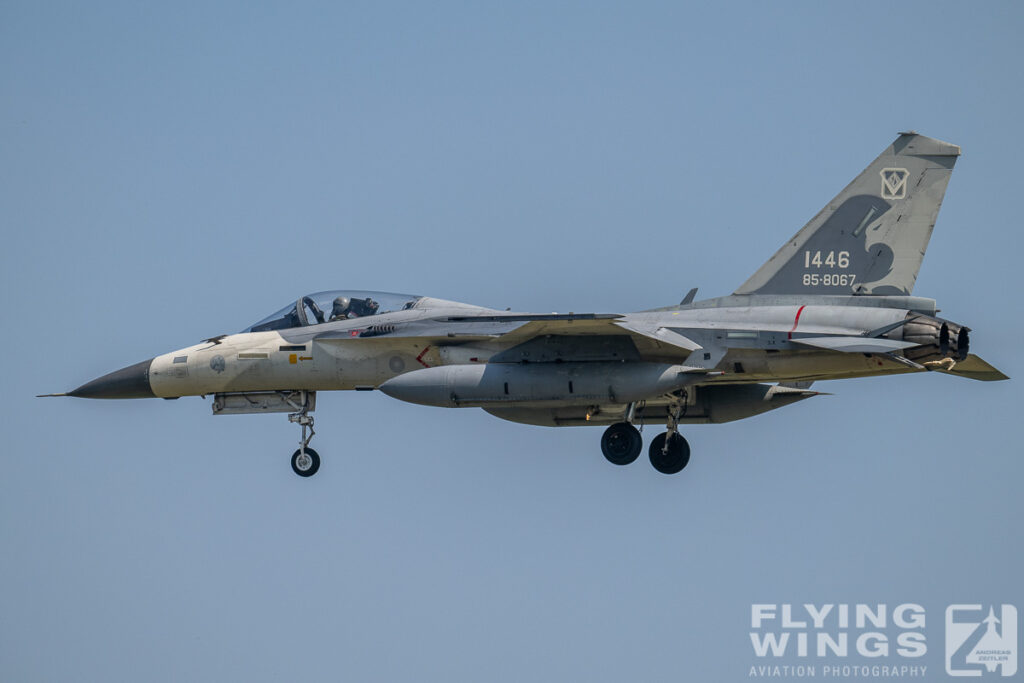
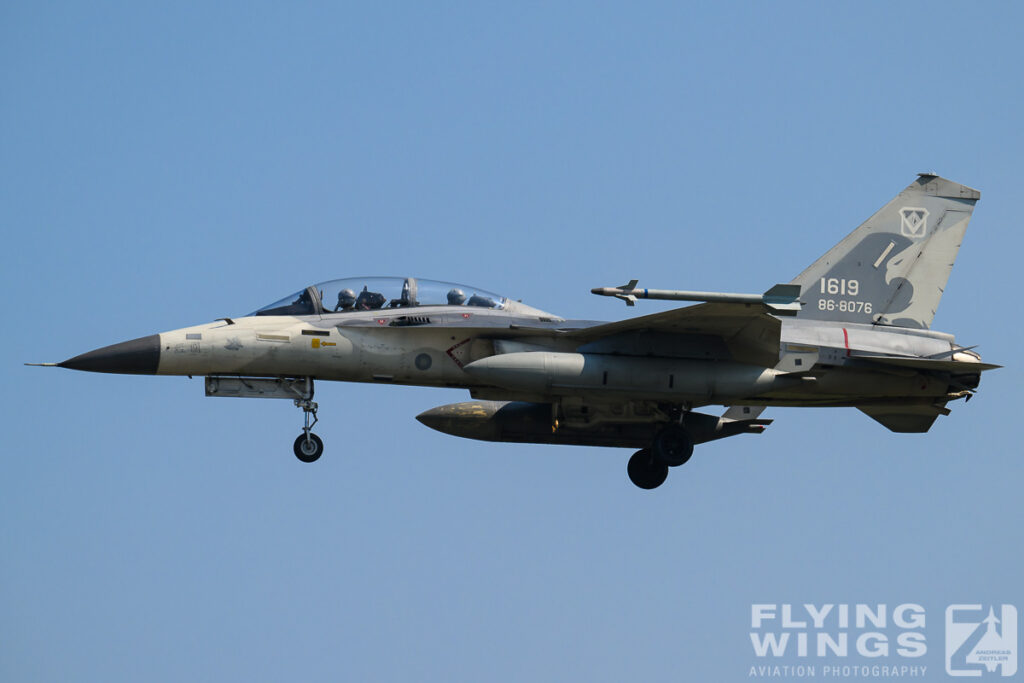
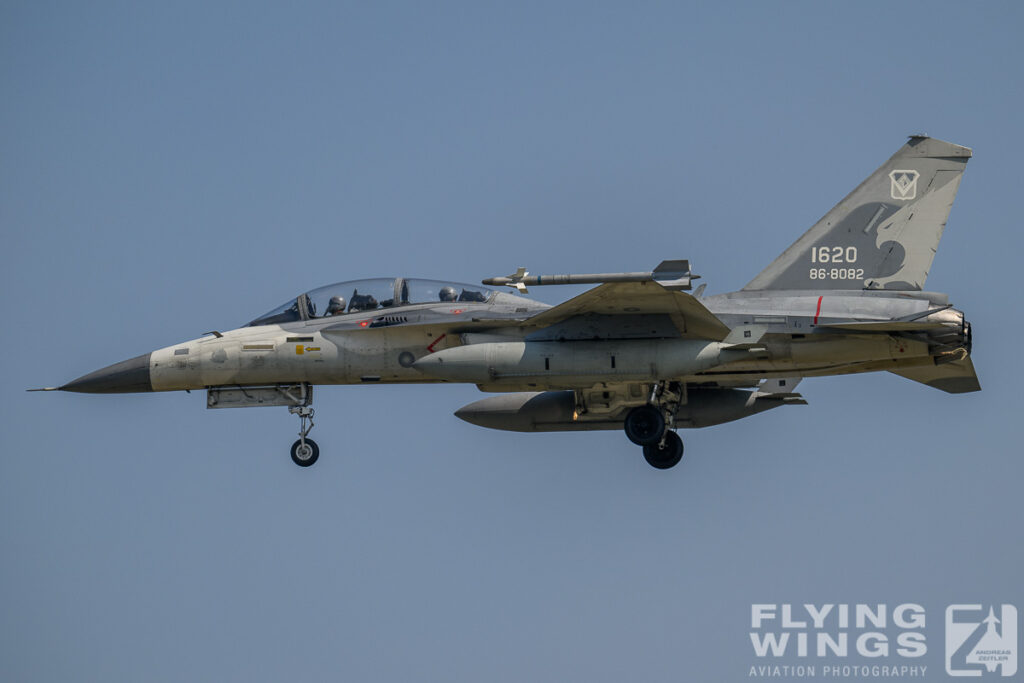
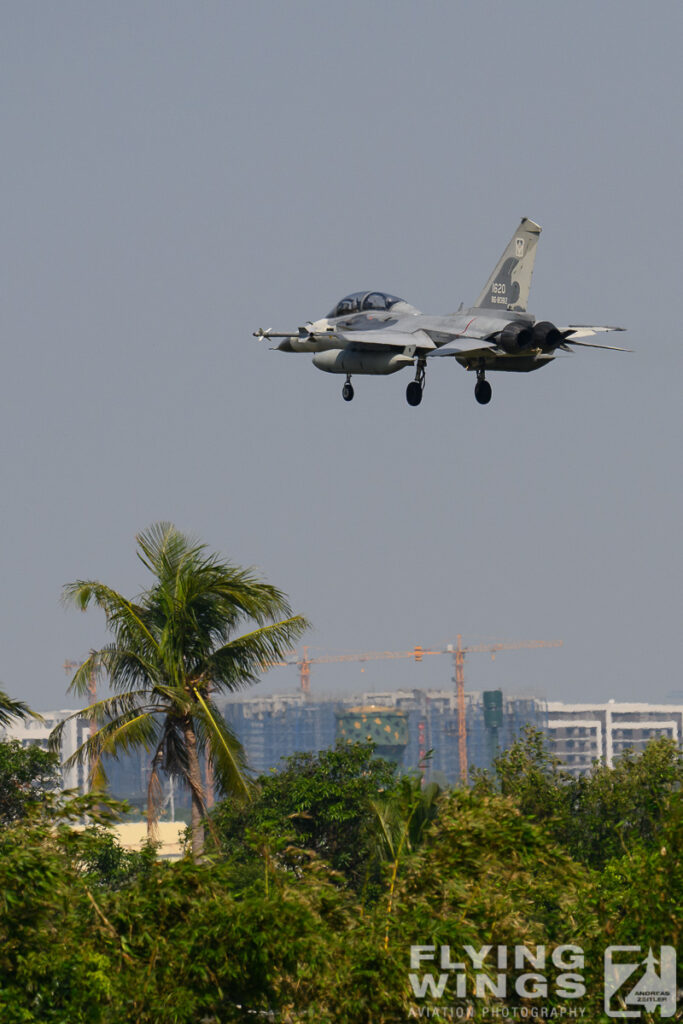
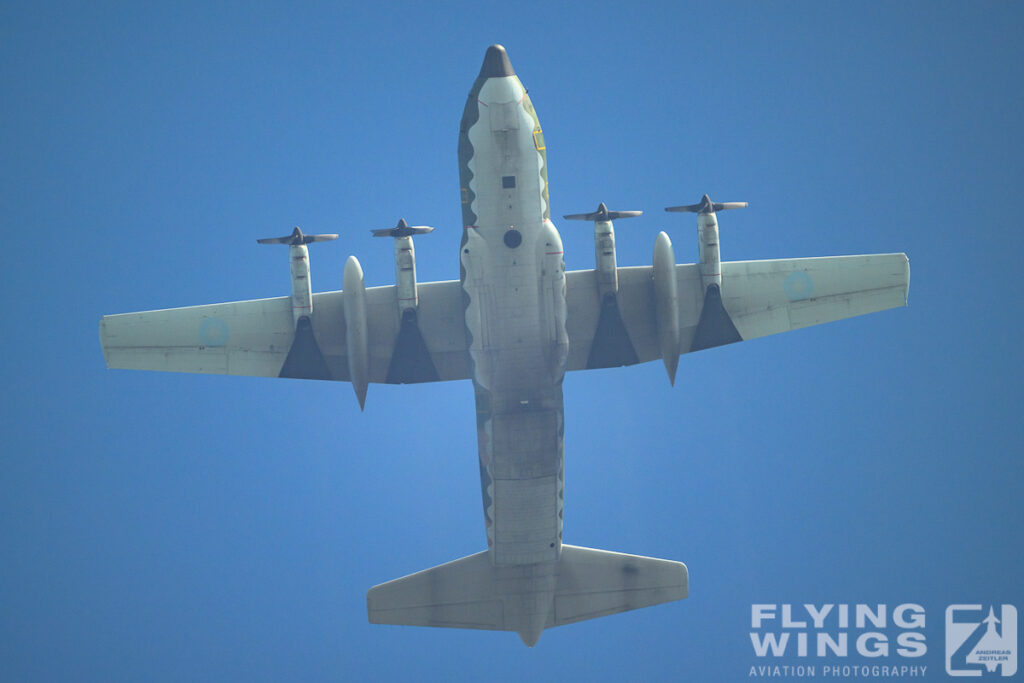


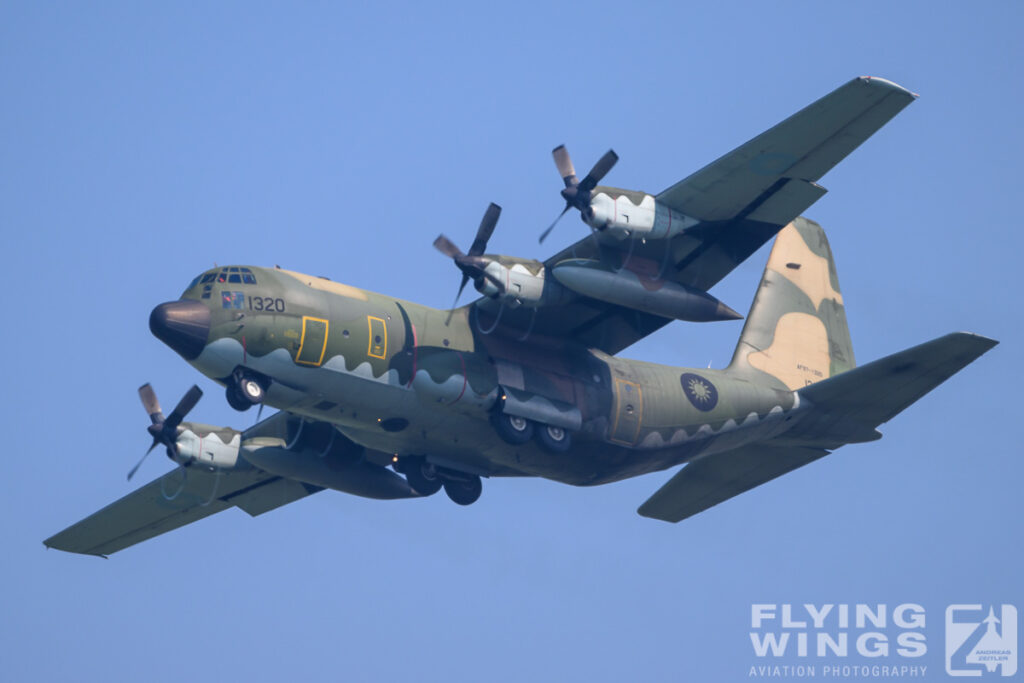

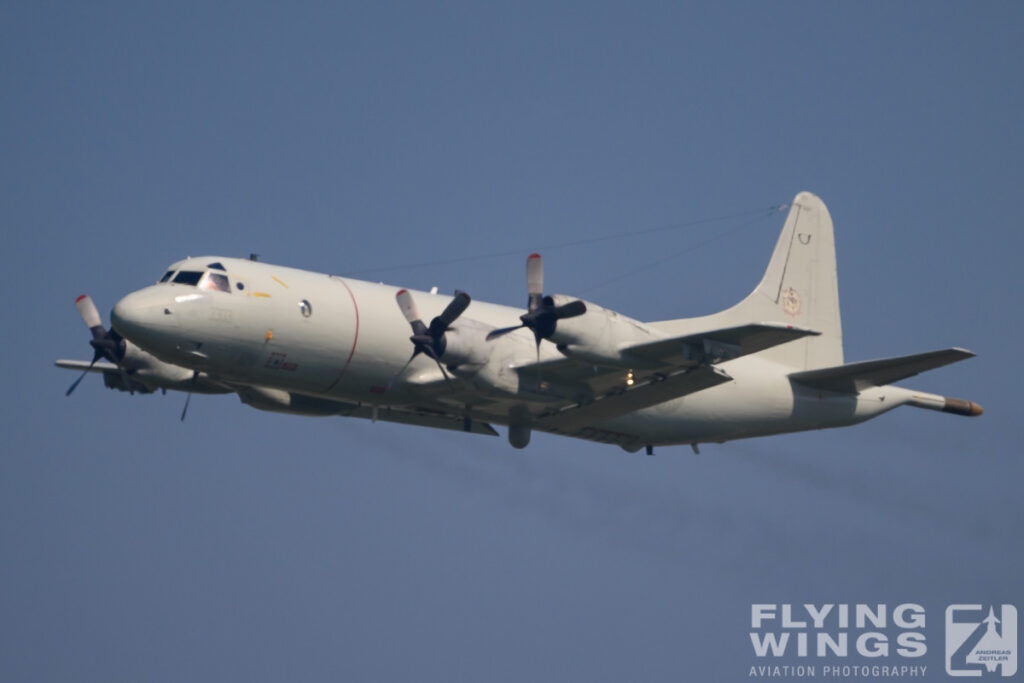

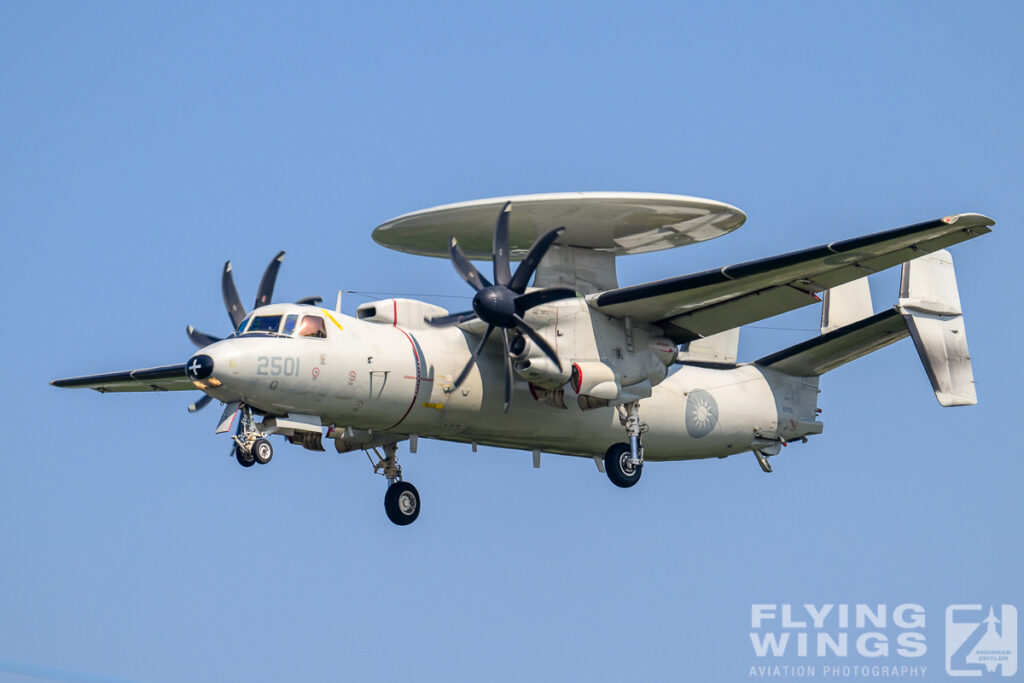

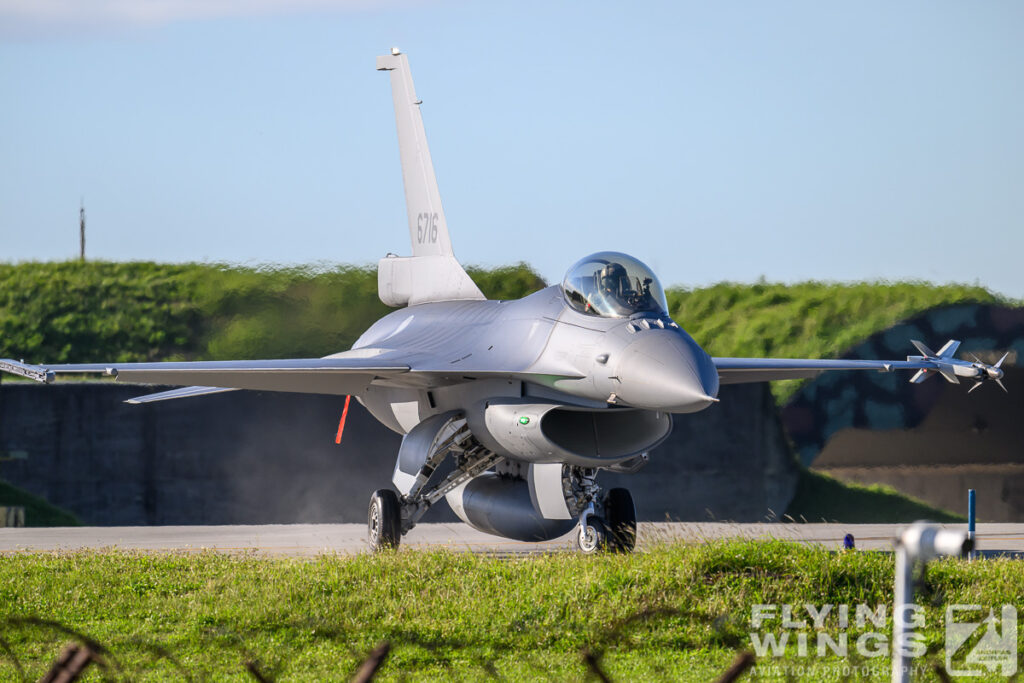
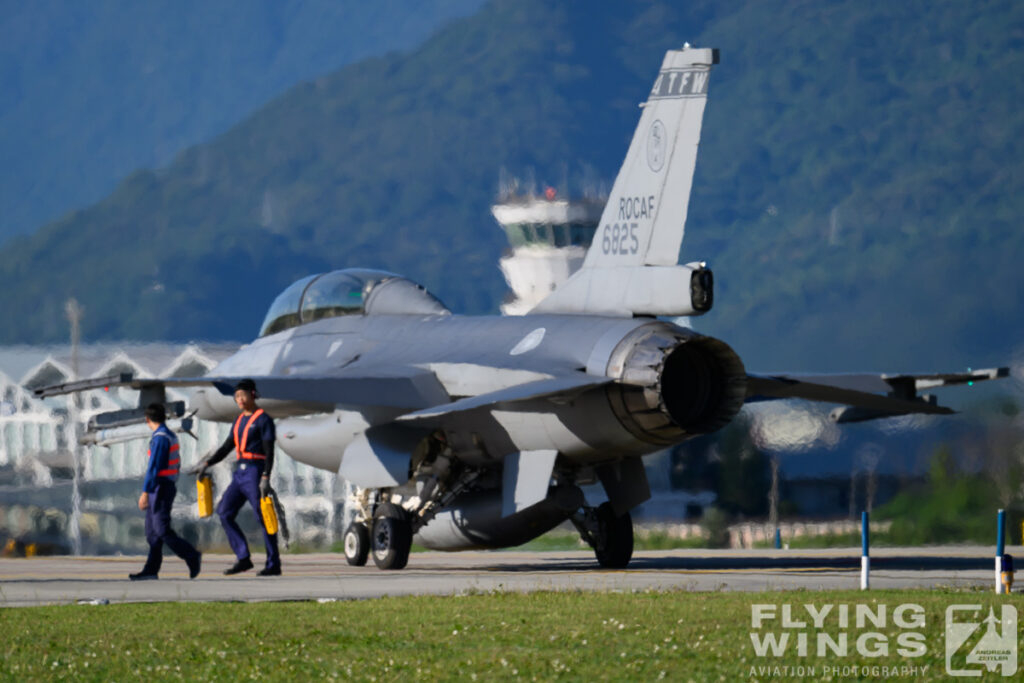
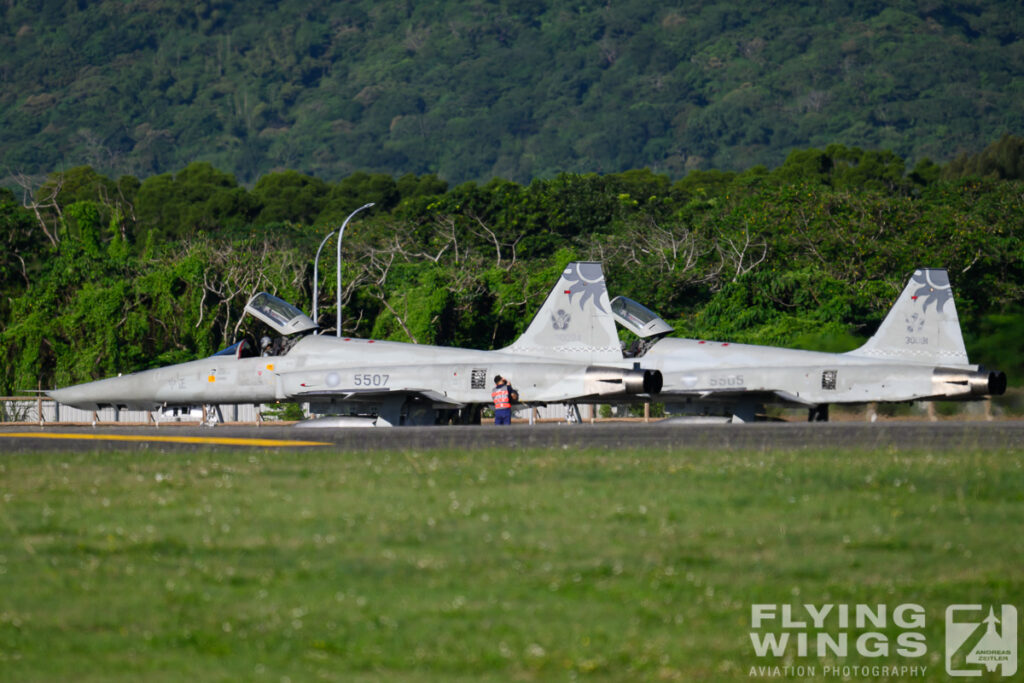
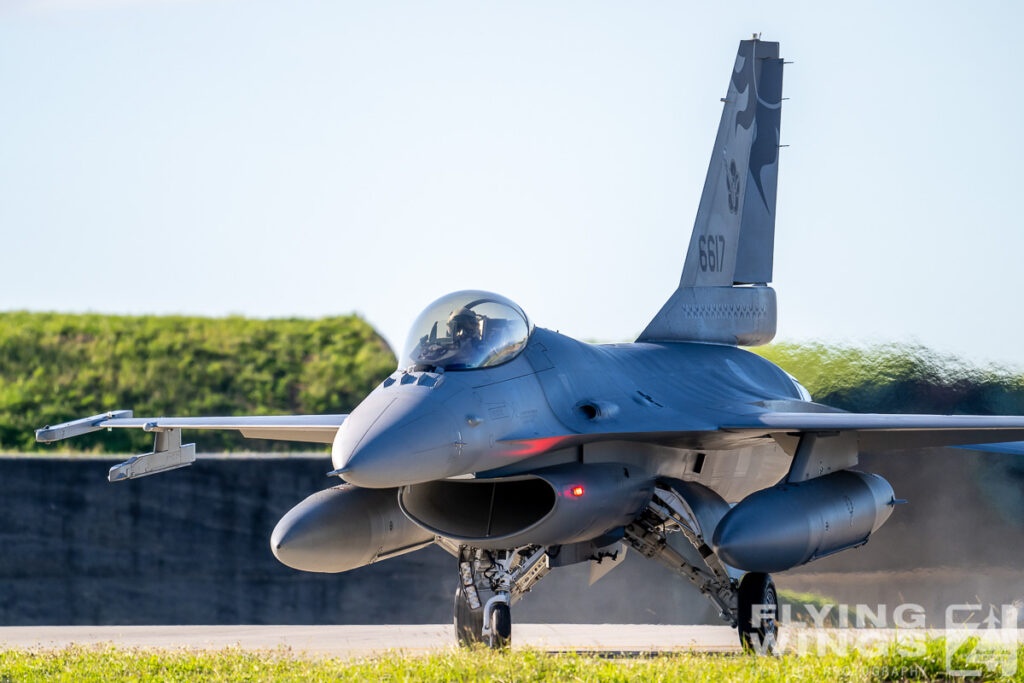

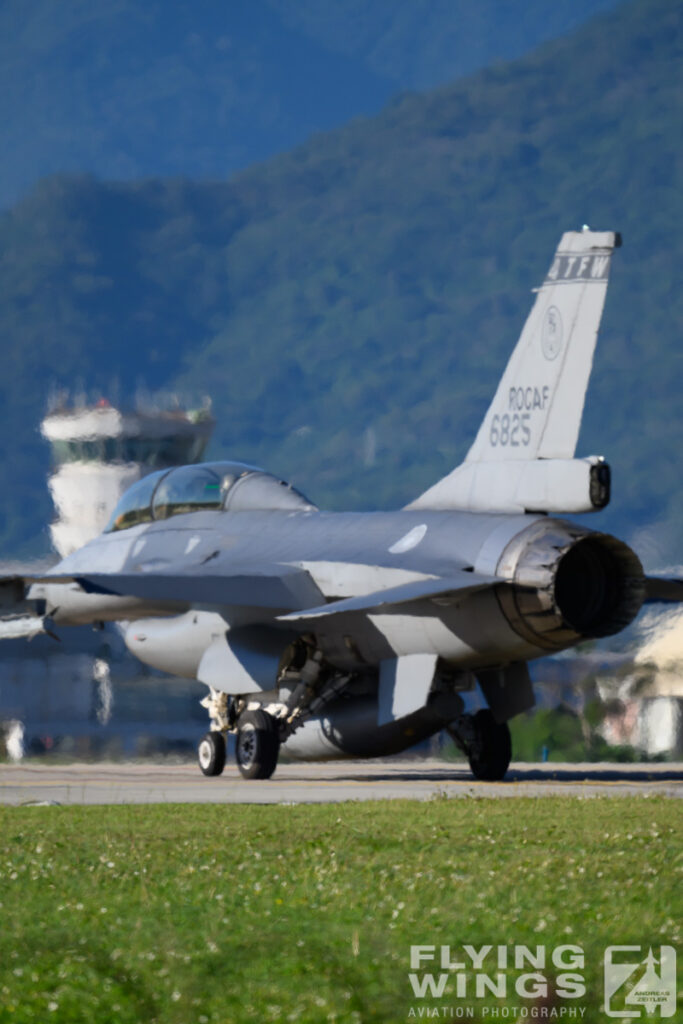
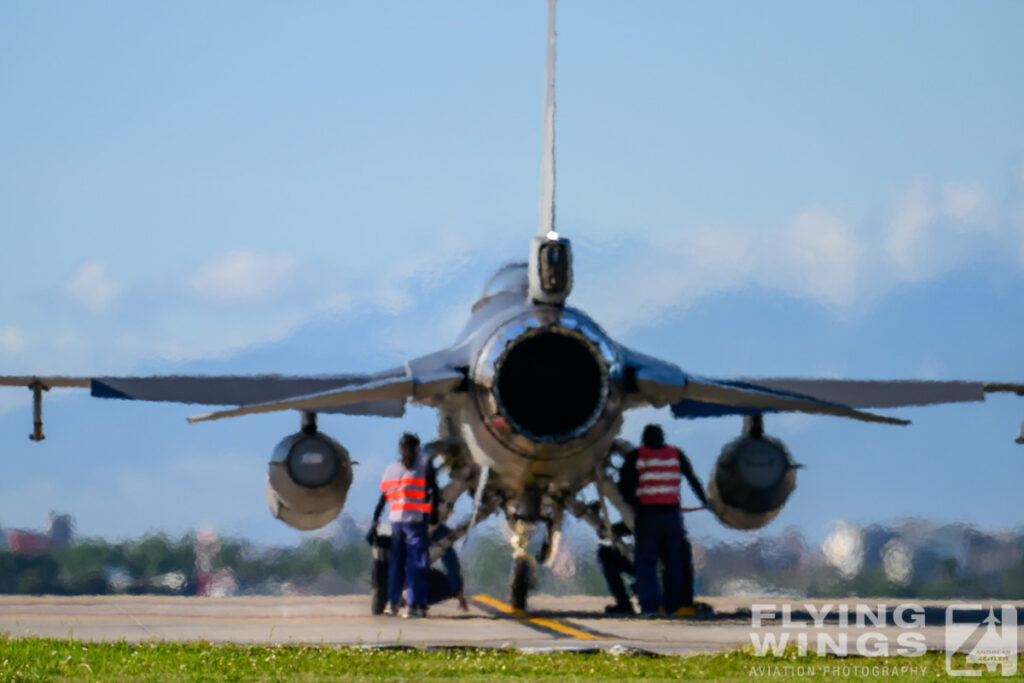
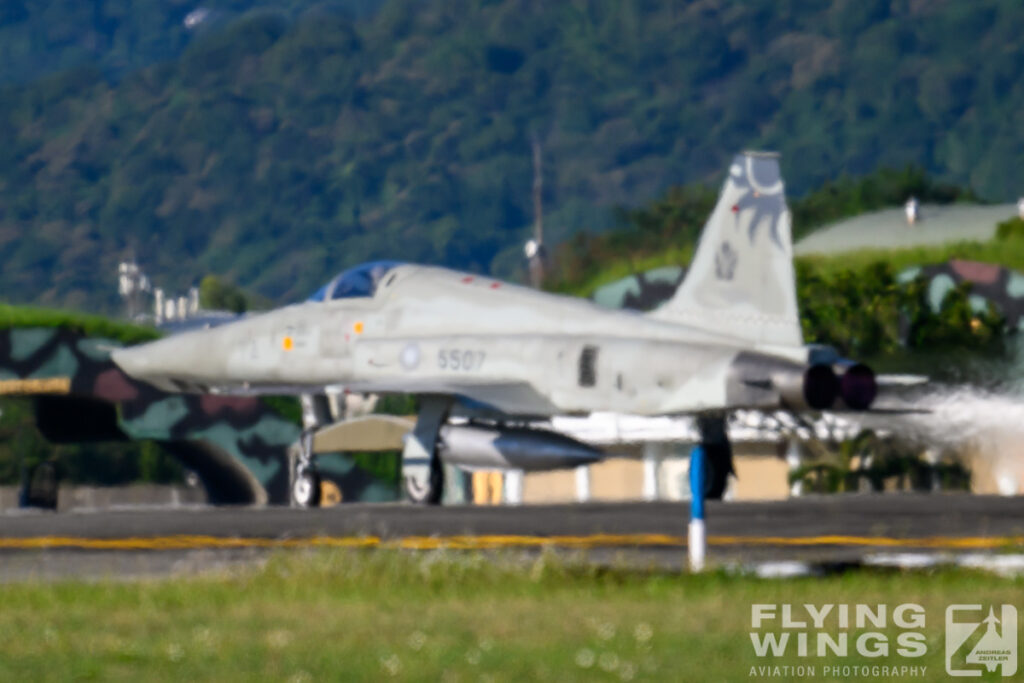


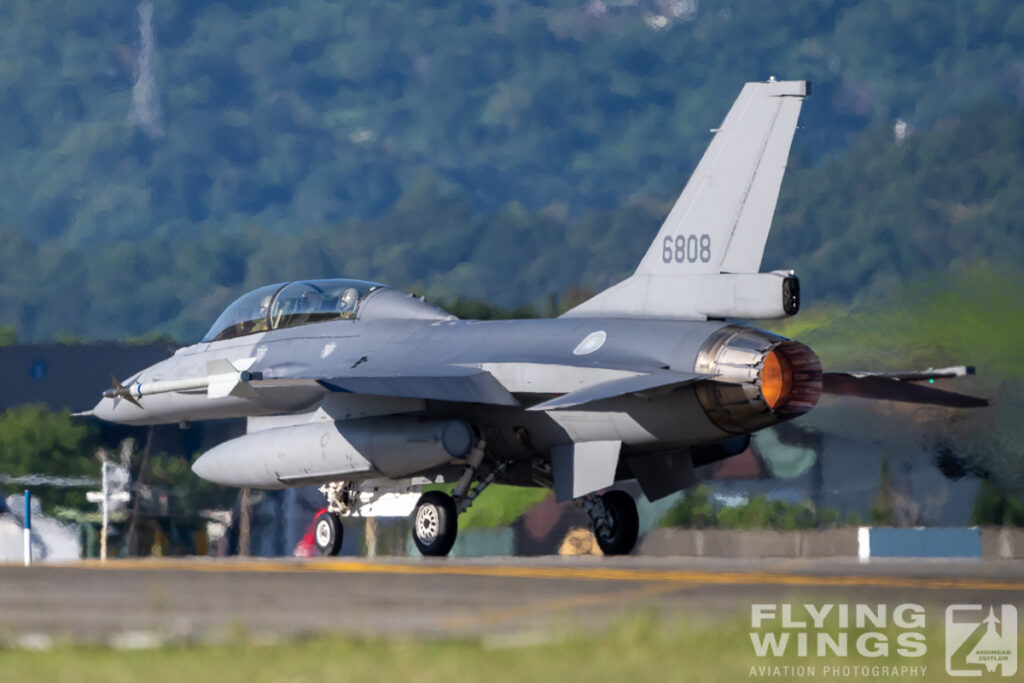
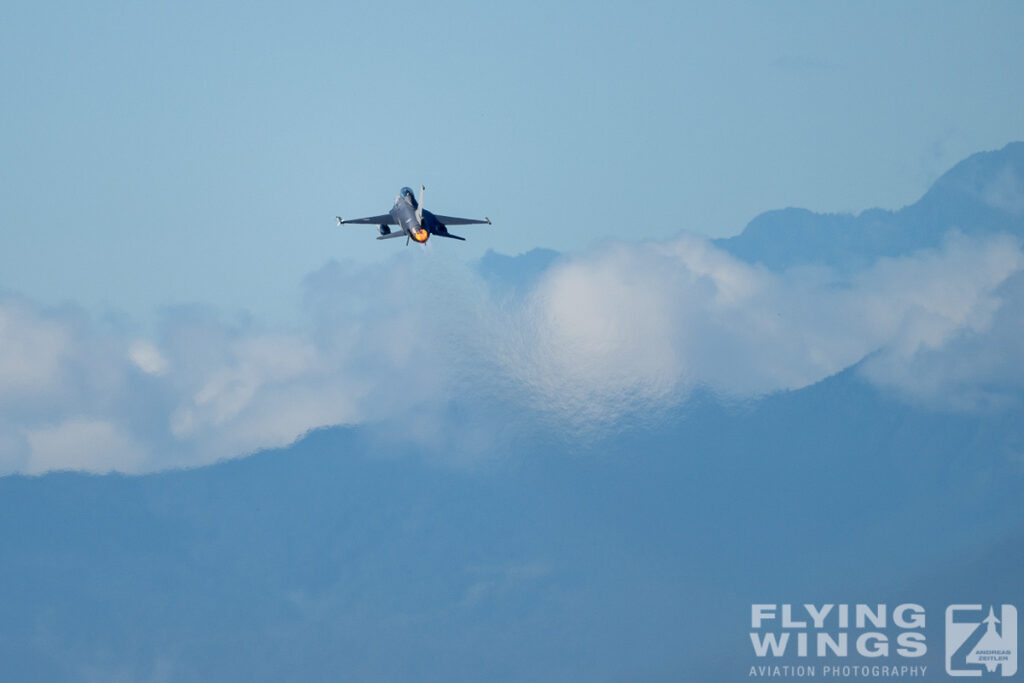


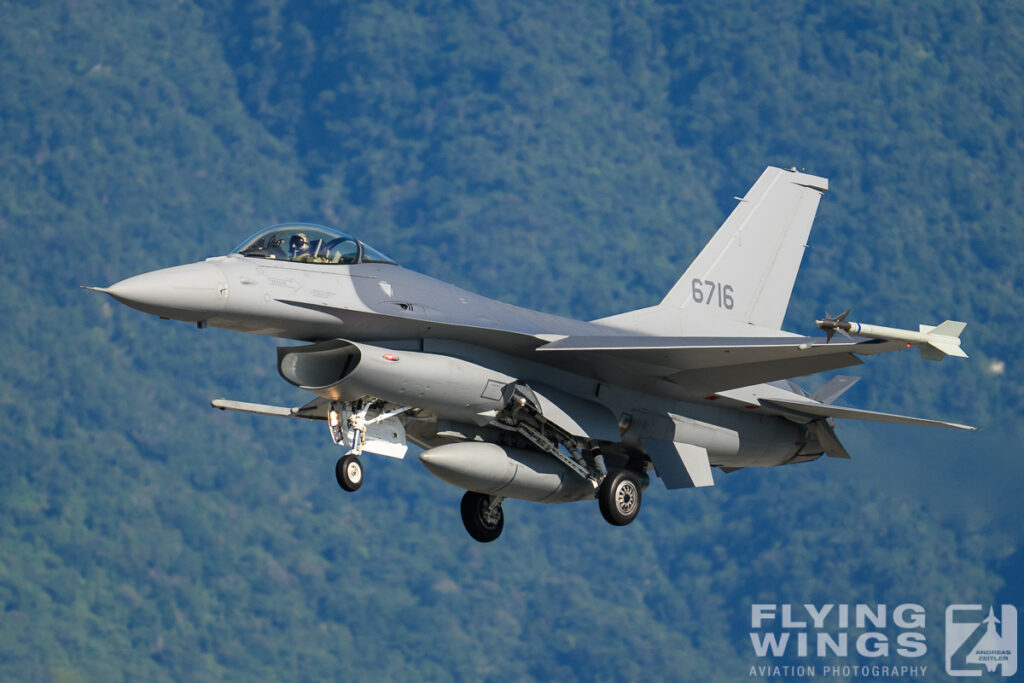

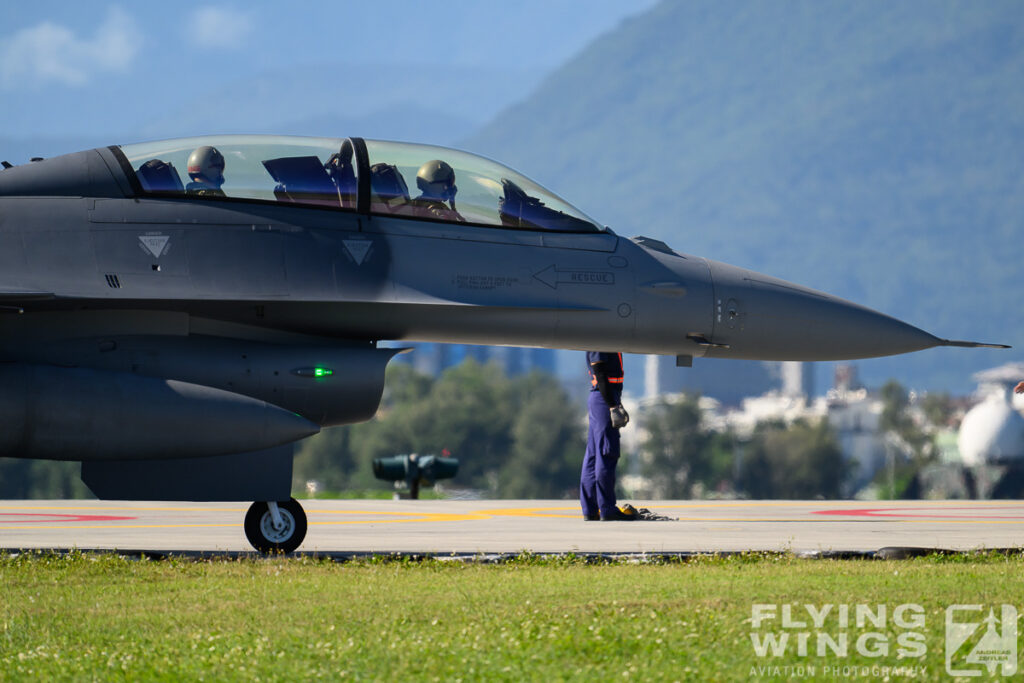
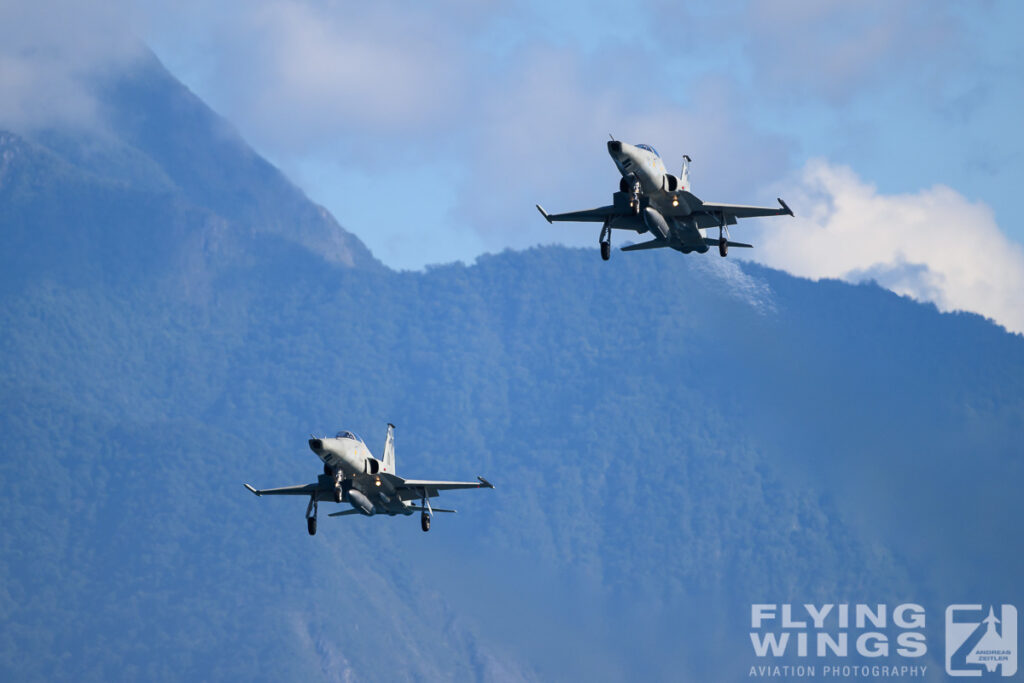
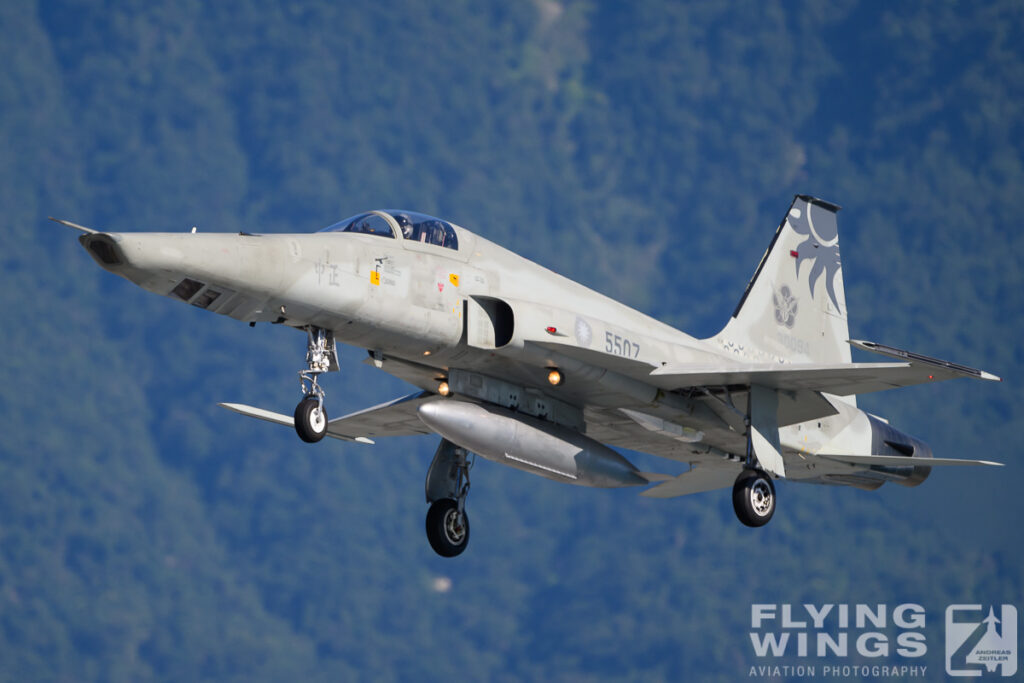
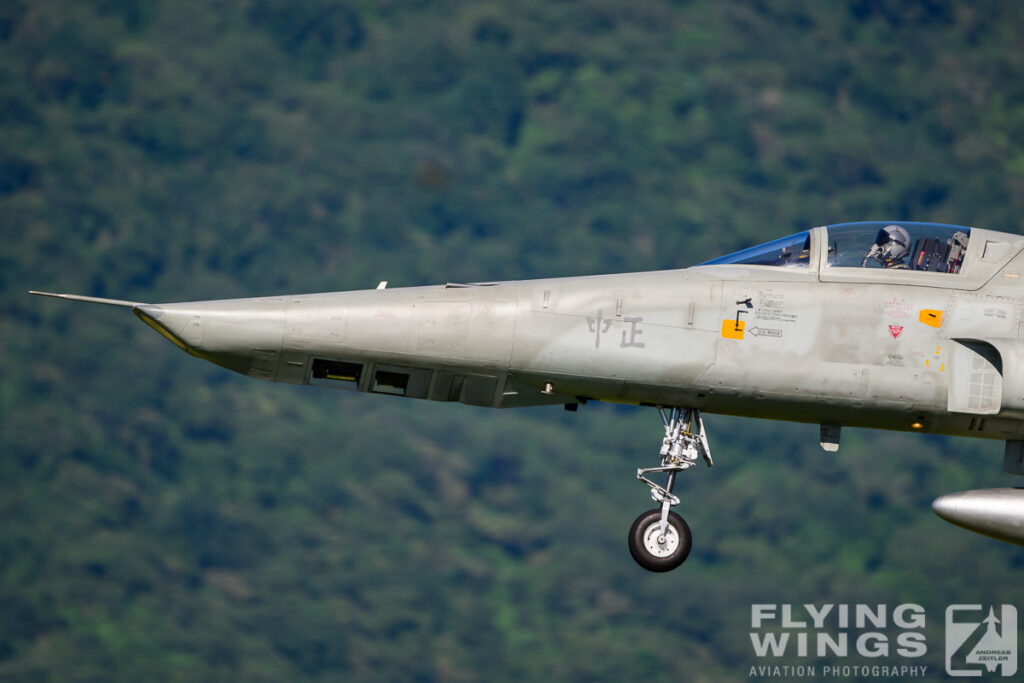



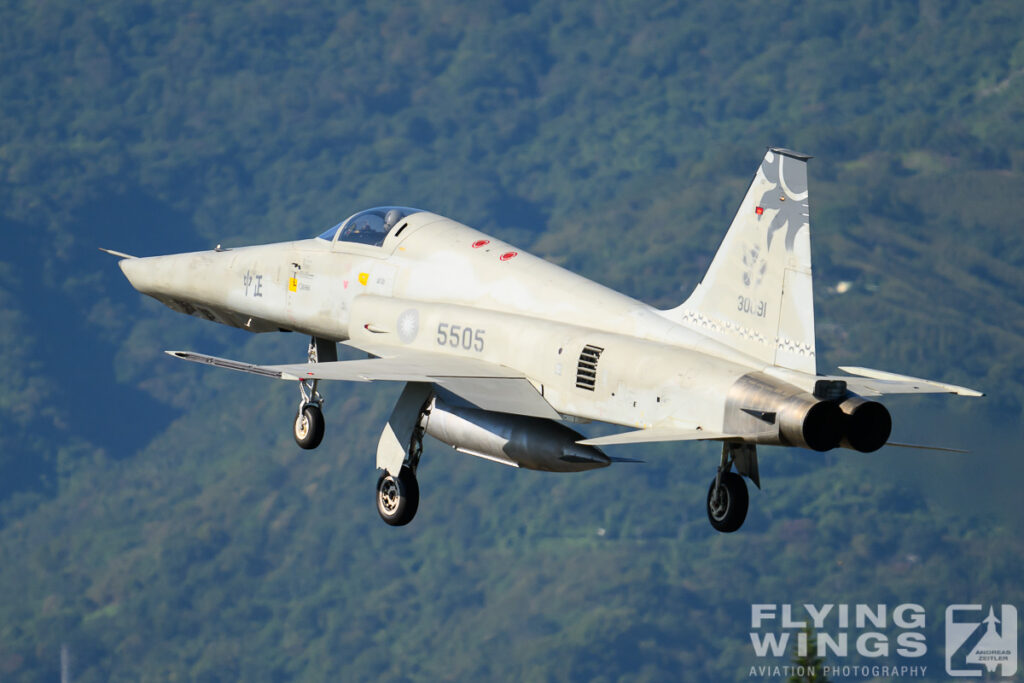
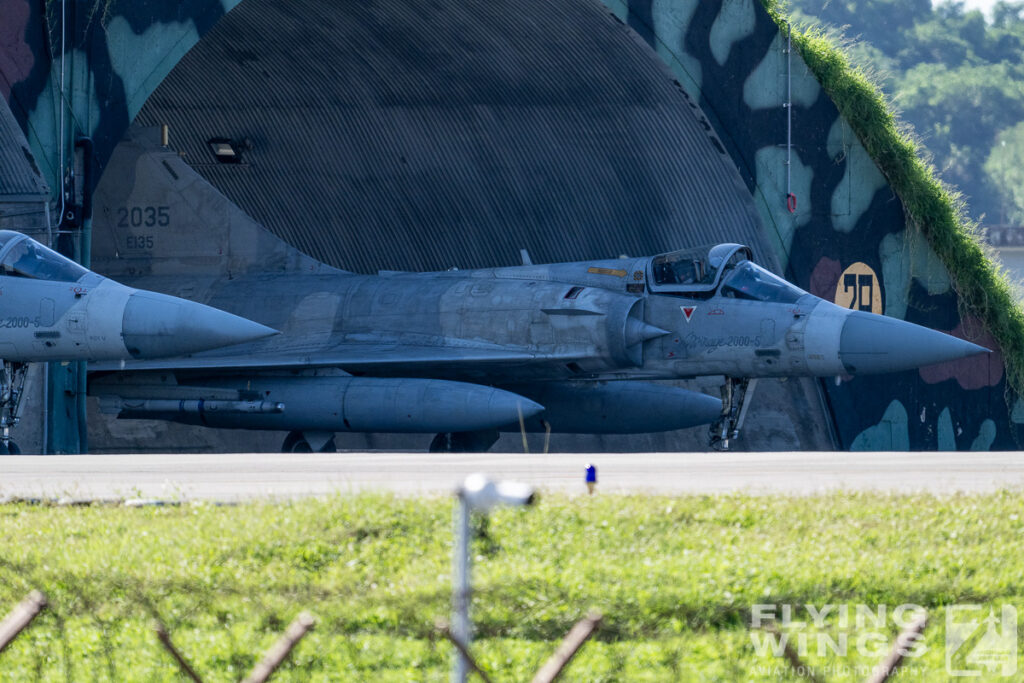
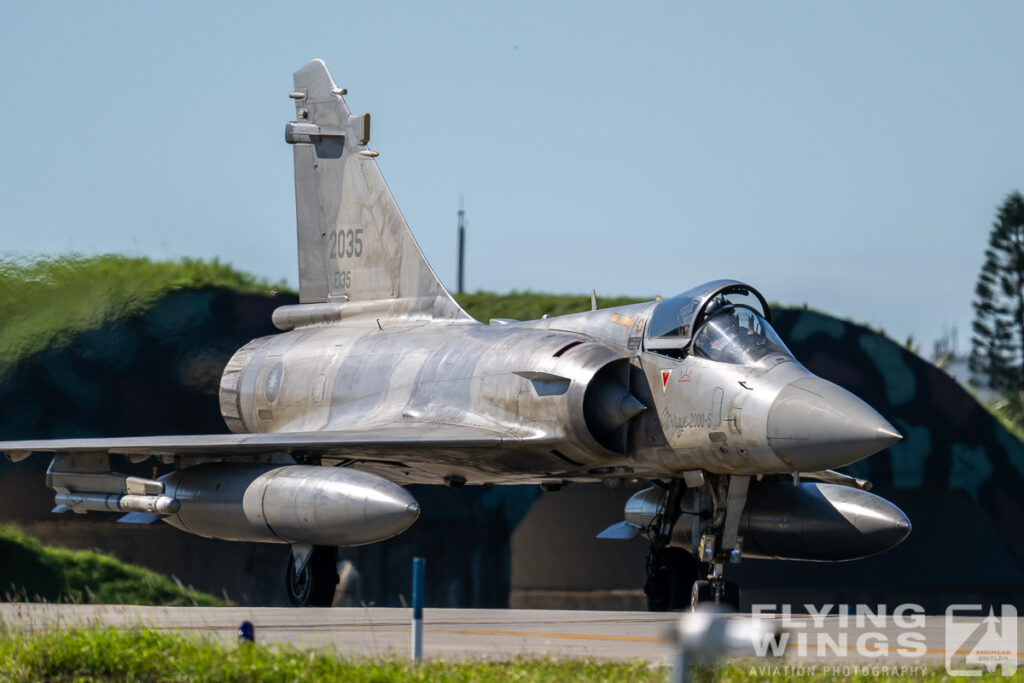
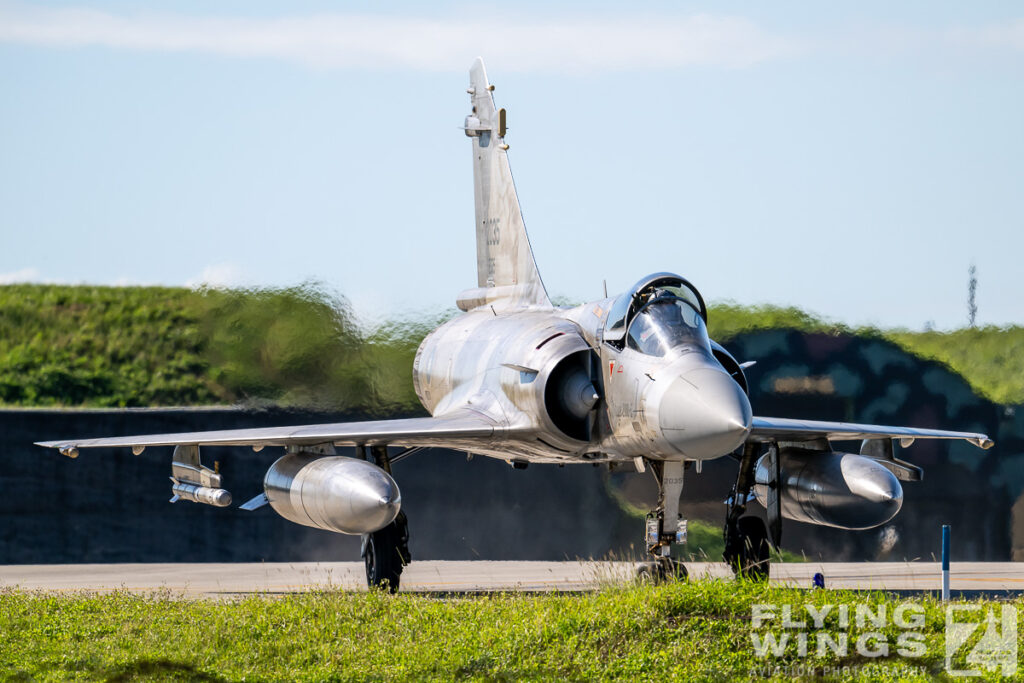

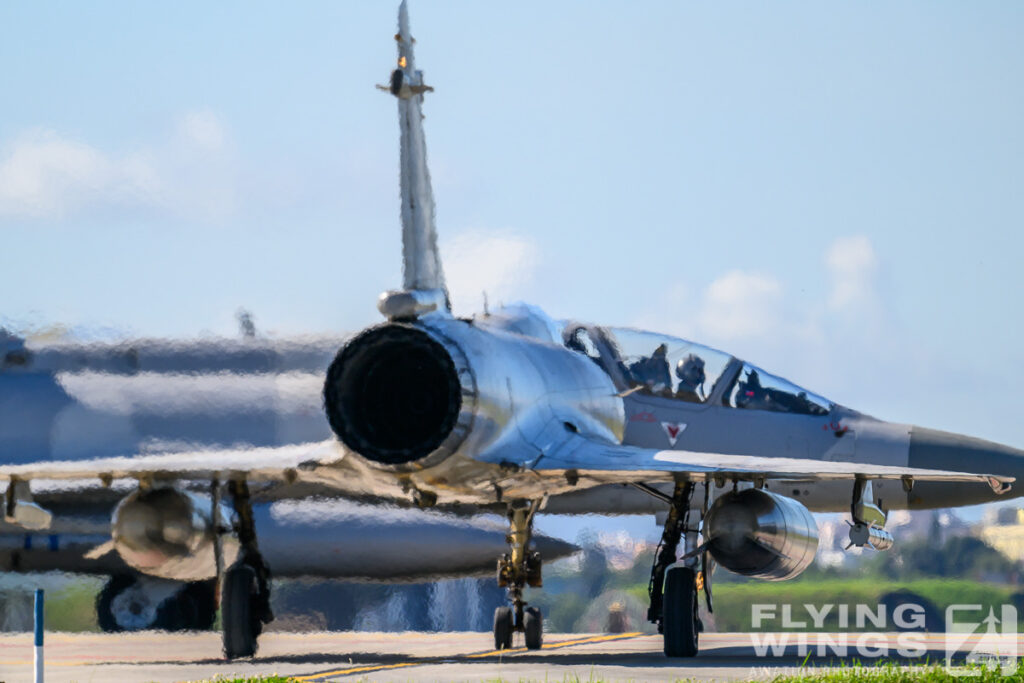
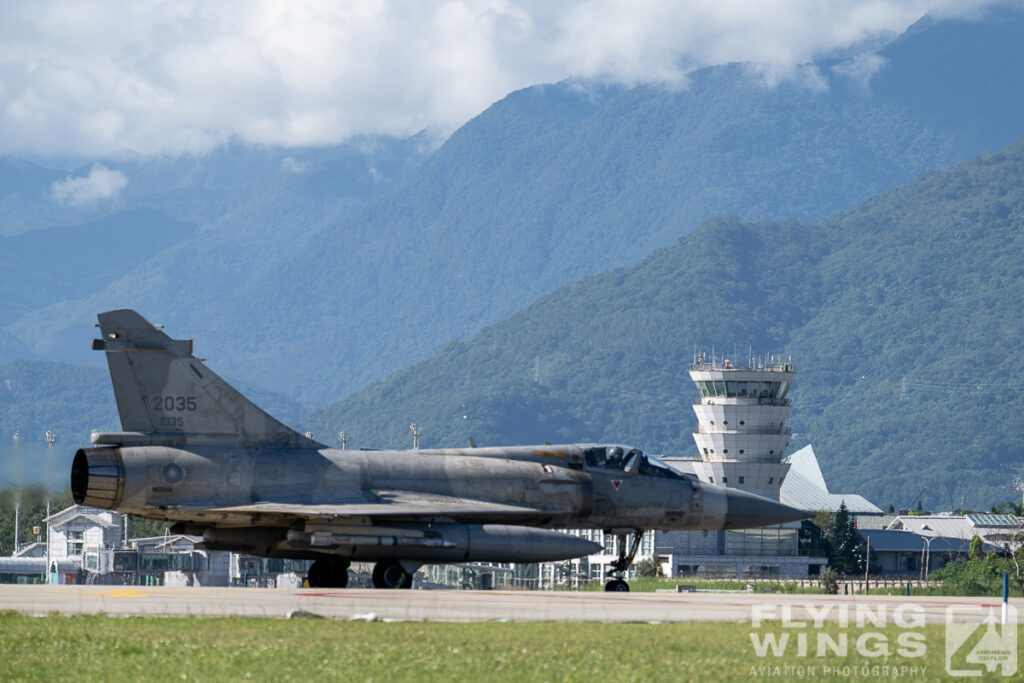
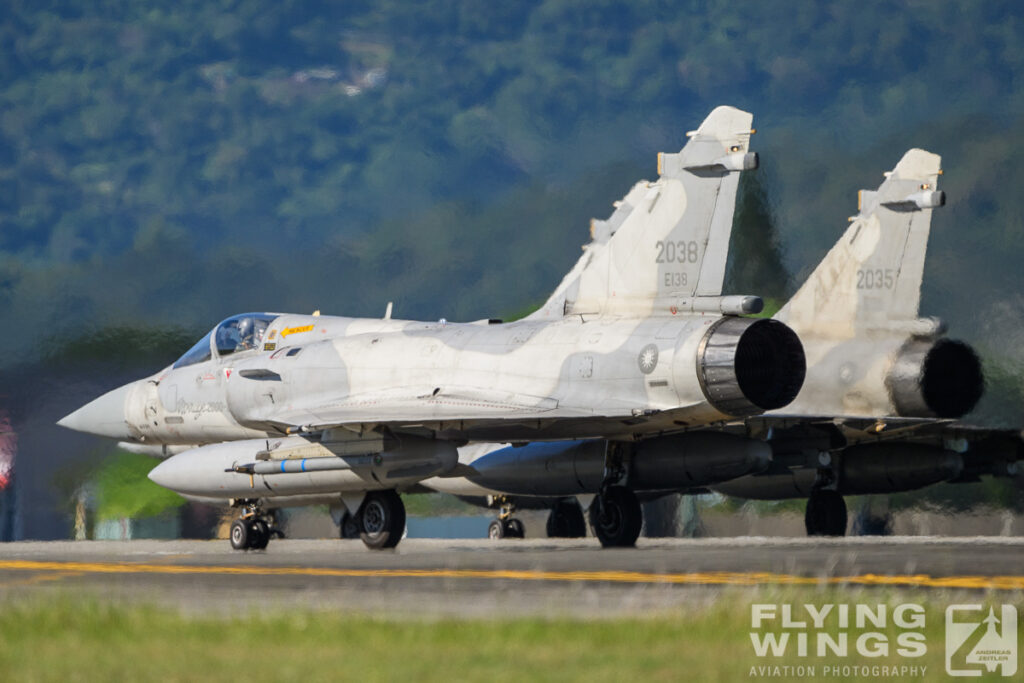
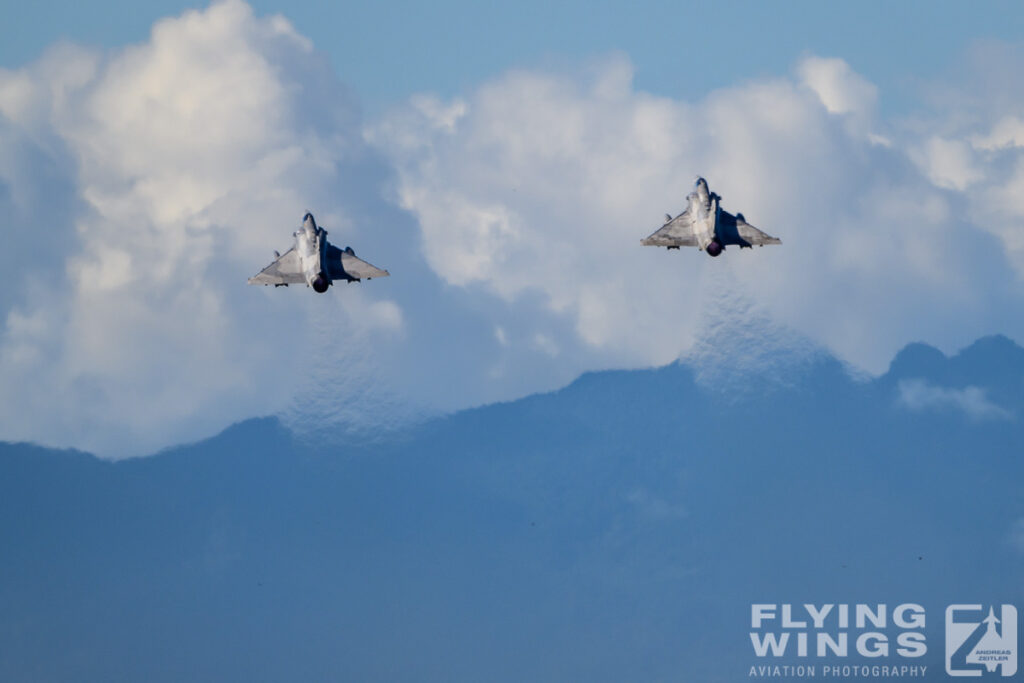
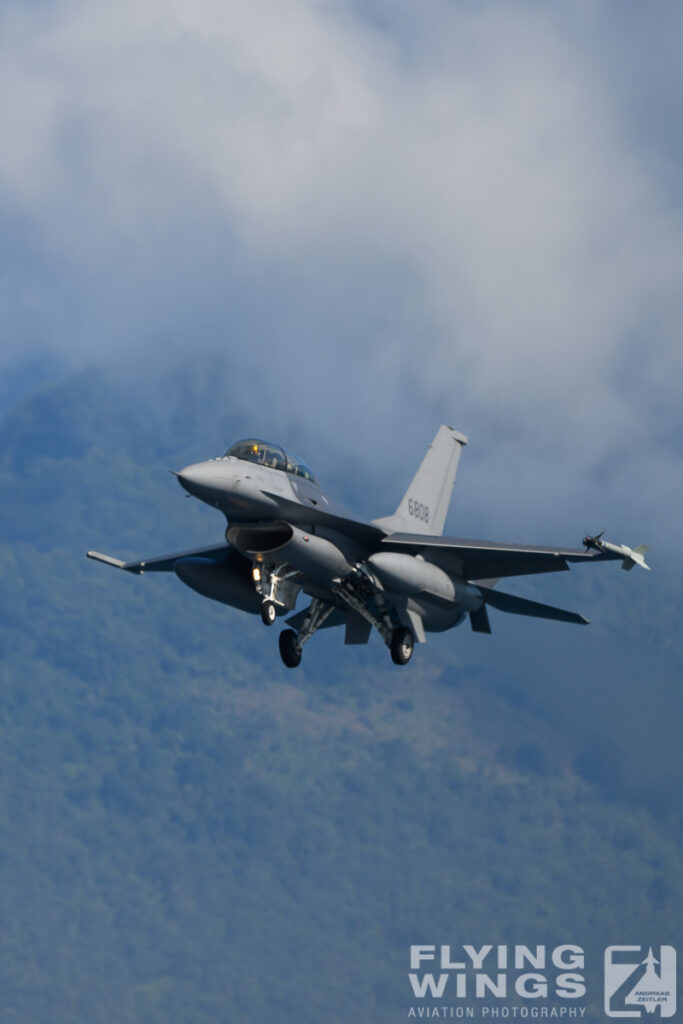
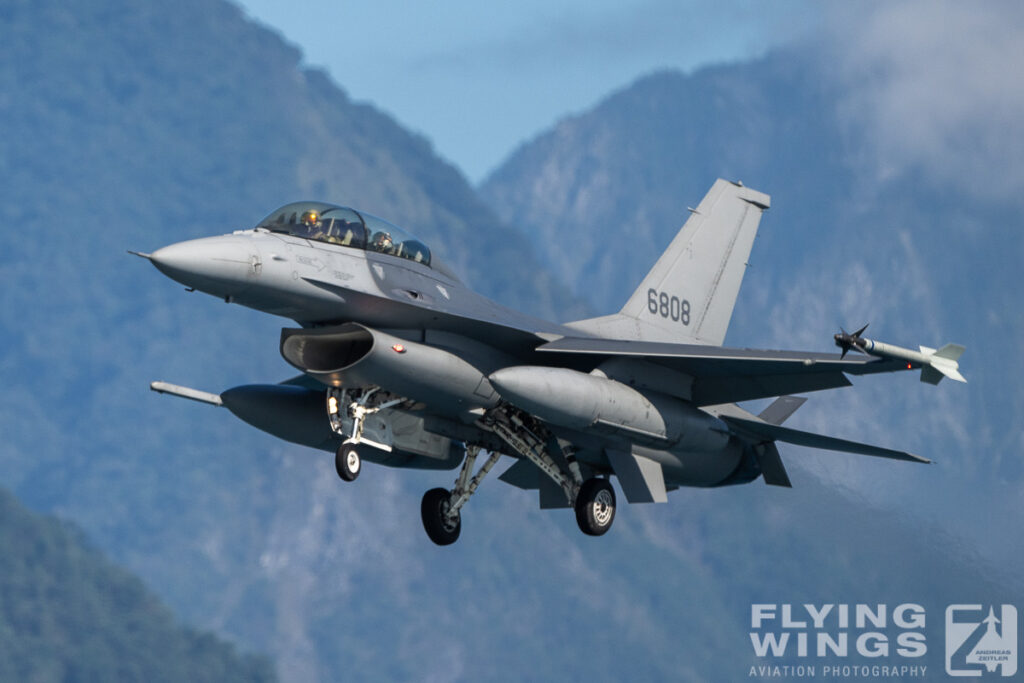
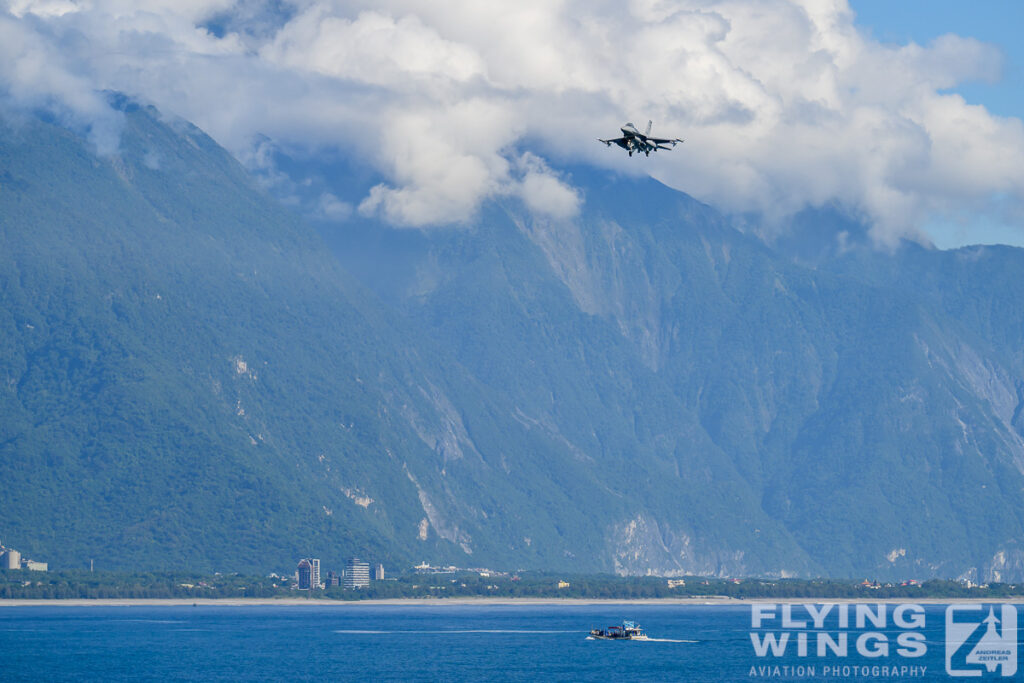
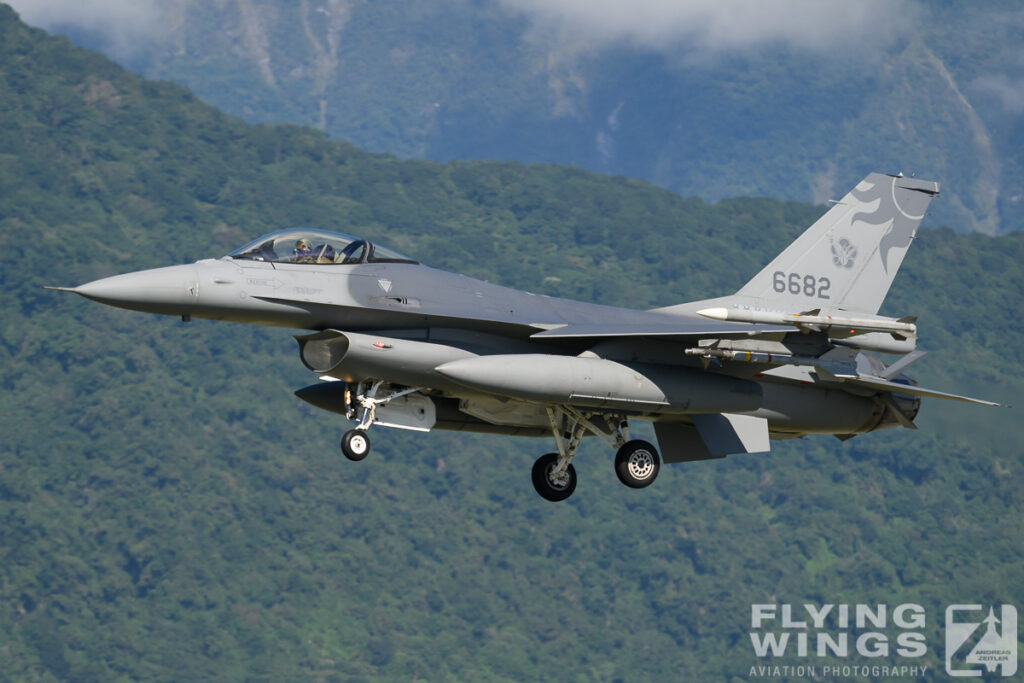
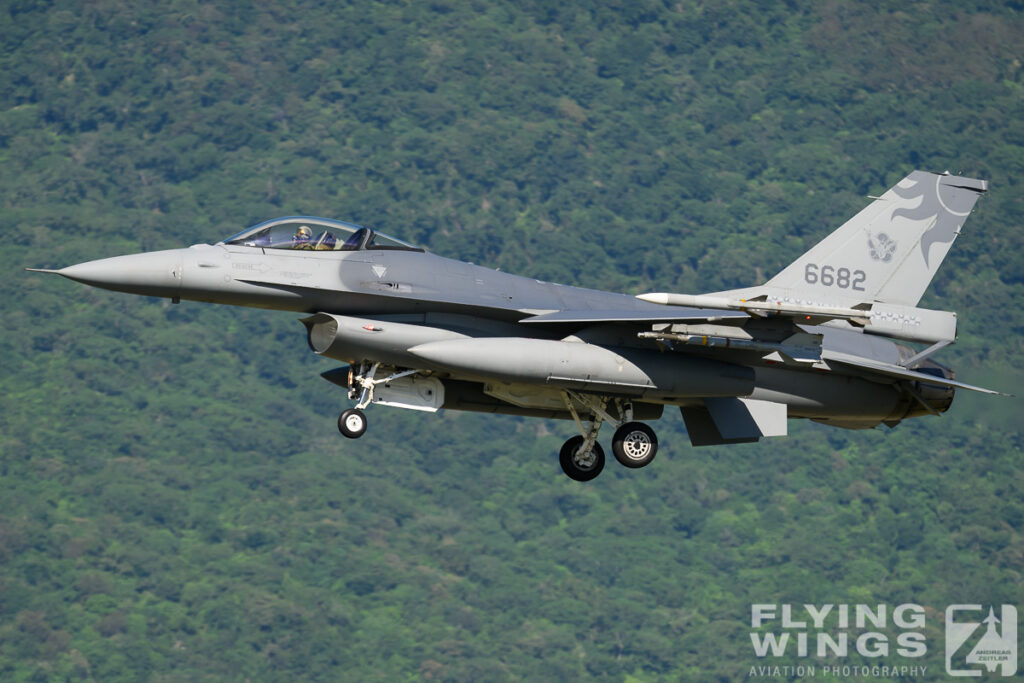

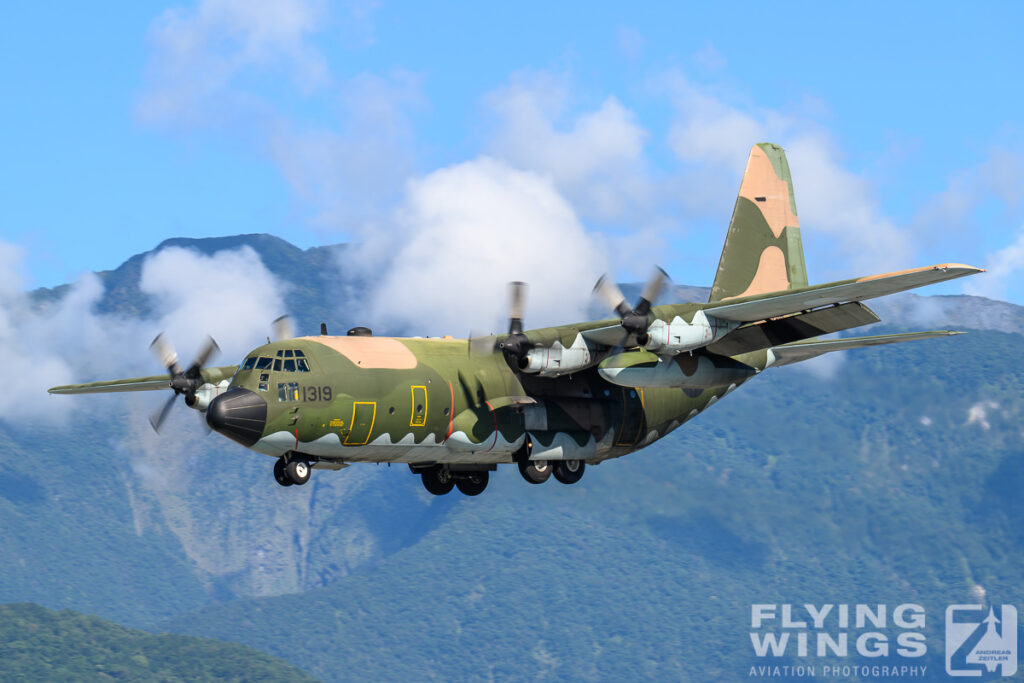
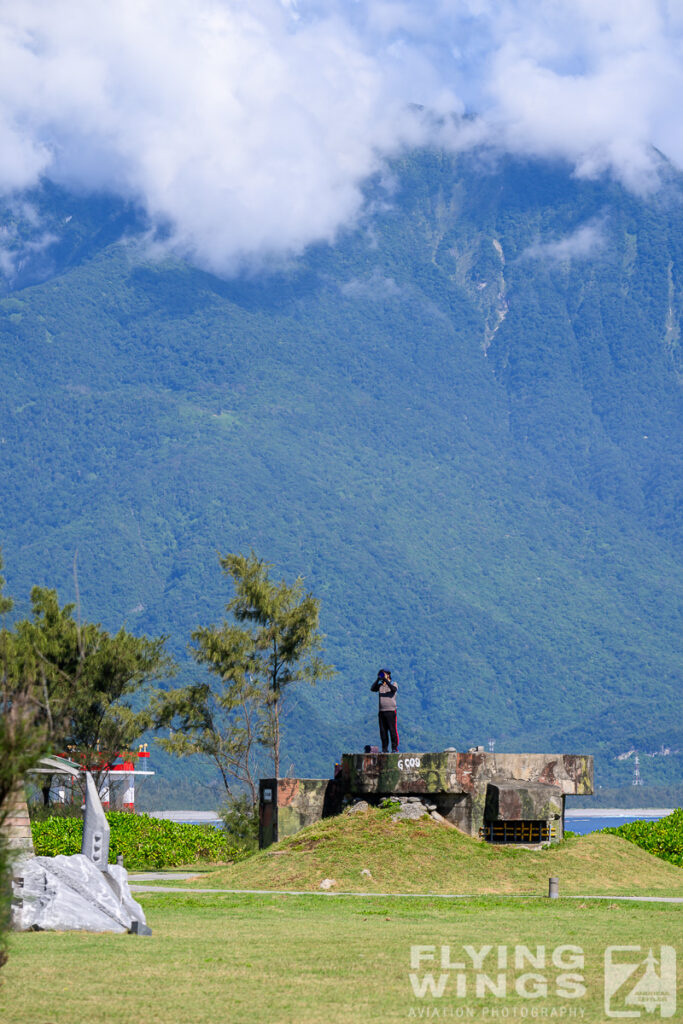
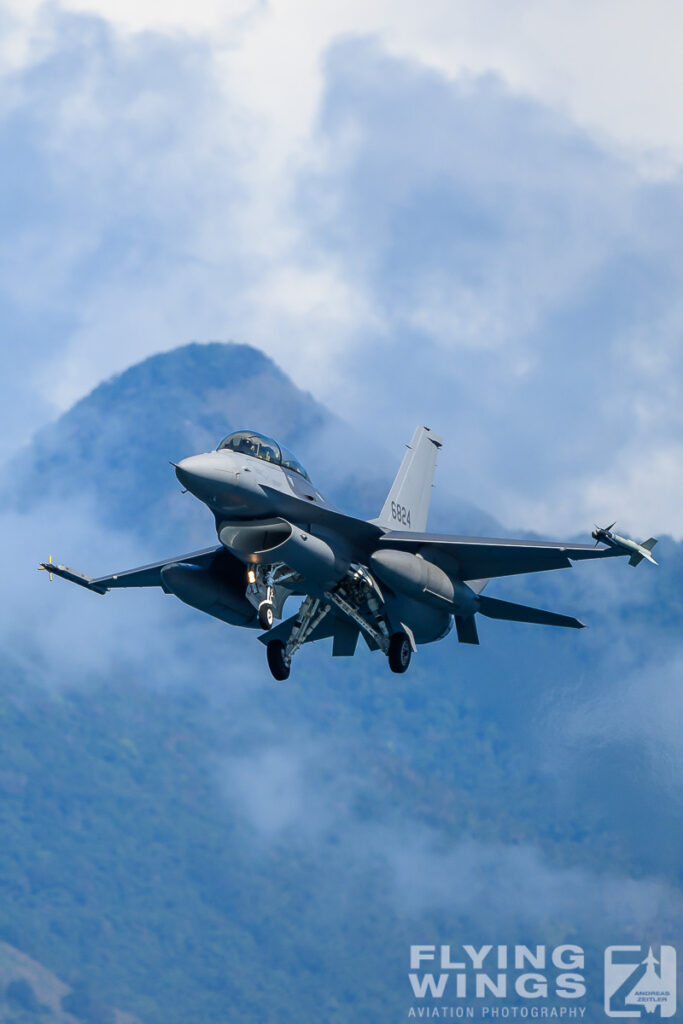
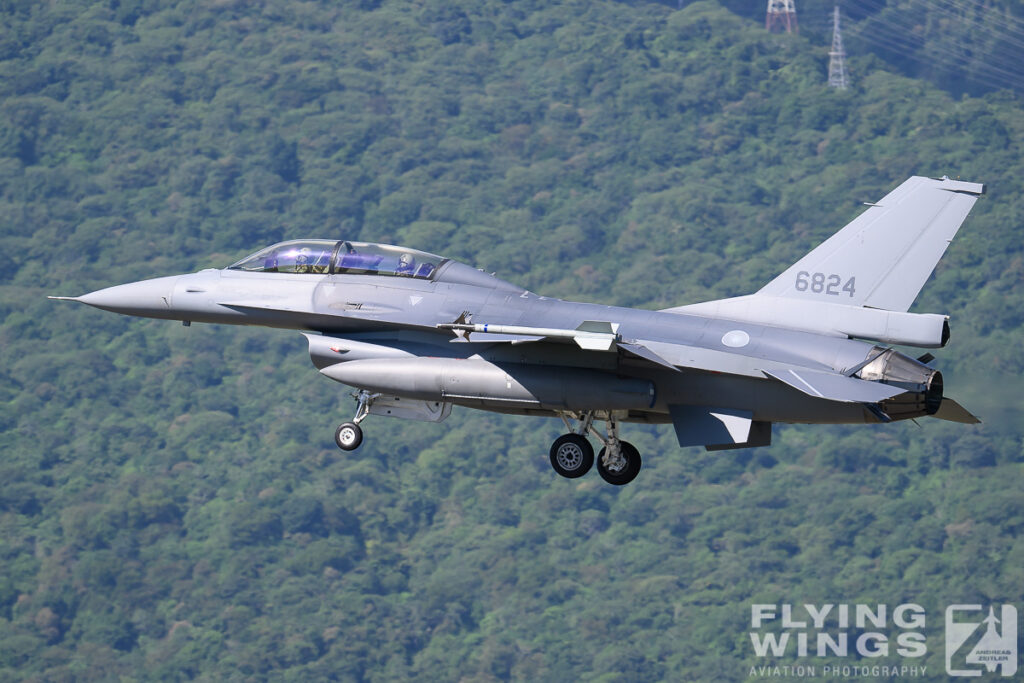
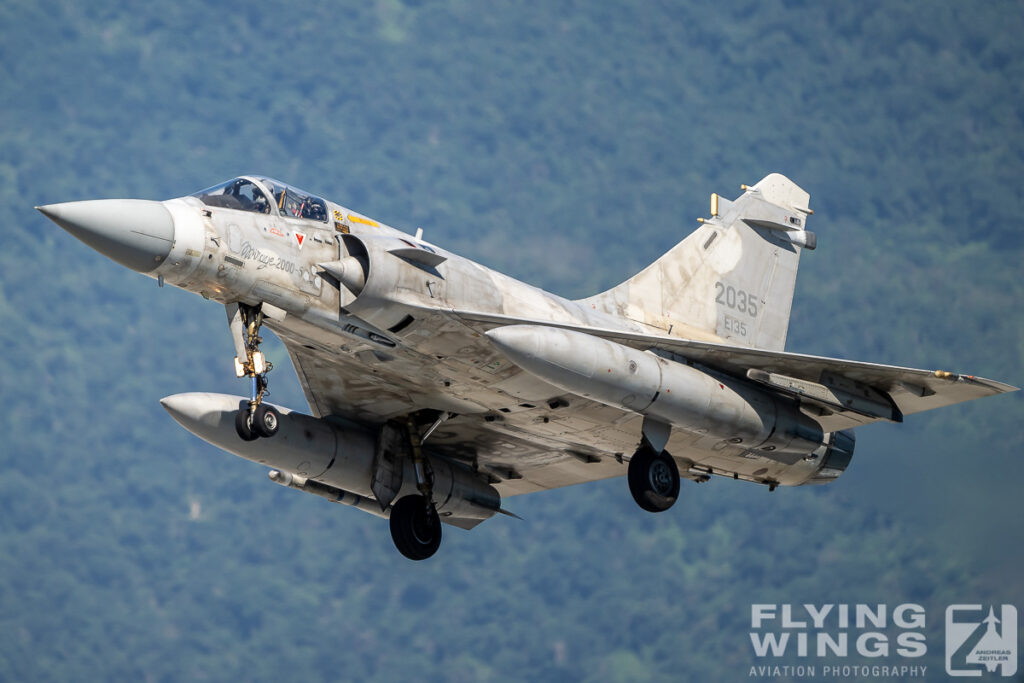

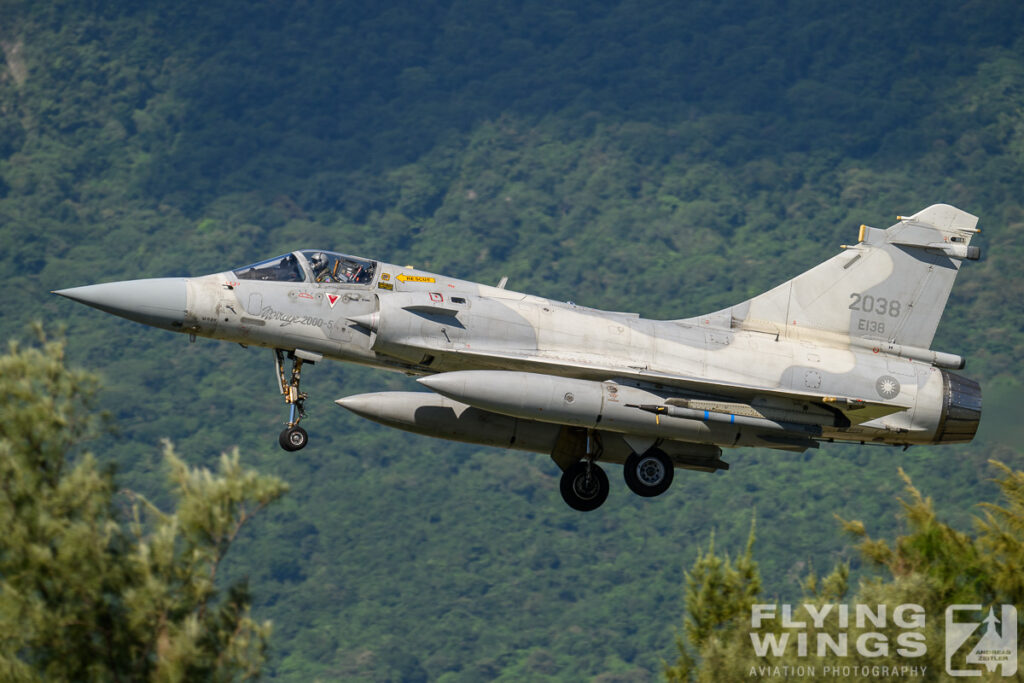
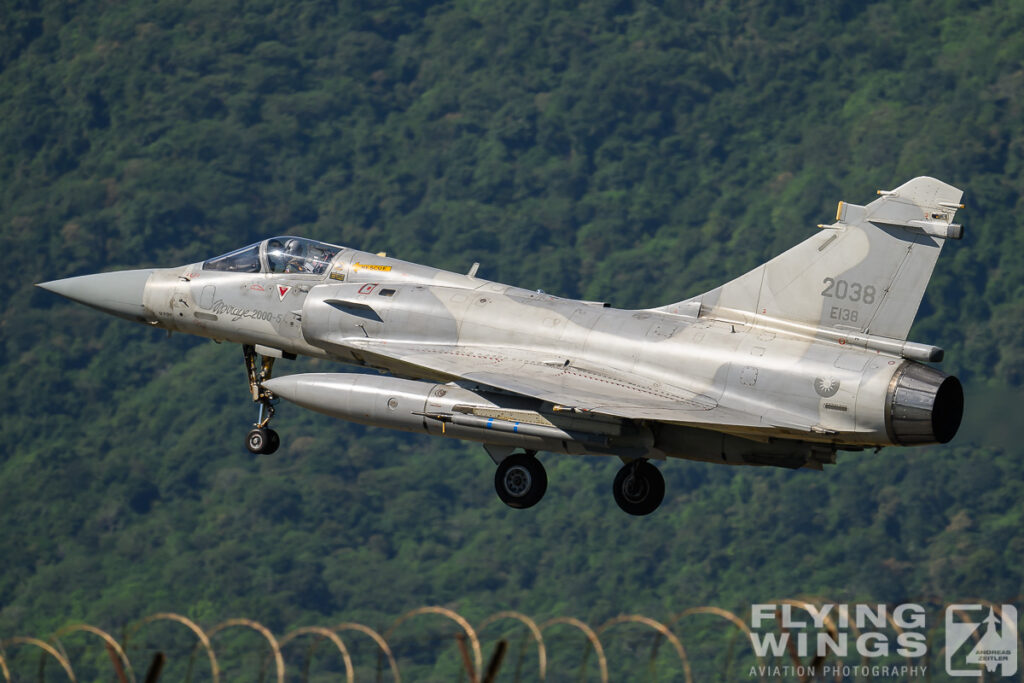
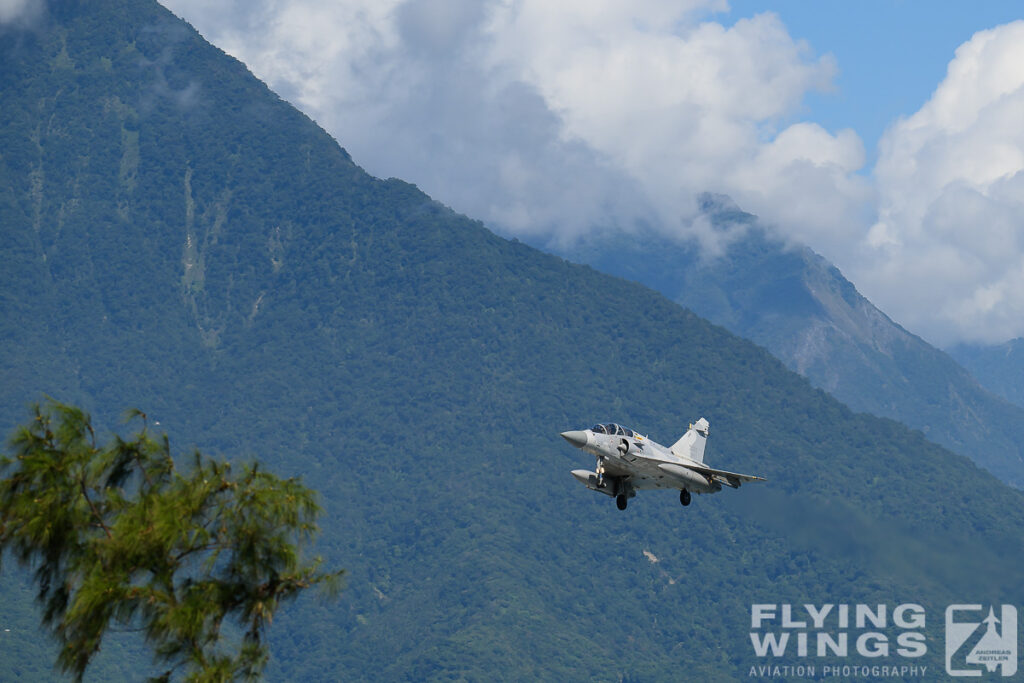
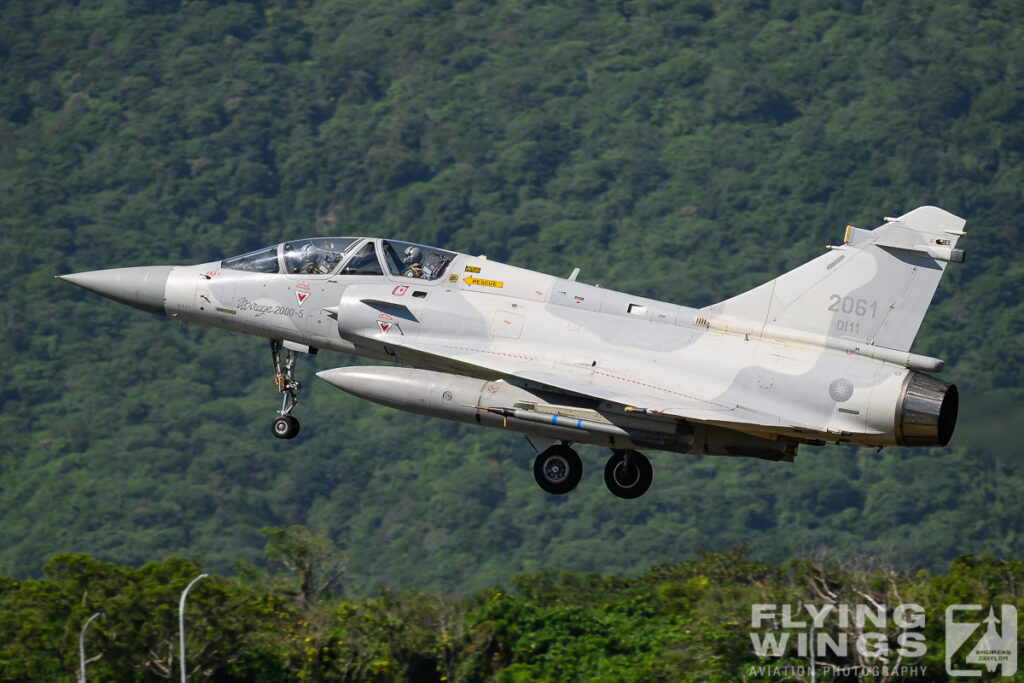
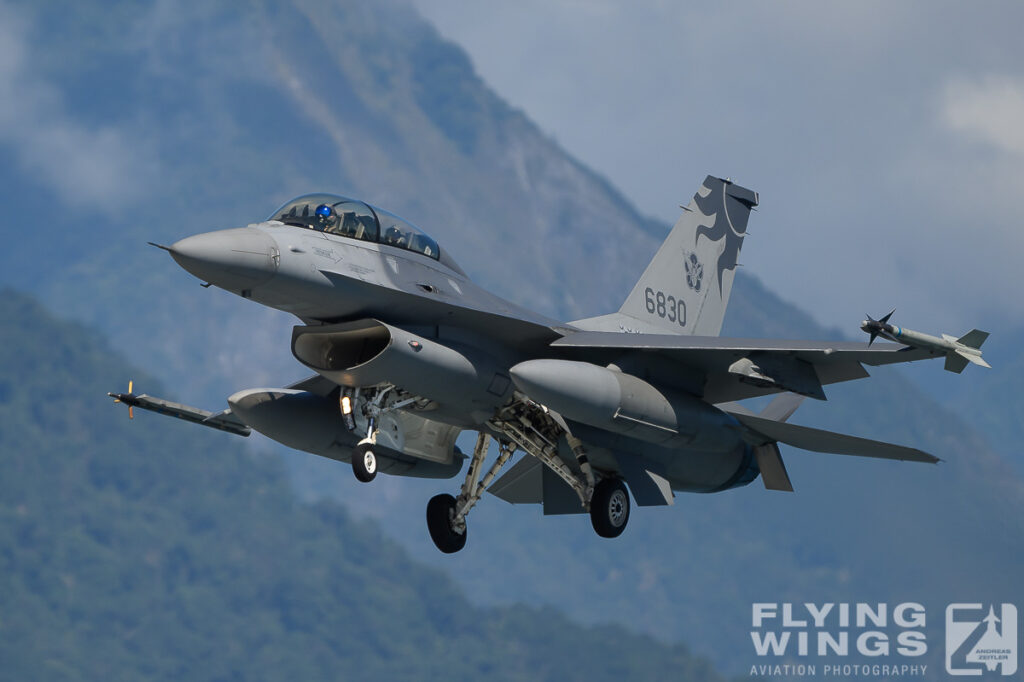
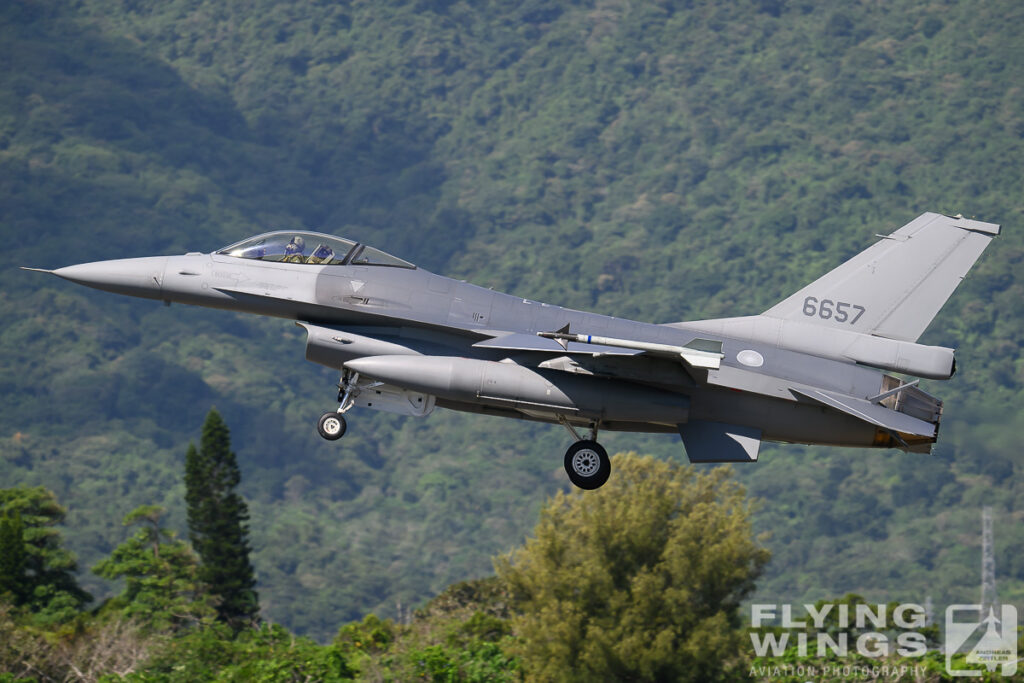


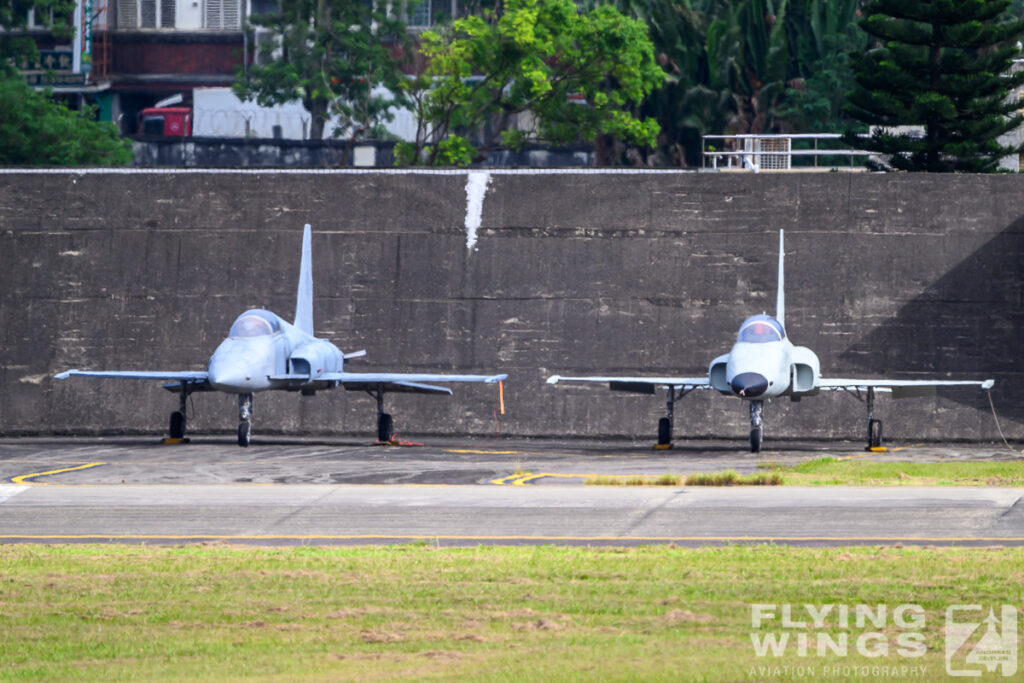
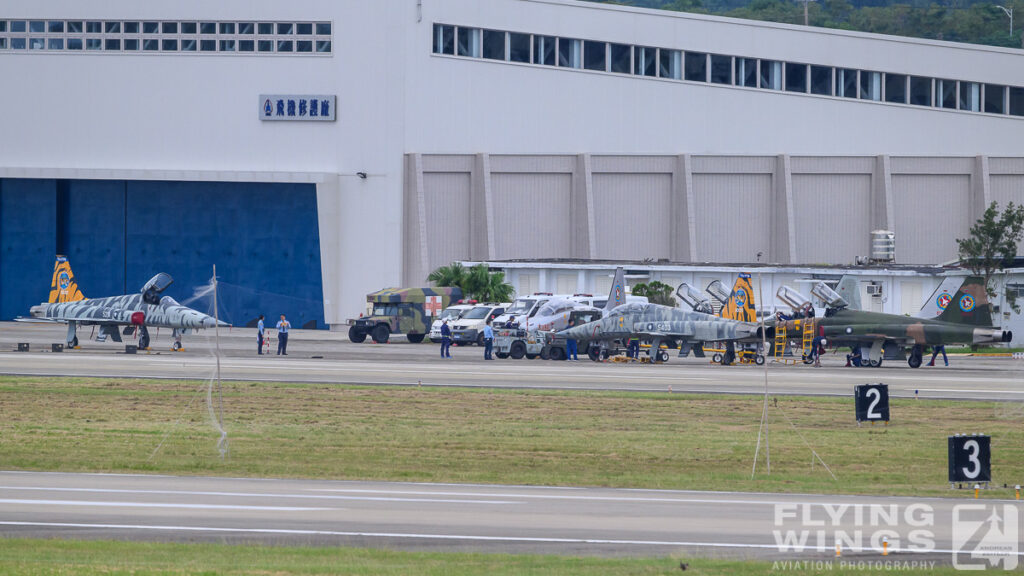
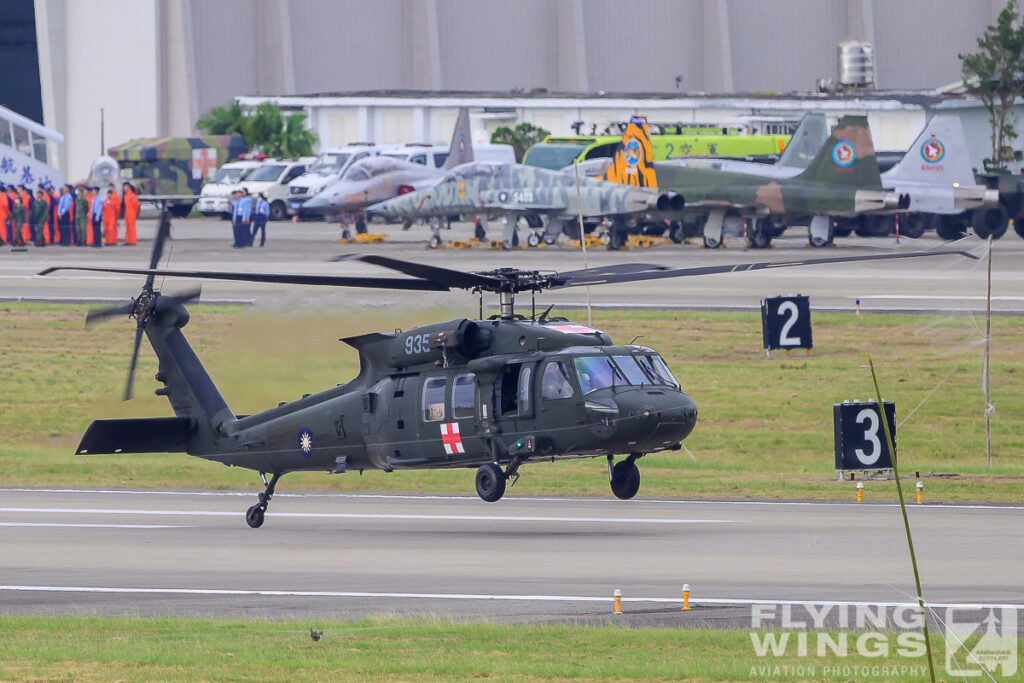
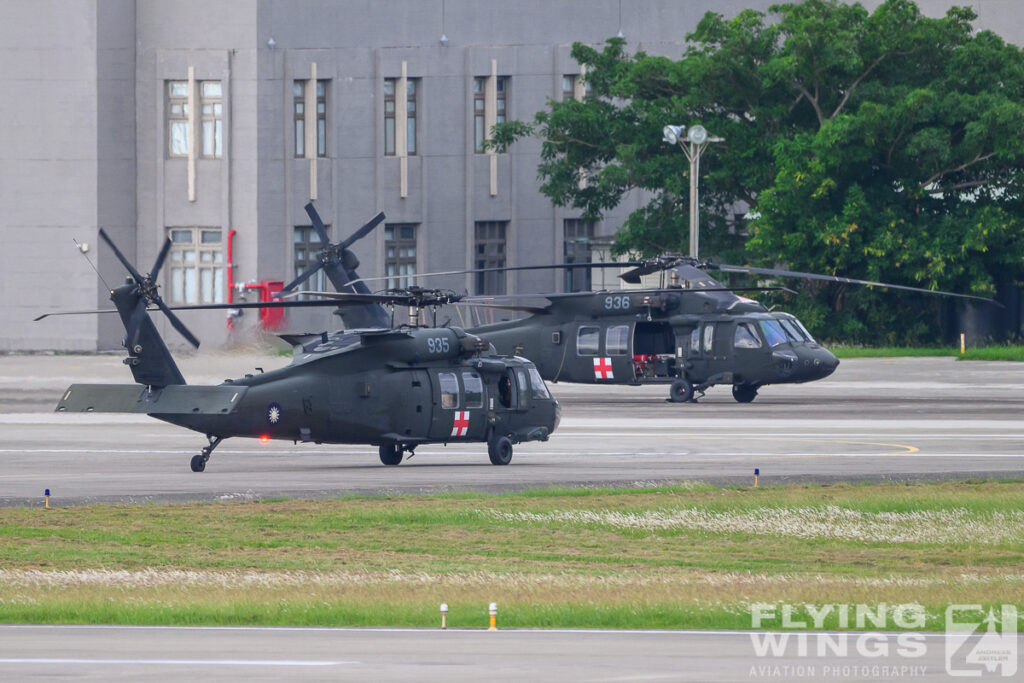
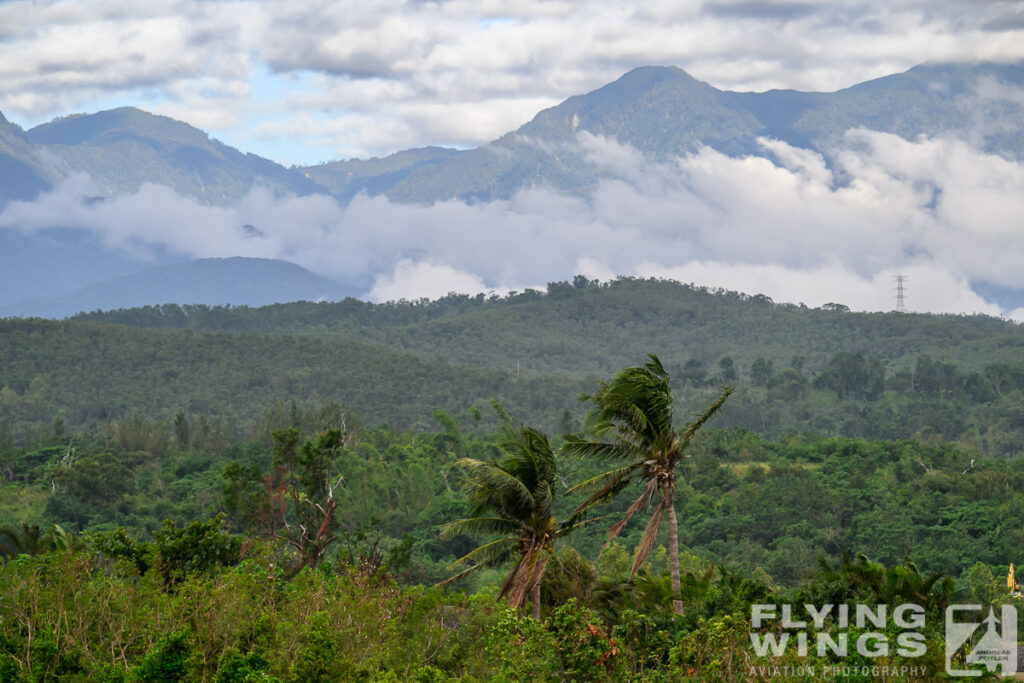
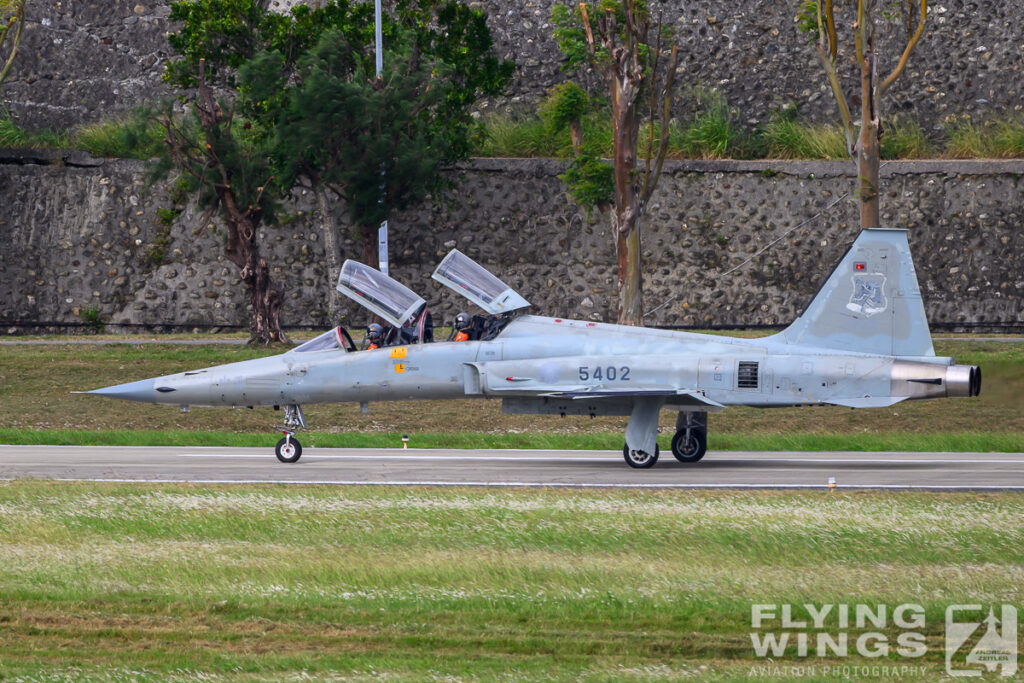
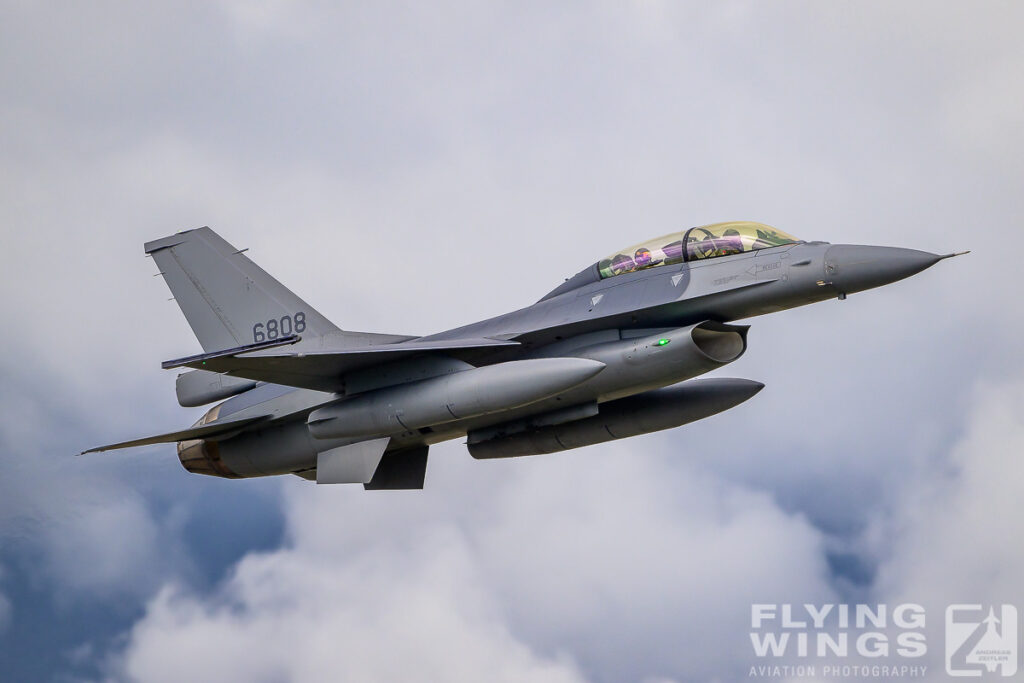
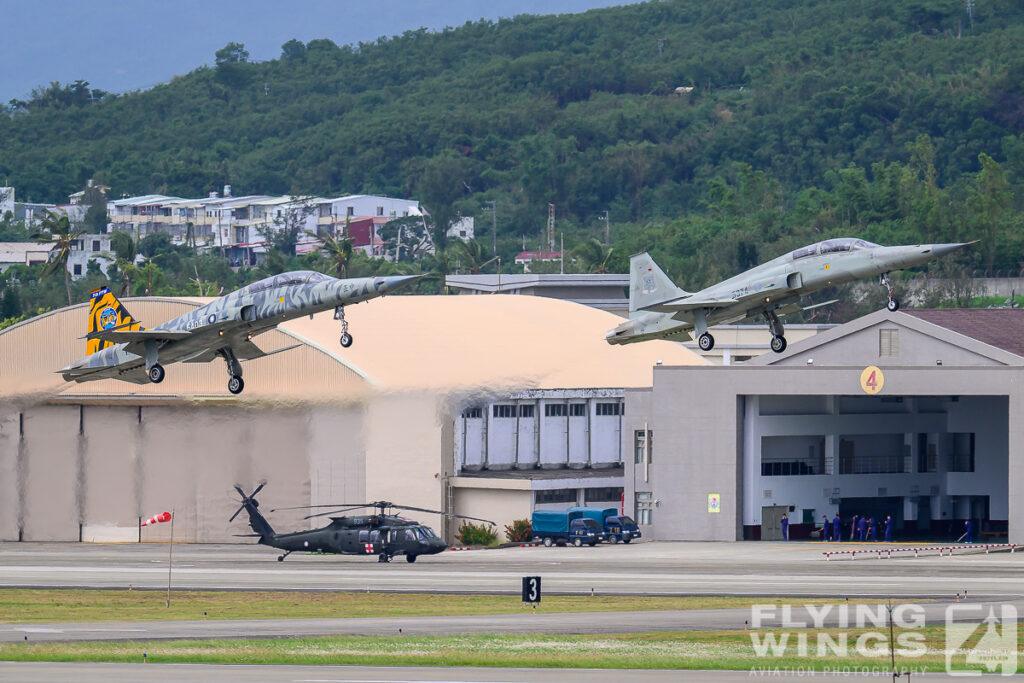
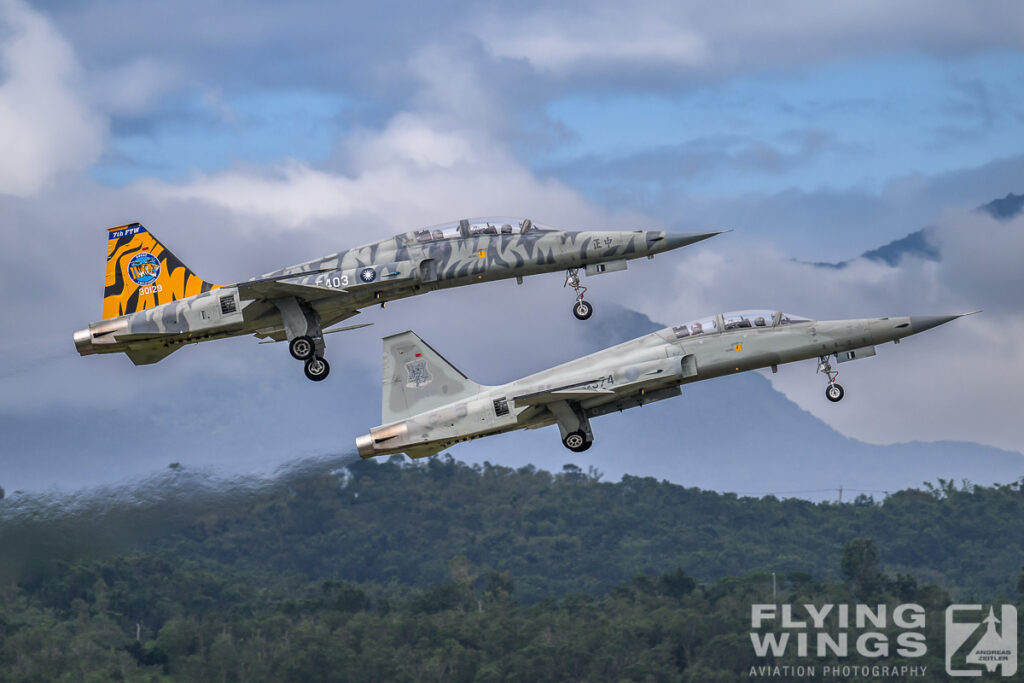
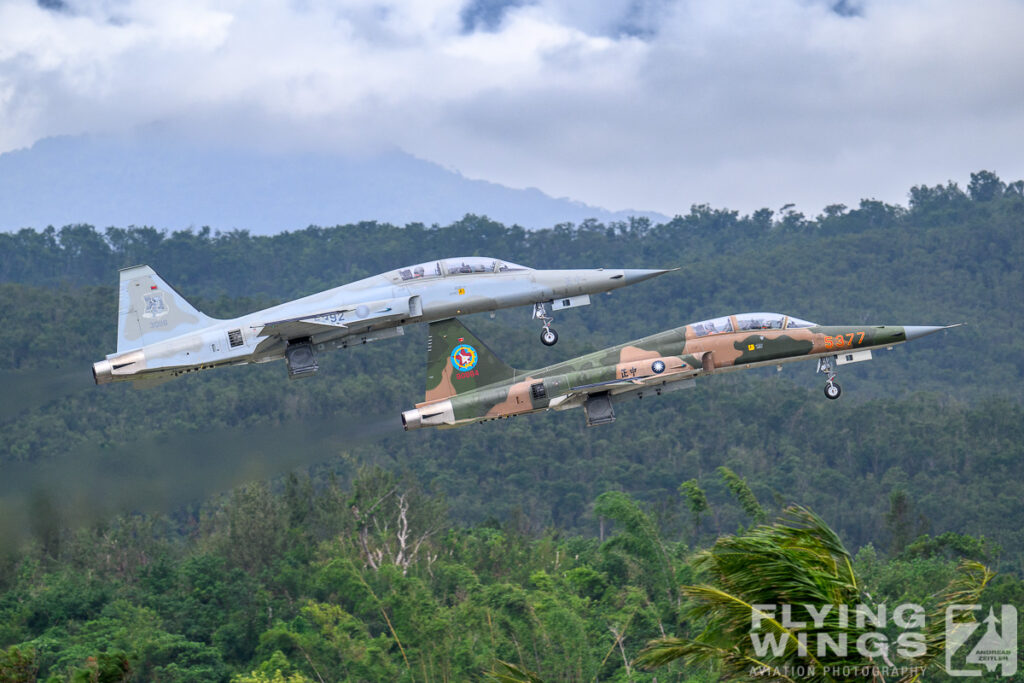
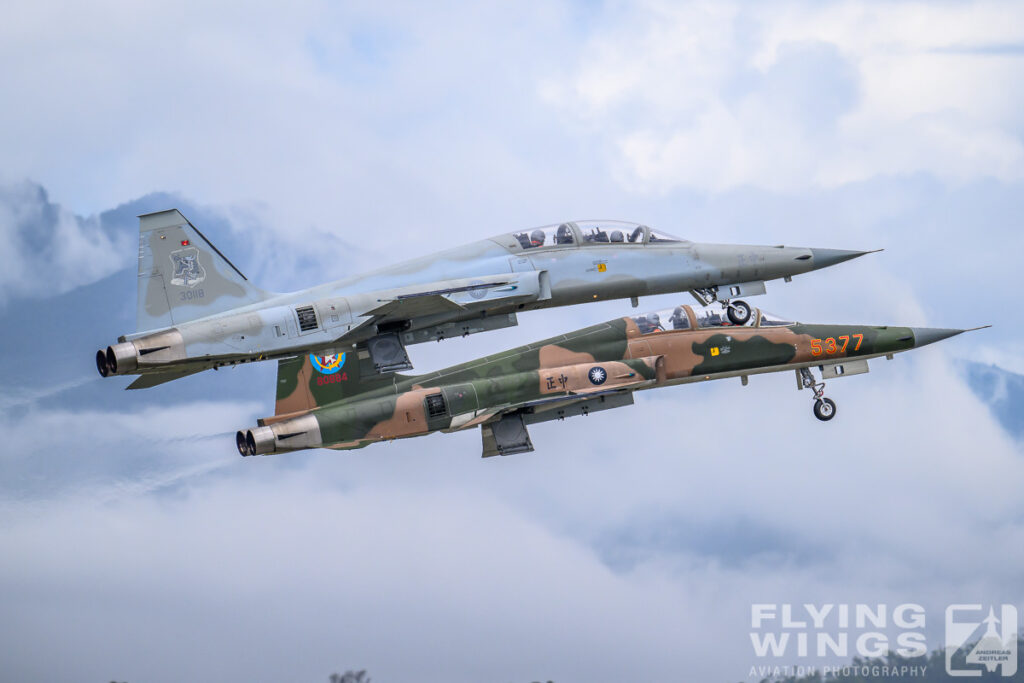
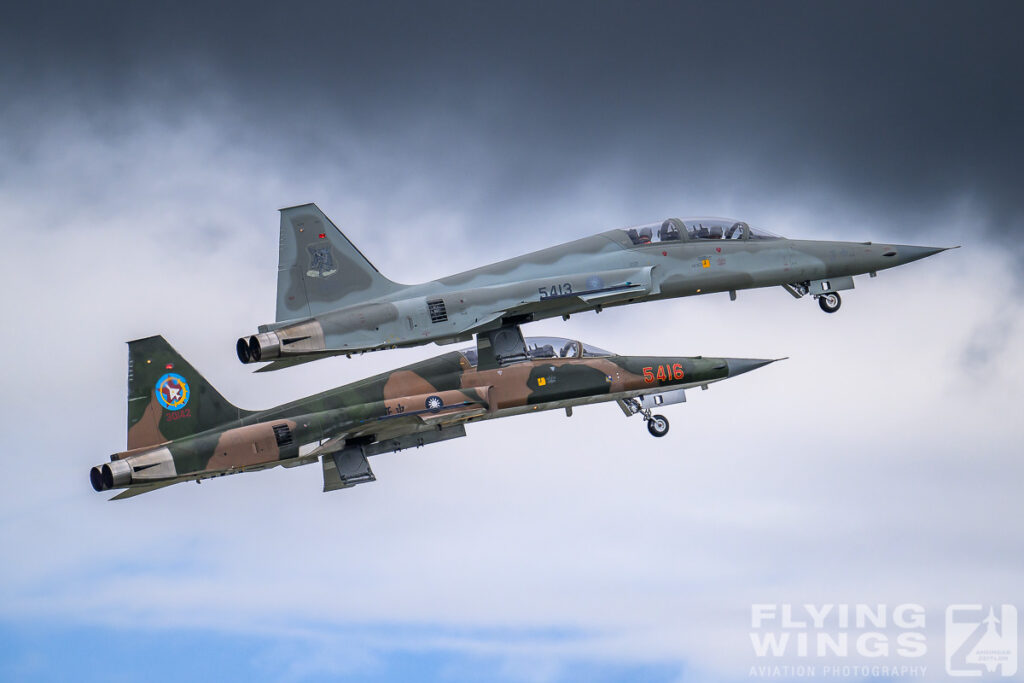
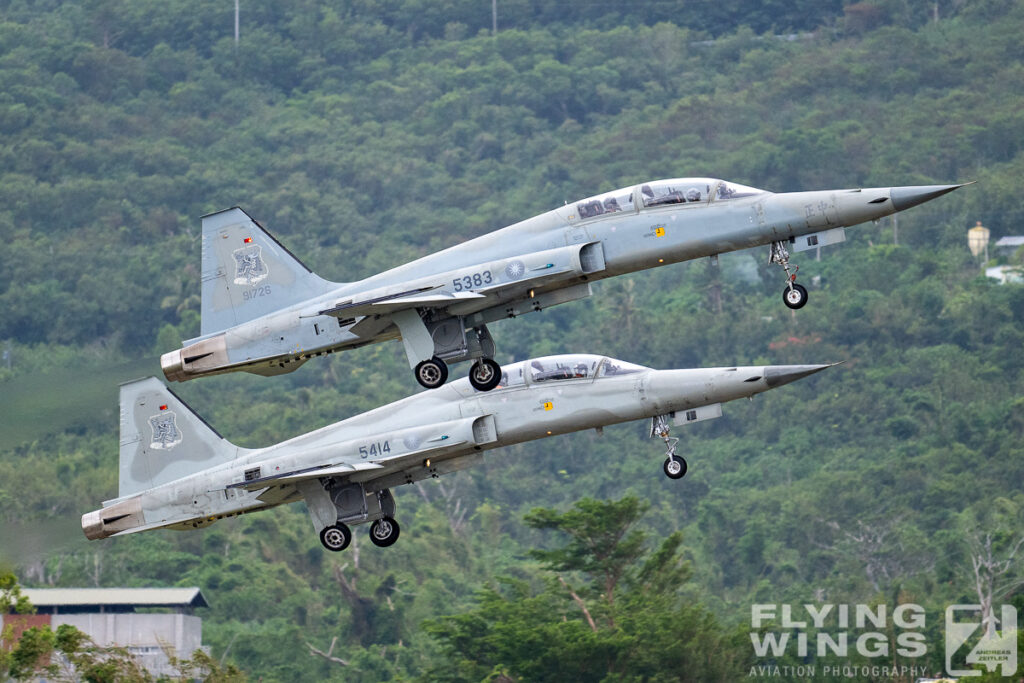
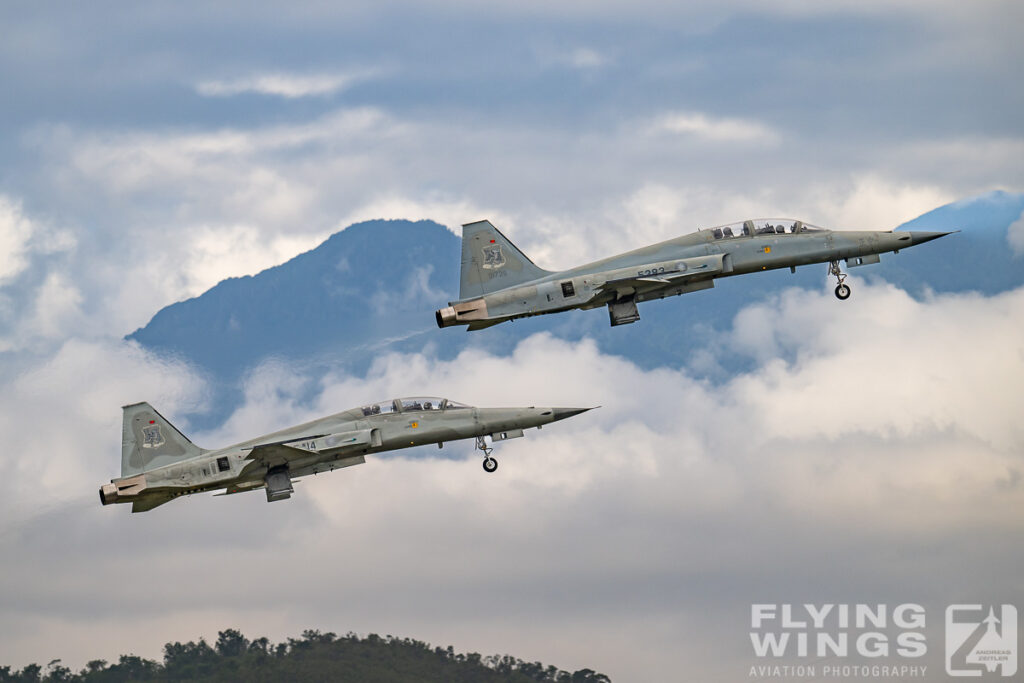
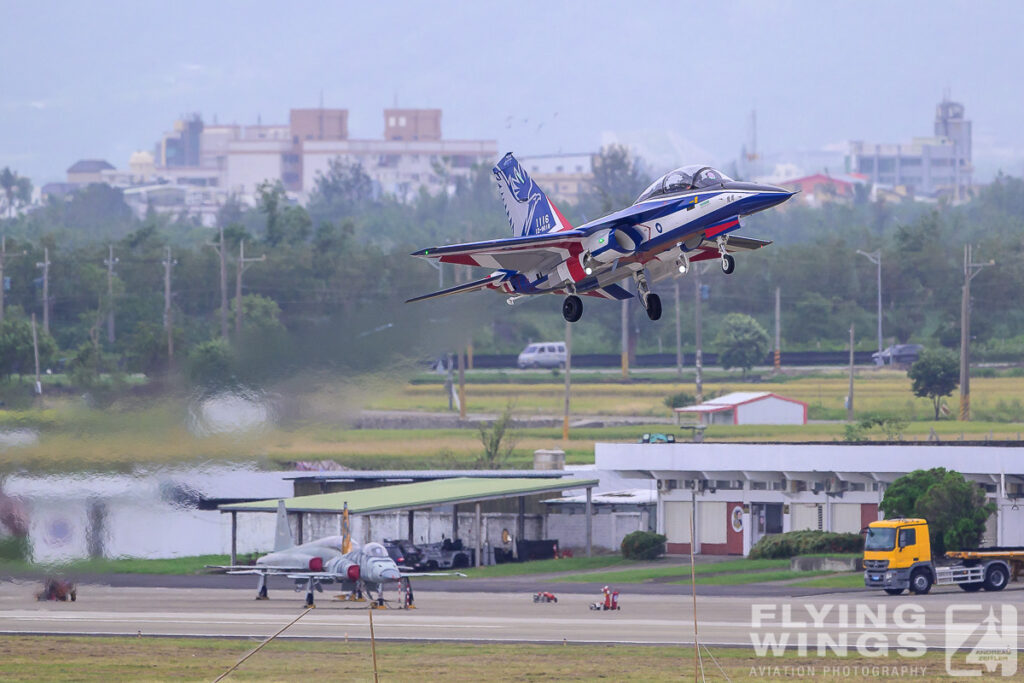
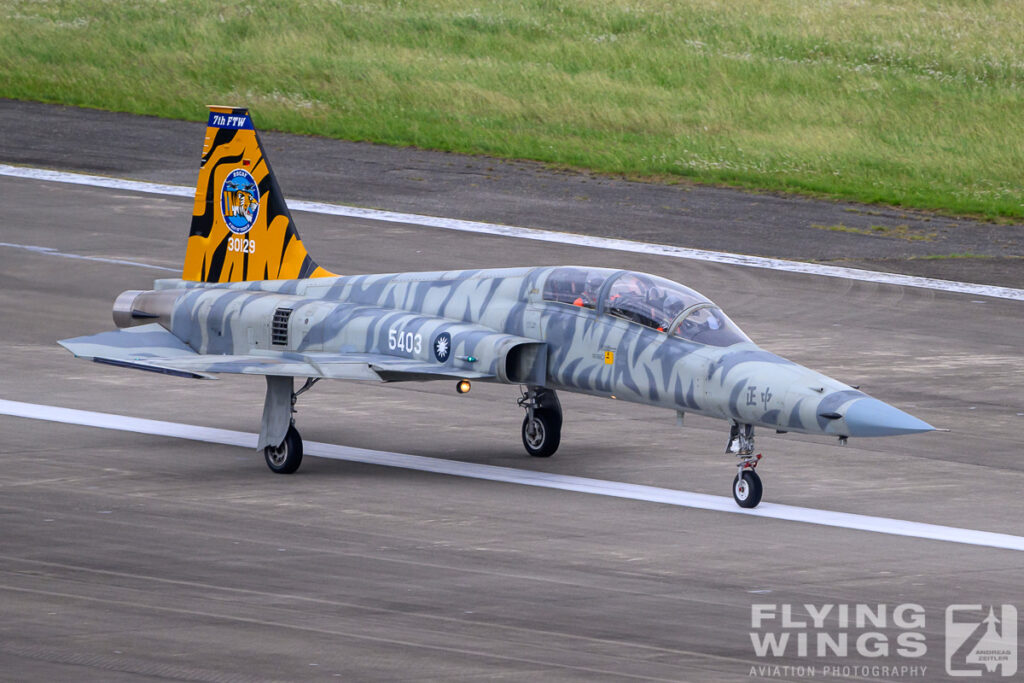
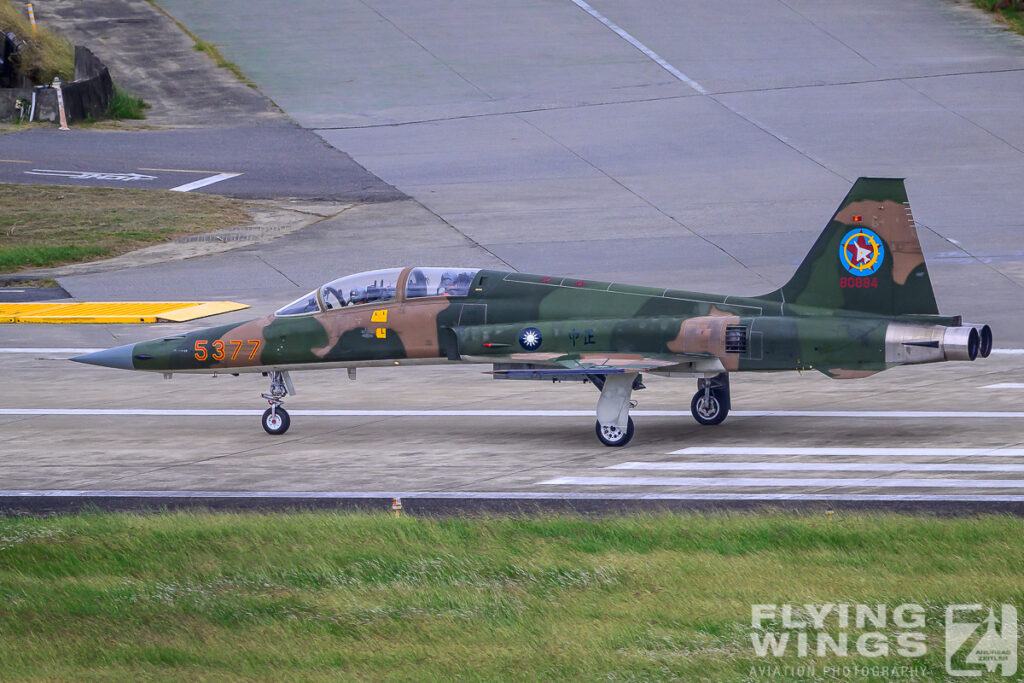
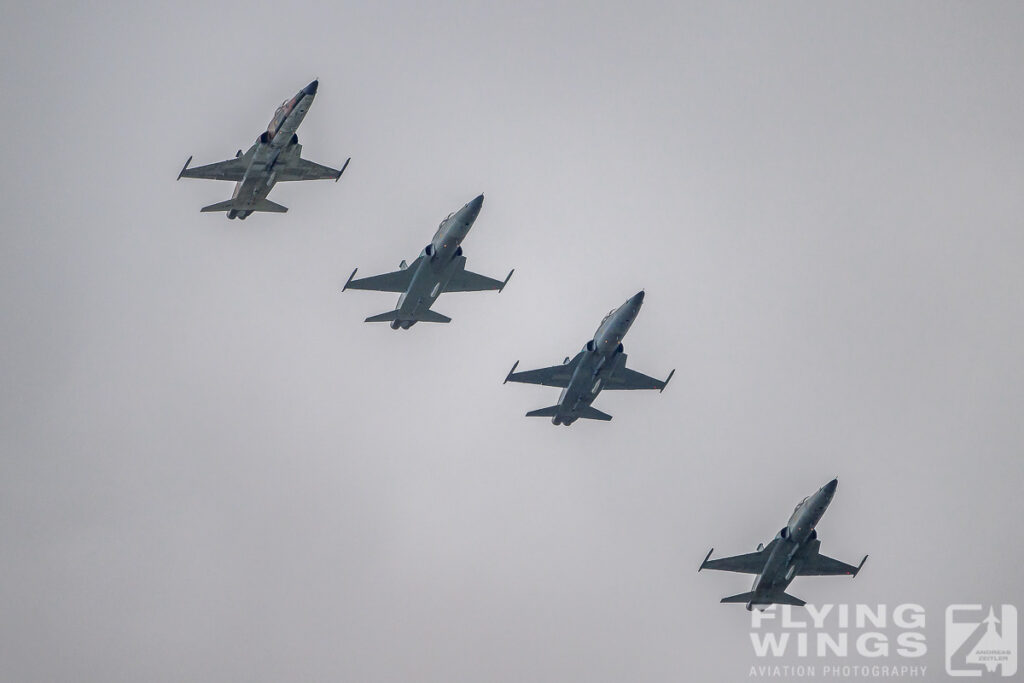


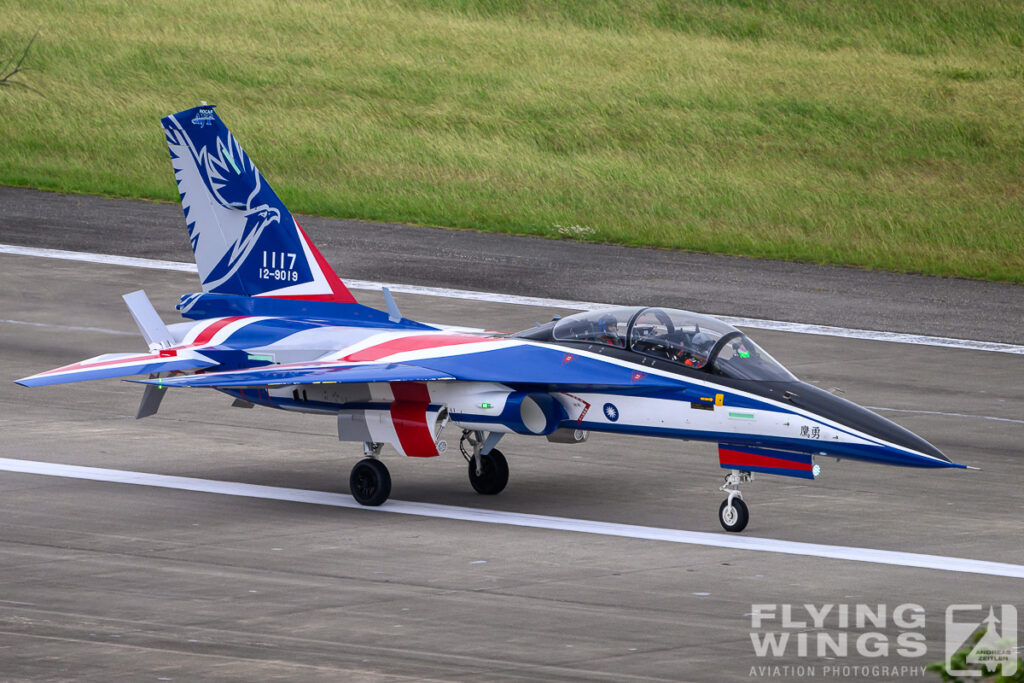
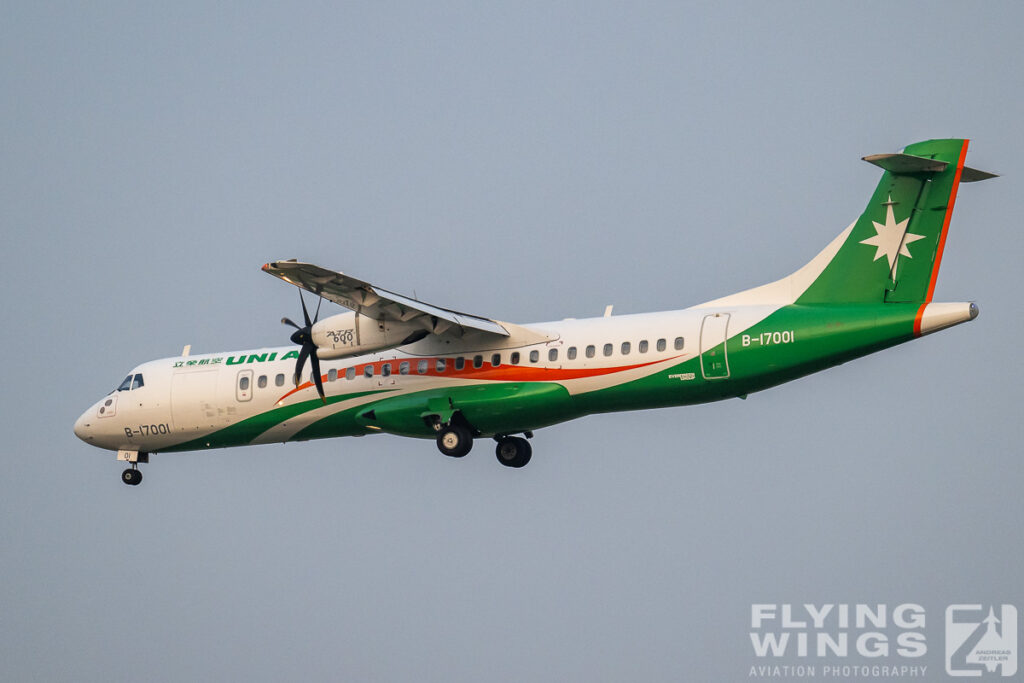
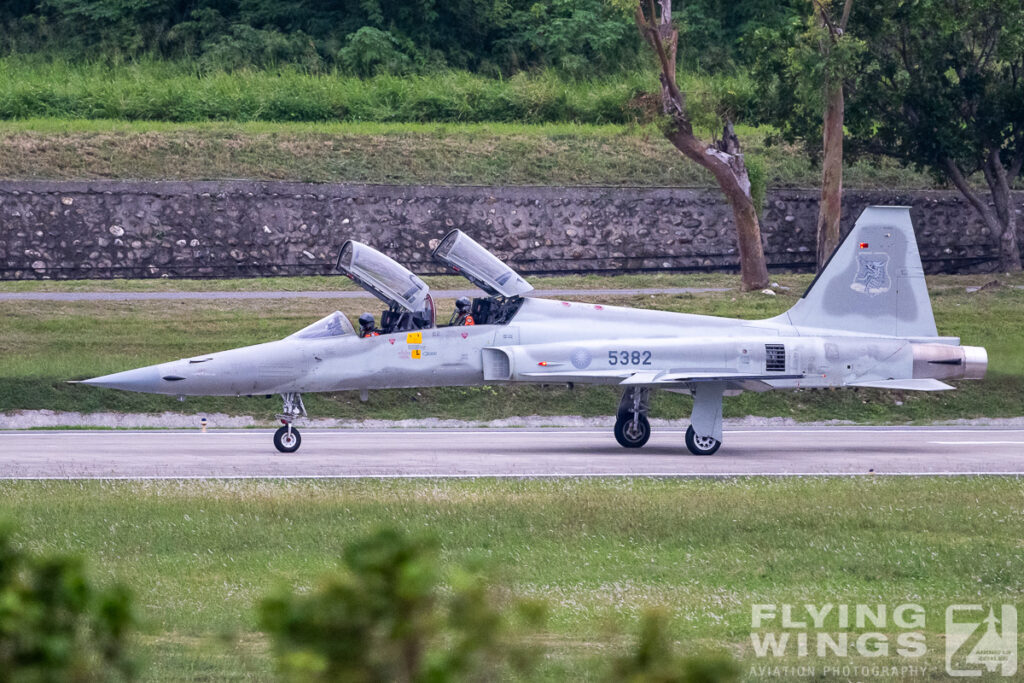
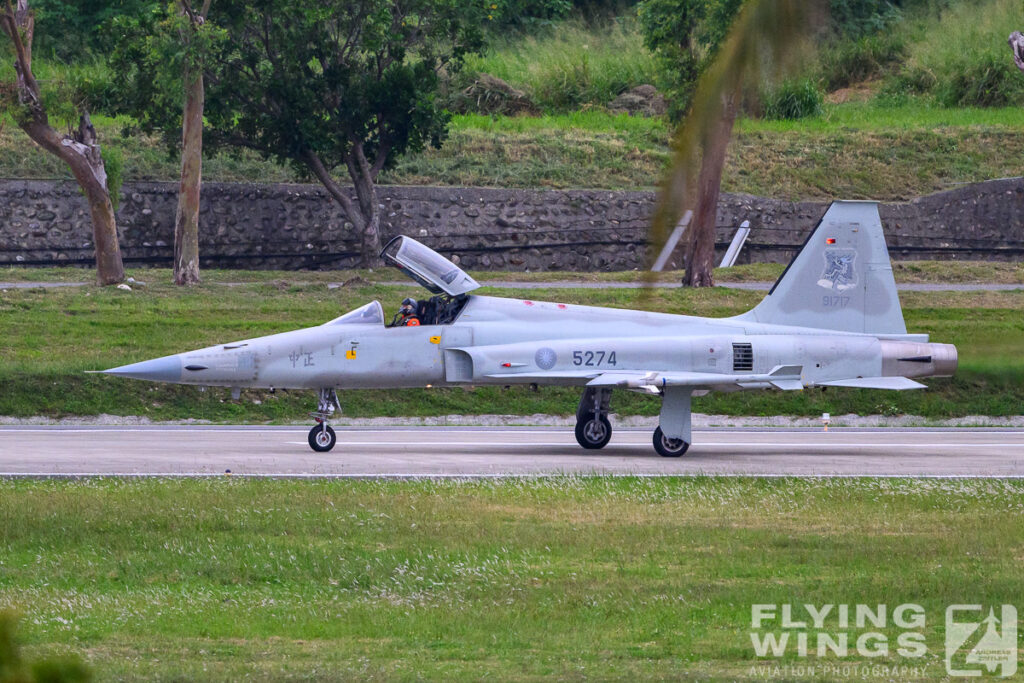
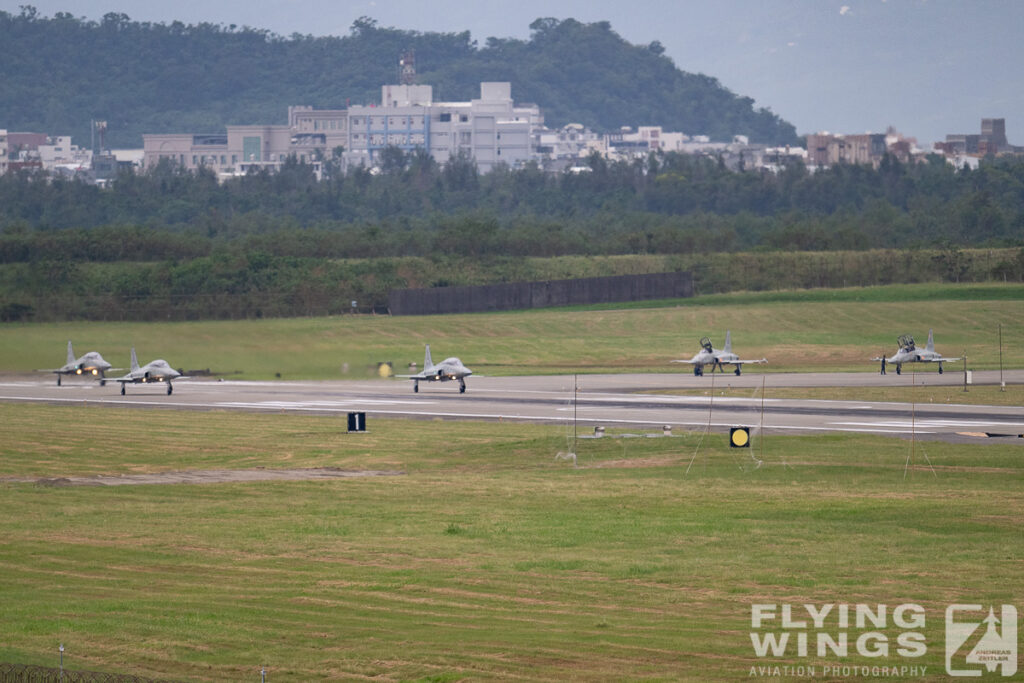
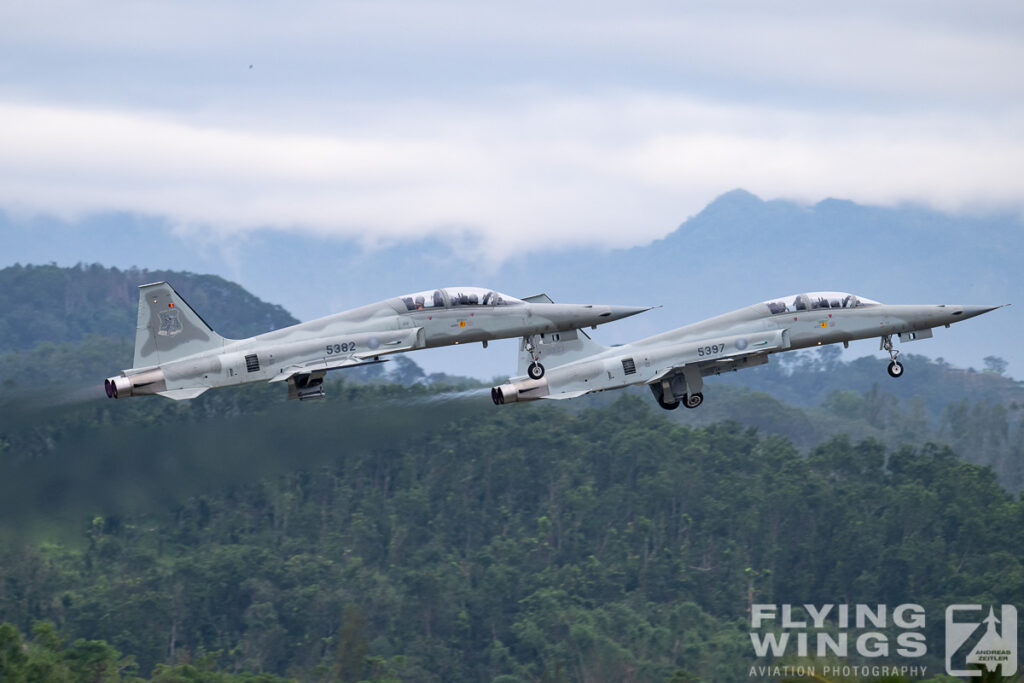


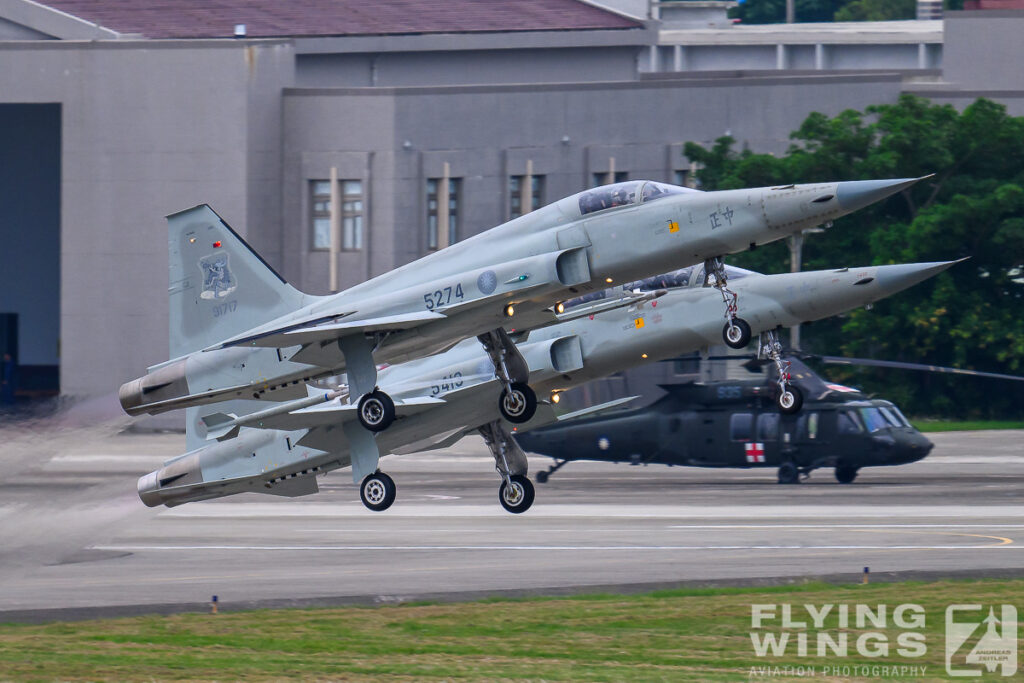

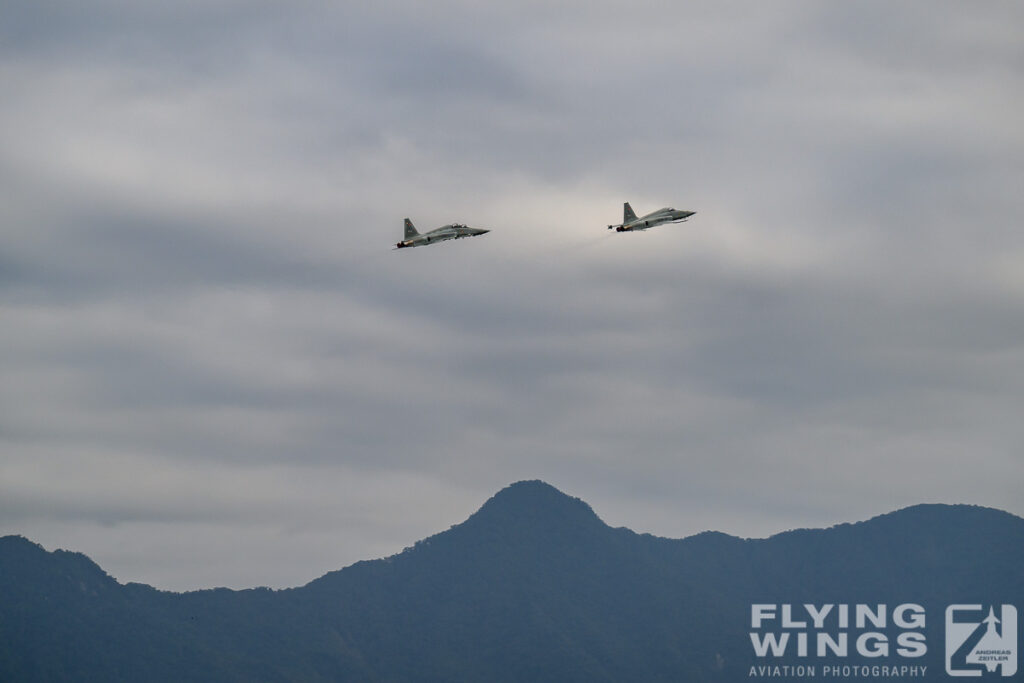



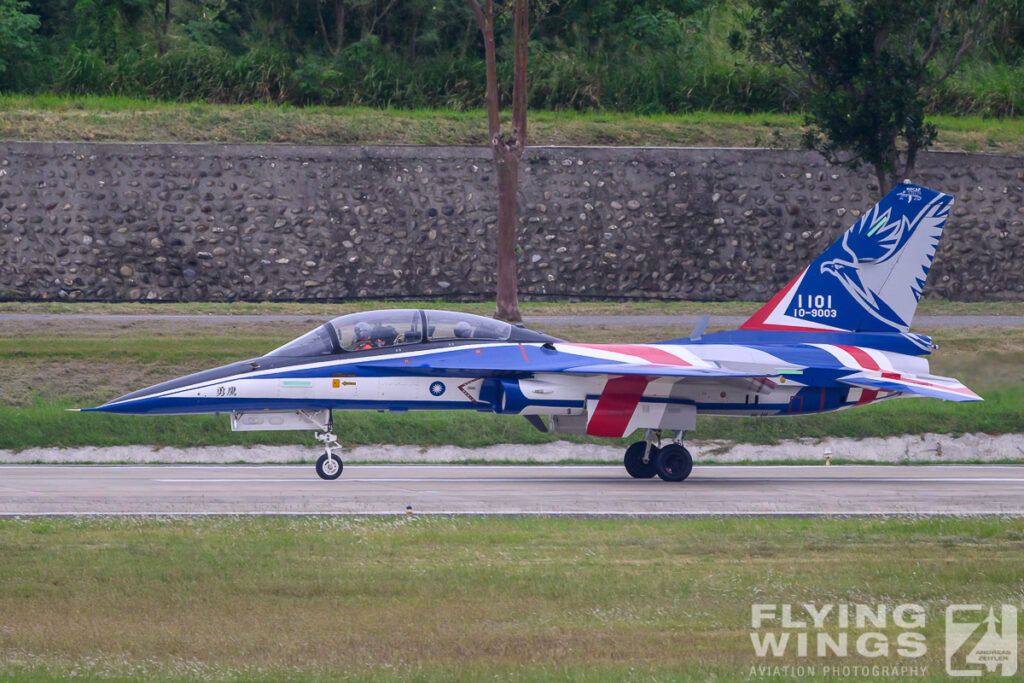


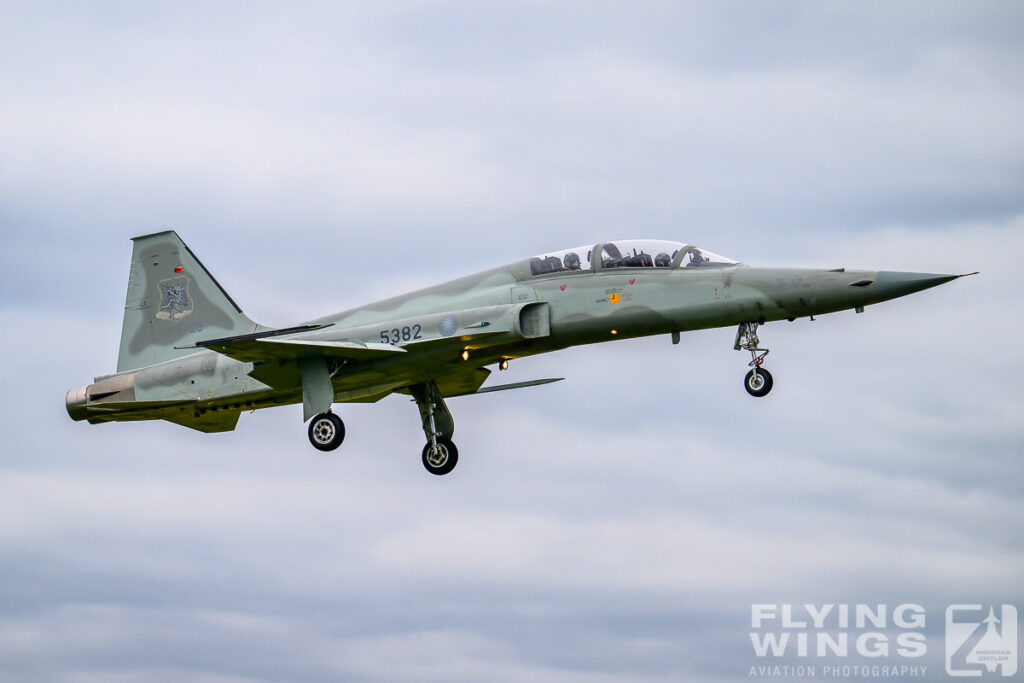
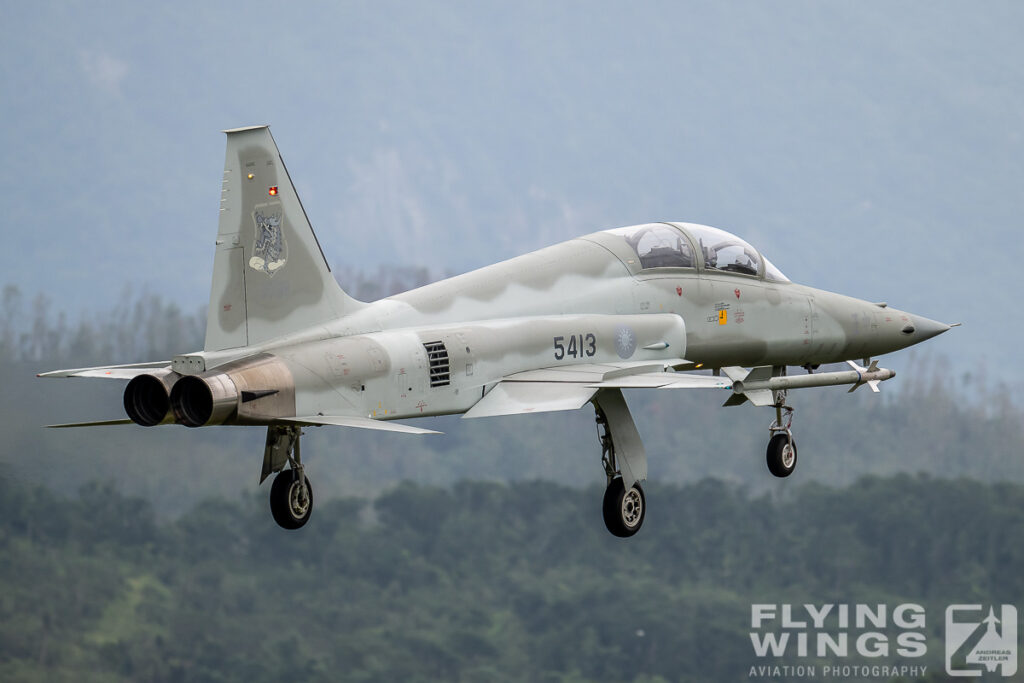
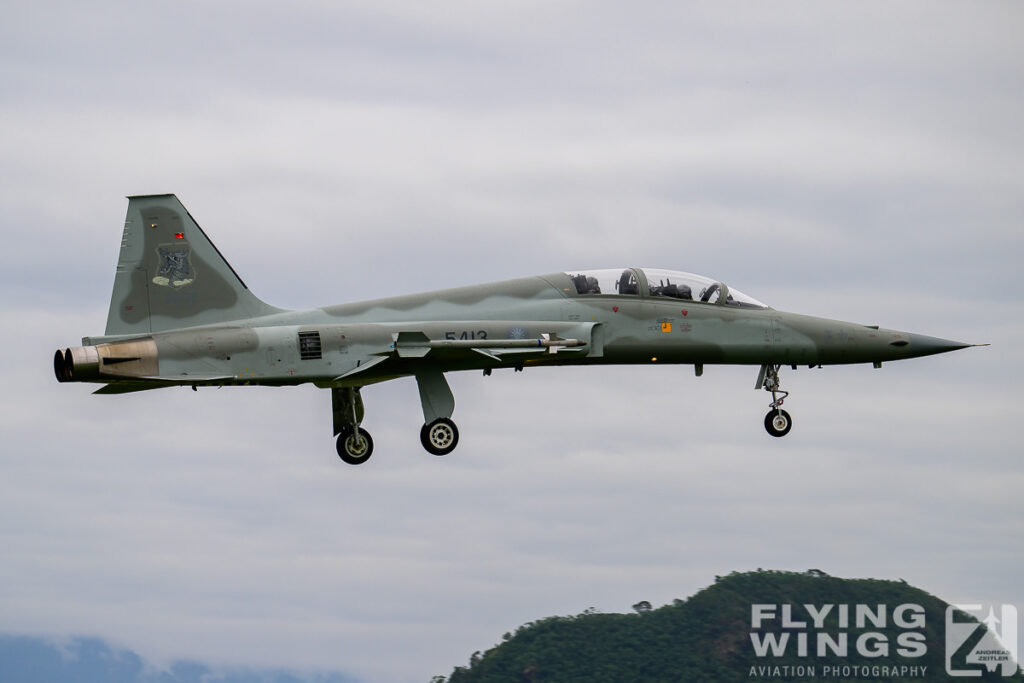
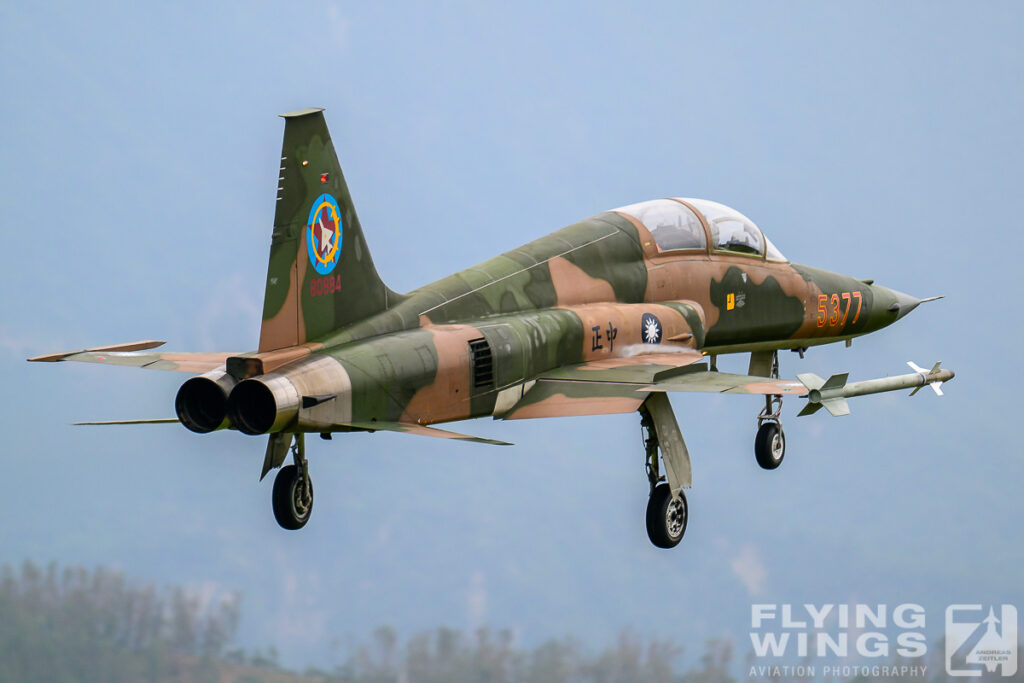
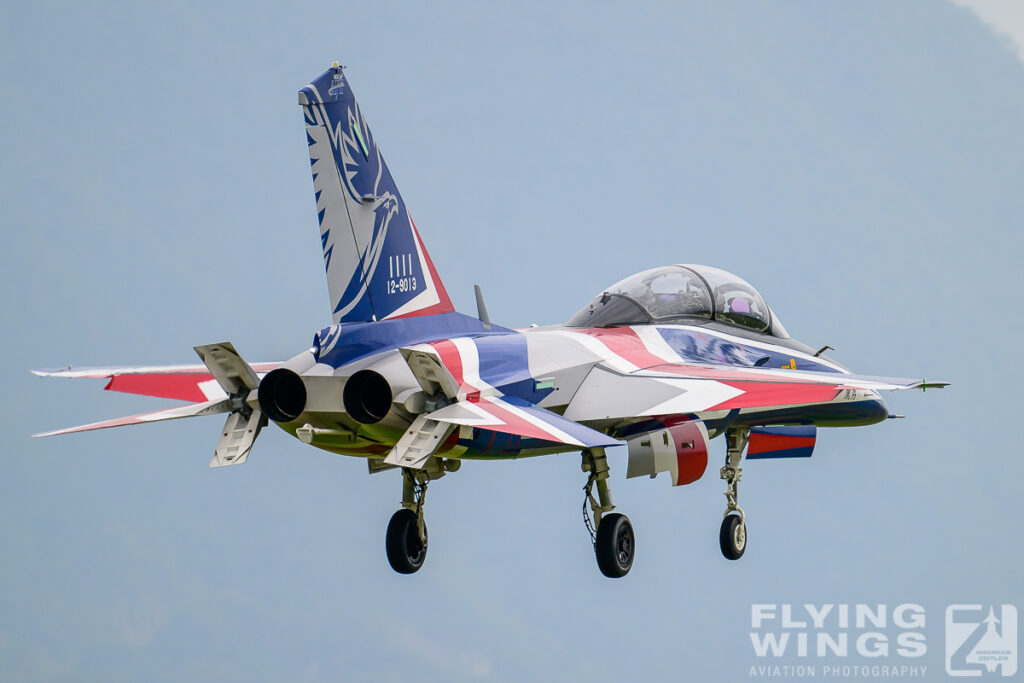
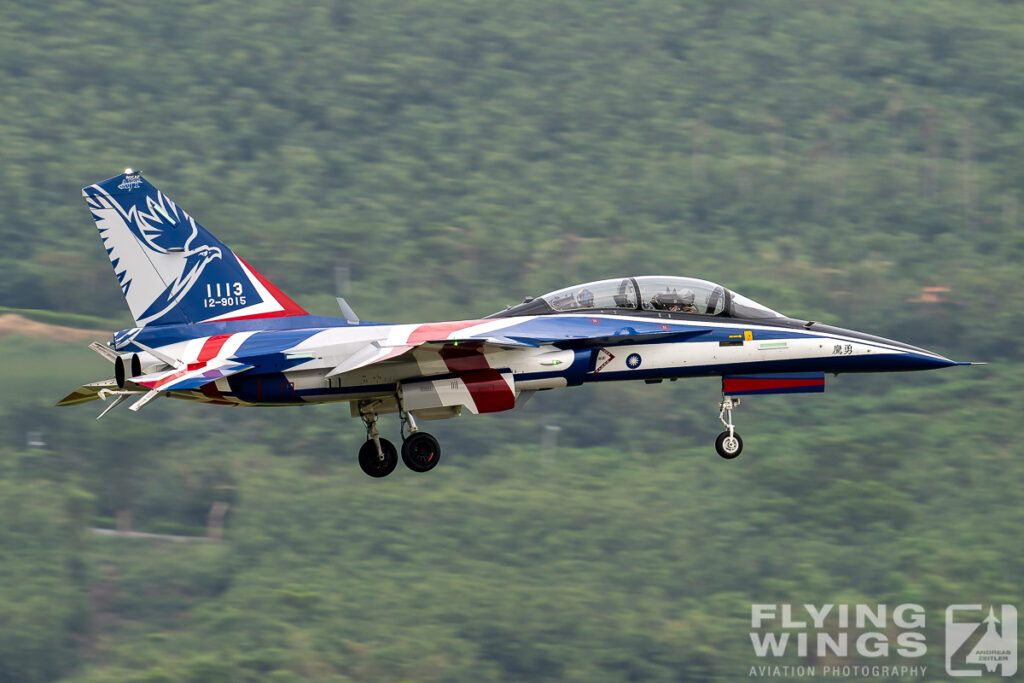
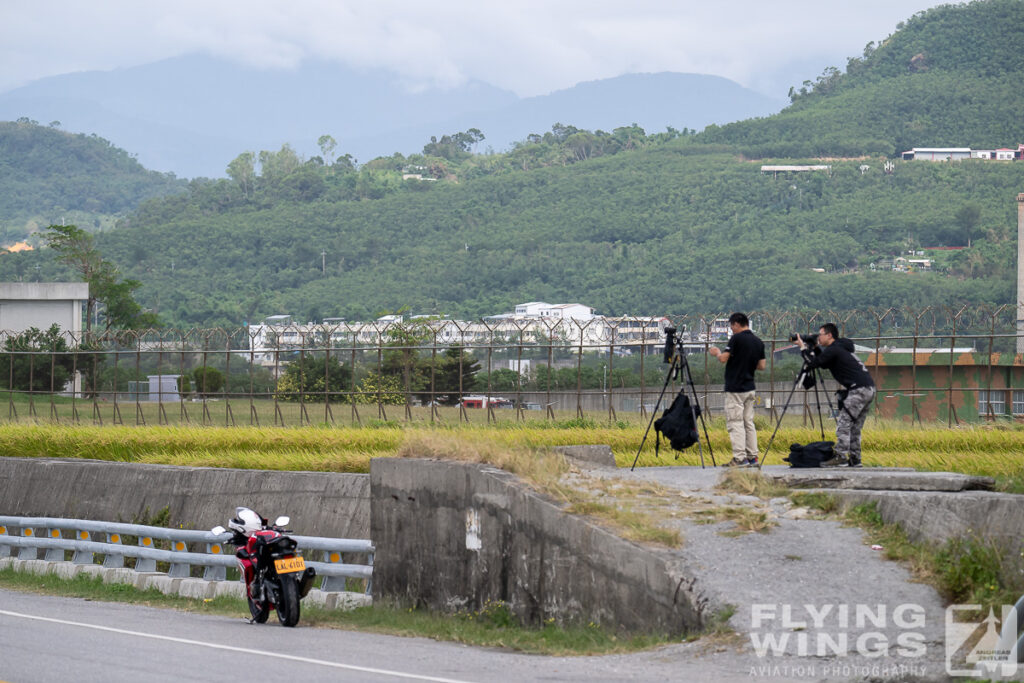

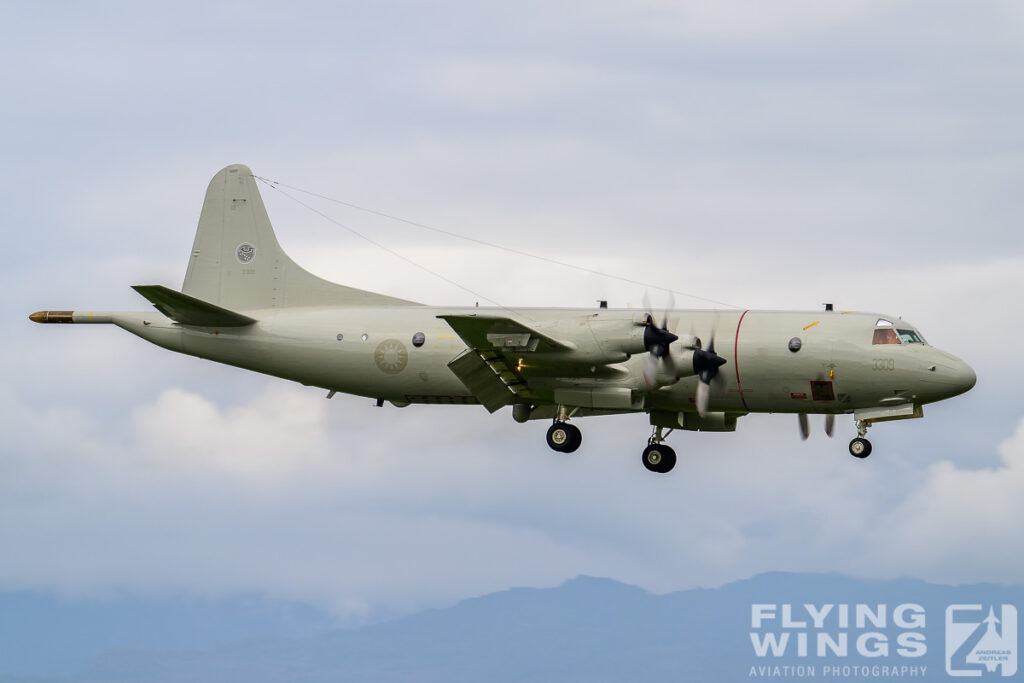
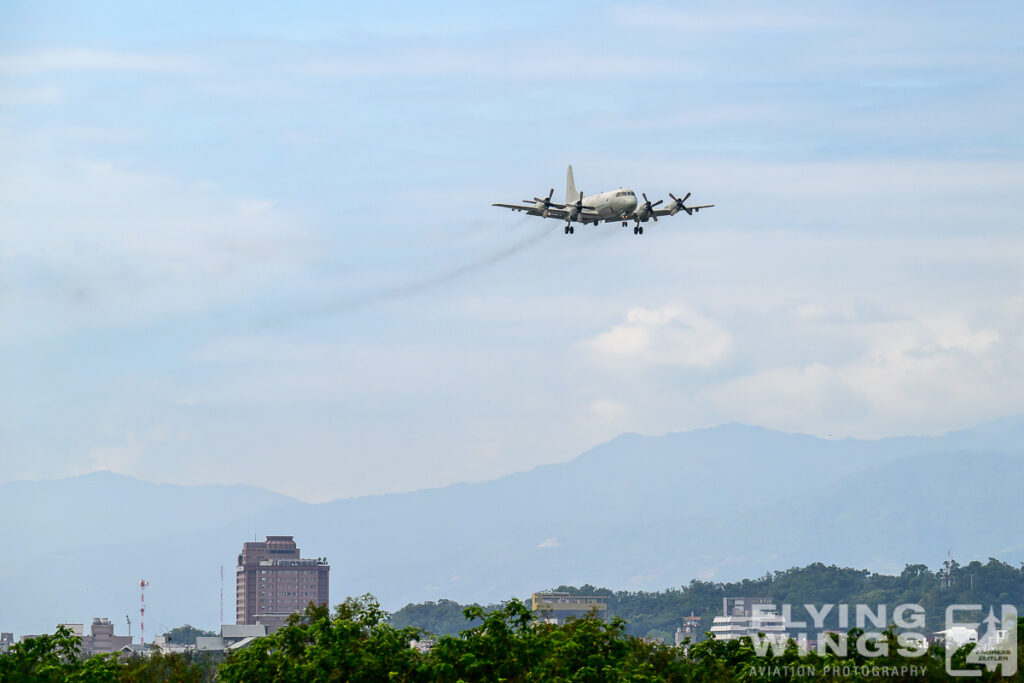
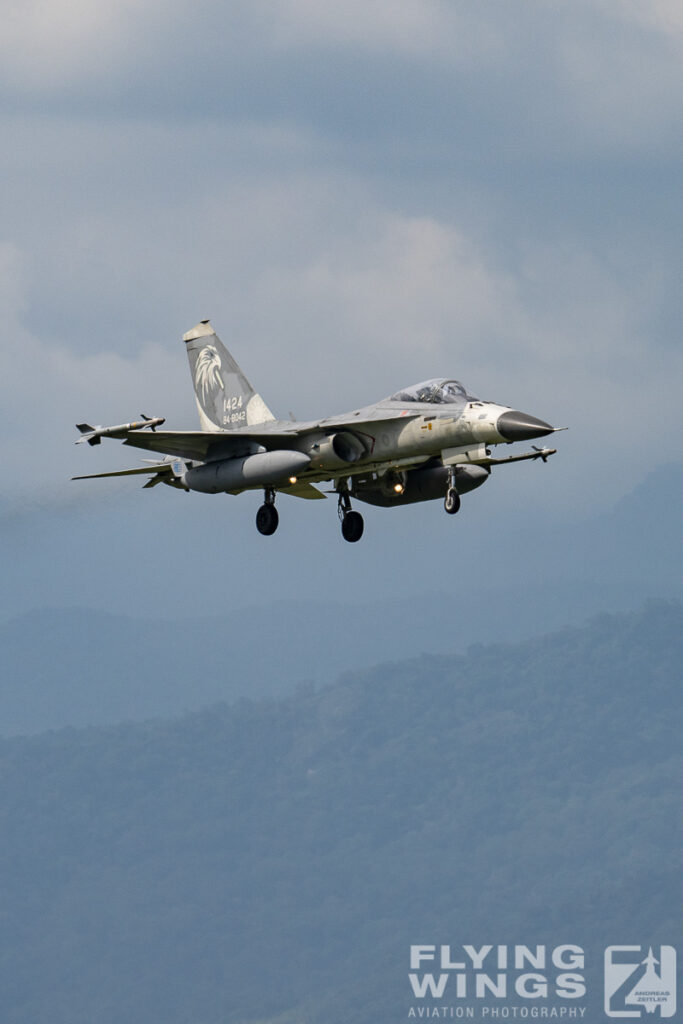
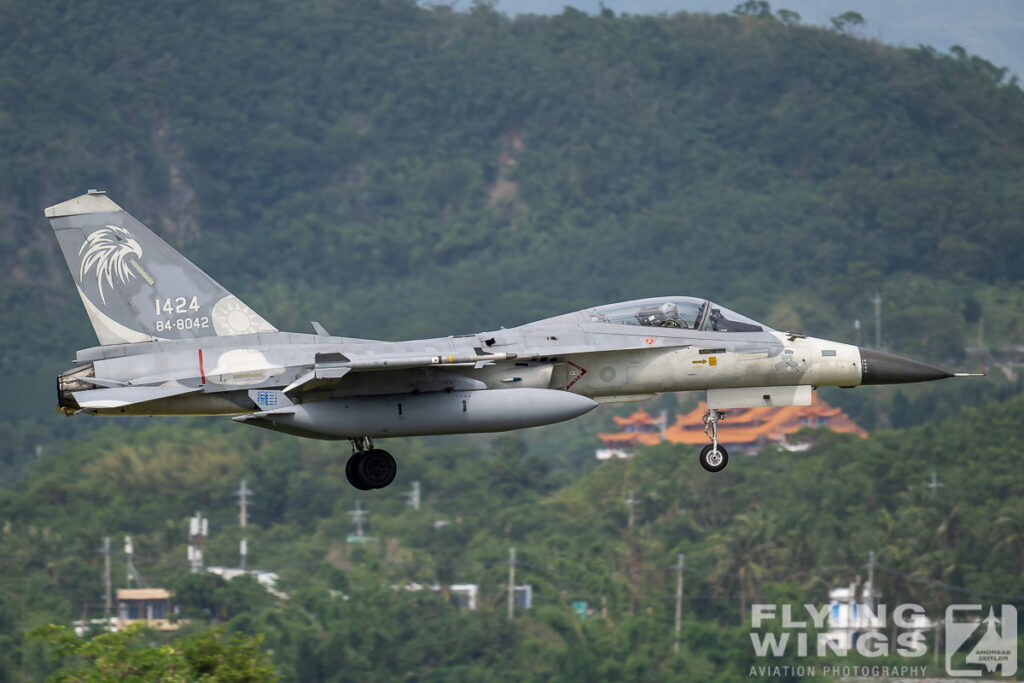

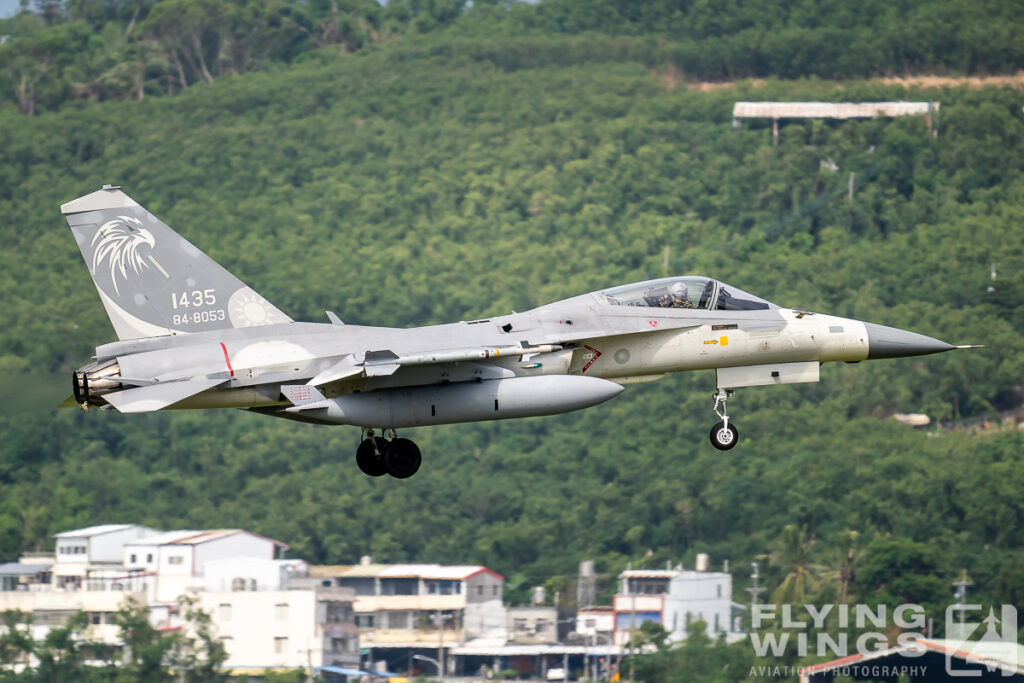

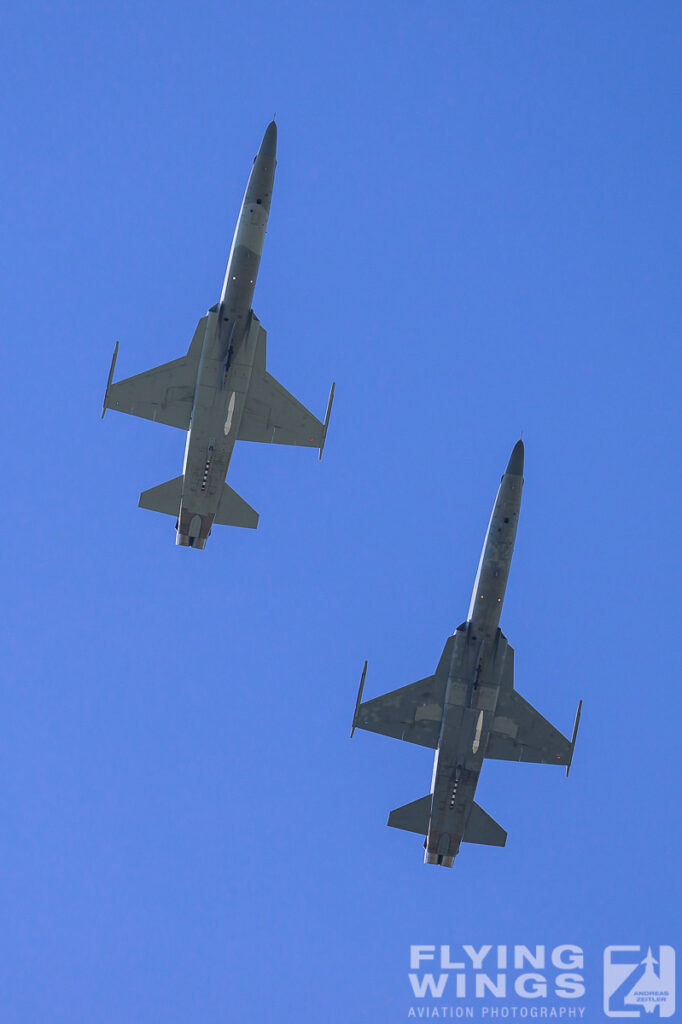

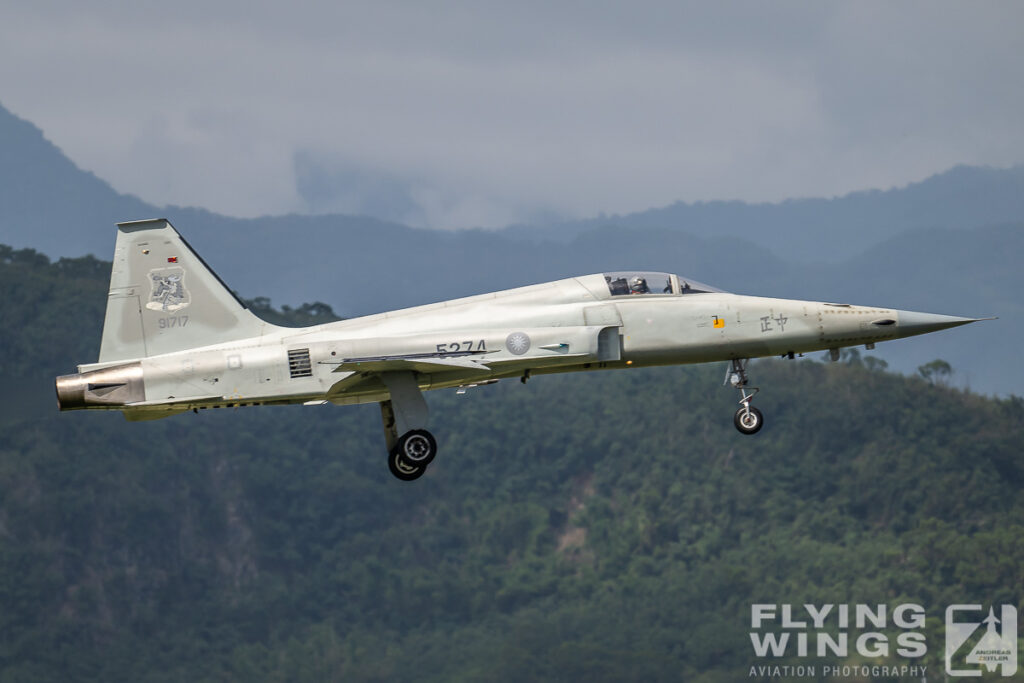
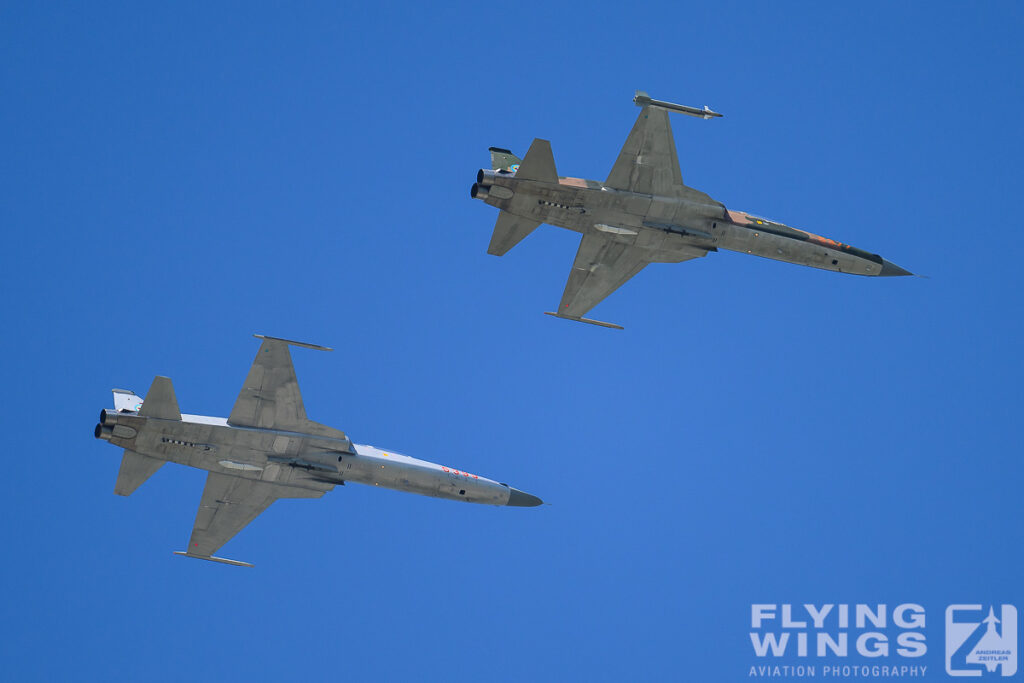
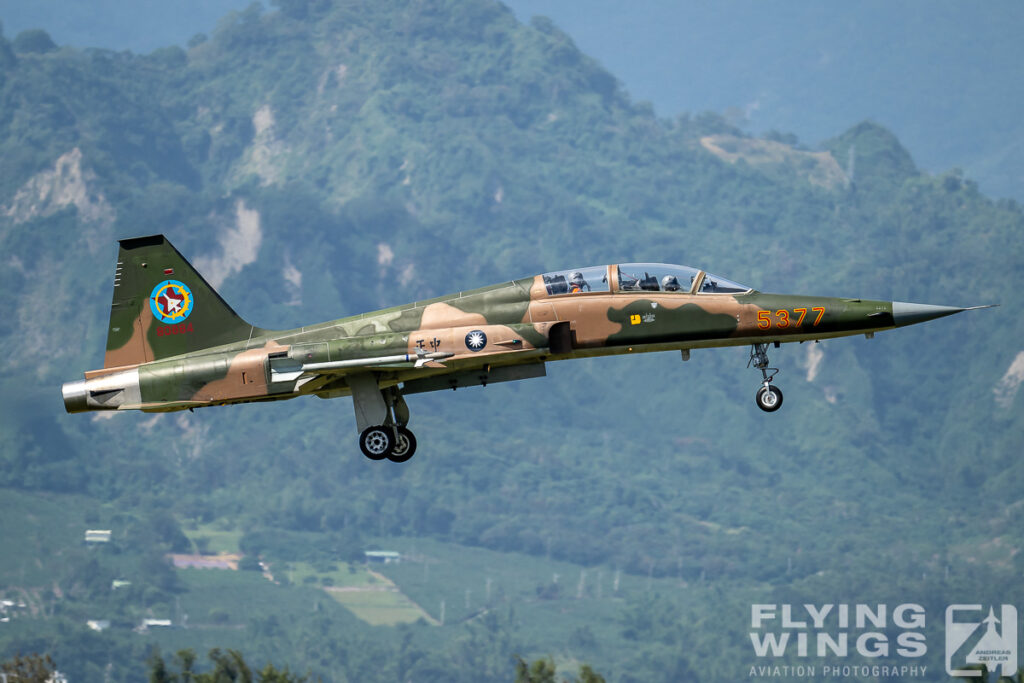
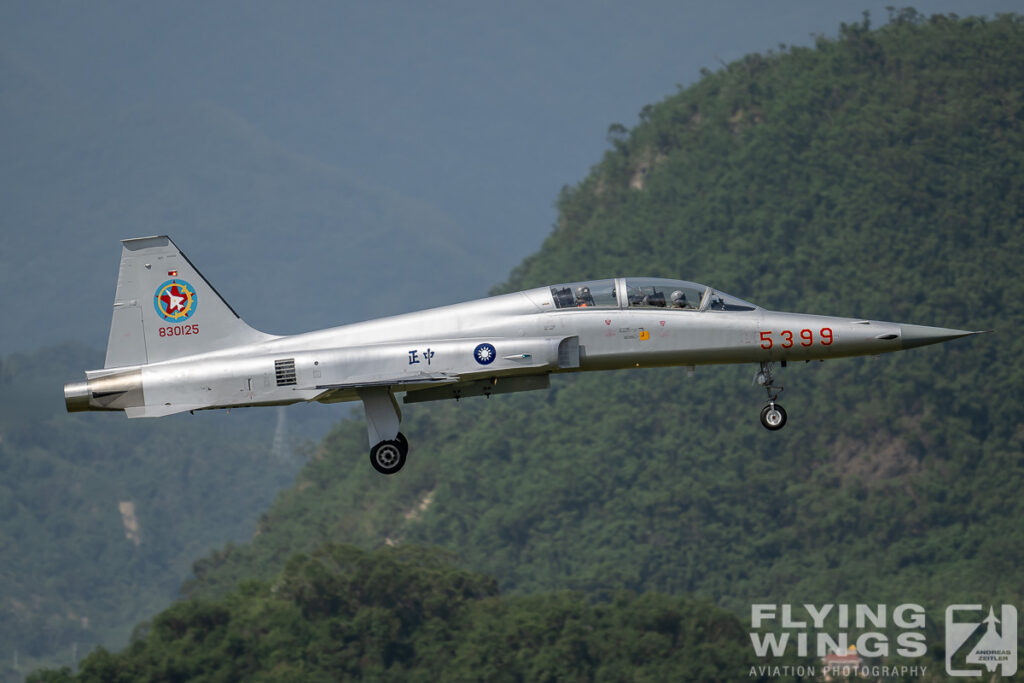


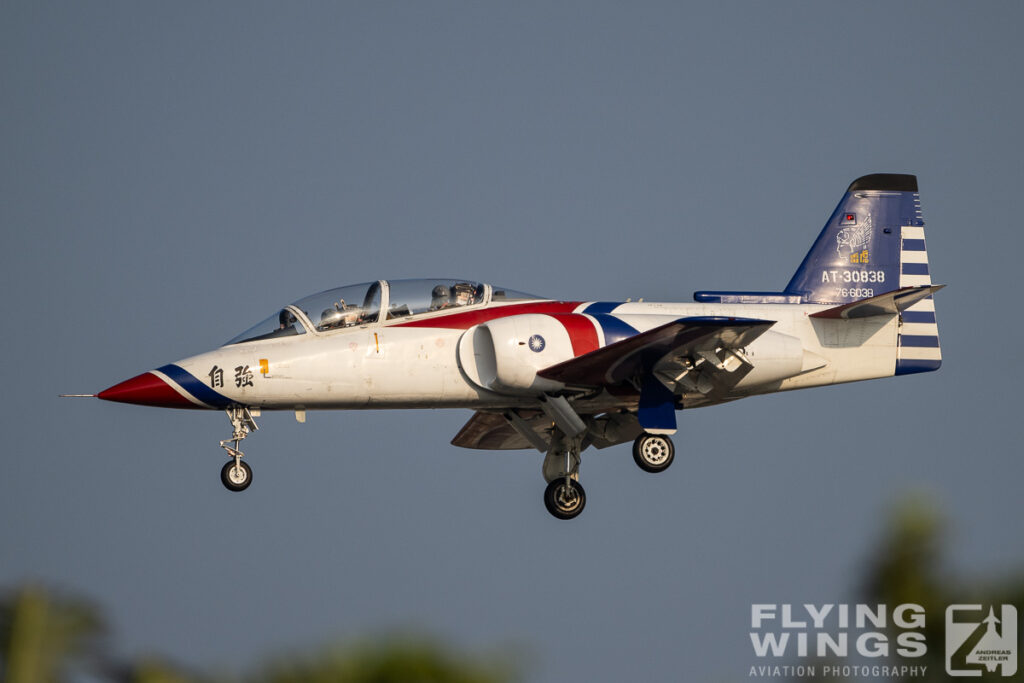
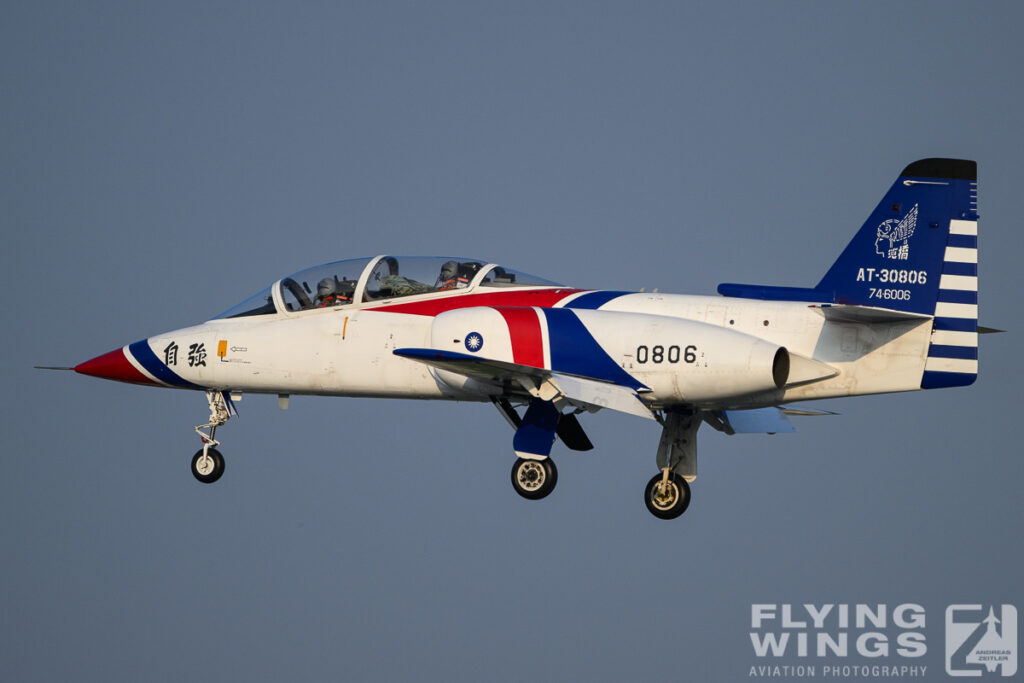

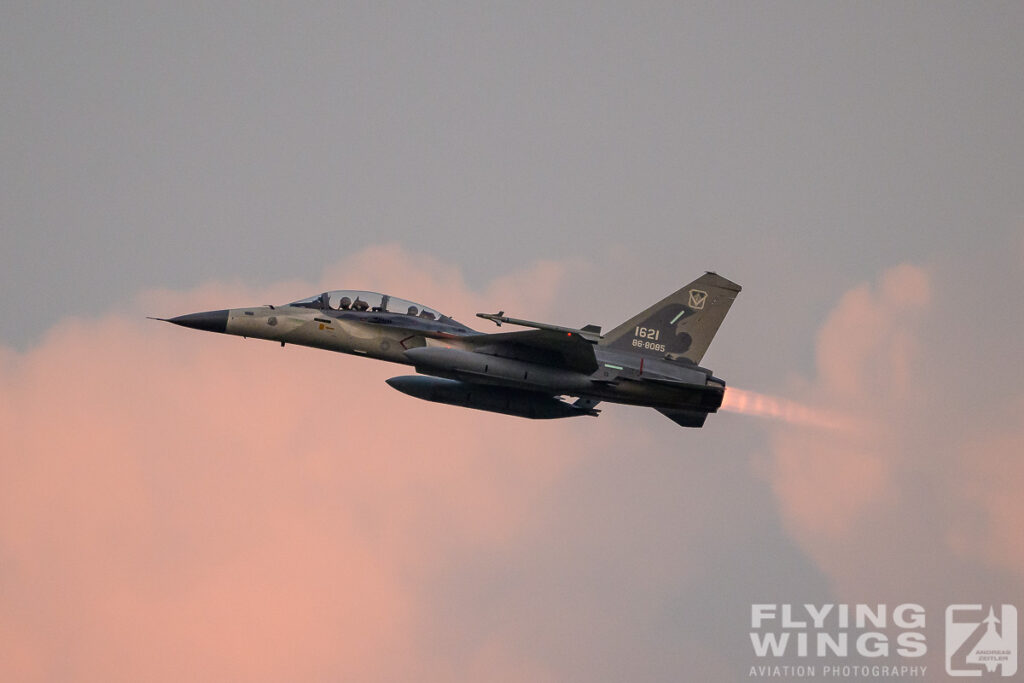
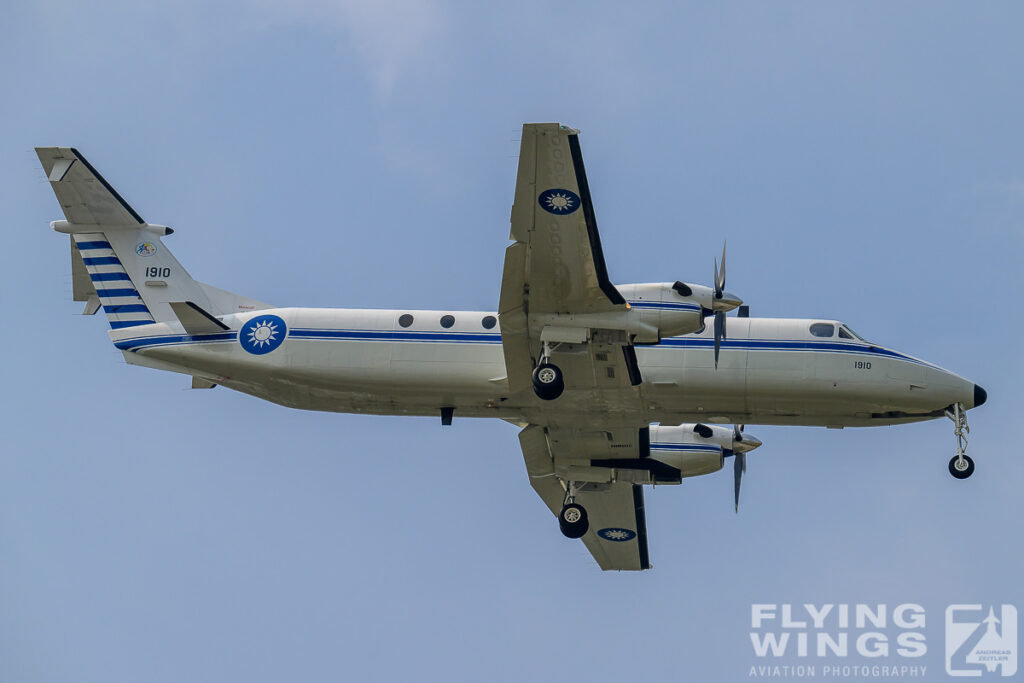

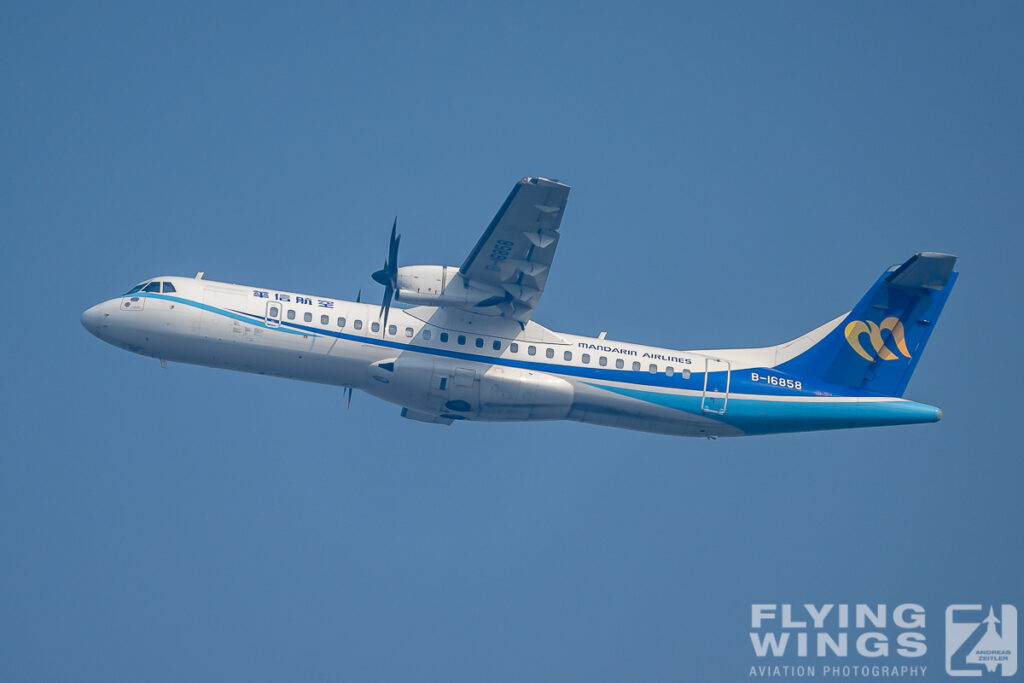
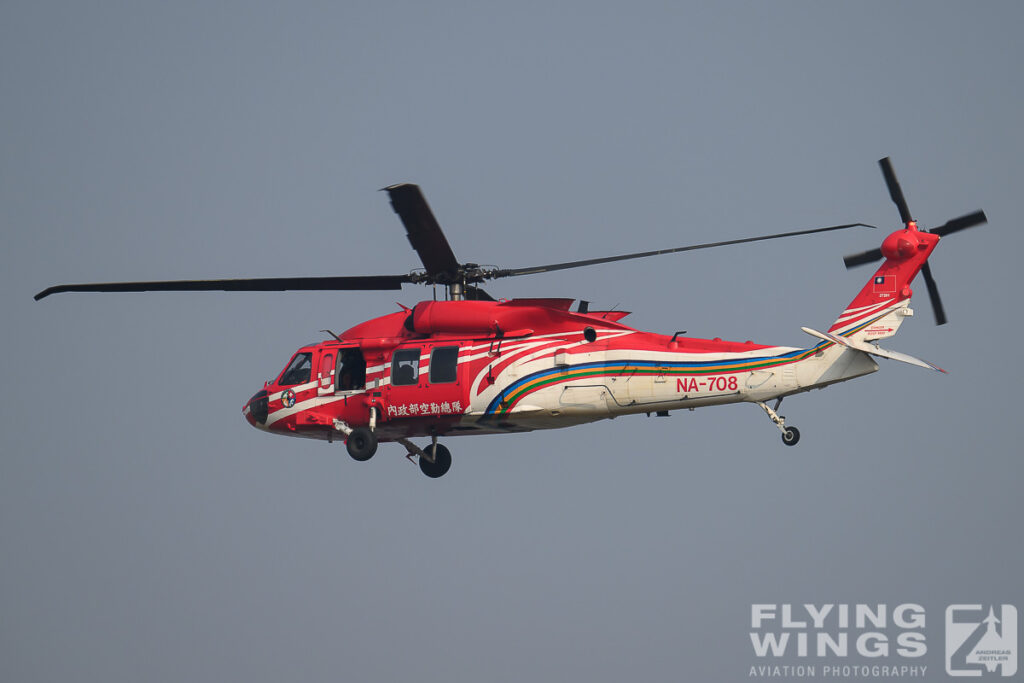

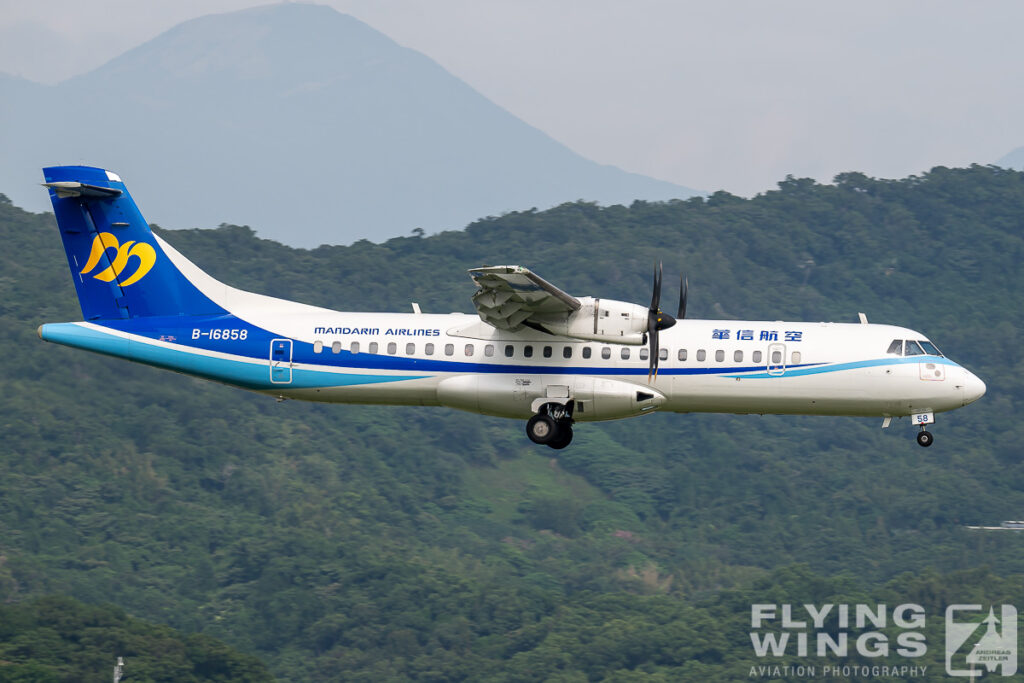
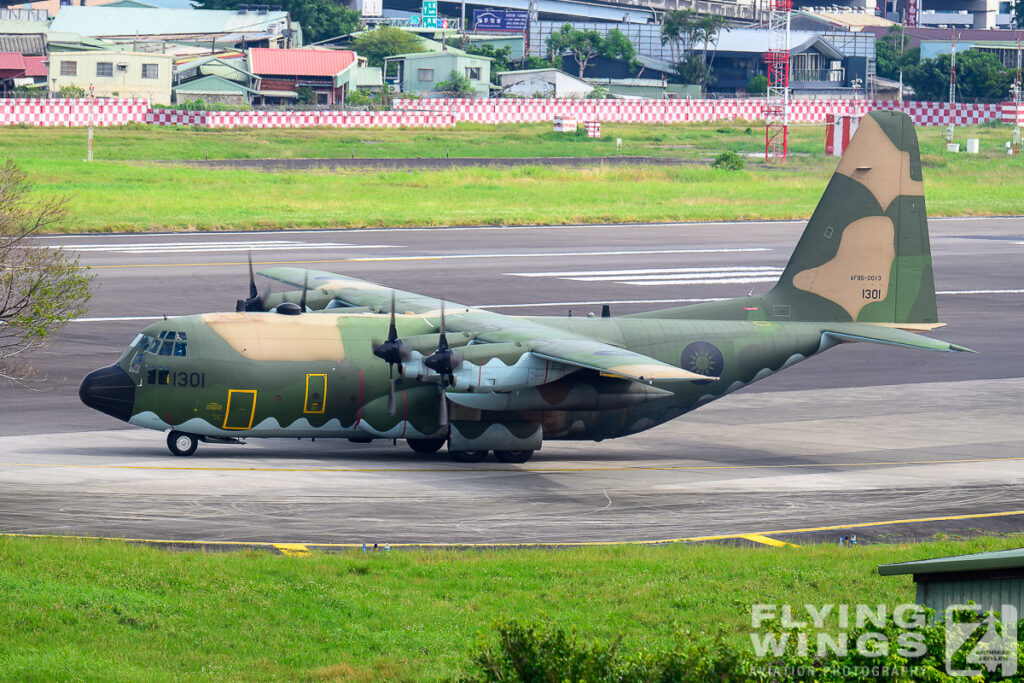

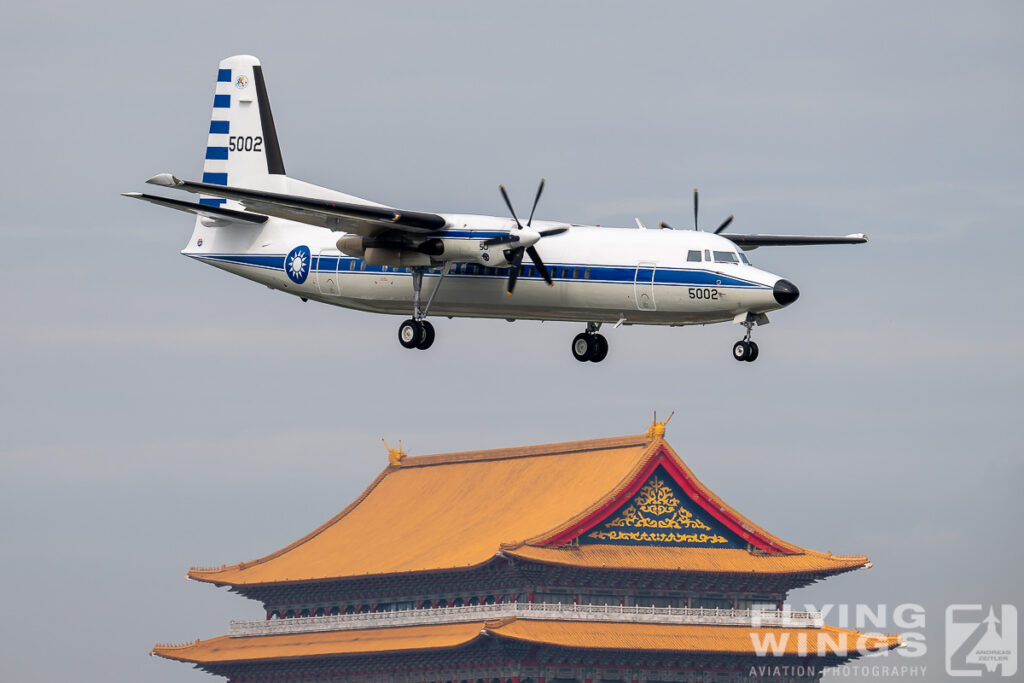

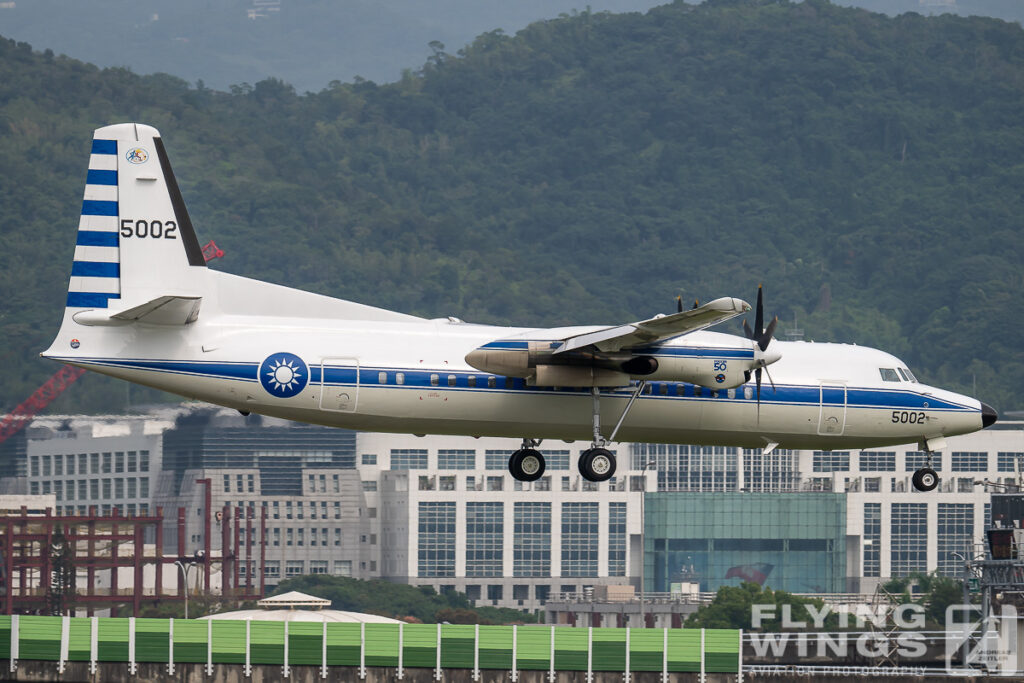
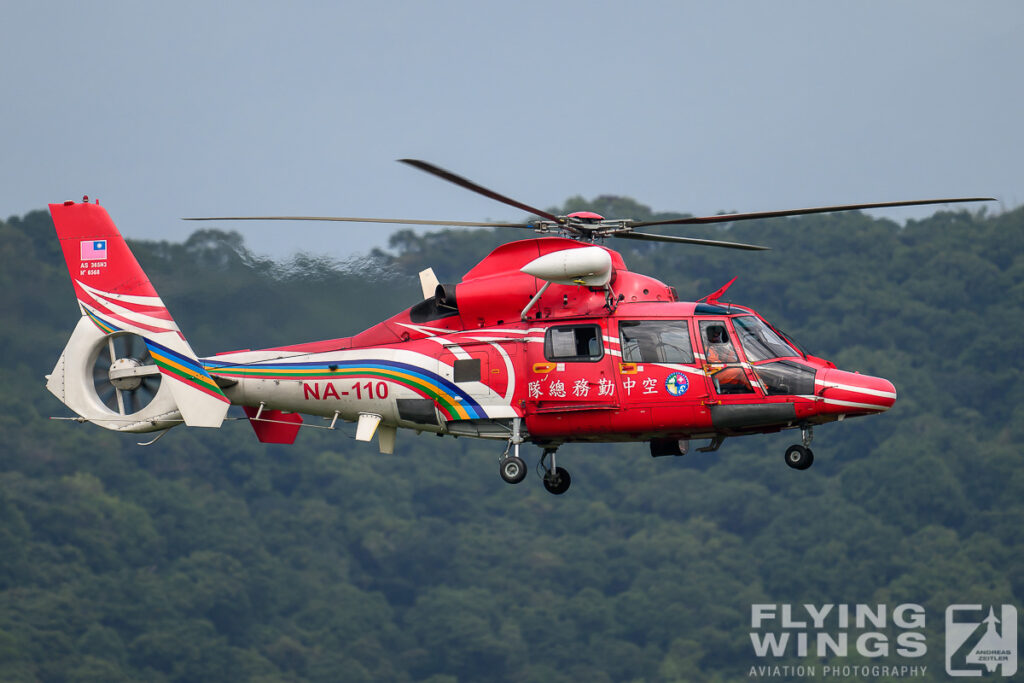





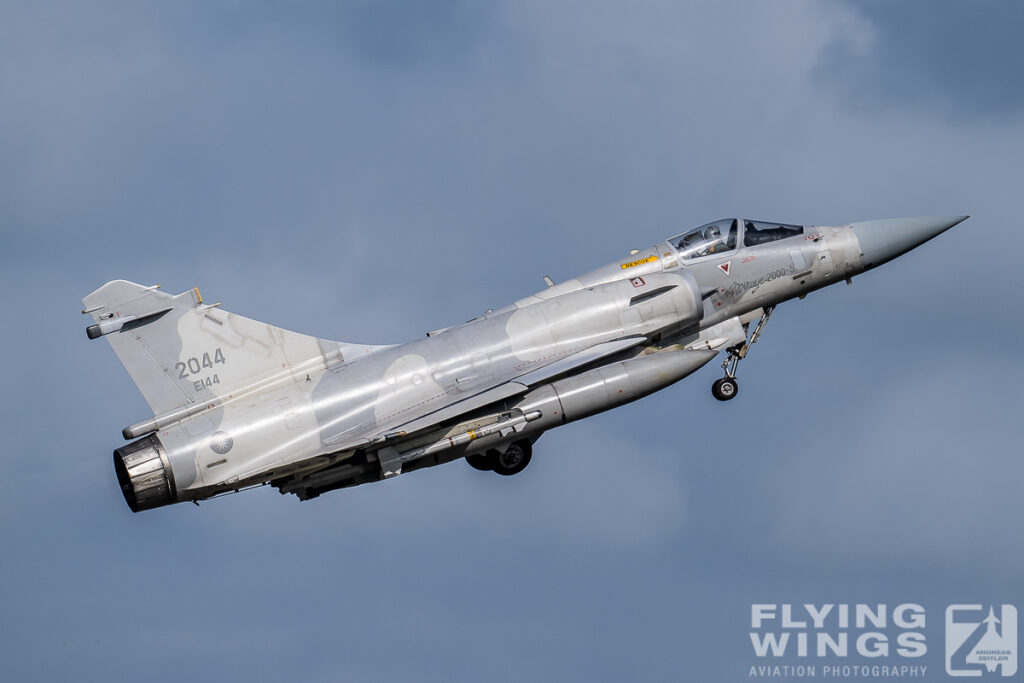

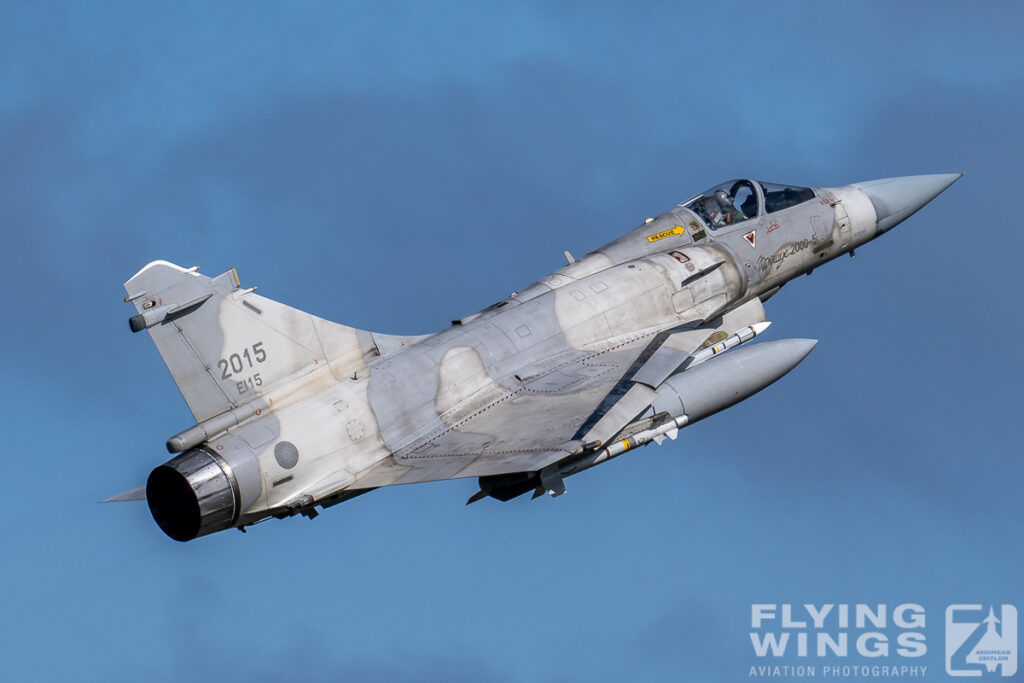

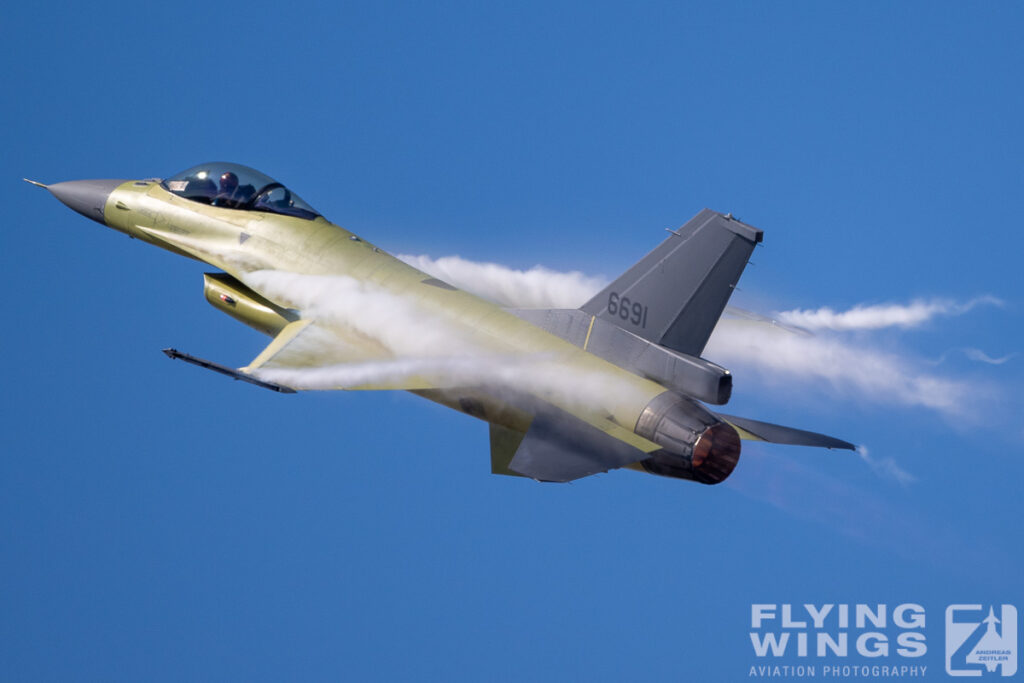
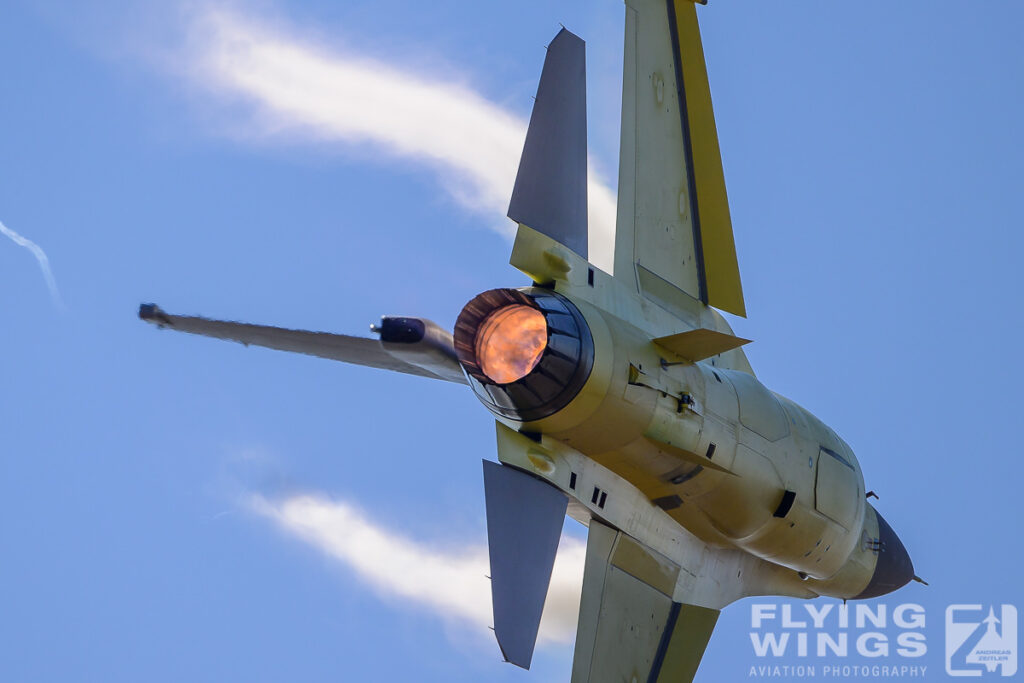



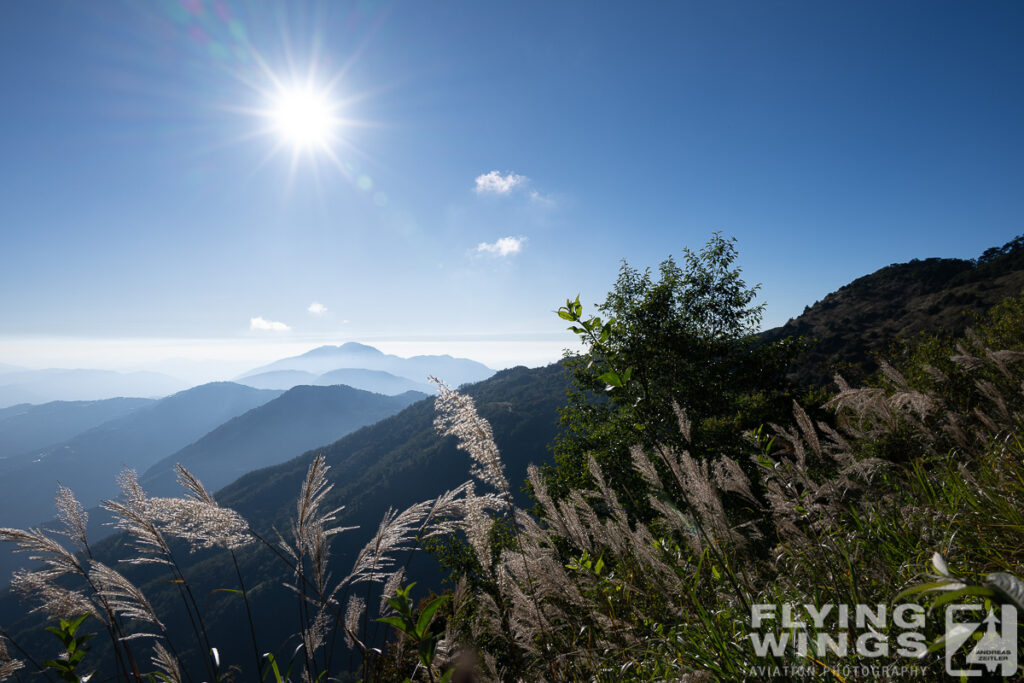
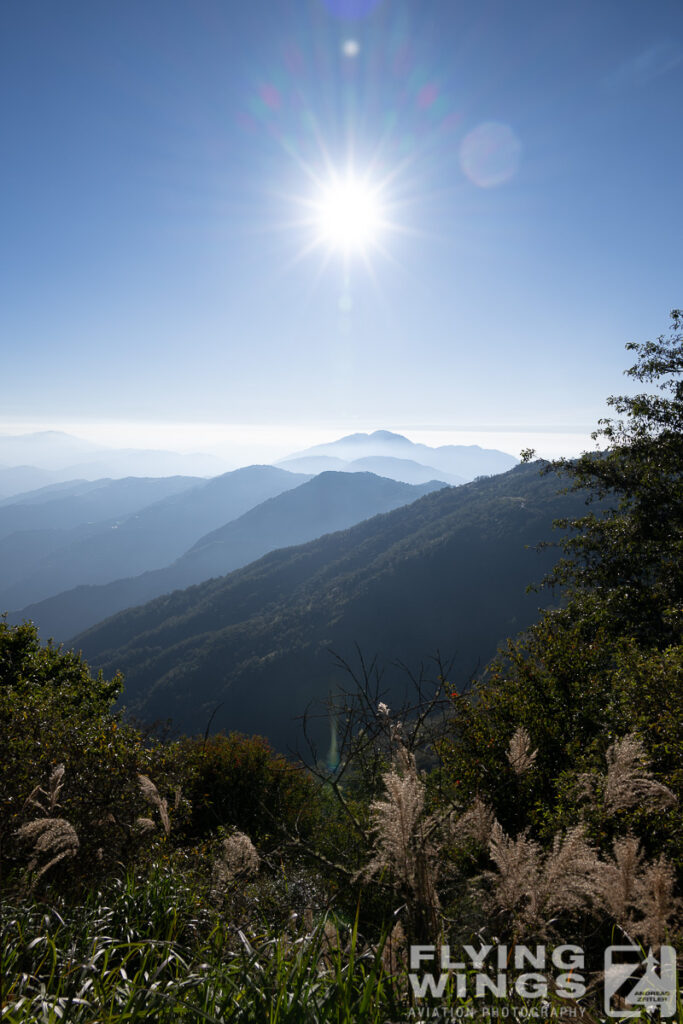


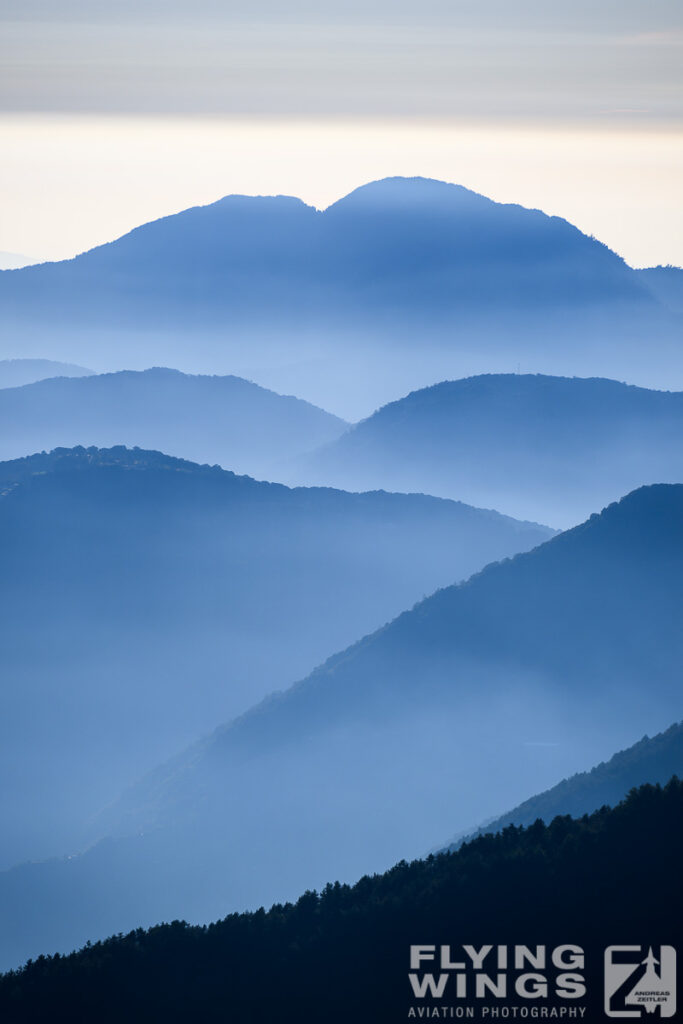
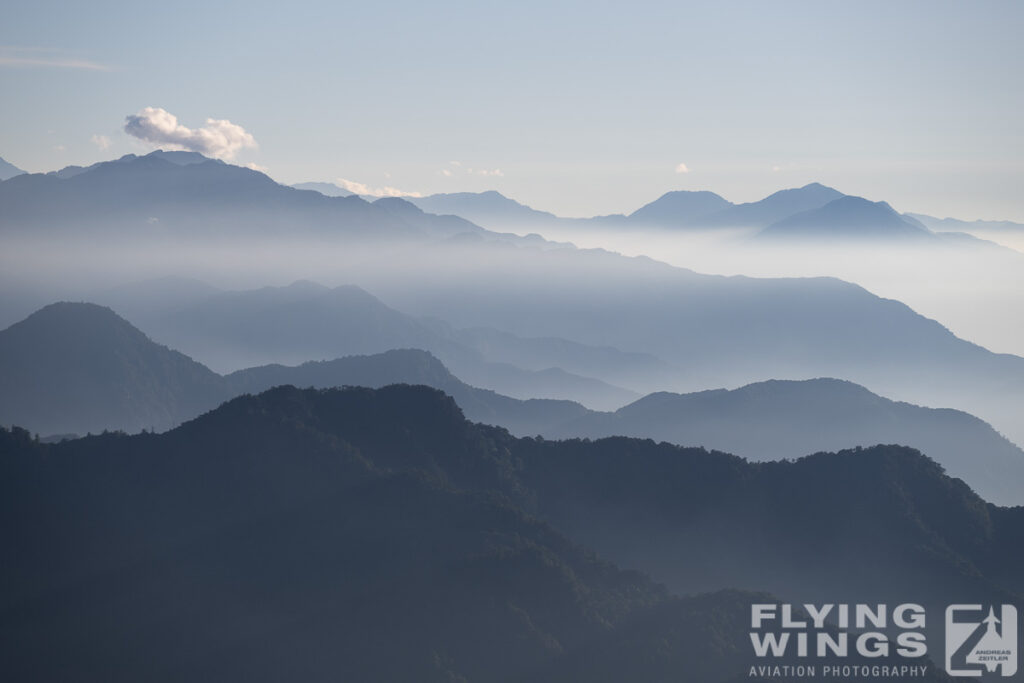
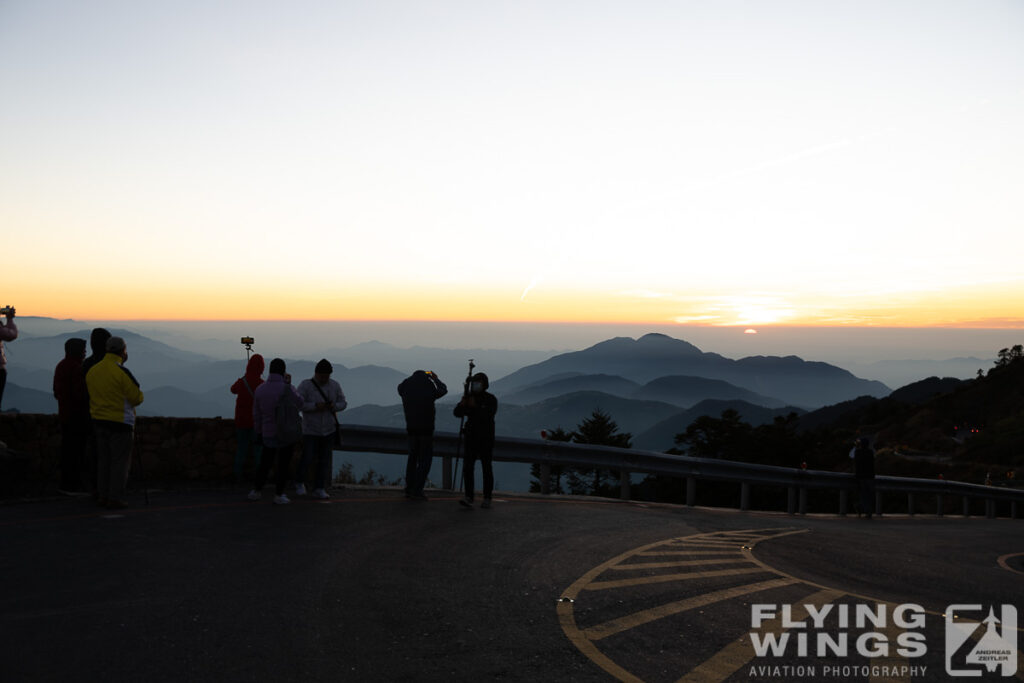



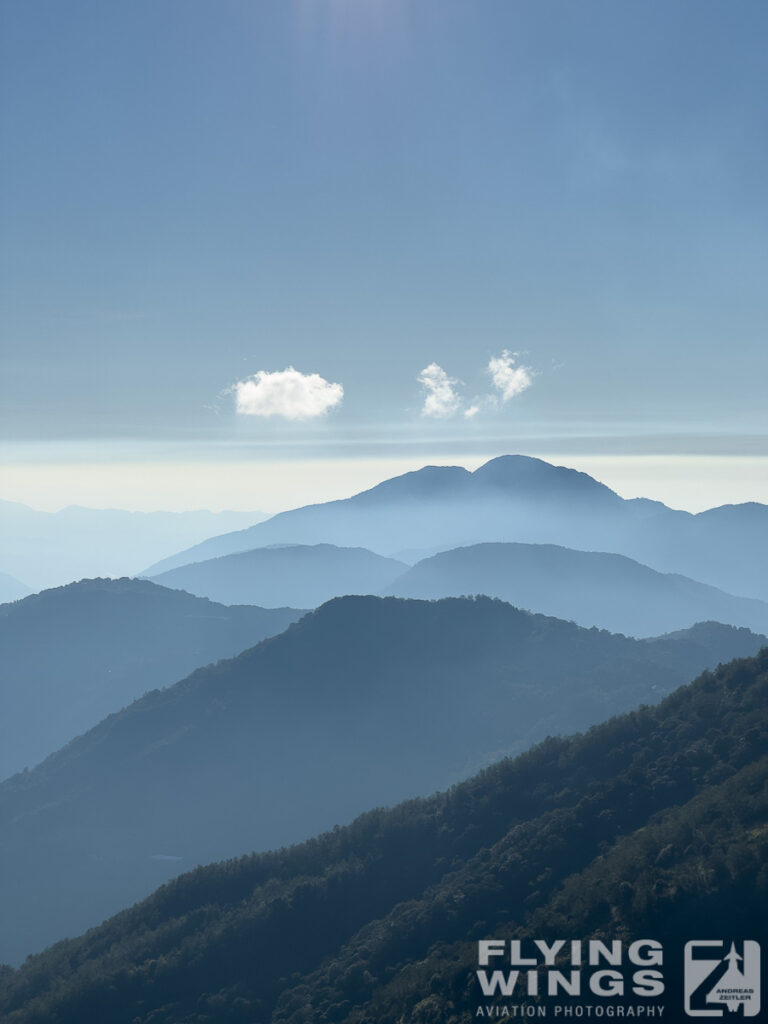

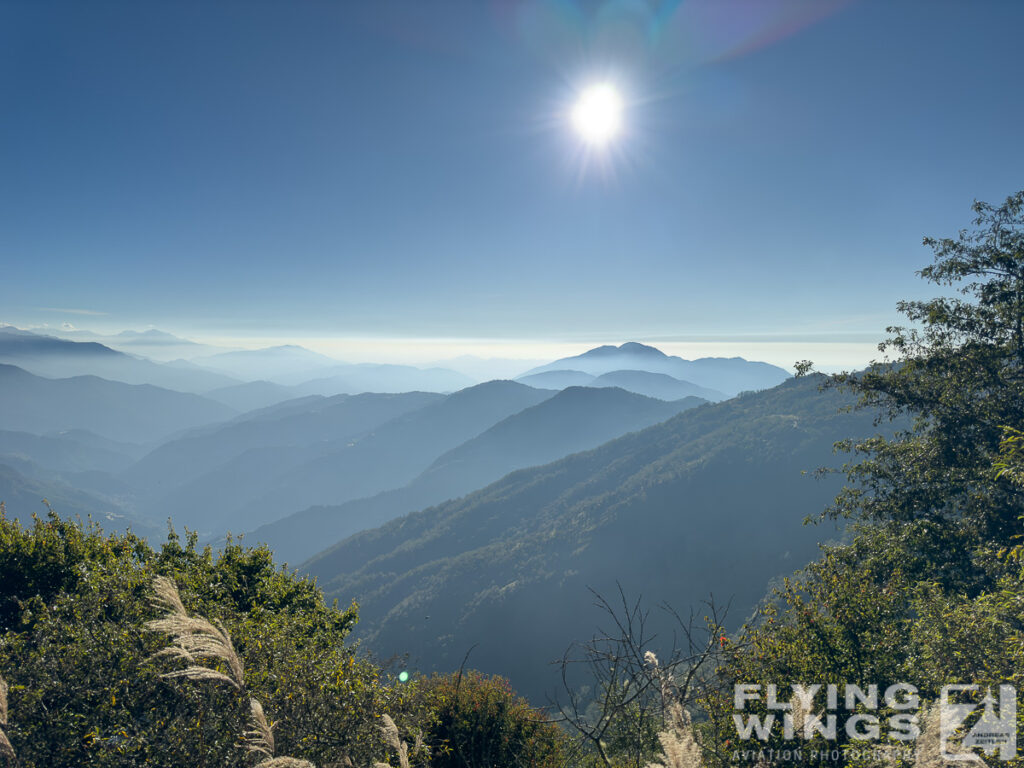
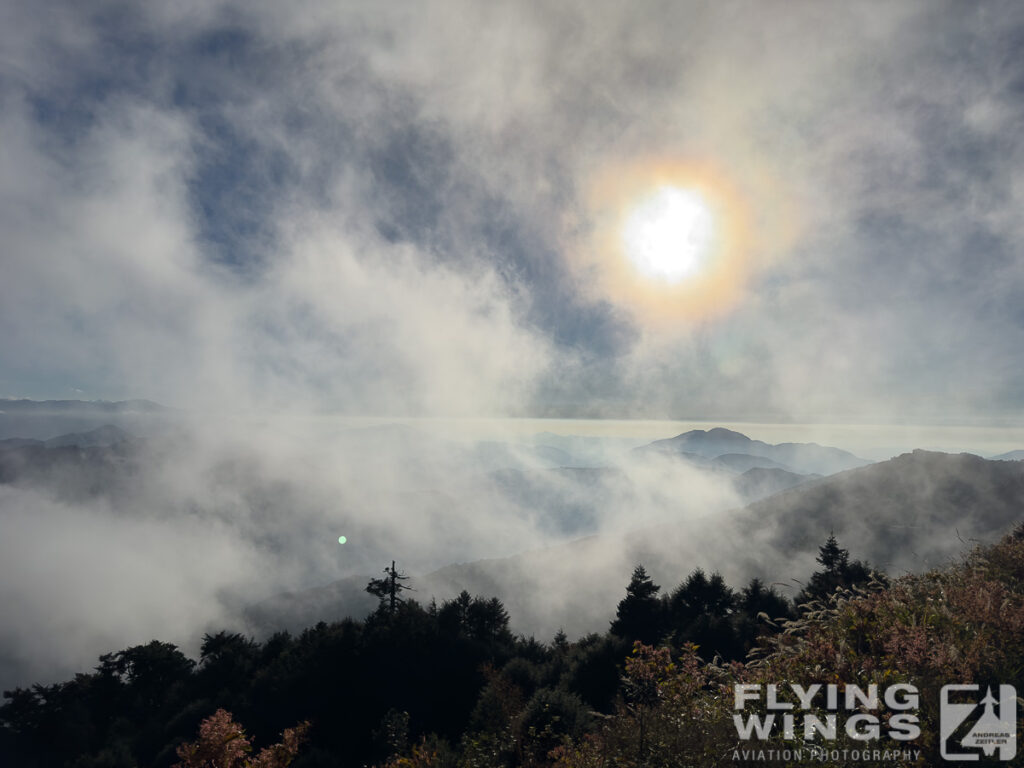
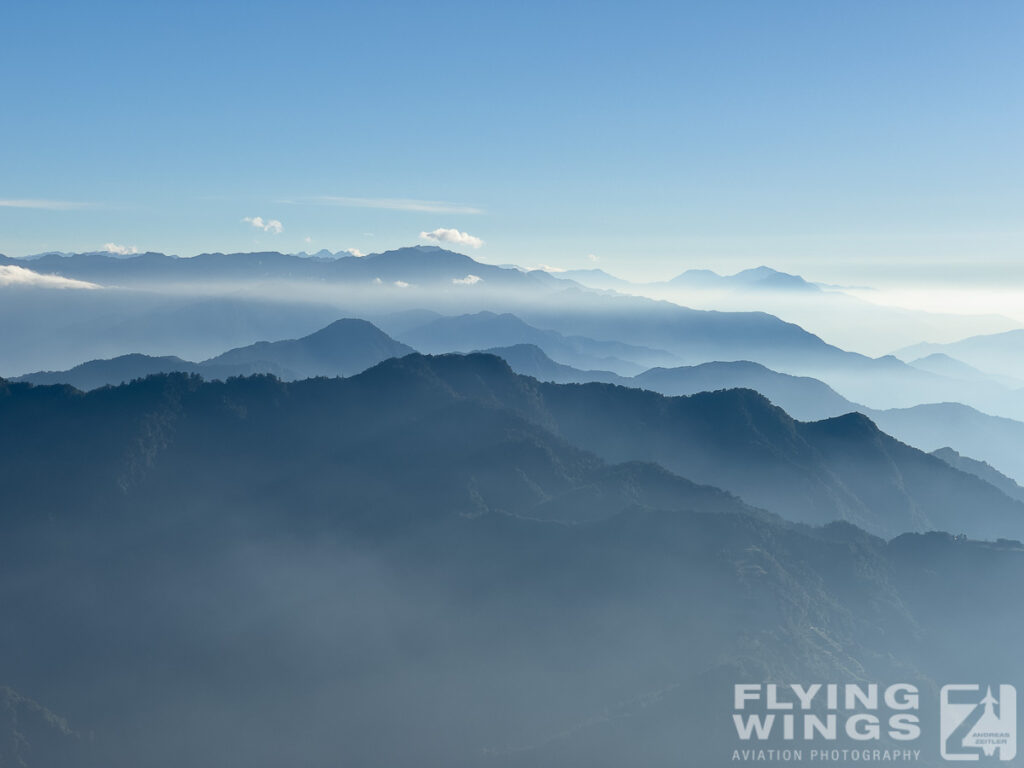
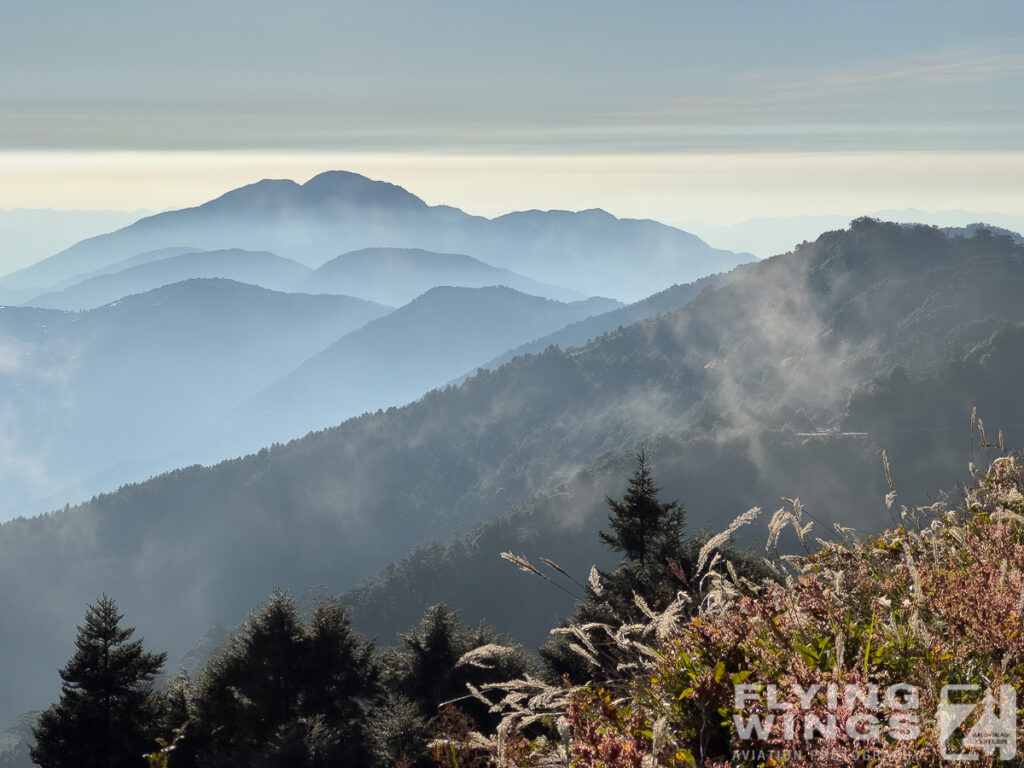
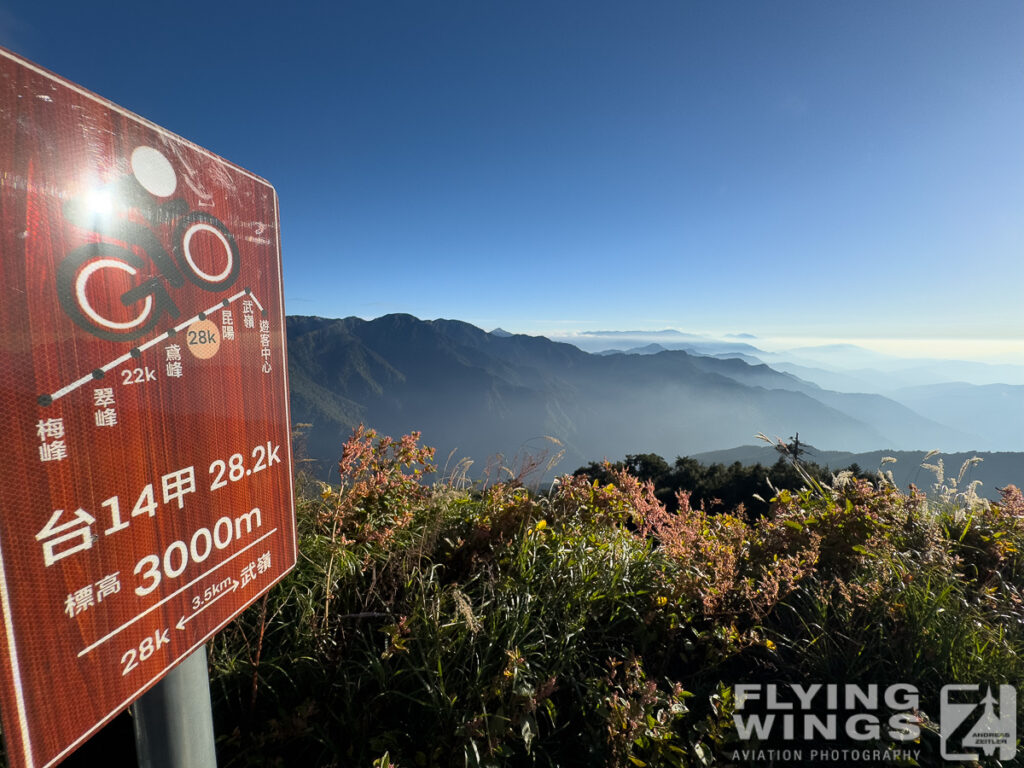
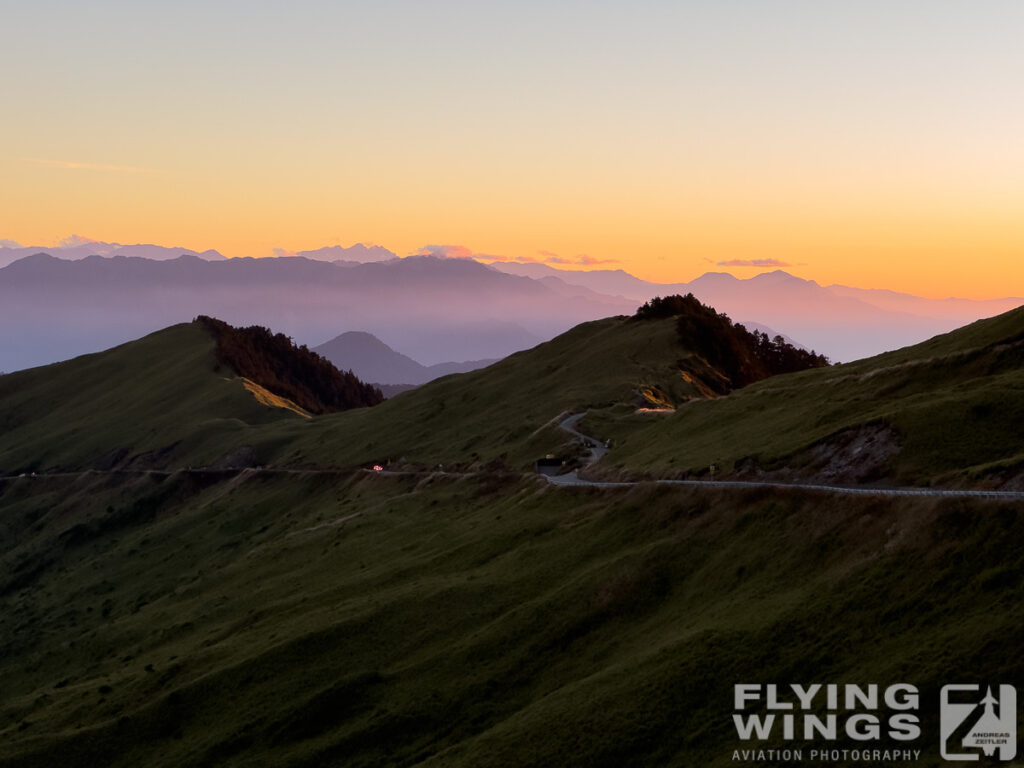
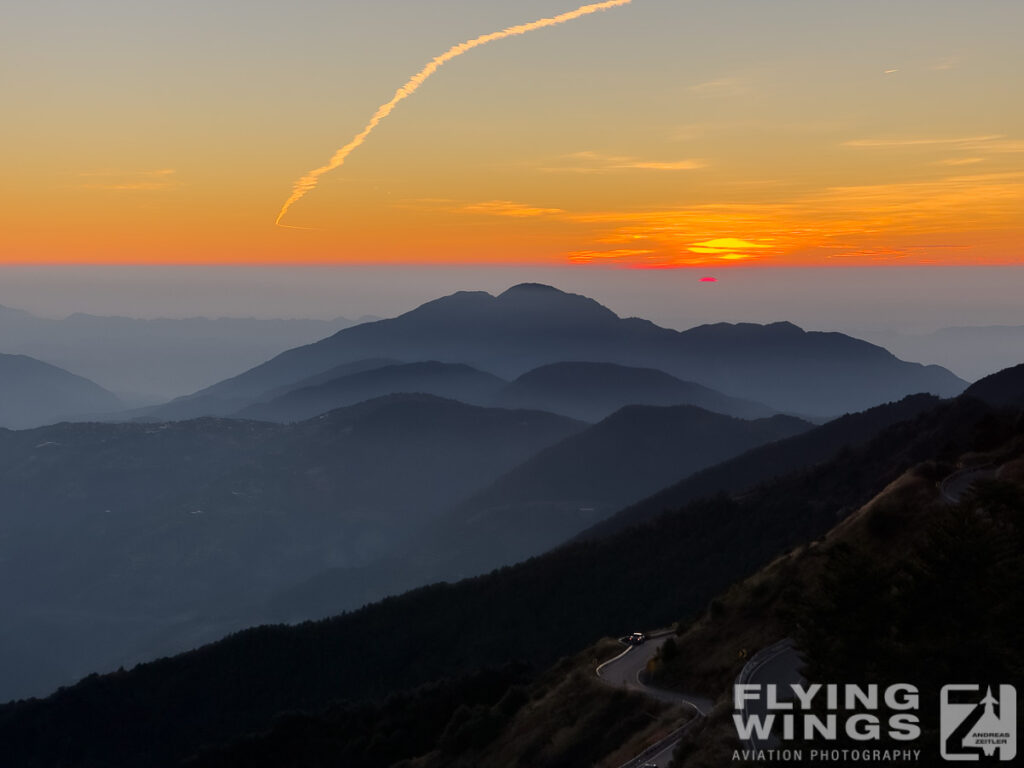
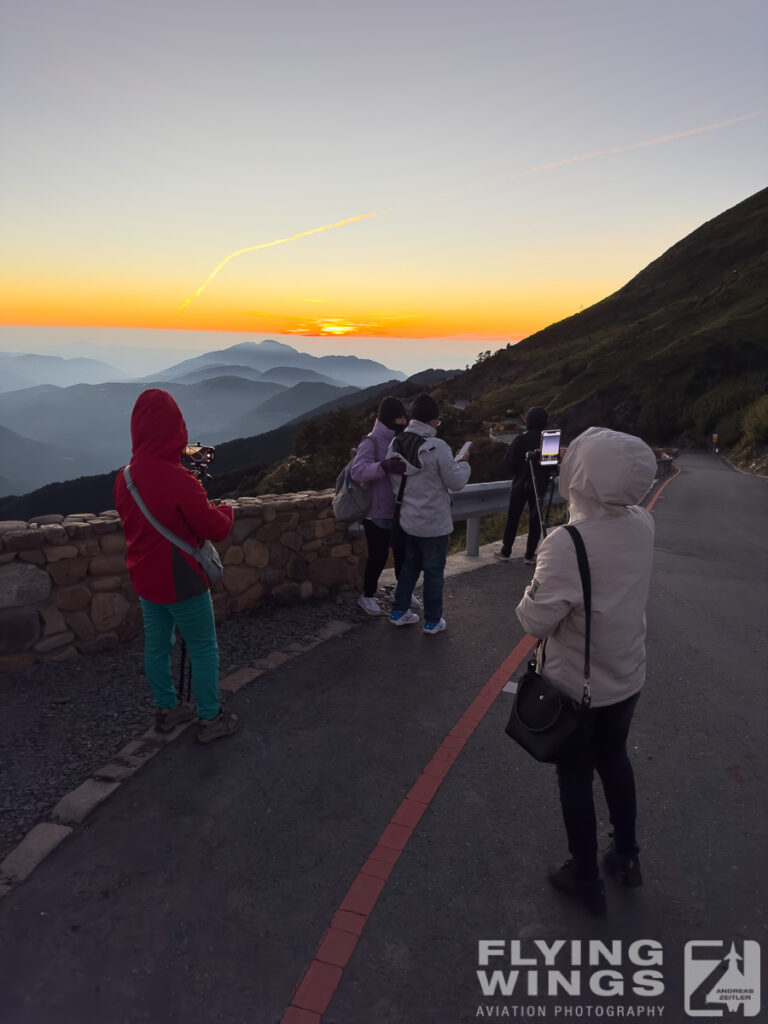
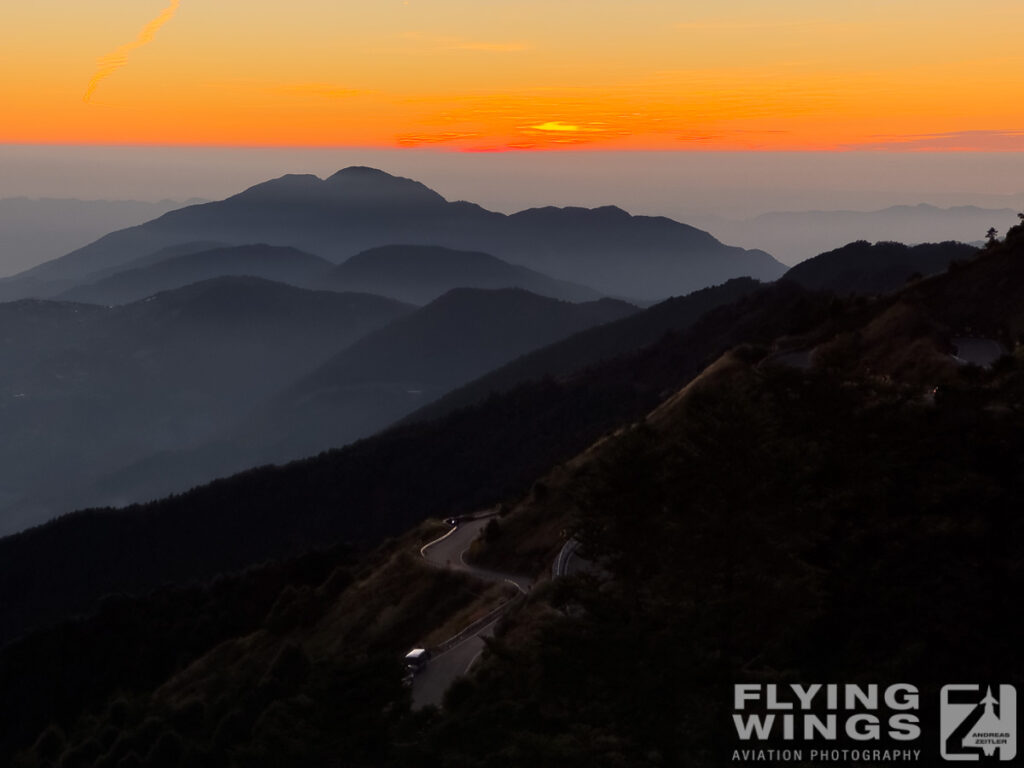

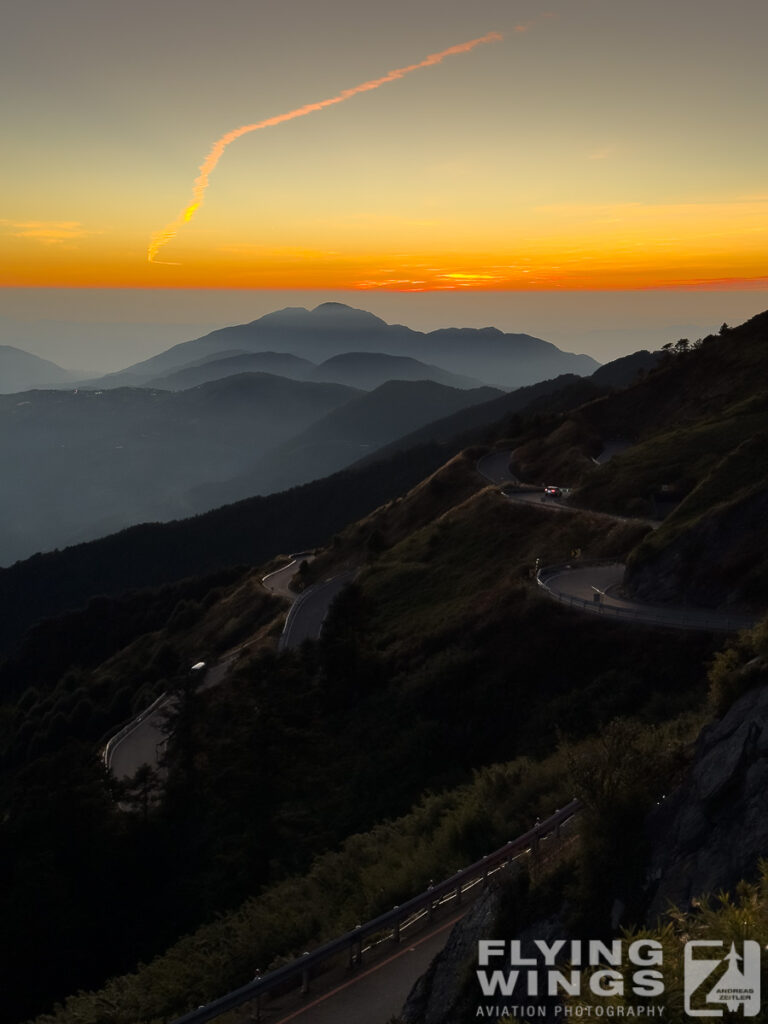
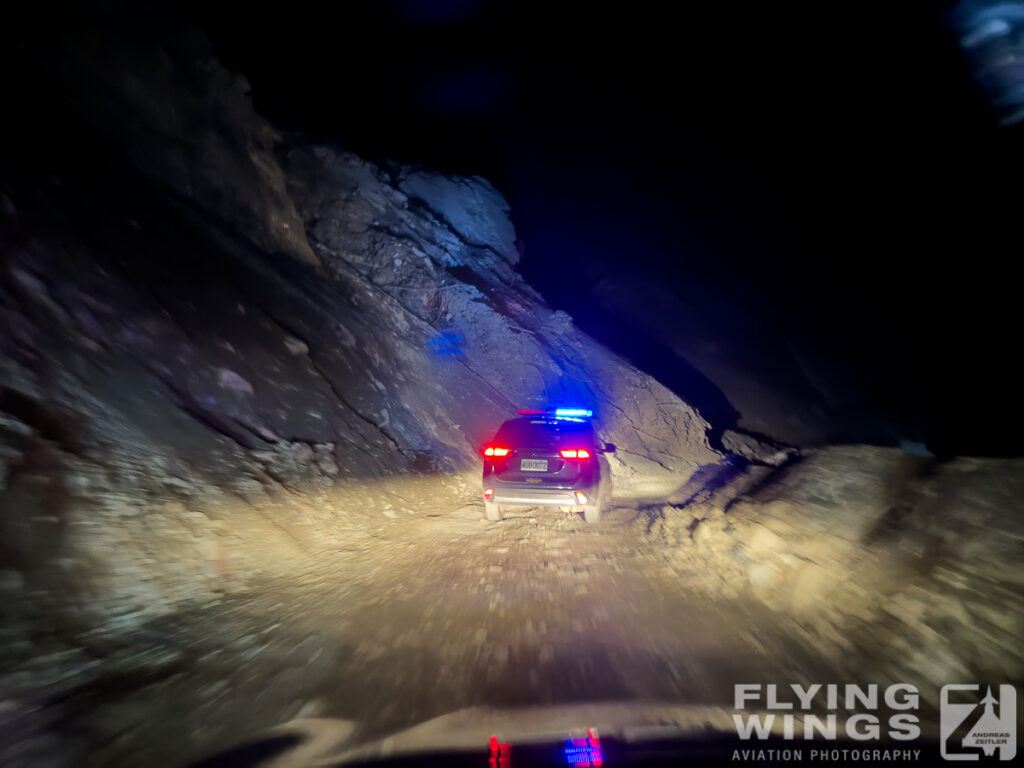
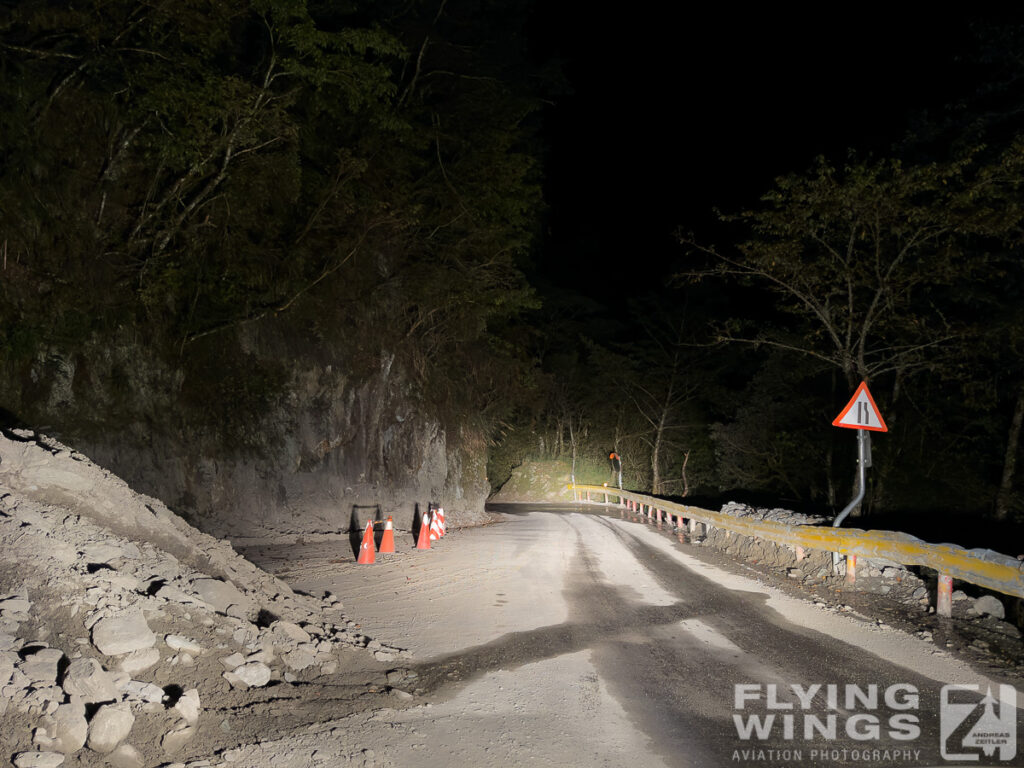
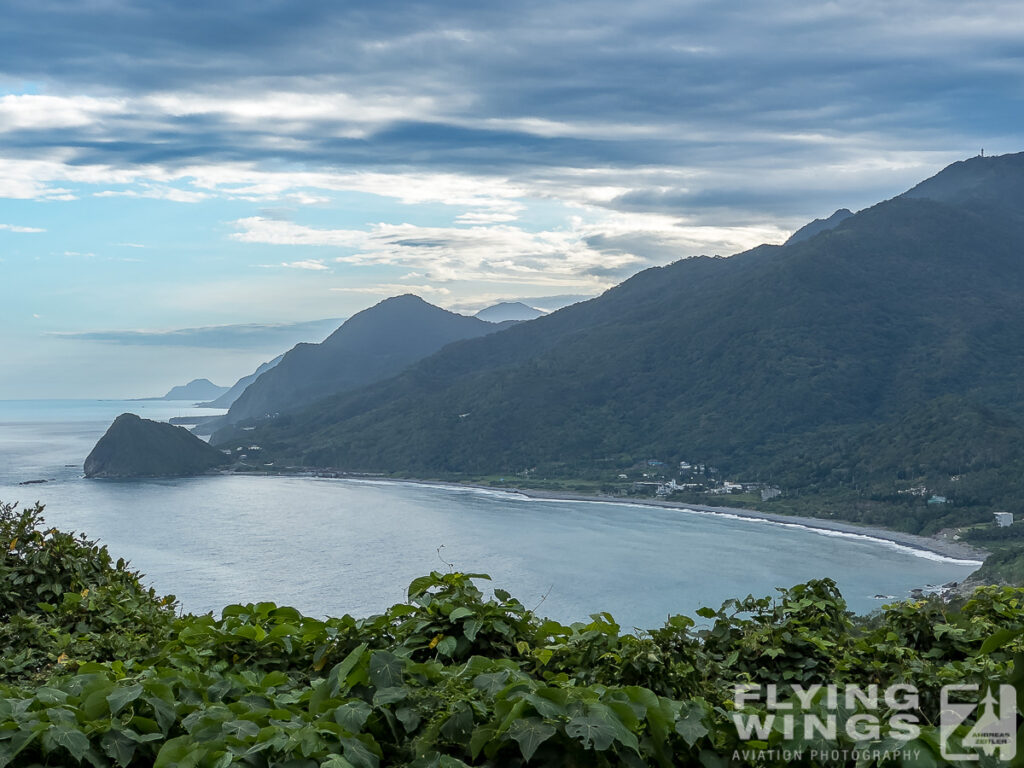

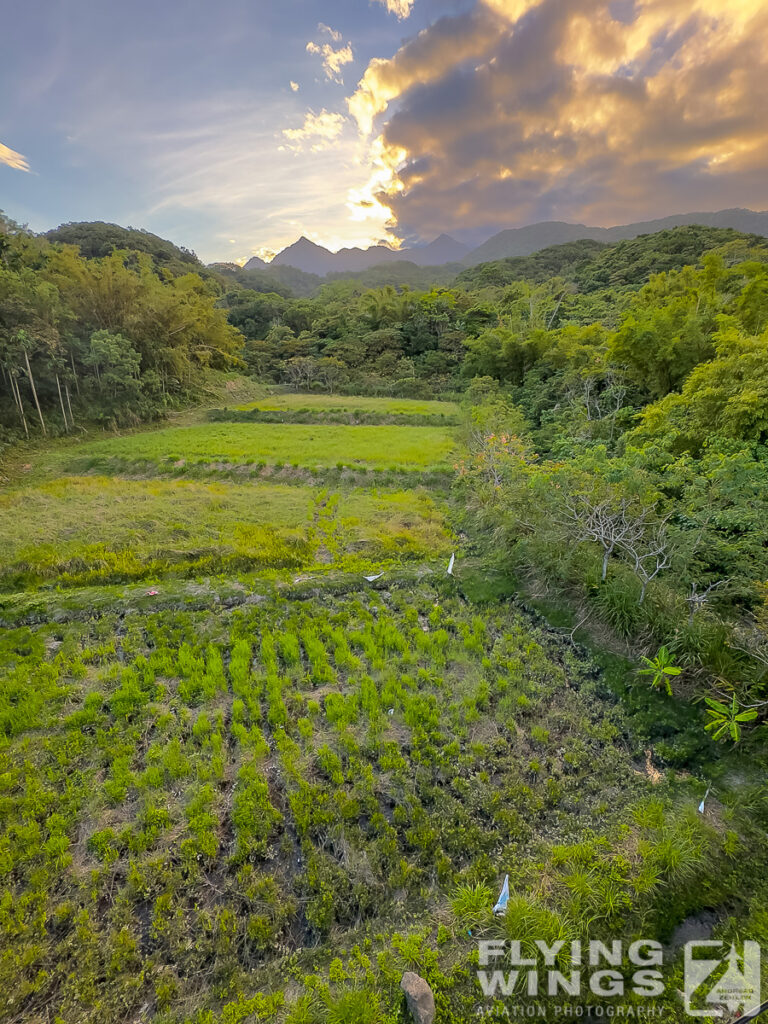

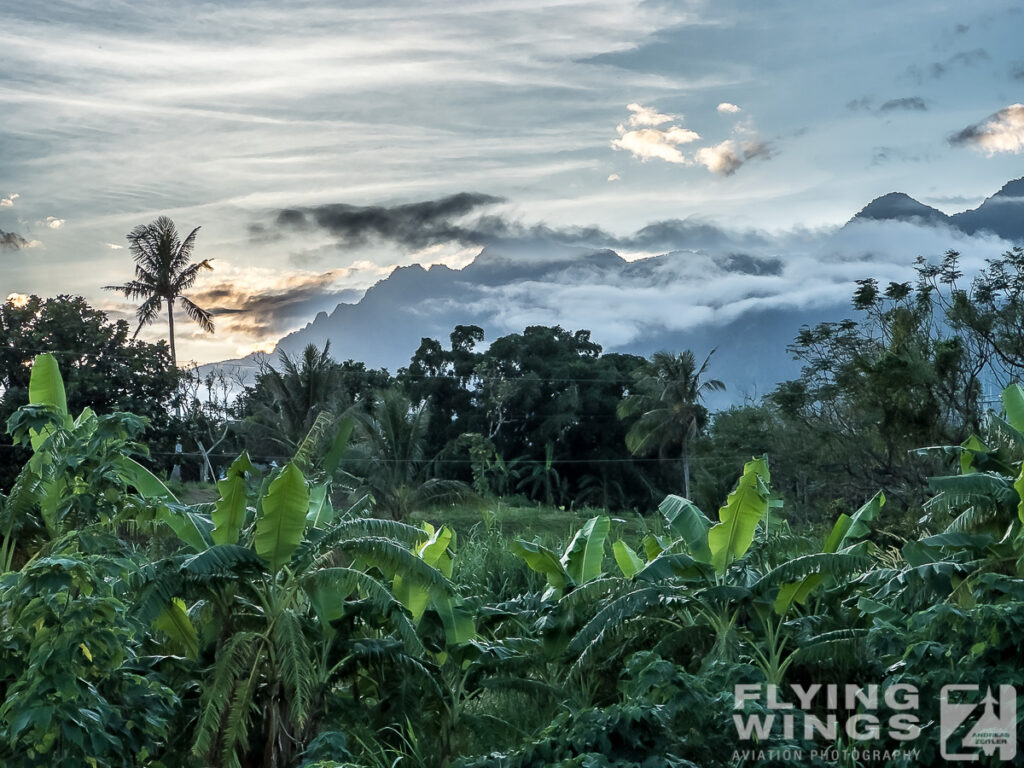

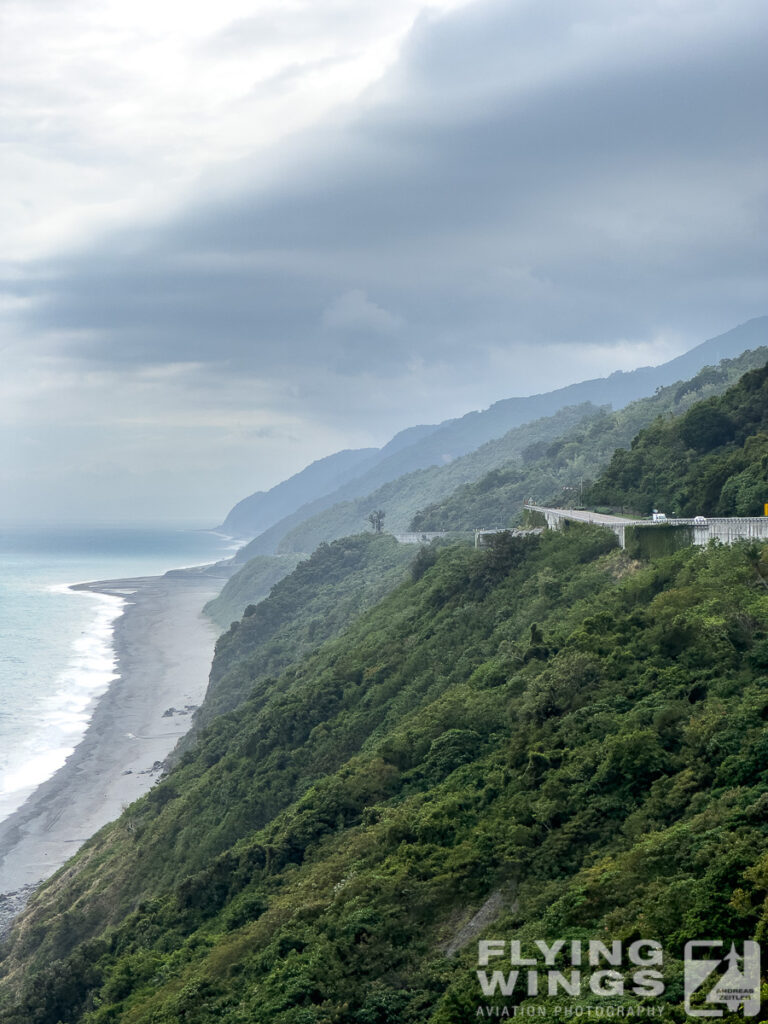

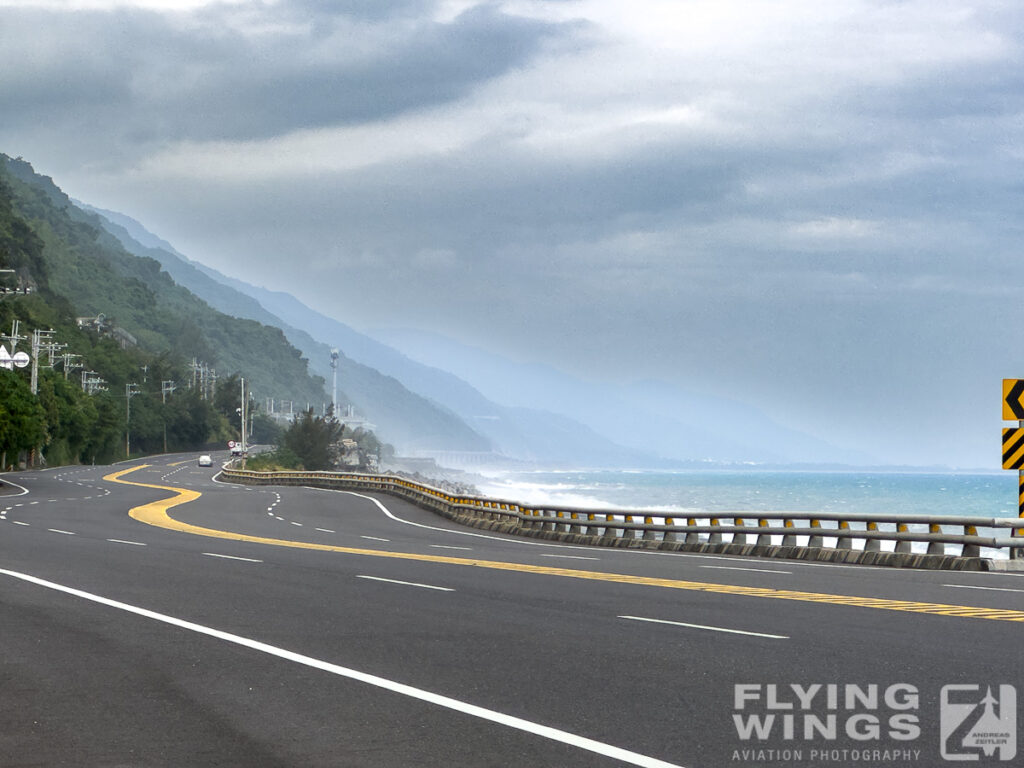

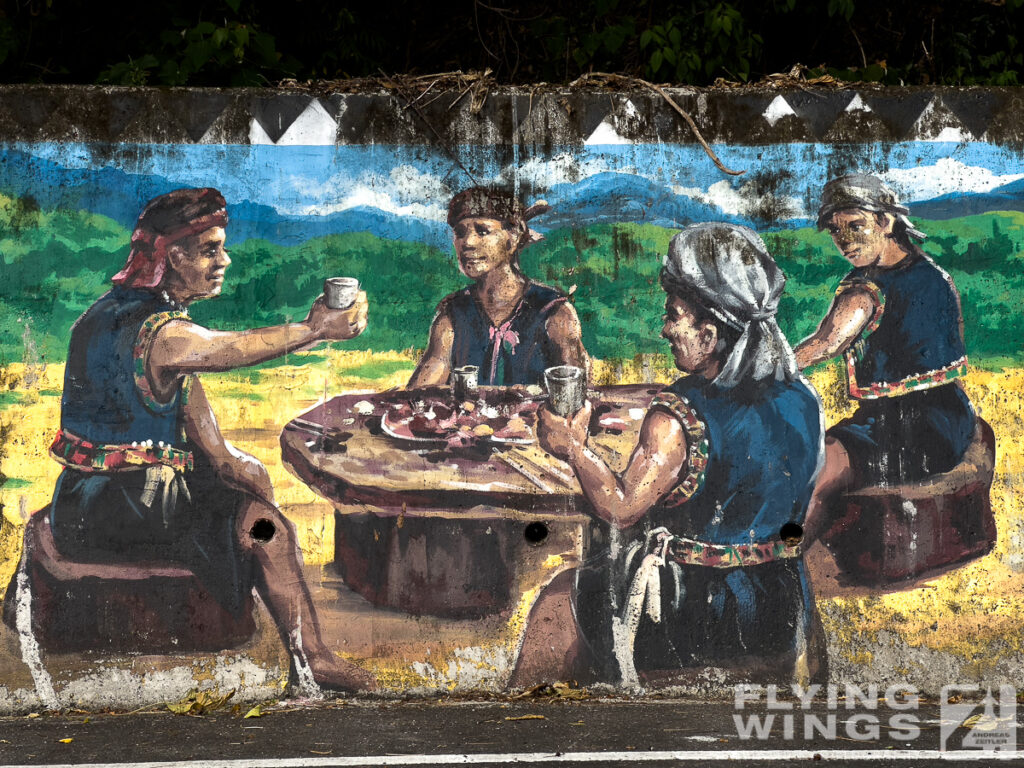
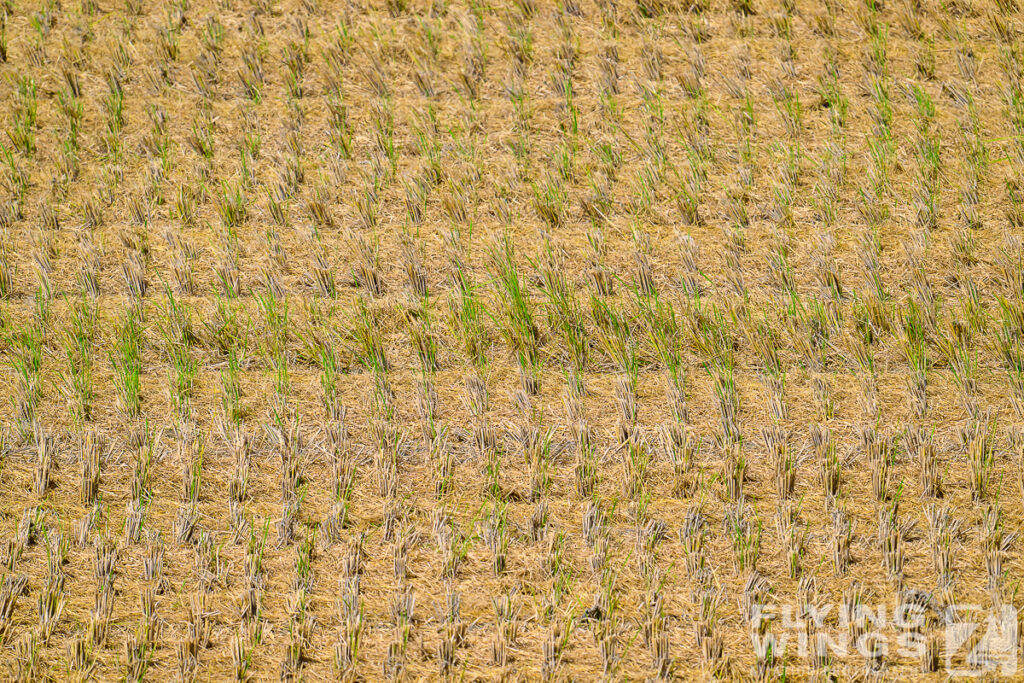
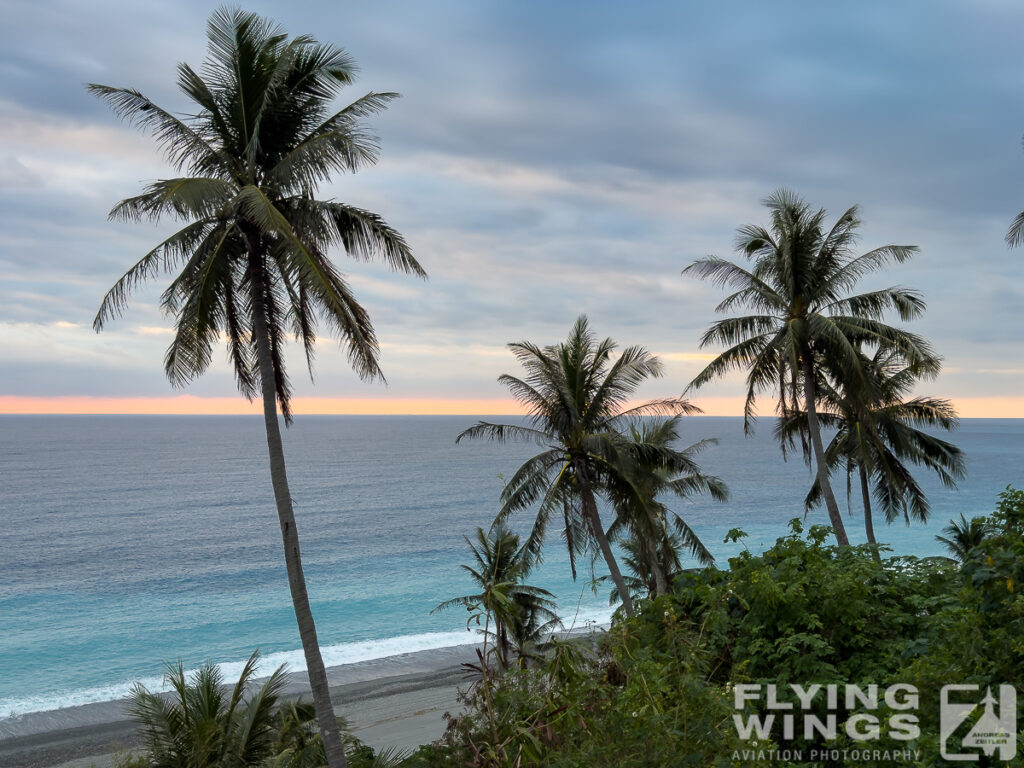
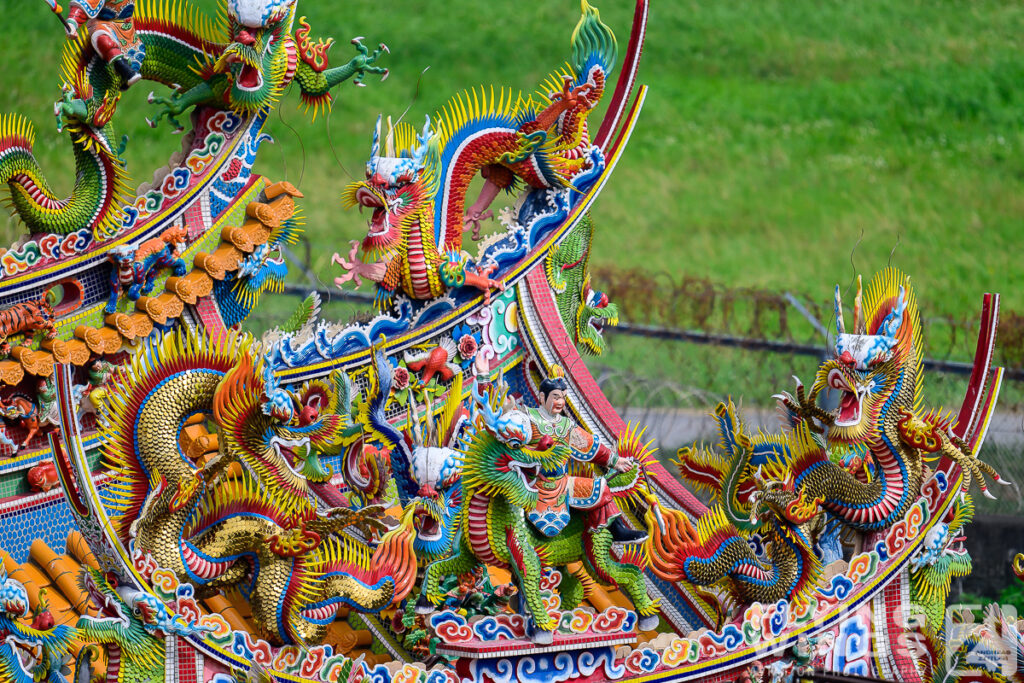
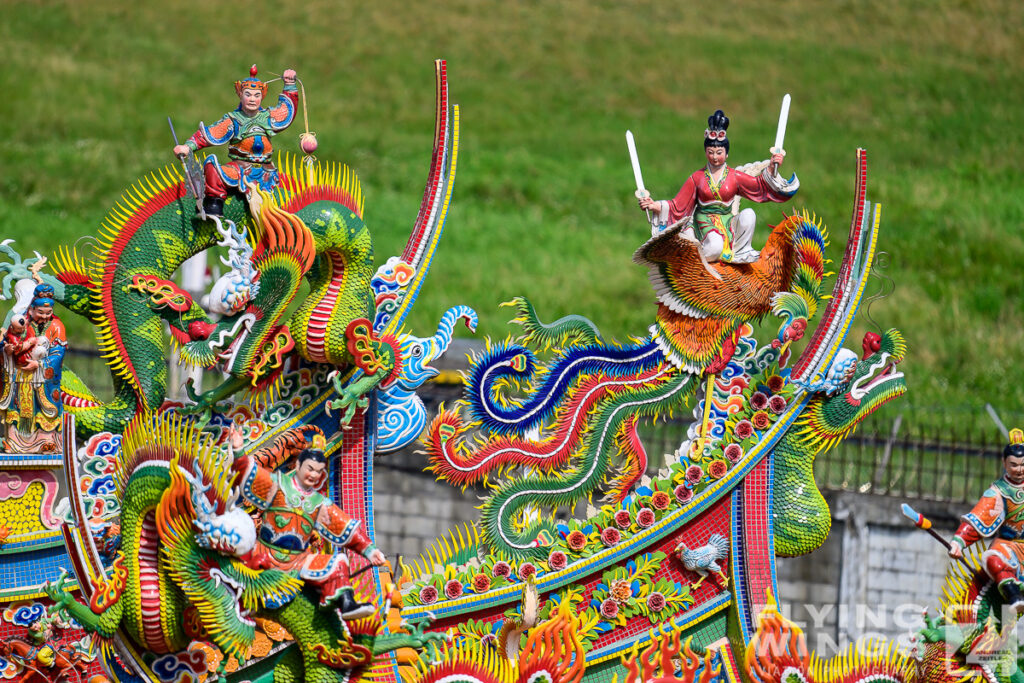
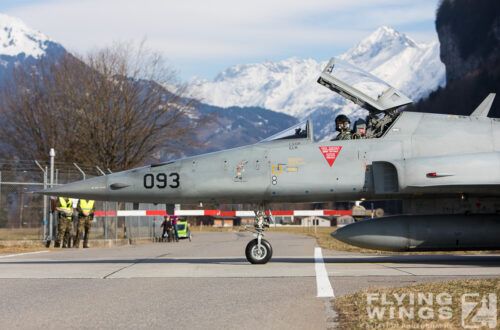
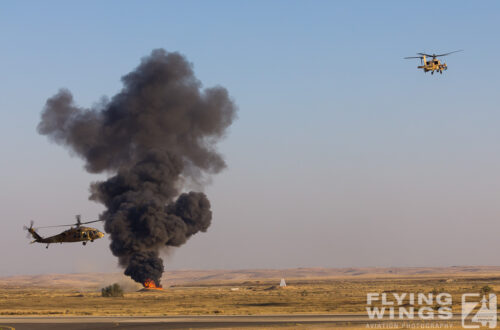
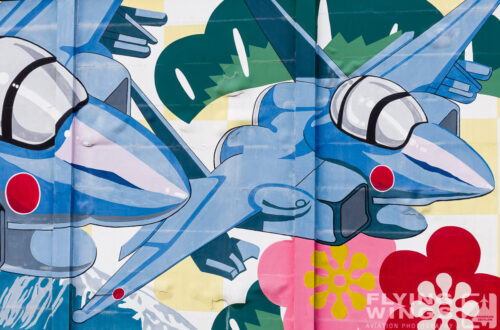
One Comment
Klaio
Splendid work, both for the pictures and for the information about each ROCAF base. We have been visiting Taiwan for 20 years (every two years), usually staying near Hualien, and whenever the Ching-Kuo appears, we usually only have a 55–200 mm at hand, so… no great pictures. Some are at https://viaggiareleggeri.com/blog/3821/fotografare-aerei-durante-la-quarantena-a-taiwan (warning: text in Italian).
We are in Hualien right now, will leave in a couple of days, let’s see if, with any luck, anything – even “just “an F-16 or a Mirage – appears.